Inbox and environment news: Issue 610
January 21-27, 2024: Issue 610
A Huge Win For Pittwater's Environment! Pittwater To Keep Its Conservation Zones
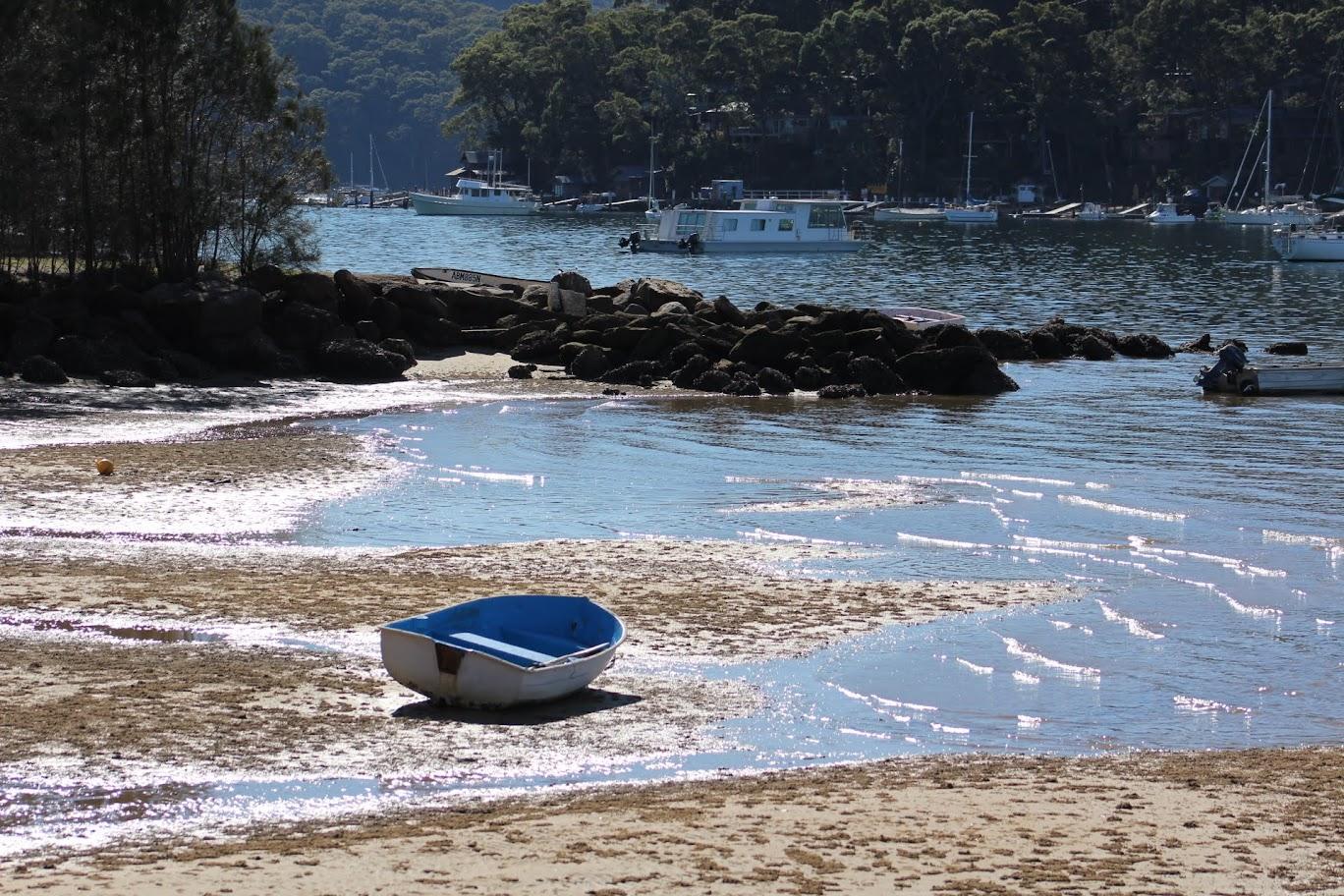
from Councillor Miranda Korzy: December 13, 2023
All those sessions on the street with maps showing where Pittwater's natural treasures sit, petitions, forums, letters and meetings with council have paid off!
The NSW Planning dept. has recommended we keep all our Conservation Zones - and all others on the Northern Beaches too!
It's a big change from Northern Beaches Council's Draft Conservation Zones Review last year which proposed changing 3,613 (of the former Pittwater Council's 10,469) properties in our C-zones to residential.
This means that these environmentally sensitive areas should be immune to the state government's proposals to increase density in residential zones - particularly R2 and R3.
Many thanks to community members who campaigned so hard on this - and to the council staff who heard our message and secured this outcome.
Background - from past PON reports
The community and councillors were assured by council staff that no environmental values would be sacrificed from any former council areas in the harmonisation of the Pittwater, Warringah and Manly LEPs and DCPs.
However, the Draft Conservation Zones Review proposed removing 3,613 properties from the former Pittwater Local Government Area’s Conservation Zones and making them Residential Zones, with their controls undefined. This contrasts with the loss of only one property with a Conservation Zoning from the former Warringah LGA. This scenario was, in fact, not harmonising zones across the new council area but aligning them with the former Warringah zonings, Cr. Korzy said.
Pittwater NSW MP Rob Stokes had also tried to reassure Pittwater residents about protection of its environment. In a letter to the Avalon Preservation Association of December 5, 2017, Mr Stokes discussed the introduction of Local Strategic Planning Statements. In it he said:
“The development of these statements will see councils and communities formulate the forward vision for land use in the local area - capturing and respecting the local characteristics that need to be preserved and articulating what local residents want in the future. This will include where and how any changes should occur.
These statements will be formally recognised in Legislation and reflected in councils’ Local Environment Plans and development controls. Councils will be able to tailor the statements to specify land use priorities on a ward by ward basis.”
However, the previous Northern Beaches Council chose not to utilise this process, opting instead for an LGA-wide LSPS. A ward based LSPS would have revealed the special characteristics of Pittwater and all other wards, and the differences between them. We can see the result of this in the Draft Conservation Zones Review, in which consultants have failed to recognise the importance of, for example, wildlife corridors and tree canopy. This would have a major impact in Pittwater - but also across the entire LGA.
Further, the previous NBC council made the decision to adopt one LEP across the LGA without any explicit discussion about the reasons for this or necessity to do so. At the November 27, 2018 meeting, councillors voted to accept the Local Environment Plan Review and one LSPS.
However, the report from staff did not mention the fact that there is no legislation that requires one LEP or any ministerial directive to that effect either. This issue was never placed before councillors or the community, and we were told that the state government required us to introduce one LEP.
The NSW Government changed the name of Environment Zones across NSW to Conservation Zones. The new names commenced on 1 December 2021.
It was stated at the time this change was of name only. Land uses that were currently permitted and prohibited in the environment zones would continue once they are renamed conservation zones. Only the name of zones is changing.
The Government stated; ''By renaming these zones to reflect the ‘conservation’ land use function more clearly, the focus, purpose, and intent of these zones is clearly signalled. The purpose is to conserve the environmental values and qualities in areas where this land use zoning is applied.
The naming also aligns better with the objectives of the zones as being about conservation.''
There were now 4 types:
- Zone C1 – National Parks and Nature Reserves (previously E1)
- Zone C2 – Environmental Conservation (previously E1)
- Zone C3 – Environmental Management (previously E1)
- Zone C4 – Environmental Living. (previously E1)
Northern Beaches Council conducted a Conservation Zones Review in 2022, that was publicly exhibited, proposing the former Pittwater LGA Area lose thousands of C4 Conservation Zones blocks, compared to 54 in the former Manly and just one in the former Warringah Council LGA.
Staff received 935 public submissions regarding the review, 60% of which were from residents of the former Pittwater area.
In Pittwater, the former C4 zoning for the Pittwater Council LGA allowed low impact developments (generally single dwellings) in areas with special ecological, scientific or aesthetic value while in Manly, blocks of flats were allowed in the C4 zone.
Planners told councillors they estimated that in the former Pittwater LGA, 3,613 properties would move from a C zone to an R (residential) zone, and 1,328 from an R zone to a C zone, resulting in an overall loss of 2,285 properties from C zones.
Most residents are aware of massive excavations from boundary to boundary and multiple storeys down in E4 zones - Environmental Living Zones now known as C4 for Conservation Living Zones - across the former Pittwater Local Government Area. These include sites at Palm Beach and Whale Beach, Avalon, Bayview and Church Point - where massive homes are built, sometimes up to six storeys down the block.
Councillor Korzy introduced a Motion at the February 2023 Meeting. The Motion called for the briefing to include reference to excavation, tree removal/retention, protection of endangered ecological communities, hard surface to landscape ratios, and other relevant matters. Cr. Korzy also asked for it to discuss how compliance with conditions of consent and relevant legislation is assessed and enforced in these zones.
''Finally, I asked about options for protecting the environment in our C4 zones as part of the new Local Environment Plan and Development Control Plan currently being drafted for the whole Northern Beaches Local Government Area. The new LEP and DCP are required in councils amalgamated in 2016.'' Cr. Korzy stated
The Pittwater LEP states that its particular aims include: “to promote development in Pittwater that is economically, environmentally and socially sustainable … (and) “to protect and enhance Pittwater’s natural environment and recreation areas”.
Objectives of the E4 Environmental Living Zone were then defined as:
- To provide for low-impact residential development in areas with special ecological, scientific or aesthetic values.
- To ensure that residential development does not have an adverse effect on those values.
- To provide for residential development of a low density and scale integrated with the landform and landscape.
- To encourage development that retains and enhances riparian and foreshore vegetation and wildlife corridors.”
The DCP provided detail on how these objectives should be achieved. It includes extensive controls related to the natural environment, including for specific ecological communities and 16 locality specific controls.
Amongst them are numerous controls on development in environmentally sensitive sites, such as:
“Development shall not have an adverse impact on Pittwater Spotted Gum Endangered Ecological Community.”
For land adjoining bushland reserves it states that: “Development shall not result in a significant loss of canopy cover or a net loss in native canopy trees.” And for heathland/woodland vegetation: “Development shall not reduce or degrade habitat for locally native species, threatened species, endangered populations or endangered ecological communities.” It also explicitly lays out Pittwater’s well-known 60:40 ratio for the building envelope on Pittwater’s C4/E4 zones, stating for a number of suburbs that: “The total landscaped area on land zoned R2 Low Density Residential or E4 Environmental Living shall be 60% of the site area.”
Experts who reviewed the Biodiversity Planning Review paper stated it should be opposed as such a huge potential loss of conservation zones represents the most serious incursion into the existing Pittwater LEP/DCP rules. These guidelines have contributed to the protection of Pittwater’s character, landscape, and scenic quality to date.
In total, the former Pittwater would have had 7,447 properties zoned C3 or C4 and 9,347 properties in residential zones.
The move from C4 to Residential would result in more development in these areas and a huge loss of natural landscapes including canopy. The rezoning from C4 to Residential would also trigger the application of the July 1st 2022 amended NSW Housing SEPP to the newly created Residential zones.
Under the changes made to the State Environmental Planning Policy (Housing) 2021 all seniors living, including independent living unit developments, will be allowed in R2 Low Density Residential zones. The building height will also change, allowing up to 9 metres, excluding any basement works.
It's also worth noting that under the Council's Local Housing Strategy the then NSW Department of Planning told the Council it must proceed with planning work that will lead to rezoning of one or more of the following as outlined in its LHS to compensate for housing not delivered by the Ingleside precinct:
- One of the following Centre Investigation Areas for Brookvale, Dee Why, Manly Vale or Narrabeen;
- Two or more of the Housing Diversity Areas centres; and/ or
- other proposed rezonings in the LGA that have arisen since the preparation of the LHS that will enable delivery of substantive and new housing supply.
The planning proposals for one or more of these alternatives were required to be submitted to the NSW Planning Department for Gateway determination by or before December 2022.
Further, the Council is required to submit proposal(s) for two or more of the Centre Investigations Area are to the Planning Department for Gateway determination to facilitate dwelling delivery within the 2021 to 2026 period.
Council was also required to expedite the following LHS actions under Priorities 2 and 5 to ensure housing supply, diversity and affordability outcomes are secured before 2026:
- Planning analysis and LEP updates for Brookvale, Dee Why, Mona Vale, Manly Vale and Narrabeen that do not reduce the permissibility or density of existing permissible uses.
- Annual reporting of development by centre to track yields and housing mix.
- Adoption of a social and affordable housing target.
- Continue to implement council’s affordable housing contribution scheme (AHCS).
- Review and seek lower parking requirements for boarding houses for R3, R4 and B4 sites in centre investigation areas.
Council's LHS Centre investigation areas identified Brookvale, Dee Why, Mona Vale, Manly Vale and Narrabeen along the existing B-Line as centre investigation areas in the medium term, and Forestville and Beacon Hill in the longer term, subject to a future B-Line route (future B-Lines along Warringah and Mona Vale Roads).
Housing diversity areas identified through the Council's LHS were Avalon, Newport, Warriewood, Belrose, Freshwater, Balgowlah and Manly as areas to support housing diversity in the form of dual occupancies, seniors housing and boarding houses.
In July 2018 the NSW Government introduced new planning controls through the Low-Rise Medium Diversity Housing Code (the Code) under State Environmental Planning Policy (Exempt and Complying Development), which also applied to the NBC LGA.
The Code allows for the development and subdivision of dual occupancies; multi-dwelling houses (including terraces), manor homes under a fast track complying development approval process where those land uses were currently permitted with development consent from Council.
This approval can be issued by a private certifier within 20 days if the application complies with requirements in the Code.
Residents already know the former Pittwater LGA is under increasing environmental pressure. This trend has seen people building way over their 60 percent of land area, needlessly removing trees and exceeding existing height limits with variations being permitted.
There have also been a number of proposed developments out of keeping with Pittwater. One still before the Land and Environment court, with hearing dates set for later in October, seeks to build flats and develop the whole block in an area where this would ruin the local amenity at Palm Beach.
There have been ongoing calls for a Heritage Listing for the whole of Pittwater since the plans were first made public.
Professor Richard West AM, President of the Palm Beach-Whale Beach Association, which has as its main aim to preserve the unique environment in which we live, has echoed other residents associations which state these changes represent a threat to Pittwater.
Prof. West told Pittwater Online then that 'special consideration should be made to preserve these qualities'.
These zonings will feed into the upcoming, single Northern Beaches Local Environment Plan, despite it having been pointed out again in 2023 that Pittwater could retain its own LEP, something which had been spoken of even before Pittwater was forcibly amalgamated with Warringah Council.
A single LEP would regulate development for the whole council area. So for those wanting to protect the scenic bushland habitat, it was important to read the multiple documents made available and let the Council know what you thought.
The Council wanted to know if residents agreed with the approach and criteria used in the review to identify and map core habitat areas, biodiversity corridor areas, threatened ecological communities, and threatened flora and fauna species habitat.
Conservation zones, previously called Environmental zones in the former Pittwater LEP, “are used to protect and conserve areas with special environmental values or where there are known hazards eg bushfire, (and) coastal inundation”, planning staff noted in their motion to place the draft on exhibition.
The four conservation zones in the new LEP align with those identified and renamed by the NSW Department of Planning and Environment as follows:
- C1 National Parks and Nature Reserves - existing and newly proposed national parks, nature reserves and conservation areas - as identified and agreed by the NSW government.
- C2 Environmental Conservation - for areas of high ecological, scientific or cultural values.
- C3 Environmental Management - Special ecological, scientific, cultural or aesthetic attributes or environmental hazards/processes.
- C4 Environmental Living - special environmental or scenic values; low impact residential development.
The challenge for Council staff has been that four LEPs are currently operational across the Northern Beaches Council area and the state government required that they be 'harmonised' after the forced amalgamation of the former Manly, Warringah and Pittwater councils. (ie Pittwater’s LEP; Manly’s; Warringah’s; and a second one in that former council area for land where zoning was never finalised by the NSW government).
Alike the Rates Harmonisation of the forcibly amalgamated former Councils that saw an increase for Manly and Pittwater implemented from July 1st 2022, and a reduction for the former Warringah area, despite an amendment to the Local Government Amendment Bill 2021 which allowed up to eight-years to harmonise rates for councils that were amalgamated in 2016, and which had been preceded by Warringah Council's seeking approval from IPART in 2014 for a cumulative increase of 26.2 per cent over four years and was instead allowed an increase at 19.7 per cent, the former council area that will be impacted most by an 'LEP harmonisation' would be Pittwater and the Pittwater environment.
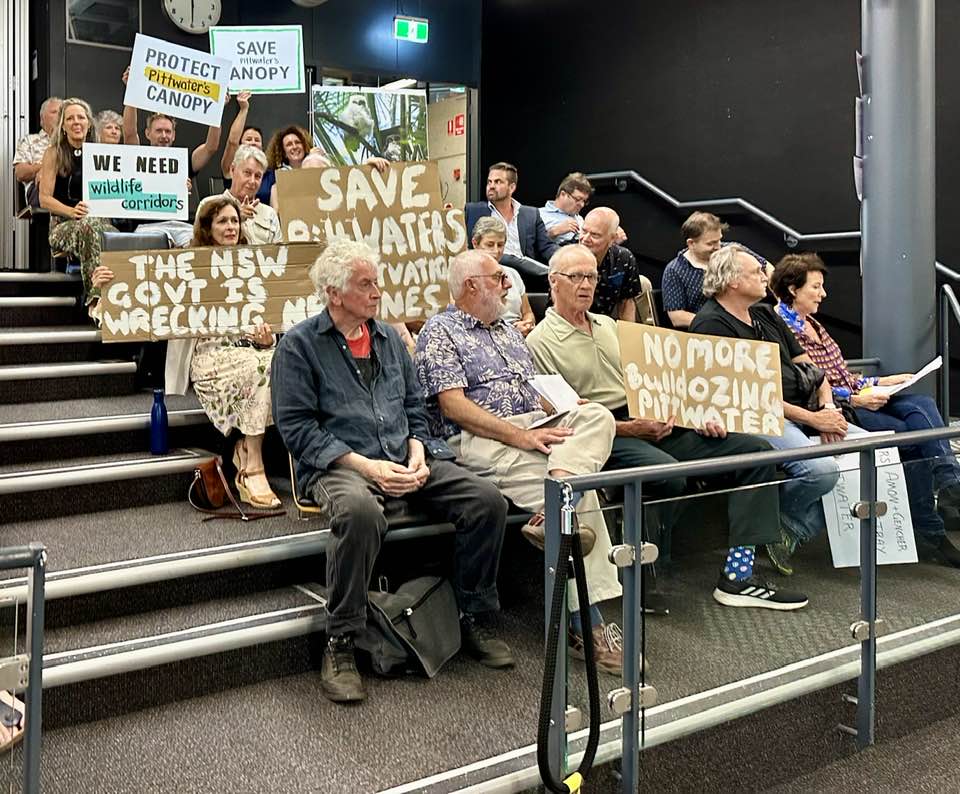
Pittwater residents at February 2023 Council Meeting
More in:
- Pittwater Community Forum: A Discussion On How To Save Our Area - July 2022, Issue 548
- From The Council Chamber August 23, 2022: Conservation Zones review - Issue 552
- Conservation Zones Review Has Potential To Facilitate Medium Density In Previously 'Environmental Living' Zones - October 2022, Issue 557
- Conservation Zones Review Residents Forum: Resolutions Call For Shift In Criteria Applied, For Keeping Pittwater's Green-Blue Wings Intact, For State Election Candidates To Declare Their Position On Pittwater Community's Stated Expectations - October 2022, Issue 559
- NBC’s Conservation Zones Review - What’s It All About? - November 2022, Issue 562
- Saving Pittwater From The Chainsaws: Community Forum At Warriewood - Thursday February 2nd 2023, At 7pm + 'Concreting Our Coast: The Developer Onslaught Destroying Our Coastal Villages and Environment' Report Released - January 2023, Issue 568
- Pittwater Planning Could Be Covered By Its Own LEP: Greens Lawyer - February 2023, Issue 570
- Who Wants To Keep All Pittwater's Conservation Zones?: Cr. Korzy Motion for February 2023 Council Meeting - February 2023, Issue 573
- From The Council Chamber - February 28, 2023 By Miranda Korzy, Pittwater Greens Councillor - March 2023, Issue 574
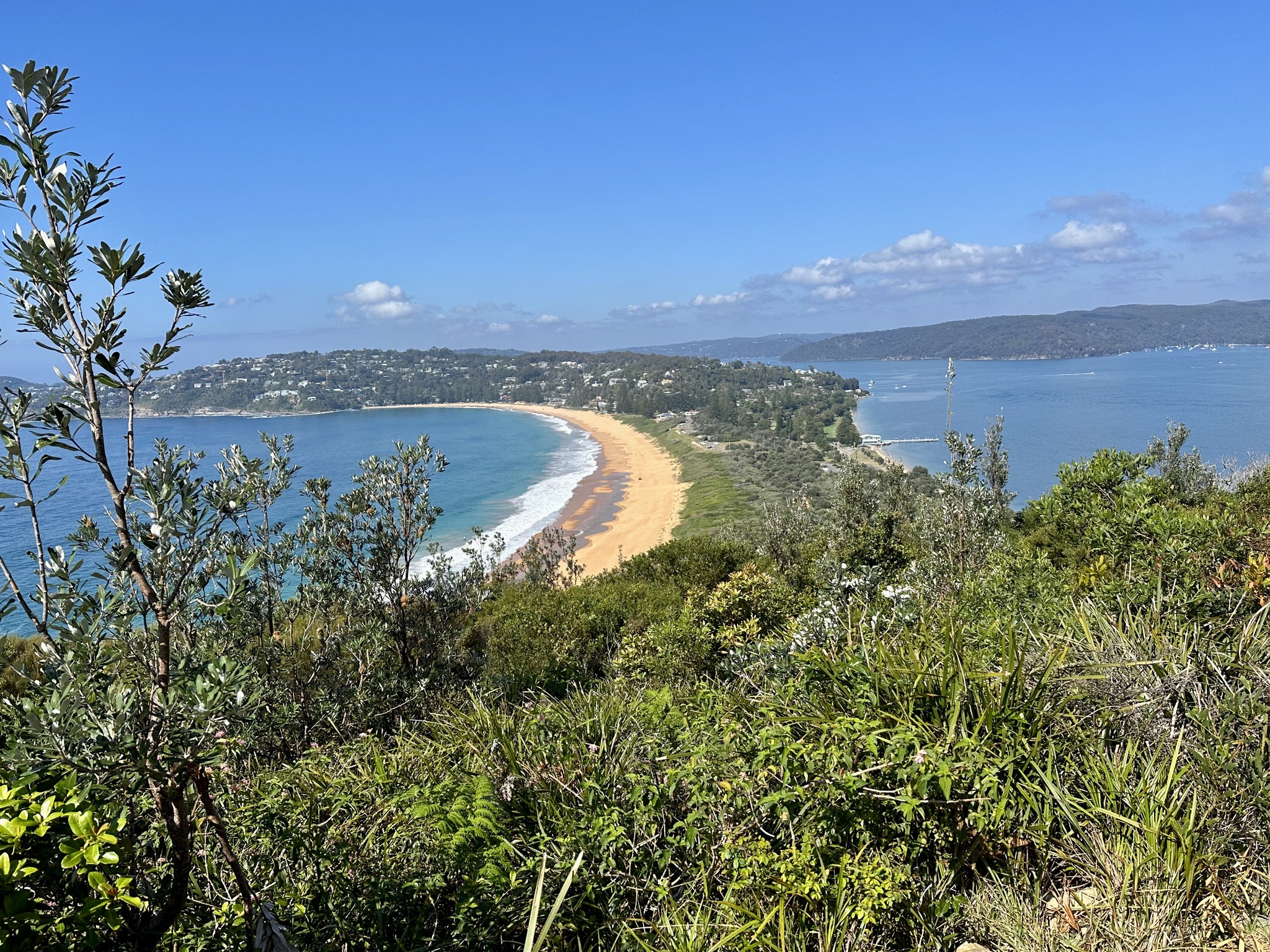
Stay Safe From Mosquitoes This Holiday Season
- Applying repellent to exposed skin. Use repellents that contain DEET, picaridin, or oil of lemon eucalyptus. Check the label for reapplication times.
- Re-applying repellent regularly, particularly after swimming. Be sure to apply sunscreen first and then apply repellent.
- Wearing light, loose-fitting long-sleeve shirts, long pants and covered footwear and socks.
- Avoiding going outdoors during peak mosquito times, especially at dawn and dusk.
- Using insecticide sprays, vapour dispensing units and mosquito coils to repel mosquitoes (mosquito coils should only be used outdoors in well-ventilated areas)
- Covering windows and doors with insect screens and checking there are no gaps.
- Removing items that may collect water such as old tyres and empty pots from around your home to reduce the places where mosquitoes can breed.
- Using repellents that are safe for children. Most skin repellents are safe for use on children aged three months and older. Always check the label for instructions. Protecting infants aged less than three months by using an infant carrier draped with mosquito netting, secured along the edges.
- While camping, use a tent that has fly screens to prevent mosquitoes entering or sleep under a mosquito net.
Eight Shorebirds Added To Australia's National Threatened Species List
January 11, 2024
The species are late additions to last month's update, bringing the number of animals, plants and ecological communities listed to 2,212.
The birds added to the list are the black-tailed godwit, the 'common' greenshank (endangered), ruddy turnstone, sharp-tailed sandpiper, Latham’s snipe, Asian dowitcher, grey plover and Terek sandpiper (vulnerable).
According to BirdLife Australia;
- Migratory shorebirds must feed on coastal mudflats and other wetlands in Australia to increase their body mass by up to 70% to gain sufficient energy to sustain them on migration
- Some migratory shorebirds have undergone population declines of up to 80% over the last 30 years
- 37 species of migratory shorebirds regularly visit Australia, and Pittwater, with all except one spending up to 6 months of each year here, and only 6 weeks in their Northern Hemisphere breeding grounds.
Healthy and safe coastal wetlands and beaches are essential for the health of migratory shorebirds.
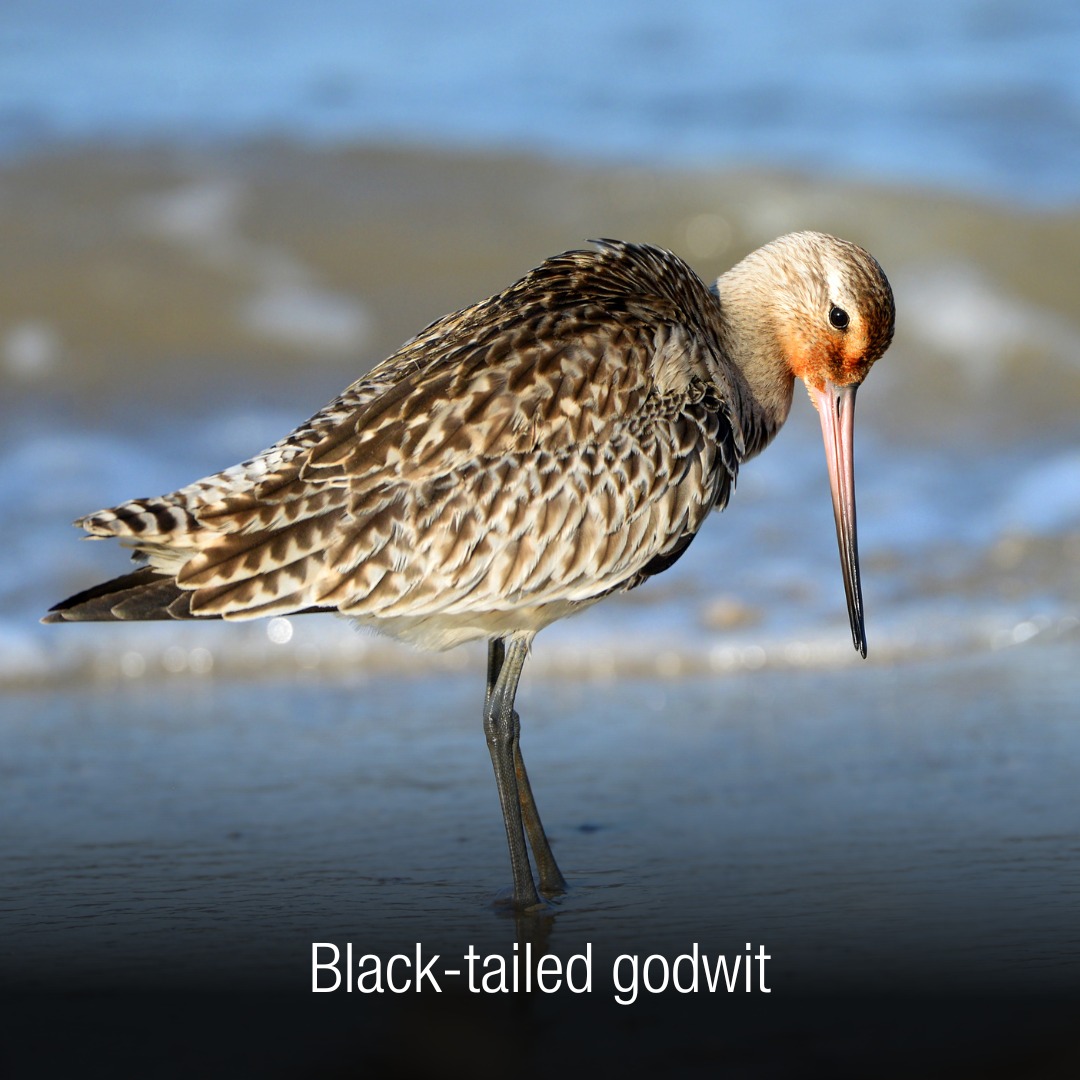
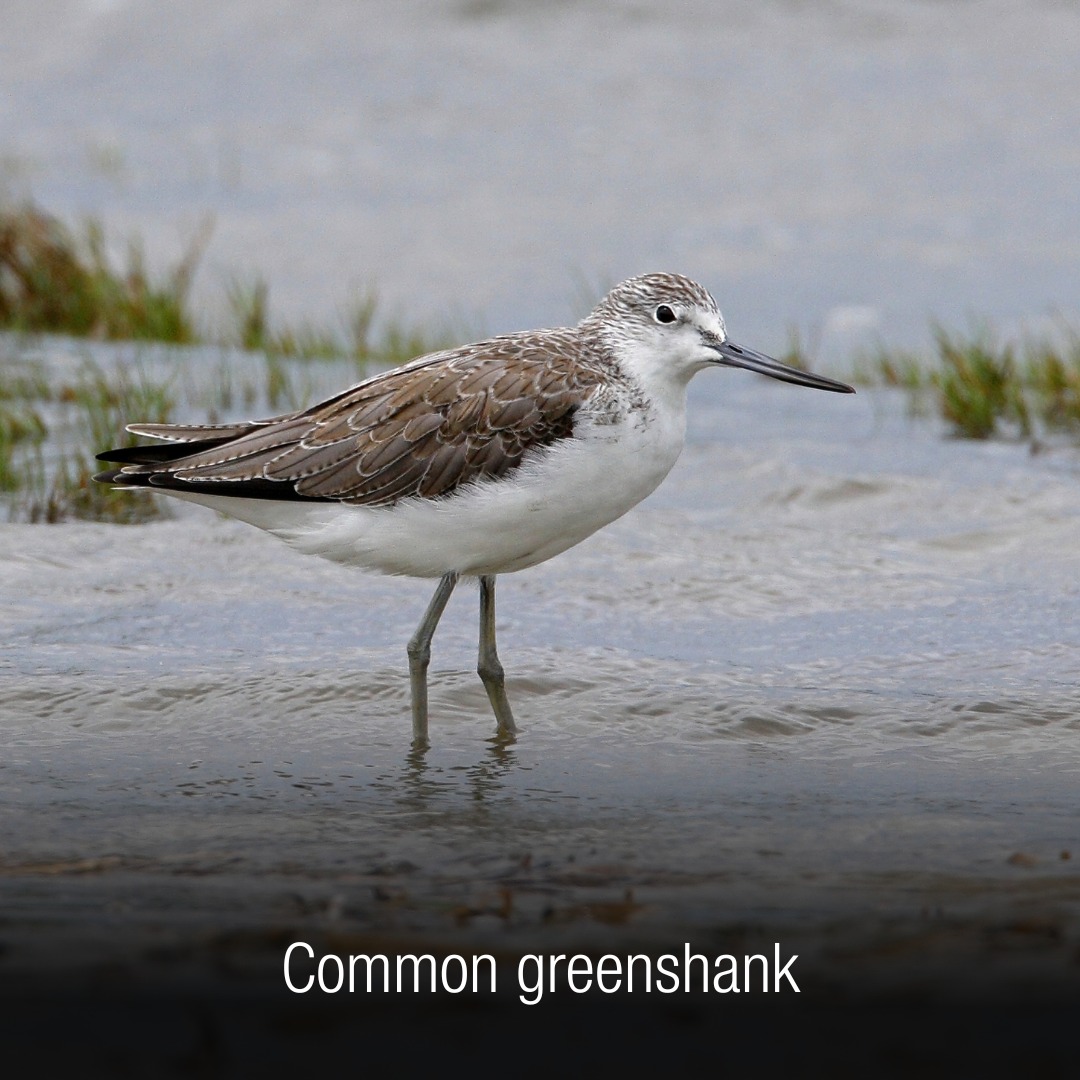
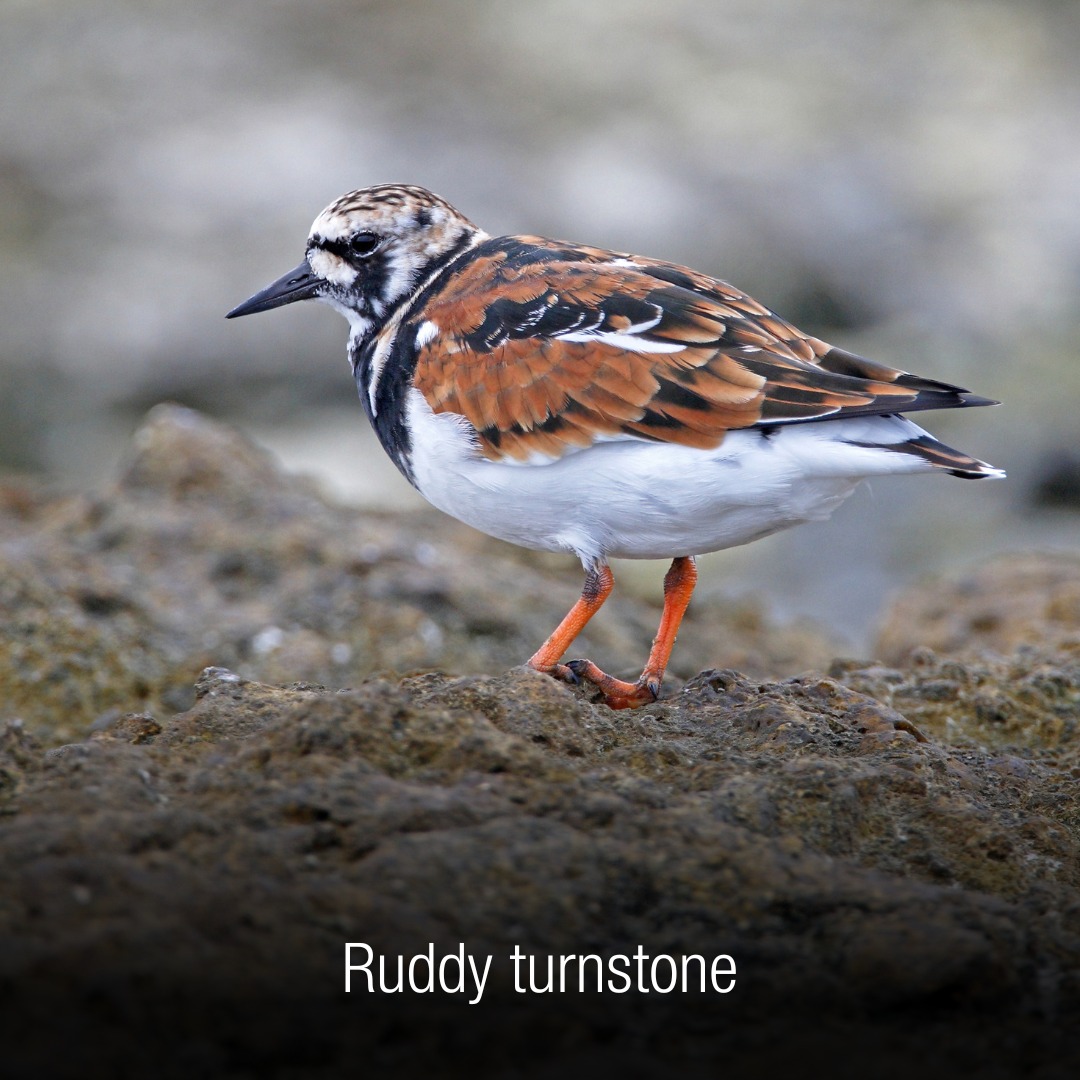
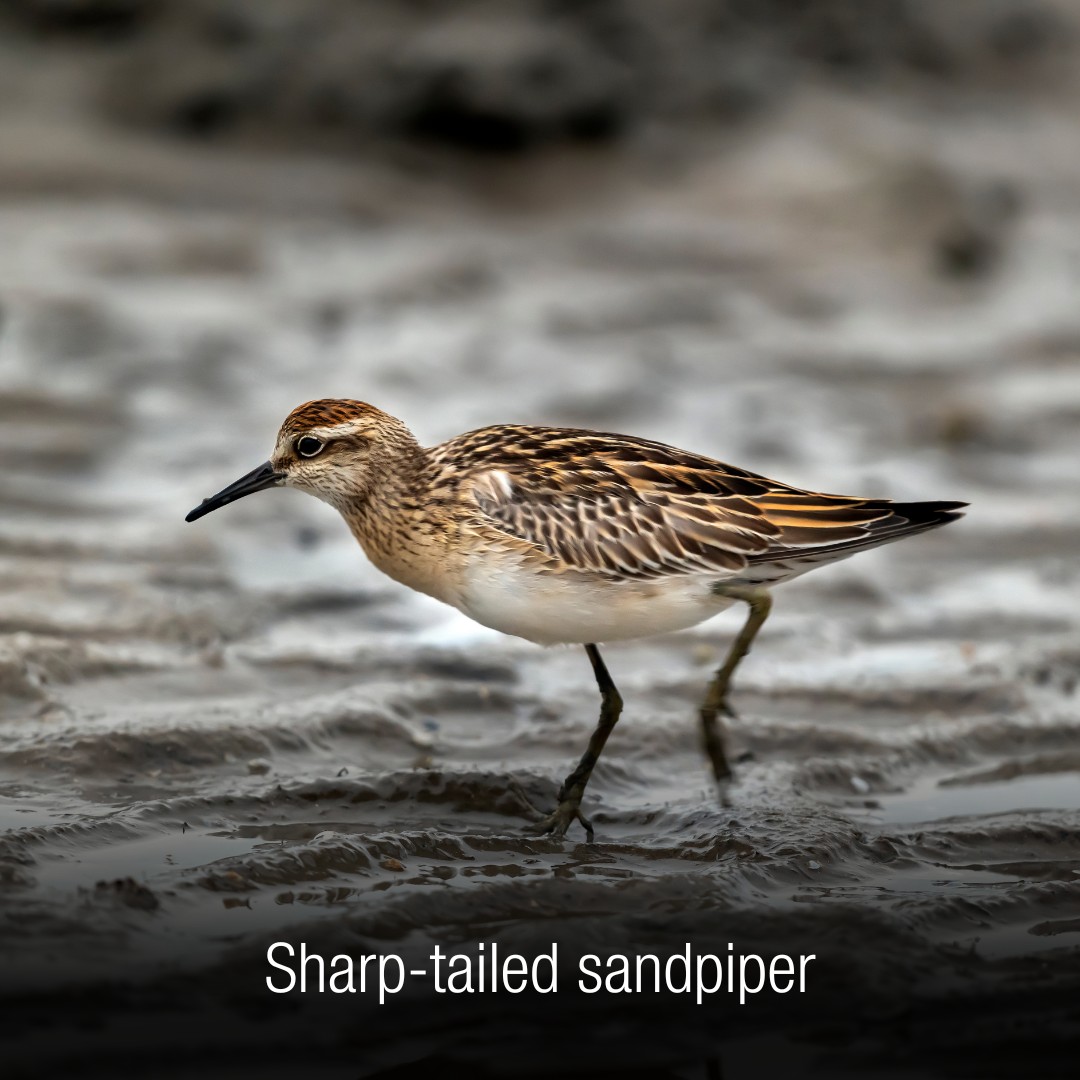
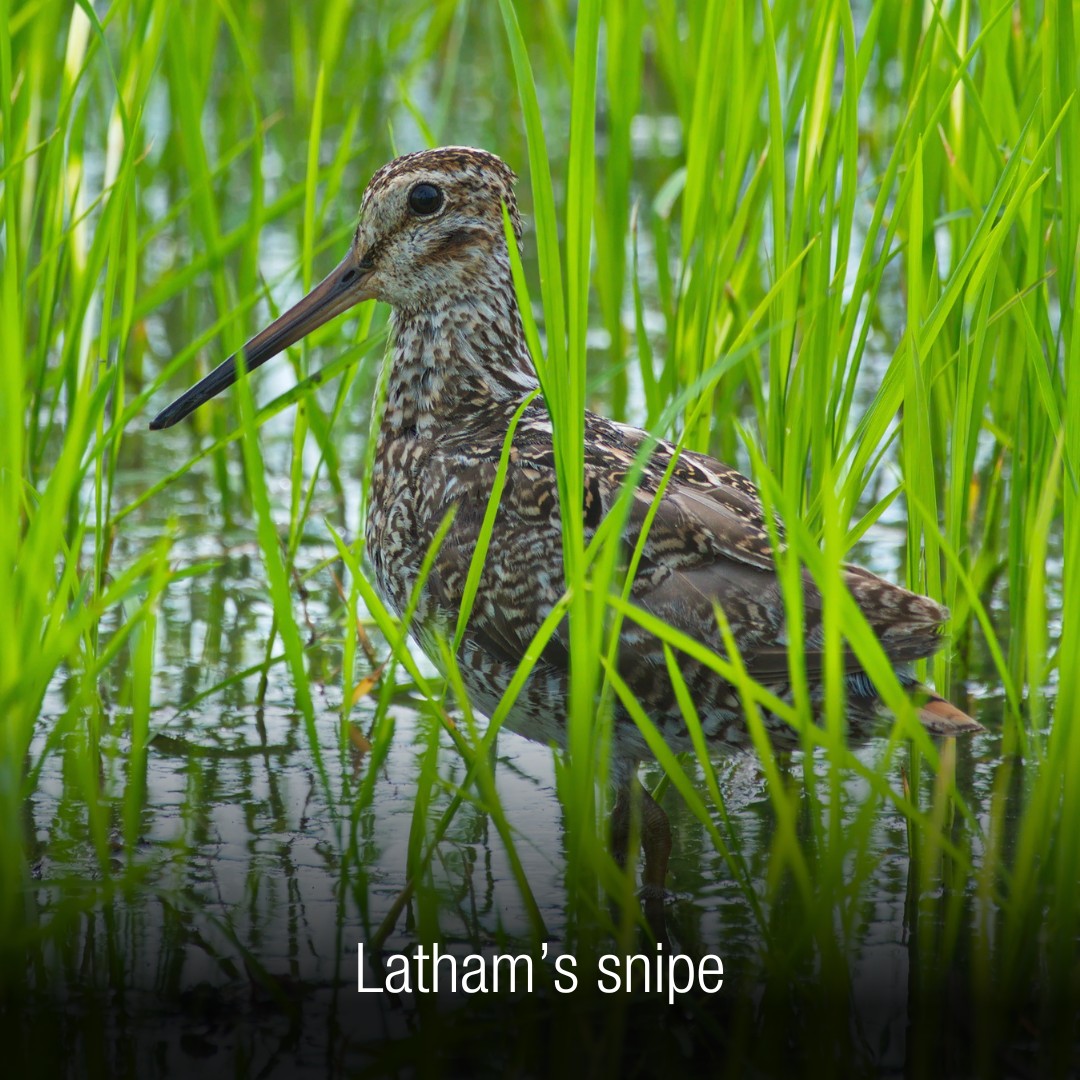
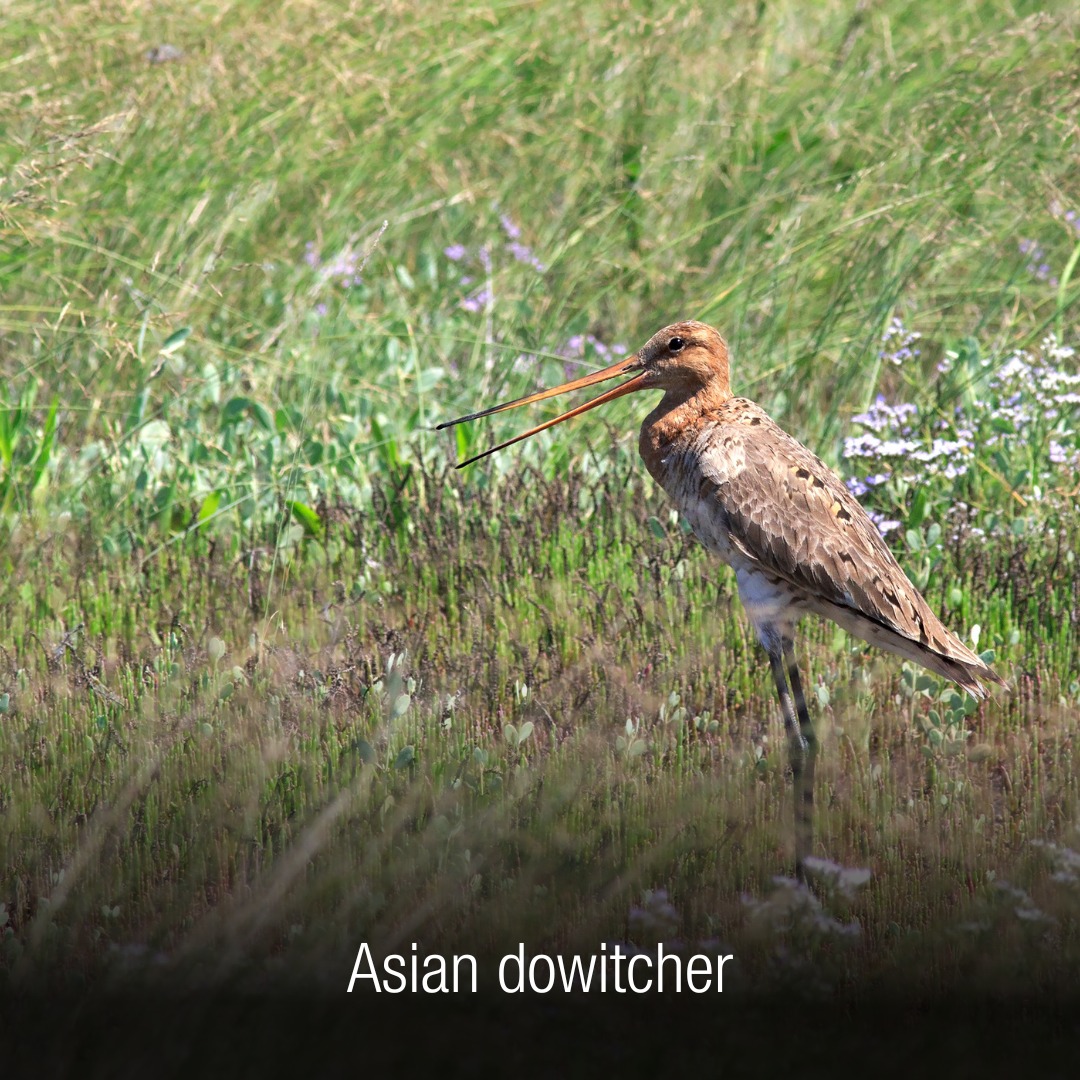
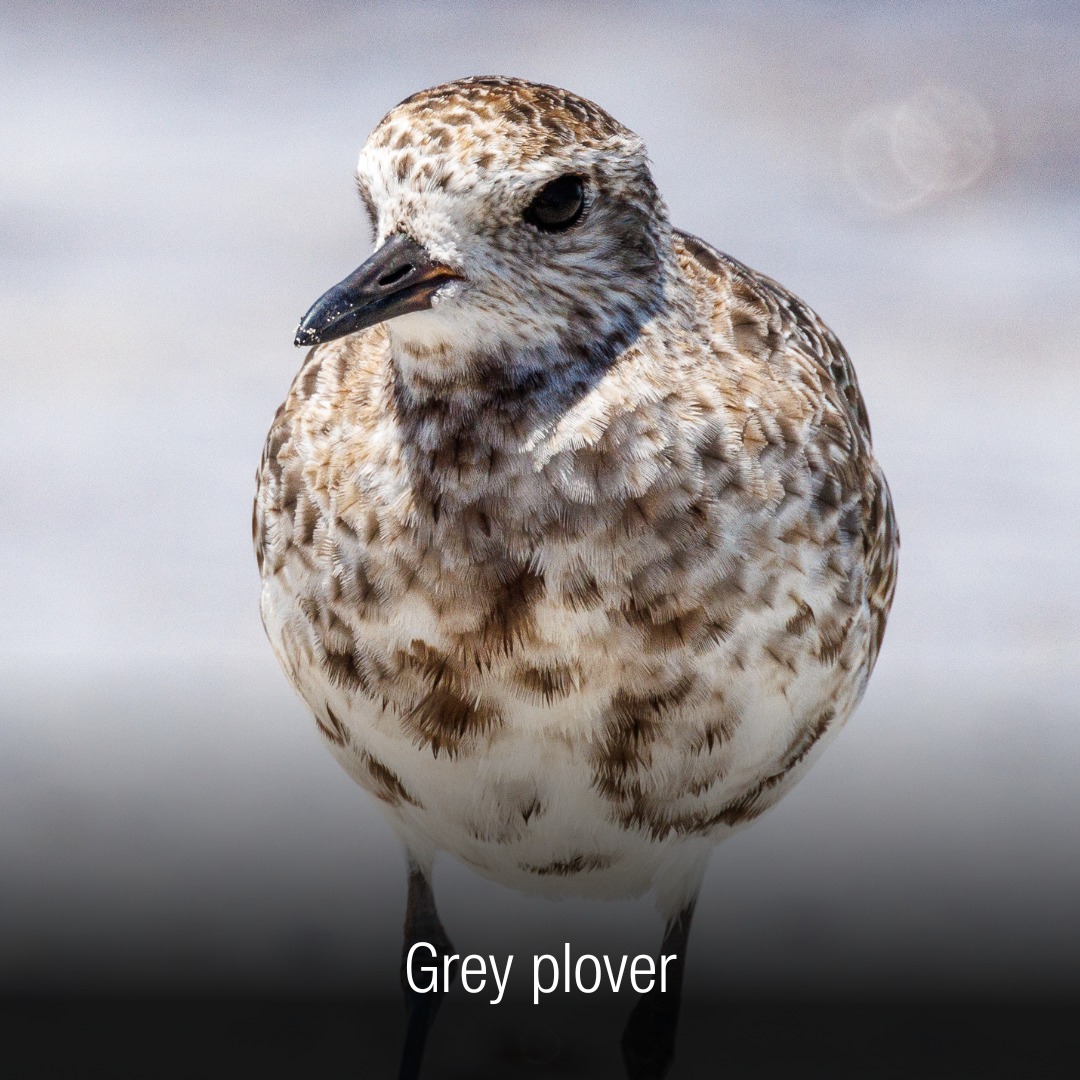
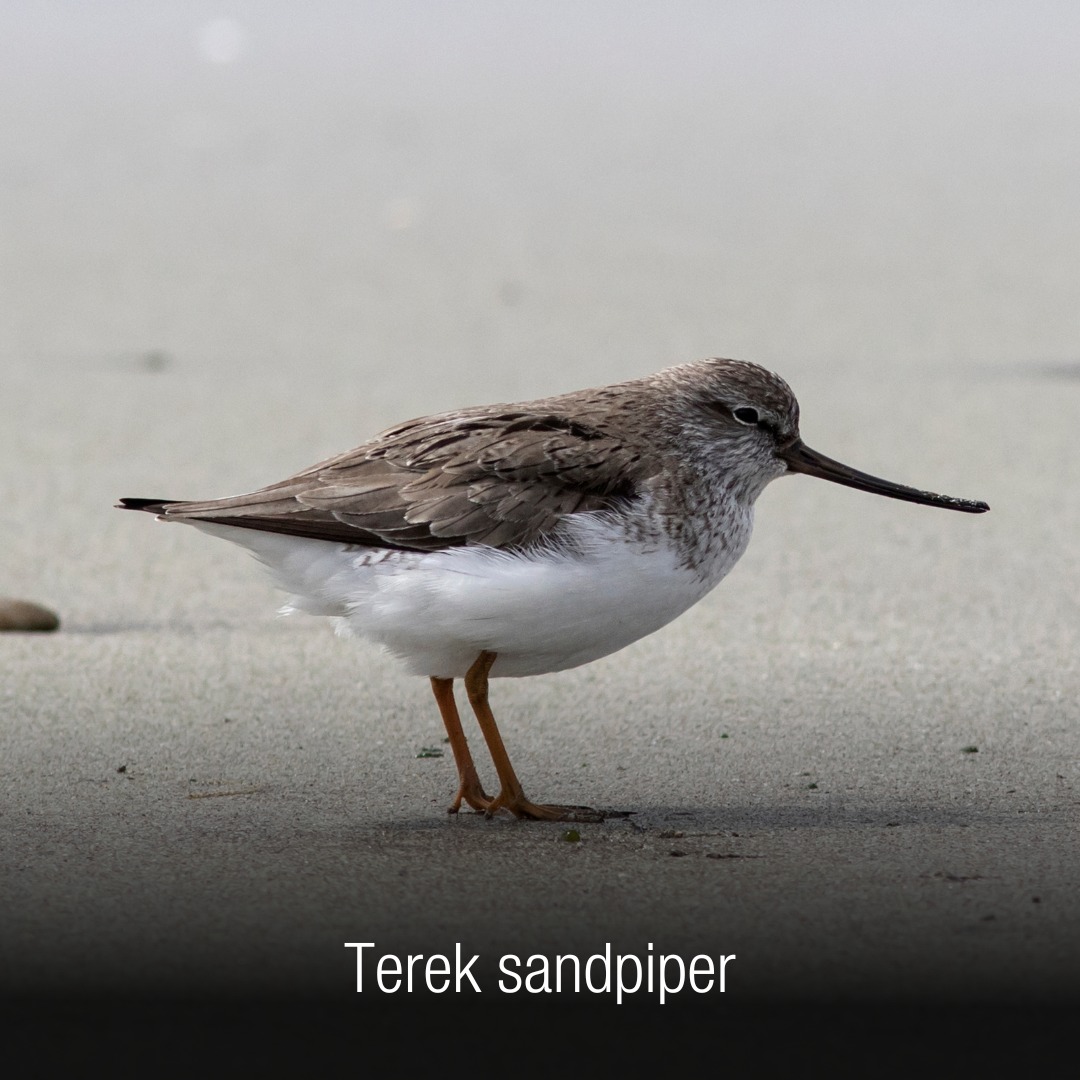
Photos: Nature Conservation Council of NSW
EPA Refuses To Release Reports On Toxic Pollution From Vales Point Power Station: Lake Macquarie-Central Coast Children's Health At Risk
December 14th, 2023
For nearly a year, the NSW EPA has refused to publicly release two reports that would reveal options to slash toxic coal pollution from Vales Point Power Station despite community members calling for greater transparency.
On behalf of the Nature Conservation Council of NSW, lawyers from Environmental Justice Australia have lodged an application with the NSW Civil and Administrative Tribunal (NCAT) seeking two key reports on Nitrogen Oxides and Sulphur Dioxide emissions from Vales Point.
The reports explore the feasibility of installing best-practice pollution reduction technologies at the Vales Point Power Station, similar to those required in the European Union, China and the United States.
Despite public backlash, the NSW EPA granted Delta Electricity an exemption from pollution limits until October 2024. As part of that decision, the EPA required Delta to produce the two reports.
Nitrogen dioxide is strongly associated with childhood asthma and impaired lung development, while sulphur dioxide pollution can cause inflammation of the respiratory tract, wheezing and lung damage.
An estimated 650 children on the Central Coast and at Lake Macquarie have asthma because of pollution that comes from coal-fired power stations like Vales Point, the Nature Conservation Council of NSW has stated.
 The NSW EPA has refused requests to release the reports since March 2023, and NCC has exhausted all options in attempts to get the reports – including by applying to the NSW Information Commissioner.
The NSW EPA has refused requests to release the reports since March 2023, and NCC has exhausted all options in attempts to get the reports – including by applying to the NSW Information Commissioner.
The EPA has justified its failure to release the reports by saying it would result in ‘public scrutiny and media pressure,’ which it claims would ‘interfere’ with its ability to make an independent decision on the regulation of toxic pollution from Vales Point, NCC said in a statement.
The NSW Information Commissioner found the decision not to release the documents’ ‘ is not justified’ - but the EPA refused to review its decision until Friday 22 December.
In response, the Nature Conservation Council has been forced to challenge the EPA decision in NCAT to ensure transparency for the community and the public release of information.
NCC Chief Executive Officer Jacqui Mumford said:
“This power station is pumping out pollution that makes people sick. It's ridiculous that Vales Point is the only power station in the state that is exempt from NSW clean air laws.
The report we are seeking could hold useful information to limit impacts on the community, which is why it needs to be released. It is also really important for our democracy that the community surrounding the power station have access to this kind of information that directly impacts their lives.”
Environmental Justice Australia Lawyer Jocelyn McGarity said:
"It is in the public interest for reports like these to be released.
The fact that our client has to use lawyers for 10 months now to try to bring this information to light indicates there’s a real problem with the EPA’s transparency culture.
The EPA also chose to wait until the start of the Christmas holidays to announce its decision – which is after our client’s review rights expire.
It’s concerning that the EPA claim that public scrutiny and media attention would affect the integrity of their decision making.
This is precisely why communities have called for greater transparency and accountability from both the coal industry and the EPA as part of the current review into power station licenses.
We hope that as part of the review process, the EPA makes it mandatory via licence conditions for operators like Delta to release these kinds of reports, and if not, it's incumbent on the EPA to be proactively releasing them to ensure the community has access to relevant information about toxic pollution."
Future Sooner spokesperson, Gary Blaschke of Lake Munmorah said:
"Vales Point wants to stay open until 2033 which we know will cause more cases of childhood asthma and premature deaths.
Given this, Delta Electricity should be required to upgrade the power station to best-practice pollution controls, which could reduce Nitrogen Oxide emissions by over 90 per cent."
As we go to press, the reports have still not been made available.
Background
Vales Point Power Station is one of two operating coal fired power stations on the shores of Lake Macquarie, New South Wales. Vales Point is located on the southern shore of the lake, near the township of Mannering Park.
Vales Point power station first began operating on the shores of southern Lake Macquarie in 1963, with the current power station, Vales Point B, commissioned in 1978. Vales Point was the first major power station in New South Wales to be located near its fuel source (coal).
Publicly owned until November 2015 when the Coaliion NSW State Government sold to Sunset International Power for $1 million. The deal capped the new owner’s site rehabilitation costs to just $10M.
It has two steam turbines, with a total generating capacity of 1,320 MW (1,770,000 hp) of electricity.
In 2017 it was valued at $732 million, and was estimated to make part-owner energy entrepreneur and former National Party candidate Trevor St Baker a half billionaire. However, in December 2021, the value of the plant was cut to $156 million and the annual profit was reduced 93% to $9.3 million. The owner blamed the COVID-19 pandemic for reducing demand and an influx of cheaper renewables reducing wholesale electricity prices.
In September 2022 Sunset Power owners announced the sale of Vales Point Power Station to a Czech family investment group Sev.En Global Investments. The new owner is refusing to back a commitment to close the plant in 2029, according to a March 16 2023 ABC report.
As of 2021, the Vales Point Power Station emits more toxic nitrogen oxide pollutants than allowable under the NSW Protection of the Environment Operations (Clean Air) Regulation 2021. In order to continue to legally operate (or otherwise cease operating), the operator applied for an exemption under its licence 761, which was granted on 15 December 2021 with a reduction variation and additional conditions imposed by the New South Wales Environment Protection Authority.
Vales Point Power Station was used as the location for the Midnight Oil US Forces music video.
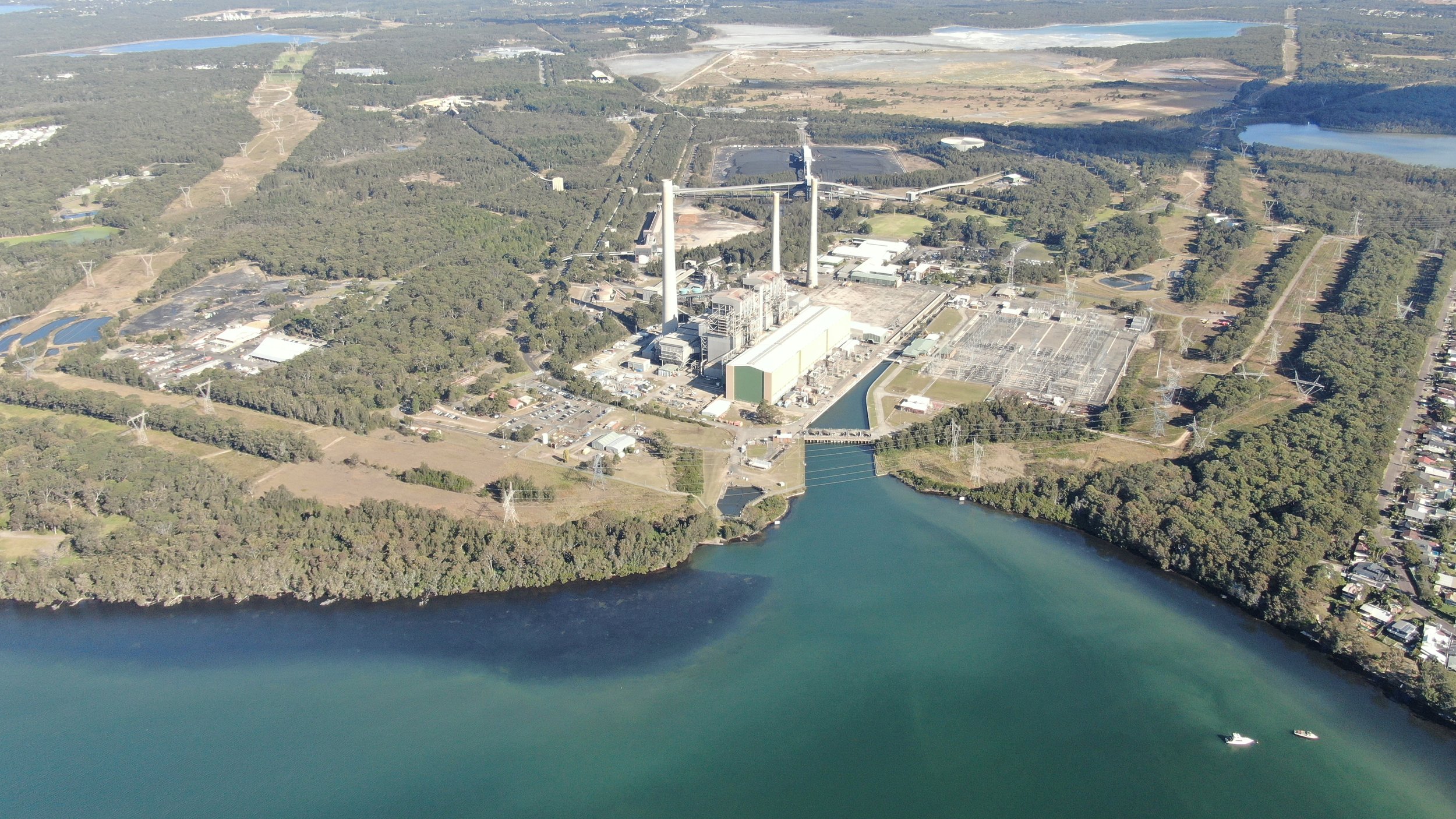
Photo: Hunter Community Environment Centre, top photo: NCC
Our dogs can terrify (and even kill) wildlife. Here’s how to be a responsible owner this summer
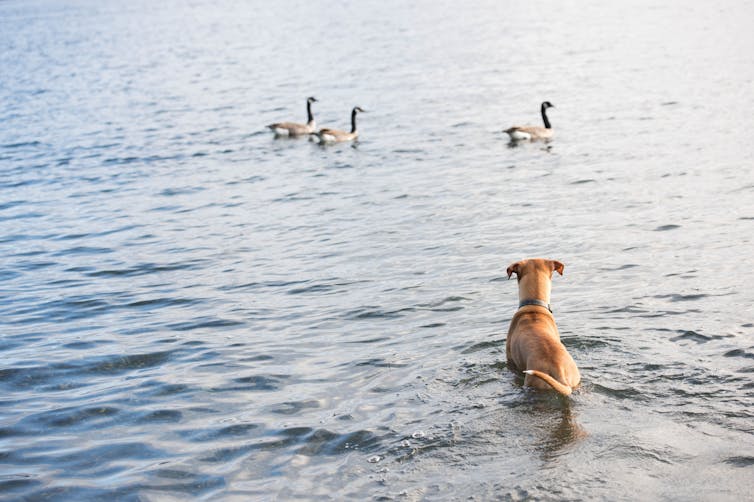
In Australia, dog ownership often goes hand-in-hand with a love for the great outdoors. Whether it’s walking on the beach, going camping, or having a barbecue in the park, we tend to keep our canine companions close as we soak up the sun.
But many of us forget a key fact about our dogs: they are predators. Even the fluffy little 5kg ball that spends most of its time in your lap derives from an apex predator – and its predatory instincts can kick in at any time.
And while many of our dogs don’t have the same hunting skills as their distant ancestors (who had to hunt for a living), wildlife doesn’t know that.
The impacts of domestic dogs on wildlife aren’t well studied, and likely vary depending on the environment. Nonetheless, there’s good evidence domestic dogs, when left unobserved, can have detrimental effects in the places they visit.
With that in mind, here are some things to consider next time you take your pup out for a bushwalk.
How Dogs Impact Ecosystems
There are five main ways domestic dogs can negatively impact the natural environments they visit. These are:
- direct physical harm through predatory behaviour
- disturbance through chasing and harassment
- increased exposure to diseases
- interbreeding, which can alter the gene pool of wild canid populations
- increased competition for resources.
The good news is the last three points aren’t particularly relevant in Australia. For one thing, there’s little overlap between diseases common in domestic dogs and Australian wildlife. There’s also little resource overlap, except perhaps in some areas where feral or semi-feral dogs live alongside dingoes.
And regarding potential interbreeding, while it was once thought this could threaten the dingo gene pool, recent research suggests it’s not nearly as common as we thought.
As such, the main harms Aussie dog owners should focus on are physical harms through predatory behaviour and disturbance to ecosystems.
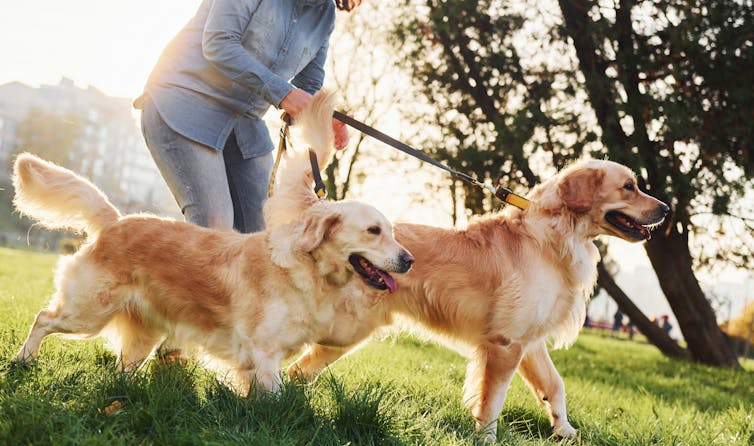
Dogs Can Kill
We know dogs are capable of injuring and killing wildlife, but it’s difficult to determine how common this is, because many events go unreported. While smaller animals such as lizards, gliders and possums are at higher risk, larger species such as koalas can also fall prey to dogs.
One study that looked at wildlife coming into care at Queensland rehabilitation centres reported dog attacks as the cause in about 9% of cases. These cases often resulted in severe injury or death.
Dog owners should be especially wary of small, localised populations of vulnerable species. A study in Argentina’s Patagonia region details several cases of dogs decimating local penguin populations after gaining access to protected island areas during low tide.
Not to mention, dog attacks on wildlife can bring risk to dogs as well. Kangaroos can defend themselves with their powerful limbs, monitor lizards are equipped with sharp claws and teeth, and many snake species are highly venomous.
The Impact Of Harassment
You might think it’s harmless for your dog to chase wildlife if it never manages to catch the animals it chases, but that isn’t true. Wild animals optimise their behaviours to meet their needs for foraging, breeding and resting, and being chased by a dog can disrupt this.
For example, certain threatened bird species will nest on the beach and find foraging opportunities based on the tides. One dog forcing one bird to abandon this important activity may have a small impact. But if it happens repeatedly throughout the day, it can become a much bigger problem. It may even drive animals out of the area.
Research conducted in Sydney has shown the mere presence of a leashed dog is enough to temporarily, yet dramatically, reduce the number of bird species detected.
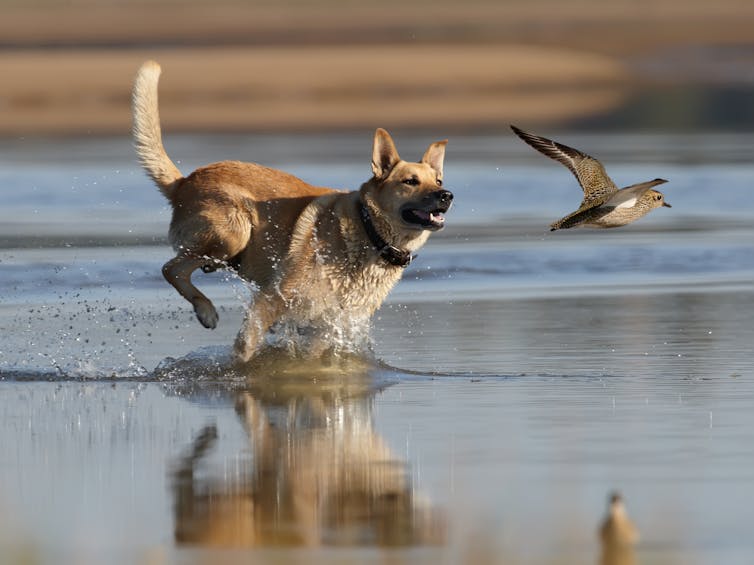
Keep An Eye On Your Furry Pal
Responsible dog ownership involves making sure our dogs have a minimal impact on others, including wildlife. How can we achieve this when our dogs are simply engaging in behaviours that come naturally to them, and may even be rewarding for them?
Training your dog to have general obedience – especially to come when called – is worth sinking considerable time and effort into. This can save both your dog and any wildlife they may be after. For instance, calling a dog away from a snake is one of the most effective ways of managing snake bite risk.
One pilot study in Victoria found positive outcomes from a program that helped owners train their dogs to be more obedient around wildlife.
That said, recall training is an art form, and recalling a dog that likes to run off and chase animals can be a huge challenge.
Another solution is to rely on leashes when passing sensitive areas, or where there’s a risk of wildlife harassment. In Australia, many beaches that allow dogs have signs with information about vulnerable birds in the area and how to protect them from your dog.
This could mean keeping your dog off rock platforms, leashing them when you see birds foraging on the beach, or keeping them out of fenced areas. Some areas are simply too vulnerable for dogs to run amok, so always look for signs and read them carefully.
If you’re hiking, use a long line (a leash that’s more than five metres long) and look for signs of your dog detecting something of interest. Often their ears will come up high and forward, and they will freeze and stare intently.
At this point, it doesn’t matter what they’re excited about: take the opportunity to leash them or shorten their leash, and get their attention before they can take off. Investing in a long leash will allow your dog more freedom without putting wildlife at risk.
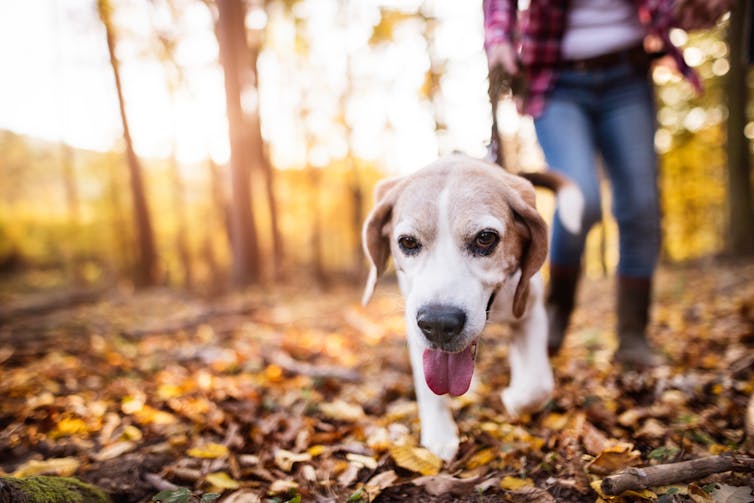
If your dog does injure an animal, you should quickly contact a wildlife rescue organisation or take the animal to a veterinary practice or sanctuary. For small animals, even minor injuries from a dog will usually require veterinary attention.
It’s our responsibility to be respectful visitors when we’re out in nature, and to make sure our dogs are too. ![]()
Melissa Starling, Postdoctoral Researcher in Veterinary Science, University of Sydney
This article is republished from The Conversation under a Creative Commons license. Read the original article.
Become a beach scientist this summer and help monitor changing coastlines
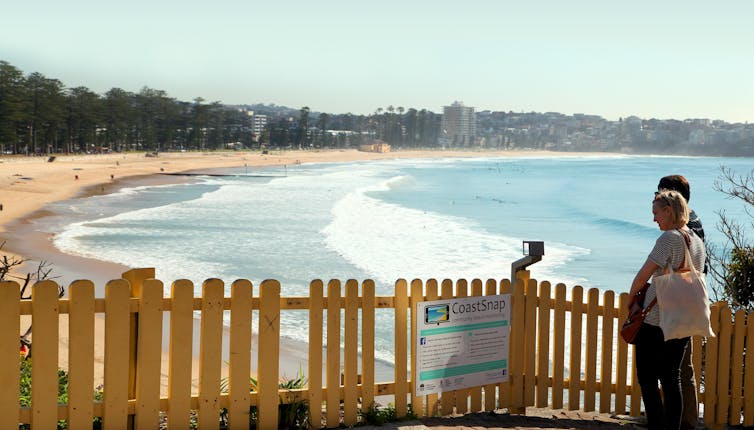
When you arrive at your favourite beach these summer holidays, you may notice something different about the coast.
With the triple-dip La Niña now making way for El Niño, our beaches have been through a rollercoaster ride. Some beaches have been completely stripped of sand, while others have grown very wide.
In the past, such changes went mostly unrecorded. However, thanks to a project known as CoastSnap, coastal data is now being collected like never before. Using designated camera cradles installed at beach viewpoints, CoastSnap uses community snapshots taken on smartphones to track beach change.
Almost 50,000 photos have been collected so far. They have revealed a varying picture in recent years: from dramatic beach loss during La Niña storms three years ago, to 60 metres of beach growth in recent months. So with smartphones as commonplace as towels and sunscreen in the beach bag, why not add coastal data collection to your list of holiday activities this summer?
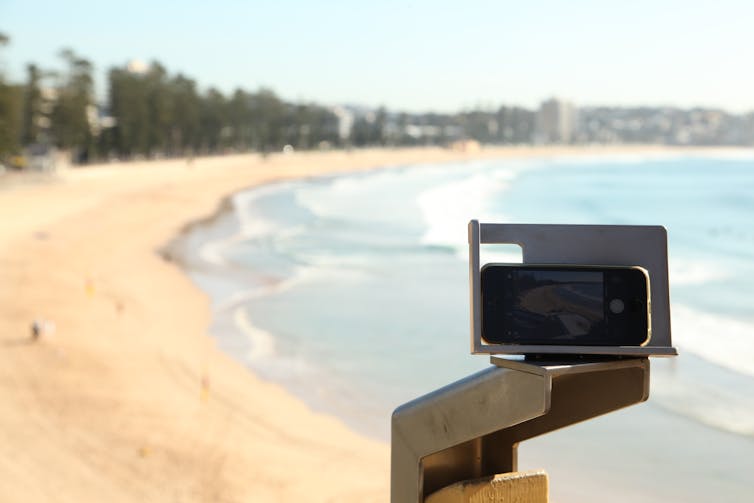
Turning Beach Snaps Into Scientific Data
Through CoastSnap, we installed a network of stainless-steel camera cradles along coastal trails all around the world. These camera cradles are positioned at a perfect vantage point for tracking changes to the coast – whether it be due to rising sea levels, extreme storms or other factors.
All you need to do is place your camera in the cradle, take a photo and upload it using the QR code at the station. Because the position and angle of the photo is always the same, over time these snaps reveal how the beach is changing.
As well as being a powerful visual record, sophisticated algorithms turn each photo into miniature satellite images that are used to precisely measure shoreline position. This is done using a process known as photogrammetry, in which pixels in the image are rearranged as though they had been taken from space.
This aerial view enables beach change to be easily measured. Also, since the exact time of photo capture is recorded, the effects of tides as they vary throughout the day can be accounted for.

From Local To Global: A Network Of Community Beach Monitoring
From its beginnings on the Northern Beaches of Sydney in 2017, new CoastSnap stations have been rolled out all around the world. We now have more than 350 CoastSnap stations in 31 countries and across five continents.
This makes it the largest coordinated network of coastal monitoring worldwide – and all the data is collected by the community.
In Ghana, West Africa, students from local schools are using CoastSnap to better understand how the “golden seaweed” sargassum impacts fishing communities.
On Prince Edward Island in Canada, CoastSnap captured the damage done by Hurricane Fiona last year. The same stations are now being used to track the post-hurricane dune recovery.
In Australia, there are currently 125 CoastSnap stations around the country. This enables a big-picture assessment of the coastal consequences of large-scale weather events. For example, during last year’s record rainfall in eastern Australia, extreme erosion was observed at CoastSnap stations from Queensland to southern New South Wales. The images reveal scouring by floodwaters was the main cause of beach erosion in many locations, rather than wave action as is usually the case.
Monitoring The Present To Plan For The Future
Data on coastal change is crucial for managing coastlines into the future. This is particularly important as sea levels continue to rise, storm tracks shift, and beaches come under increasing pressure from overdevelopment.
With several CoastSnap stations already operating for over six years now, this growing record is beginning to observe longer-term changes to the coast. This data is being fed into numerical models that help coastal researchers predict what the coastline will be like in the coming decades – and plan accordingly.
Smart coastal planning will help buffer climate change impacts. This will go some way to ensure future generations can enjoy the coast like we do today.
So as you head out to the beach this summer, look out for your nearest CoastSnap station and help monitor the coastline – it really is a “snap”!![]()
Mitchell Harley, Scientia Senior Lecturer, UNSW Sydney and Fred Chaaya, Project Engineer, UNSW Water Research Laboratory
This article is republished from The Conversation under a Creative Commons license. Read the original article.
Mountain Bike Incidents On Public Land: Survey
- Mountain Bike Incidents On Public Land: Survey Launched To Gather Data On What's Happening To Public Parks - Community Land - Bush Reserves In Pittwater
- Mother Brushtail Killed On Barrenjoey Road: Baby Cried All Night - Powerful Owl Struck At Same Time At Careel Bay During Owlet Fledgling Season: calls for mitigation measures - The List of 'What You can Do' as requested
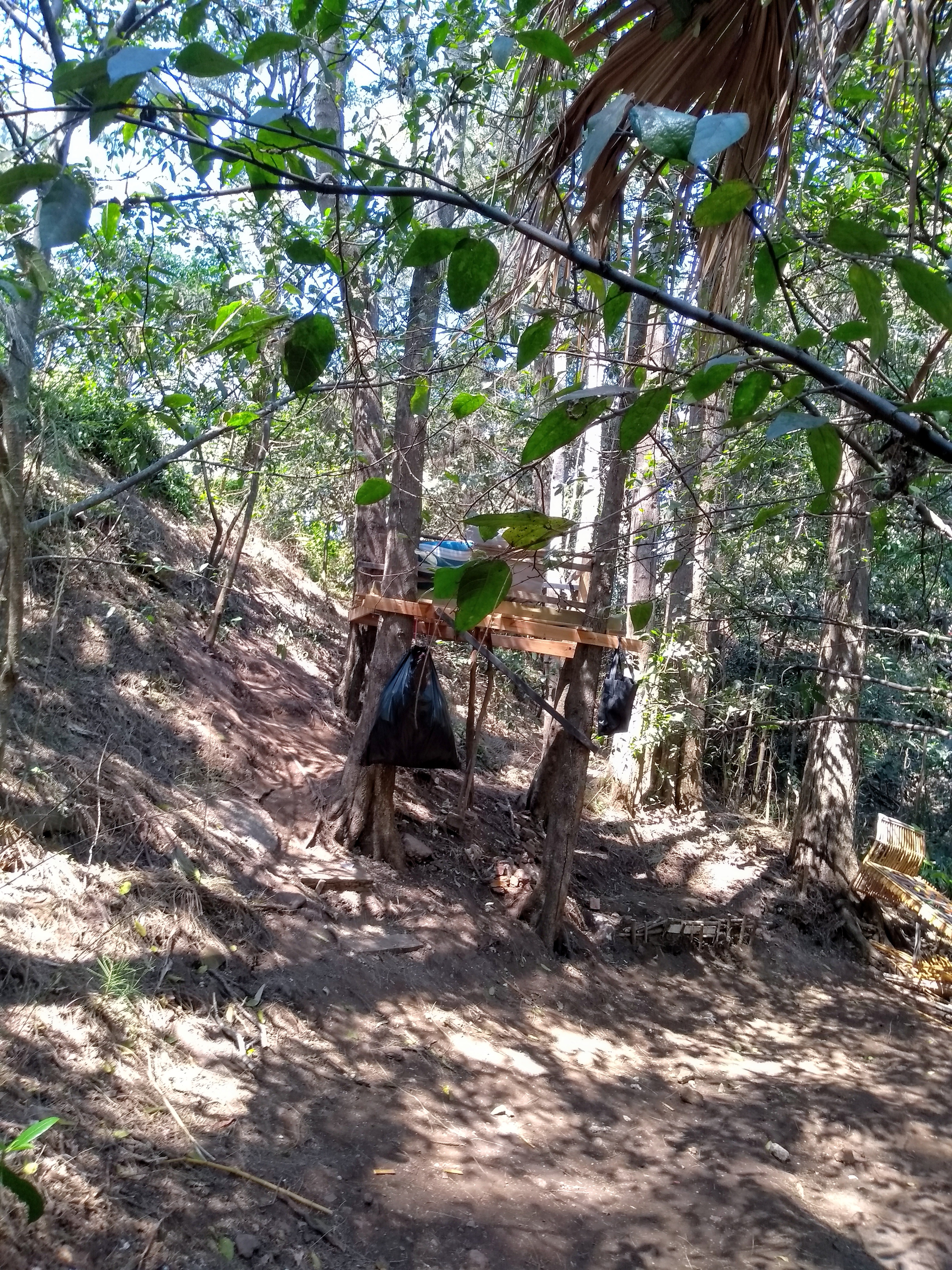
Next Steps To Beat Plastic Pollution In NSW: Have Your Say
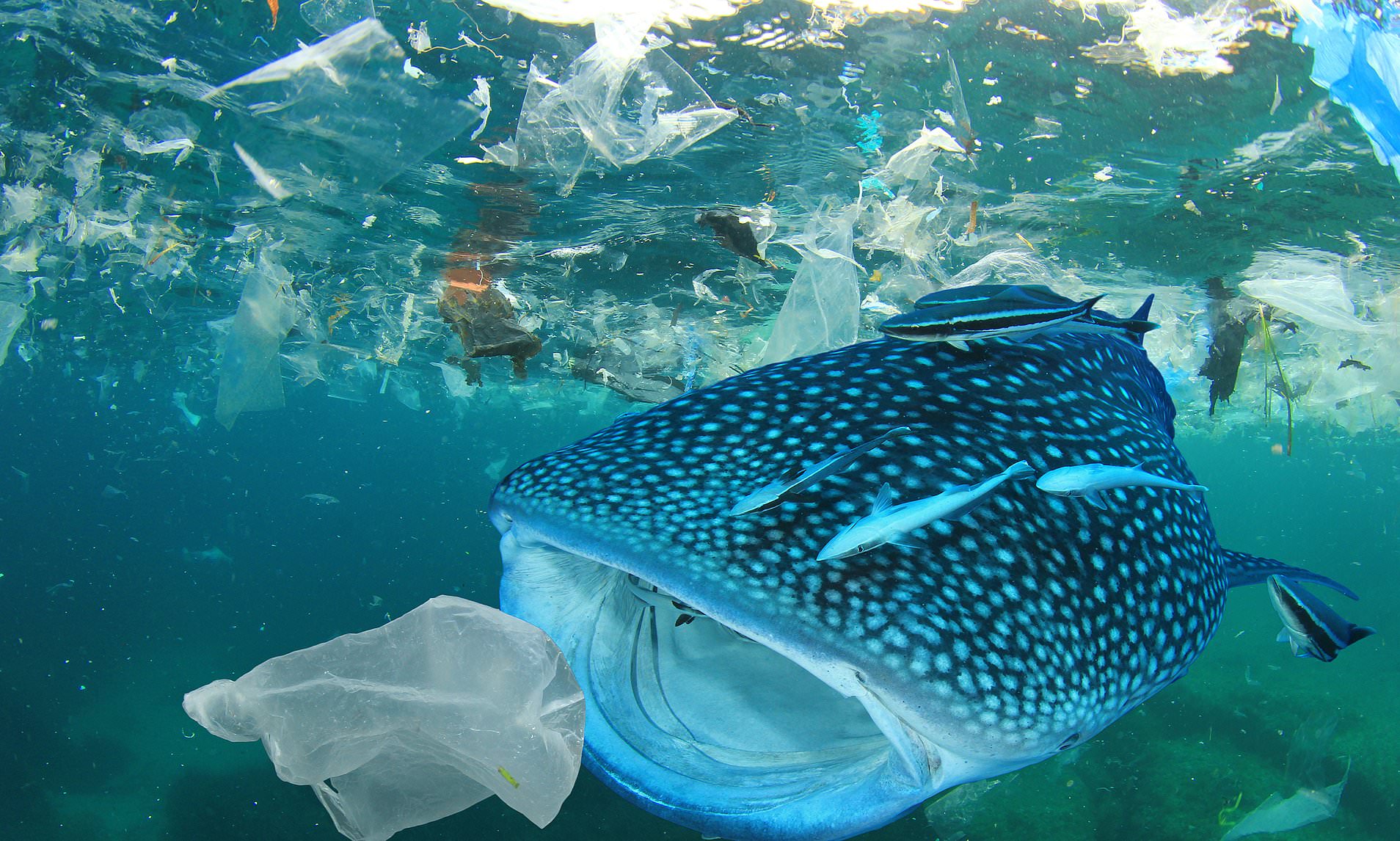
- Are frequently littered or release microplastics into the environment;
- Contain harmful chemical additives; or
- Are regulated or proposed to be in other states and territories.
- Items containing plastic such as lollipop sticks, cigarette butts, bread tags and heavyweight plastic shopping bags are some of the problematic products that could be redesigned or phased out.
Please Look Out For Wildlife During Heatwave Events

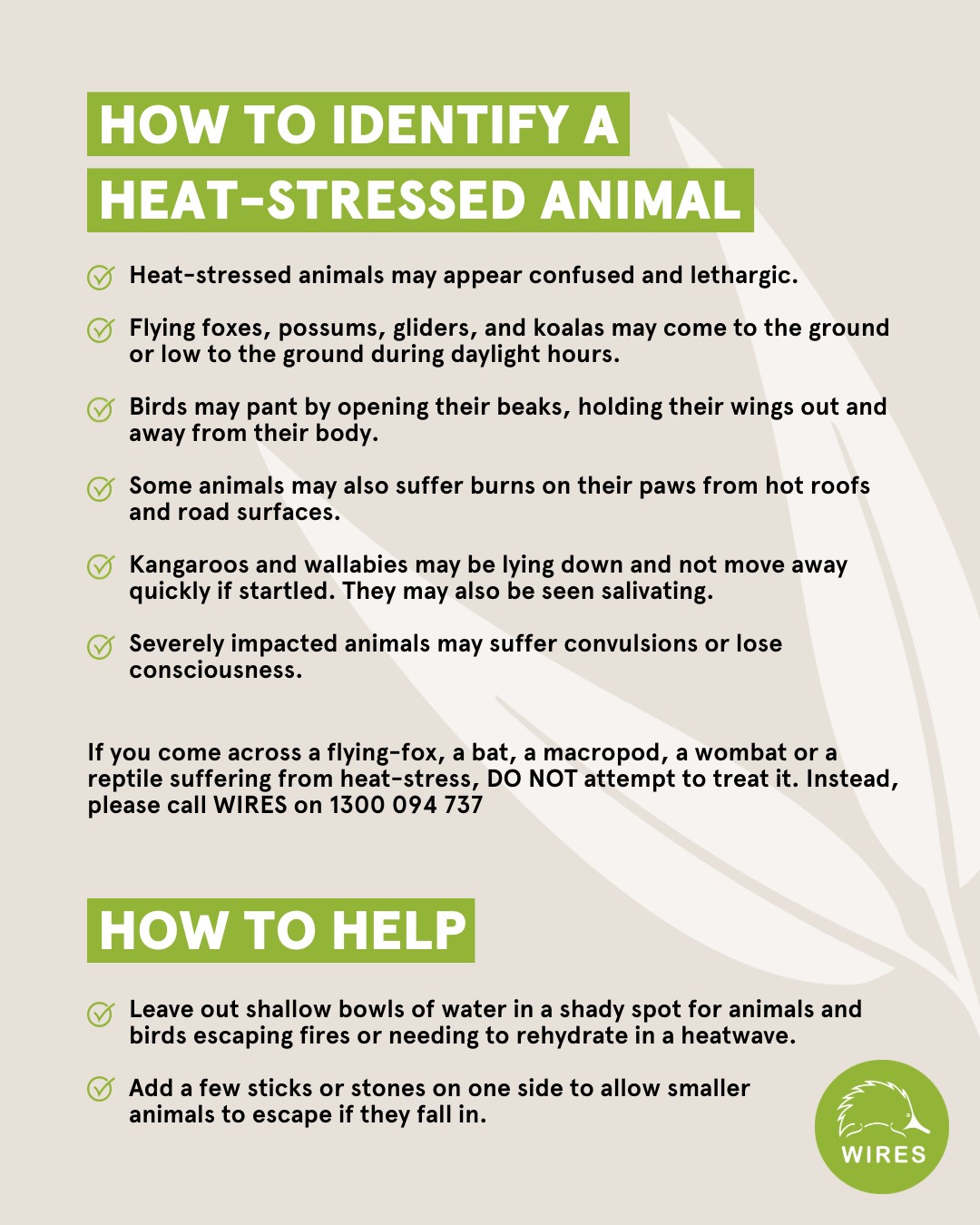
Palmgrove Park Avalon: New Bushcare Group
 Palmgrove Park Avalon is a remnant of the Spotted Gum forest that was once widespread on the lower slopes of the Pittwater peninsula. This bushland’s official name and forest type is Pittwater and Wagstaffe Endangered Ecological Community, endangered because so much has been cleared for suburban development. Canopy trees, smaller trees and shrubs, and ground layer plants make up this community. Though scattered remnant Spotted Gums remain on private land, there is little chance of seedlings surviving in gardens and lawns. More information HERE
Palmgrove Park Avalon is a remnant of the Spotted Gum forest that was once widespread on the lower slopes of the Pittwater peninsula. This bushland’s official name and forest type is Pittwater and Wagstaffe Endangered Ecological Community, endangered because so much has been cleared for suburban development. Canopy trees, smaller trees and shrubs, and ground layer plants make up this community. Though scattered remnant Spotted Gums remain on private land, there is little chance of seedlings surviving in gardens and lawns. More information HERE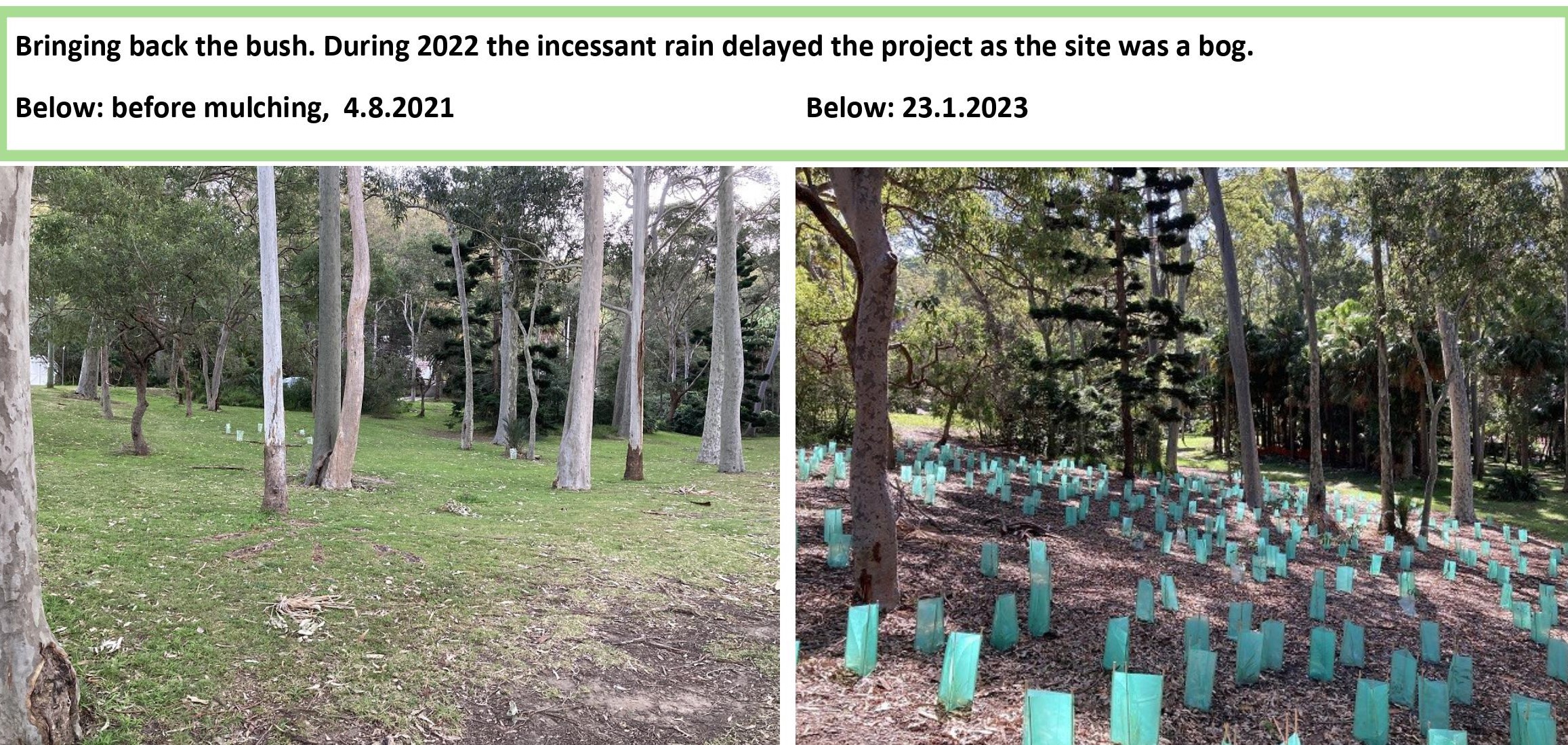
Report Fox Sightings
%20(1).jpg?timestamp=1675893929686)
Marine Wildlife Rescue Group On The Central Coast
A new wildlife group was launched on the Central Coast on Saturday, December 10, 2022.
Marine Wildlife Rescue Central Coast (MWRCC) had its official launch at The Entrance Boat Shed at 10am.
The group comprises current and former members of ASTR, ORRCA, Sea Shepherd, Greenpeace, WIRES and Wildlife ARC, as well as vets, academics, and people from all walks of life.
Well known marine wildlife advocate and activist Cathy Gilmore is spearheading the organisation.
“We believe that it is time the Central Coast looked after its own marine wildlife, and not be under the control or directed by groups that aren’t based locally,” Gilmore said.
“We have the local knowledge and are set up to respond and help injured animals more quickly.
“This also means that donations and money fundraised will go directly into helping our local marine creatures, and not get tied up elsewhere in the state.”
The organisation plans to have rehabilitation facilities and rescue kits placed in strategic locations around the region.
MWRCC will also be in touch with Indigenous groups to learn the traditional importance of the local marine environment and its inhabitants.
“We want to work with these groups and share knowledge between us,” Gilmore said.
“This is an opportunity to help save and protect our local marine wildlife, so if you have passion and commitment, then you are more than welcome to join us.”
Marine Wildlife Rescue Central Coast has a Facebook page where you may contact members. Visit: https://www.facebook.com/profile.php?id=100076317431064
- Ph: 0478 439 965
- Email: marinewildlifecc@gmail.com
- Instagram: marinewildliferescuecc

Watch Out - Shorebirds About
.JPG.opt1460x973o0,0s1460x973.jpg?timestamp=1663629195339)
Possums In Your Roof?: Do The Right Thing

Aviaries + Possum Release Sites Needed

Bushcare In Pittwater
Where we work Which day What time
Avalon
Angophora Reserve 3rd Sunday 8:30 - 11:30am
Avalon Dunes 1st Sunday 8:30 - 11:30am
Avalon Golf Course 2nd Wednesday 3 - 5:30pm
Careel Creek 4th Saturday 8:30 - 11:30am
Toongari Reserve 3rd Saturday 9 - 12noon (8 - 11am in summer)
Bangalley Headland 2nd Sunday 9 to 12noon
Bayview
Winnererremy Bay 4th Sunday 9 to 12noon
Bilgola
North Bilgola Beach 3rd Monday 9 - 12noon
Algona Reserve 1st Saturday 9 - 12noon
Plateau Park 1st Friday 8:30 - 11:30am
Church Point
Browns Bay Reserve 1st Tuesday 9 - 12noon
McCarrs Creek Reserve Contact Bushcare Officer To be confirmed
Clareville
Old Wharf Reserve 3rd Saturday 8 - 11am
Elanora
Kundibah Reserve 4th Sunday 8:30 - 11:30am
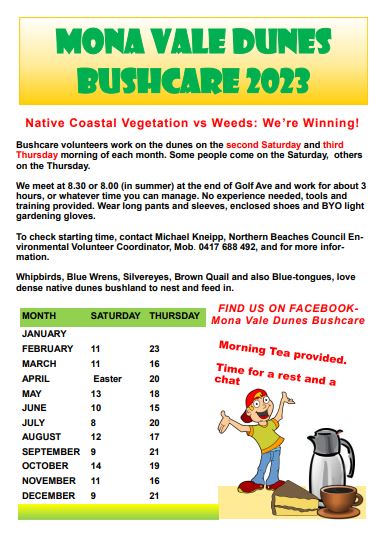 Mona Vale
Mona Vale Mona Vale Beach Basin 1st Saturday 8 - 11am
Mona Vale Dunes 2nd Saturday +3rd Thursday 8:30 - 11:30am
Newport
Bungan Beach 4th Sunday 9 - 12noon
Crescent Reserve 3rd Sunday 9 - 12noon
North Newport Beach 4th Saturday 8:30 - 11:30am
Porter Reserve 2nd Saturday 8 - 11am
North Narrabeen
Irrawong Reserve 2nd Saturday 2 - 5pm
Palm Beach
North Palm Beach Dunes 3rd Saturday 9 - 12noon
Scotland Island
Catherine Park 2nd Sunday 10 - 12:30pm
Elizabeth Park 1st Saturday 9 - 12noon
Pathilda Reserve 3rd Saturday 9 - 12noon
Warriewood
Warriewood Wetlands 1st Sunday 8:30 - 11:30am
Whale Beach
Norma Park 1st Friday 9 - 12noon
Western Foreshores
Coopers Point, Elvina Bay 2nd Sunday 10 - 1pm
Rocky Point, Elvina Bay 1st Monday 9 - 12noon
Friends Of Narrabeen Lagoon Catchment Activities

Gardens And Environment Groups And Organisations In Pittwater
- Ringtail Posse: 1 – February 2023; Anna Maria Monticelli: King Parrots/Water Dragons - Jacqui Scruby: Loggerhead Turtle - Lyn Millett OAM: Flying-Foxes - Kevin Murray: Our Backyard Frogs - Miranda Korzy: Brushtail Possums
- Ringtail Posse: 2 - March 2023; Kevin Murray: Tawny Frogmouth - Kayleigh Greig: Red-Bellied Black Snake - Bec Woods: Australian Water Dragon - Margaret Woods: Owlet-Nightjar - Hilary Green: Butcher Bird - Susan Sorensen: Wallaby
- Ringtail Posse 3 - April 2023: Jeffrey Quinn: Kookaburra, Tom Borg McGee: Kookaburra, Stephanie Galloway-Brown: Bandicoot, Joe Mills: Noisy Miner
- Ringtail Posse 4 May 2023 - Andrew Gregory: Powerful Owl, Marita Macrae: Pale-Lipped Or Gully Shadeskink, Jools Farrell: Whales & Seals, Nicole Romain: Yellow-Tailed Black Cockatoo
- Ringtail Posse 5: June 2023 - Lynleigh Greig OAM: Snakes, Dick Clarke: Diamond Python, Selena Griffith: Glossy Black-Cockatoo, Eric Gumley: Bandicoot
- Ringtail Posse 6: July 2023 - Sonja Elwood: Long-Nosed Bandicoot, Dr. Conny Harris: Swamp Wallaby, Neil Evers: Bandicoot, Bill Goddard: Bandicoot
- Ringtail Posse 7: August 2023 - Geoff Searl OAM: Tawny Frogmouth, Peter Macinnis: Echidna, Peter Carter: Ringtail Possum, Nathan Wellings; Kookaburra
- Ringtail Posse 8: September 2023 - Saving Sydney's Last Koalas; Logging Now Stopped In Future Koala Park By Minns Government - ''Is There Time To Save Sydney's Last Koalas Too?'' Asks: John Illingsworth, WIRES, Sydney Wildlife Rescue, Save Sydney Koalas, The Sydney Basin Koala Network, The Help Save The Wildlife & Bushlands In Campbelltown Group, Appin Koalas Animal Rescue Service, Patricia and Barry Durham, Sue Gay, Save Mt. Gilead, Paola Torti Of The International Koala Intervention Group
- Ringtail Posse 9: October 2023 - David Palmer OAM: Bandicoots, Helen Pearce: Brushtail Possum, Amina Kitching: Goanna, David Goudie: Ringtails Possums + Bandicoots + Owls
- Mother Brushtail Killed On Barrenjoey Road: Baby Cried All Night - Powerful Owl Struck At Same Time At Careel Bay During Owlet Fledgling Season: calls for mitigation measures - The List of what you can do for those who ask 'What You I Do' as requested
- Ringtail Posse 10: November 2023 - Stop Wildlife Roadkill Group: You Can Help By Using The Wildlife Incident Mapping Website
Updating Australia’s Strategy For Nature 2019–2030 Announcement Meets Coal Mine And Gas Fracking Expansions Announcements
January 9, 2024
The Federal Government Department of Climate Change, Energy, the Environment and Water has stated it is working with all states and territories to update Australia’s Strategy for Nature 2019-2030.
''This update will set ambitious national targets and demonstrate how Australia will contribute to the goals of the Kunming-Montreal Global Biodiversity Framework.'' the Dept. said in a release
On 10 November 2023, Australia’s environment ministers agreed on 6 priority areas for national action under the strategy. These priority areas are:
- protect and conserving 30% of Australia’s land and 30% of Australia’s oceans by 2030
- work towards zero new extinctions
- effective restoration of degraded terrestrial, inland water, marine and coastal ecosystems
- tackle the impact of invasive feral species
- build a circular economy and reducing the impact of plastics on nature
- minimise the impact of climate change on nature.
Ministers also agreed on 3 essential elements to achieve all national targets. These are:
- ensure environmental data and information is widely accessible and supports planning
- incorporate nature into government and business decision-making. This includes financing, policy reform, regulation and planning
- ensure equal representation and participation in decisions relating to nature, particularly for First Nations people.
First Nations people and stakeholders will have an opportunity to shape these national targets. The updated strategy will focus the work of government, business and the community on protecting and conserving Australia’s biodiversity priorities.
However, Australians are stating this is yet more virtue signalling as can be read in decisions made by the Federal Government and the NSW State Government since and before that meeting - ''priority area 6 is unlikely to be met while an opposing policy is pursued before all others while element 3 has been removed already altogether.''
Minns Government Recommends Approval For Coal Expansion As Community Goes To Christmas Break 2023: 'Behind Closed Doors' Decisions Need To Be Changed Communities State
December 21, 2023
The NSW Minns Government has recommended an expansion of Idemitsu's Boggabri coal mine be approved - the first coal expansion to be determined since the state election.
An assessment document (see page viii) containing the government’s recommendation that the project be approved was quietly uploaded on the Planning Department’s website on Friday December 22, as the community headed to a 'time out' for the Christmas break.
Lock the Gate Alliance says the recommendation represents a broken promise to the people of NSW because the project has not and will not undergo an independent assessment process.
The expansion will be responsible for 63 million tonnes of greenhouse gas pollution.
In the lead up to the last state election, NSW Labor said “new coal mine projects must be subject to an independent approval process” (via an election platform document provided by the Lock the Gate Alliance).
However, due to an arbitrary decision by the NSW Government to classify the project as a “modification”, it will not be referred to the Independent Planning Commission.
The Idemitsu owned coal project is the first of at least 14 new NSW coal projects expected to be determined by the State Government in the next 18 months. Together, these projects would be responsible for more than two billion tonnes of greenhouse gas emissions - 15 times NSW annual emissions.
Idemitsu was previously penalised for stealing more than 500 Olympic swimming pools’ worth of water at its Boggabri coal mine during a drought.
Libby Laird, who lives on a property next to the mine, said she was disgusted by the decision due to the company’s record.
“Idemitsu has a disregard for the rules. This is not a company that should have another approval just blithely waved through," she said.
Lock the Gate Alliance NSW coordinator Nic Clyde said the NSW Government had broken its promise to ensure independent assessments of coal projects, and was putting the citizens of NSW at risk of climate-related weather disasters.
“The Minns Government has broken its promise of independent decisions and is continuing with the same destructive pro-coal policies as the former Coalition Government, no matter the cost. It’s little surprise this terrible recommendation was quietly made public on a Friday afternoon before Christmas.
“This is the first of at least 14 proposed coal expansions in NSW that will blow NSW and Australian climate targets and put us all at risk.
“The NSW Climate Change (Net Zero Future) Act 2023 became law less than two weeks ago. In passing the Act, the Parliament recognised that ‘action is urgently required to reduce greenhouse gas emissions’ in NSW.
“The expansion proposes to increase annual direct greenhouse gas emissions by about 14% from 2023 to 2036, which runs in the opposite direction to the emissions reduction trajectory required by the Act of at least a 70% reduction by 2035.
“It’s unbelievable that the Minns Government is pushing business as usual on coal mines. Parts of NSW are experiencing extreme bushfires and heatwaves - and we haven’t even reached peak summer.
“We’re calling on the Minns Government to protect its citizens, and stop the latest coal rush immediately, putting in place a pause until proper climate considerations are embedded into mining decisions."
In November 2023 Climate action group Lock the Gate Alliance accused the NSW Minns government of breaking an election promise by allowing BHP’s planned Mt Arthur expansion to be determined behind closed doors rather than referring it to the Independent Planning Commission.
Without this expansion, BHP’s approval to mine coal at Mt Arthur would expire on 30 June 2026.
The Mt Arthur expansion proposed 25 million of thermal coal to be mined each year until 2030; creating 193 million tonnes of GHG in total and two open cut pit voids left unrehabilitated.
Once again, opponents pointed out that in the lead-up to the 2023 state election, NSW Labor promised that “new coal mine projects must be subject to an independent approval process”.
However, because BHP’s expansion of the largest coal mine in NSW has been arbitrarily designated, once again, as a “modification,” the project underwent an internal government assessment only.
Once again Lock the Gate Alliance NSW coordinator Nic Clyde said, “The Planning Department should not be making a decision that would extend the biggest coal mine in NSW for another four years behind closed doors. The loophole which allows these big coal expansions to be arbitrarily treated as modifications needs to be amended, so that they are subject to proper independent assessment.
The community has a huge interest in this project, both in terms of the damaged landscape BHP will leave behind, and in terms of the greenhouse gas emissions from four more years of mining.”
BHP plans to leave behind several unfilled coal pits that will gradually fill with salty water and will remain as a permanent hazard in the Hunter landscape long after BHP has wiped its hands clean of the project, the group stated
These new coal projects working their way through various stages of the NSW assessment process, collectively, have emissions that would total more than two billion tonnes.
Opponents state the continuing pursuit of coal mine extensions and expansions is a 'pursue self destruction of all others for profit at all costs' policy state and federal governments fall in line with through lobbying, political party donations, and behind closed doors deals, despite virtue-signalling statements attesting the opposite, whichever of the main two political parties of Australia they speak for.
Report Reveals Need To Plug Big Holes In Australian Water Laws
January 15, 2024
A new expert report, provided to the Lock the Gate Alliance, exposes how big gas projects are exploiting failings in federal laws designed to protect one of Australia's most precious resources - water - the group states.
The report (available here), Reform of the EPBC Act Water Trigger, written by hydrologist Dr Matthew Currell and environmental advocacy Earth & Every, also shows how these laws could be fixed and Australia’s water protected if a few logical steps are taken.
One of the big issues identified is that the independent scientists (the IESC), who are tasked with providing advice to the government on big gas projects, don’t have the tools they need to make truly informed and independent recommendations.
The authors argue the Federal Government needs to empower the IESC so it can obtain independent information, instead of relying on gas company-supplied data, and that the scientists should be given the opportunity to twice review a company’s proposal - when it is first submitted, and again after the company has responded to feedback.
The report also highlights that at the moment, the deep cultural connections Traditional Owners have with water sites are not properly considered when gas projects are being assessed. The authors say these cultural considerations should be included in the assessment process.
As well, the report includes several case studies of coal seam gas projects in Queensland and NSW, and shows how the ability for the Environment Minister to ignore or overlook advice provided by the scientific committee harms Australia’s water.
One of the case studies explains how, when the government was assessing Santos’ Narrabri Gas Project, the IESC found Santos failed to provide sufficient information concerning risks to underground water tables and groundwater dependent ecosystems.
The report notes, “Had the IESC had the resources and powers to require the completion of key studies to address the above issues (and others) during the assessment process, this would likely have had a material bearing on the approval outcome and subsequent management of the project’s impacts.”
Report author Professor Matthew Currell of Griffith University said, “The impacts of gas and coal projects on Australia’s precious water sources are often unclear when they are assessed by the government, due to a lack of information provided by resource companies.
"We have a golden opportunity to address this and make sure the best possible science informs government decisions about what activities are permitted, and how water resources can be protected for future generations.”
Lock the Gate Alliance National Coordinator Ellen Roberts said, “The extension of the water trigger was a really welcome move from the Albanese Government. But as this report shows, Australia’s water laws remain ill-equipped to properly assess big polluting unconventional gas proposals.
“This report shows there is a need for the Federal Government to better recognise and protect Traditional Owners’ cultural connections to water when they are threatened by unconventional gas projects.
“It shows there is a need for the Federal Government to better resource the independent expert scientists who are charged with offering advice to the environment minister about the impacts of large gas projects when they are proposed.
“This report provides solid recommendations that, if implemented, would put in place the bare minimum safeguards for one of Australia’s most precious resources - water - when it is threatened by unconventional gas projects.”
Federal Court Ruling Fails NSW’s Threatened And Endangered Species: North East NSW Regional Forest Agreement Challenge Fails
January 10, 2024
The Nature Conservation Council of New South Wales (NCC), the state’s leading environmental advocacy organisation, has expressed disappointment in today’s Federal Court decision to dismiss the North East Forest Alliance’s challenge to the 2018 North East NSW Regional Forest Agreement.
“It’s a sad day for the vulnerable species of NSW,” said Jacqui Mumford, chief executive officer of Nature Conservation Council NSW.
“This is a devastating decision that now allows the ongoing destruction of critical habitat for endangered species based on outdated data. This case has revealed the inadequacy of our state and federal laws to protect nature.
“We call on Minister Penny Sharpe to step up, throw out these outdated RFAs, make a transition plan and end the native forest logging industry for good.
“Without action from the Minister, this decision could be the death knell for struggling species such as koalas and greater gliders.
“This decision sets a dangerous precedent that could see forestry operations continue to be exempt from the federal Environment Protection and Biodiversity Conservation Act 1999 (EPBC Act) without requiring a new assessment.
“Why should Forestry Corporation NSW (FCNSW) get a pass to destroy critical habitat for endangered species and be exempt from federal environment laws?
“A lot has happened in 27 years –– we saw the Black Summer bushfires wipe out vast swathes of the Australian bush, killing billions of animals; the impacts of climate change are worsening species decline; and scores of species have become threatened or endangered.
“At the very least Minister Sharpe should be putting plans in place to bring RFAs into alignment with the current reality.
Statements attributable to NCC Chief Executive Officer Jacqui Mumford:
“If the laws regulating environmental protection aren’t doing their job, then it’s time for new laws.
“This case could have been a lifeline for struggling endangered species but our forests now face an uncertain future.
“It shouldn’t be up to hard-working and dedicated grassroots groups to protect forests – government regulations should be robust enough to serve their purpose.”
“Both the Federal and NSW Government have acknowledged that the laws meant to protect vulnerable species aren’t working.
“This case should be a wake up call that the overhaul of the EPBC Act needs to include strong standards that protect nature from all threats.
“We need to arrest the sad trend of species decline and protect our forests. There are dozens of threatened and endangered species in areas that are currently or imminently being logged.
“The only way to ensure the protection of these important species is to end the broadscale destruction of native forests.
“It’s time to end native forest logging in NSW.”
Background
There are nationally significant populations of over 11 nationally threatened animal species and 13 plant species in areas currently or proposed to be logged in the North-east NSW state forests.
Nationally threatened species with significant populations in north-east NSW’s State forests that are currently being logged, or proposed for imminent logging:
Endangered: Koala, Southern Greater Glider, Spotted-tailed Quoll, Hastings River Mouse, Rufous Scrub Bird, Giant Barred Frog, (plants) White-flowered Wax Plant, Milky Silkpod, Cryptic Forest Twiner, Scrub Turpentine, Native Guava, and Moonee Quassia.
Vulnerable: Parma Wallaby, Grey-headed Flying-fox, South-eastern Glossy Black-Cockatoo, Sphagnum Frog, Stuttering Frog, (plants) Slender Marsdenia, Bordered Guinea Flower, Slaty Red Gum, Square-fruited Ironbark, Big Nellie Hakea, Trailing Woodruff and Orara Boronia.
___________________________________
Forestry Corporation's Reckless Record Of Illegal Logging Continues; Greater Gliders Only Safe Thanks To Local Forest Defenders
December 6th, 2023.
With Forestry Corporation NSW (FCNSW) yesterday agreeing to cease forestry operations in Styx River State Forest and undertake an ecological assessment of Greater Glider den trees, the Nature Conservation Council of NSW has today called on Ministers Sharpe and Moriarity to fix the broken system of environmental assessment which allows Forestry Corporation to survey for nocturnal wildlife during the day.
“The system is broken and needs to change. Across NSW, Forestry Corporation is illegally destroying endangered species habitat” NCC CEO Jacqui Mumford said today.
The voluntary cessation of logging comes after members of the Bellingen Activist Network observed and recorded a Greater Glider entering a den in an area of active logging.
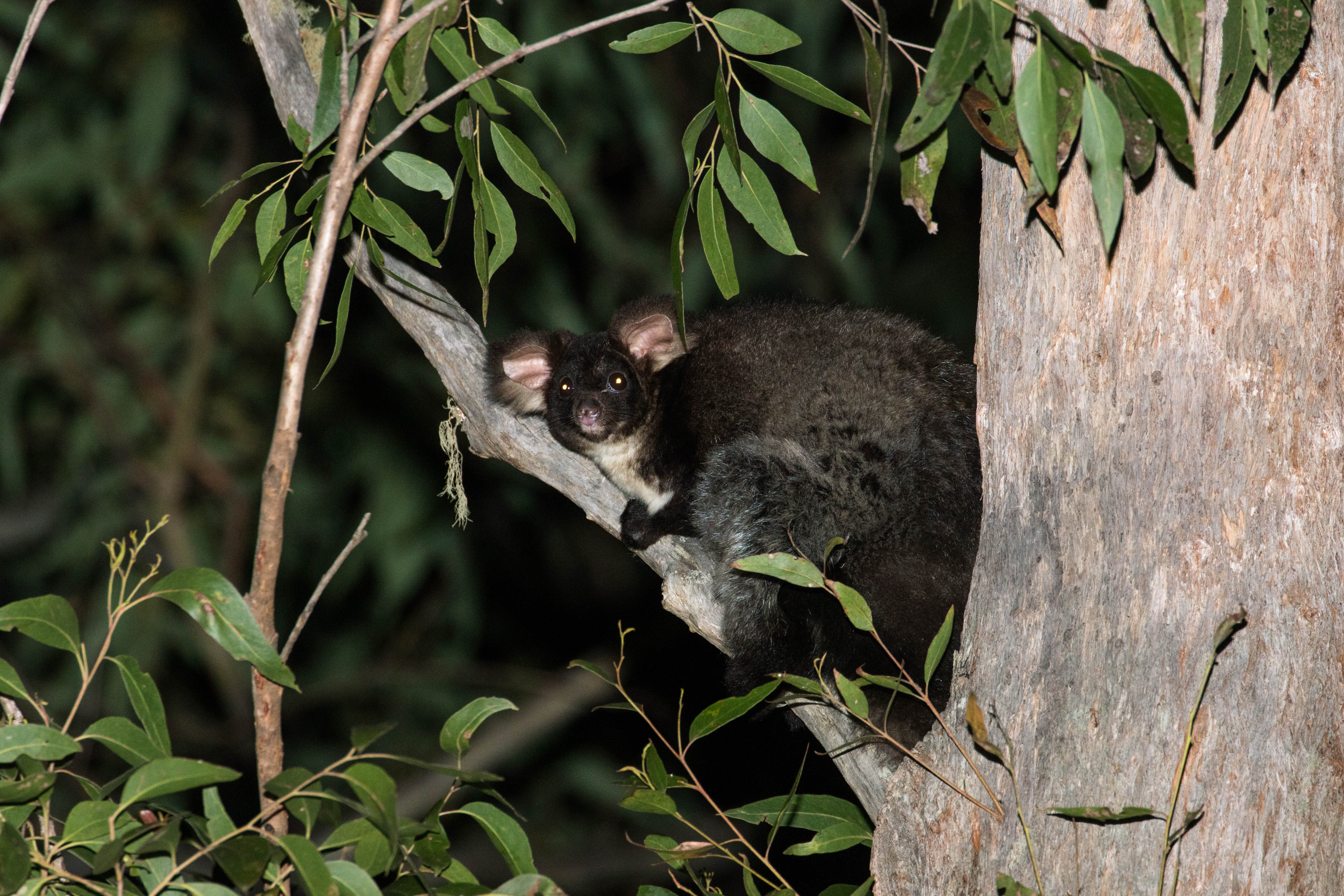
Southern greater glider on the south coast of NSW. Image credit: NCC
Members of the Bellingen Activist Network then peacefully blockaded the forest to ensure this endangered marsupial’s den was protected, a legal requirement within NSW's extremely weak regulations on logging.
“This is evidence of the importance of citizen scientists and direct action in protecting our precious forests from illegal logging” NCC CEO Jacqui Mumford said today.
This voluntary cessation of logging comes after the Environment Protection Authority last month prosecuted Forestry Corporation for destroying 17 trees in a protected area within Coopernook state forest on the mid-north coast.
Forestry Corporation admitted to the illegal logging charges and agreed to pay a $500,000 enforceable undertaking.
“Despite being described by court judges as “reckless”, the NSW Government continues to throw public funds at this state-owned corporation Mumford said.
“Forestry Corporation has been fined 12 times in the past three years for illegal logging activities, with fines and legal costs totalling at least $1,322,700 since 2020. There are also 21 investigations still pending.[1]
“There are also two current stop work orders for logging operations on the south coast (Flat Rock and Tallaganda state forests) due to protocol breaches relating to logging endangered Greater Glider den trees.
“It’s evident that court proceedings and fines are failing to keep FCNSW in bounds,”
“Judges in the Land and Environment Court have repeatedly called FCNSW a bad corporate actor that does not respect the environment and regulations which are there to protect it.[2]
“FCNSW cannot be trusted with our precious native forests. It’s time for the NSW Government to protect these forests from logging and move to a 100% plantation-based timber industry.
“Native forest logging is on its way out. Western Australia and Victoria’s native forest industry will be ending at the start of 2024. NSW is lagging and it’s time for a transition plan” Mumford said.
Background
[1] There are currently 21 ongoing investigations into FCNSW. Link: https://www.epa.nsw.gov.au/your-environment/native-forestry/regulating/register-of-crown-forestry-investigations
As well as noting EPA statements below AND:
- Nov 2023 — $500,000 — $500,000 worth of compensation for illegal removal of 17 protected trees at Coopernook State Forest in 2021 - "We are disappointed that we did not comply (with environmental regulations) on this occasion and we are sorry," hardwood forests general manager Daniel Tuan said in a statement
- Nov 2023- Stop Work Order for Flat Rock state forest
- Nov 2023- Three consecutive stop work orders for Tallaganda state forest
- Aug 2023- Shallow Crossing 211A incursion into threatened species exclusion zones
- Apr 2023- Temporary stopping of operations at Doubleduke state forest to protect giant trees scheduled to be illegally logged.
- Jul 2023- EPA launches another FCNSW prosecution for alleged forestry breaches
- Jul 2022 — $285,600 — Forestry Corporation NSW fined for forestry activities near Coffs Harbour
- Jun 2022 – $230,000 — FCNSW fined $230,000 by Land and Environment Court
- Jun 2022 — $15,000 — EPA fines FCNSW $15,000 for allegedly failing to comply with post-fire conditions South Brooman State Forest.
- Jun 2022 — EPA prosecutes FCNSW for alleged breaches of post-fire conditions at Yambulla State Forest, near Eden after the 2019/20 bushfires.
- Jun 2022 — $138,000 – Wild Cattle Creek State Forest
- Apr 2022 — $45,000 — Mogo State Forest
- Feb 2021 — $15,000 — Olney State Forest
- Feb 2021 — $30,000 — Ballengarra State Forest
- Mar 2021 — $33,000 — Boyne, Bodalla and Mogo State Forest
- Apr 2020 — $31,100 — Tantawangalo and Bago State Forest
[2] Quotes from NSW Land and Environment Court;
Environment Protection Authority v Forestry Corporation of NSW [2022] NSWLEC 75
At paragraph 59: “This past record of lower level infringements demonstrates, I am satisfied, that, in the past, the Corporation cannot be regarded as having been a good corporate citizen.”
At paragraph 70: “In the past five years, twenty-four official cautions and thirteen penalty notices have been issued to Forestry Corporation by the EPA.”
Environment Protection Authority v Forestry Commission of New South Wales [2013] NSWLEC 101
At paragraph 155: “The evidence of past convictions for environmental offences does not demonstrate that Forestry NSW has been a good corporate citizen with respect to environmental statutory compliance.”
Director-General, Department of Environment, Climate Change and Water v Forestry Commission of New South Wales [2011] NSWLEC 102
Justice Pepper found, at paragraph 100: “However, in my view, the number of convictions suggests either a pattern of continuing disobedience in respect of environmental laws generally or, at the very least, a cavalier attitude to compliance with such laws. I would attribute more weight to these past convictions than that suggested by the Forestry Commission.”
At paragraph 103: “Given the number of offences the Forestry Commission has been convicted of and in light of the additional enforcement notices issued against it, I find that the Forestry Commission's conduct does manifest a reckless attitude towards compliance with its environmental obligations.”
Forestry Corporation Ordered To Pay $104,000: Illegally Felling Habitat Trees After Black Summer Fires In Mogo State Forest
December 22, 2023: released by NSW EPA
Forestry Corporation of NSW (FCNSW) is required to pay more than $100,000 after illegally felling hollow bearing trees in Mogo State Forest on the South Coast in March 2020.
The sentence was handed down after FCNSW challenged one of three $15,000 penalty infringement notices issued by the NSW Environment Protection Authority (EPA), for breaching site-specific operating conditions following the damaging 2019/20 black summer bushfires.
Under these conditions, FCNSW was required to permanently retain all hollow-bearing trees to prevent the loss of habitat for hollow-dependent species.
Following the challenge, FCNSW was found guilty of the offence under the Forestry Act 2012 in Bega Local Court in November 2023. The Magistrate was satisfied all four trees had visible hollows before they were cut down.
The sentence was delivered in Batemans Bay Local Court yesterday, convicting FCNSW and ordering them to pay a fine of $20,000 and $84,340 to the EPA as legal costs.
EPA Executive Director of Regulatory Operations Jason Gordon welcomed the sentence and said the court’s decision supports the EPA’s position that the visibility of tree hollows must be assessed broadly, and requires scrutiny from several different angles.
“All hollow-bearing trees, living or dead, are important because they provide vital habitat for endangered and native species,” Mr Gordon said.
“They can take decades to naturally form and provide a necessary refuge for animals from the weather and predators, as well as safe sites for roosting and breeding.
“Any decrease in the availability and variety of tree hollows can lead to a significant loss of species diversity and abundance.
“This outcome is a great result for the EPA and signifies the care needed when conducting forestry operations to comply with conditions and ensure homes for our wildlife are protected.”
In sentencing, the Magistrate said there’s no reason for a casual approach to environmental protection and the community views environmental offences as extremely serious.
The Magistrate required FCNSW to publicise the offence and the orders made against it in the Sydney Morning Herald and the Bay Post/ Moruya Examiner which would send a clear message of deterrence.
___________________________
Stop Work Order Extended In Flat Rock State Forest: Forestry Corporation Of NSW About To Clear Southern Greater Glider Homes
December 22 2023
The NSW Environment Protection Authority (EPA) has extended a Stop Work Order for Compartment 34A in Flat Rock State Forest near Ulladulla that prevents harvesting by Forestry Corporation of NSW (FCNSW).
The Stop Work Order has been extended as the EPA considers FCNSW measures to search for and identify protected species and their habitat have not been conducted in a competent manner.
This follows a report by FCNSW to the EPA that their drone survey did not find any endangered Southern Greater Gliders, however an EPA drone survey undertaken since the first Stop Work Order was issued found four endangered Southern Greater Gliders in the unharvested part of Compartment 34A.
The EPA’s drone survey found a total of 10 endangered Southern Greater Gliders and 55 other smaller Gliders, including feather-tailed gliders and sugar gliders, in and around the compartment that was being ''harvested''.
The Flat Rock Stop Work Order was first issued on 14 November 2023 after an EPA inspection identified an endangered Southern Greater Glider den tree within 30 metres of active logging. The EPA understands that no den trees were identified by FCNSW prior to logging commencing.
The density of Gliders found during the EPA survey suggests further den trees may be present. To date no additional den trees have been located, however further EPA surveys are planned in January 2024.
Southern Greater Gliders rely on den trees and the surrounding habitat for shelter, feeding and movement. Once den trees are identified they are required to be protected with a 50 metre exclusion zone around them.
Under the Coastal Integrated Forestry Operations Approval, FCNSW is required to plan, implement and conduct forestry operations in a competent manner. The EPA is continuing to work with FCNSW regarding their survey methodology.
The EPA’s investigation is ongoing.
I collect marsupial poo. A crack team of volunteers across Australia helps me out
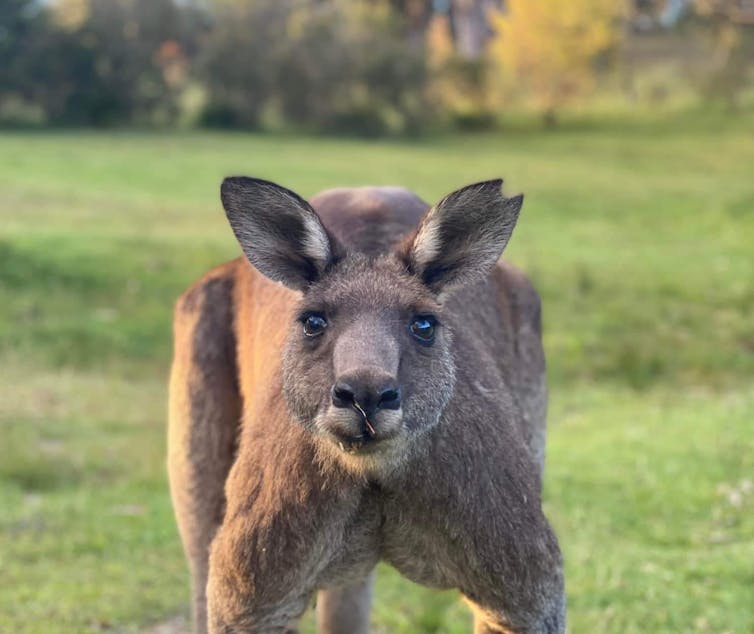
I thought convincing my husband of the merits of my returning to study just as he had retired would be a very tricky sell. So his enthusiasm for the idea caught me by surprise.
He helpfully suggested several interesting topics: sea turtles, dugongs and coral reefs. If it involved a boat in a warm climate, he was behind me 100%.
But if you are going to dedicate three and a half years to studying a single topic, it really needs to excite you, and my interest in gut bacteria and health won out. Much to my hubby’s dismay, I chose to immerse myself in the subject of marsupial poo – and in retaliation he started calling me Dr Poo.
Fortunately, I am not alone in my faecal fetish. As any wildlife carer can tell you, monitoring what comes out of an animal is a vital part of keeping an eye on its health.
So when I set out to find volunteers to collect poo from wild and captive marsupials – specifically eastern grey kangaroos, swamp wallabies, red-necked wallabies, bare-nosed wombats, and ringtail and brushtail possums – over an area from Queensland to Tasmania, it was mainly wildlife carers who answered the call.
The Marsupial Microbiome Poop Troop
I enlisted a core group of around 20 people who, every season, dutifully went out in all weathers, armed with their forceps and zip-lock bags, to select fresh pellets from their in-care residents or wild animals that passed through. Then they filled in the paperwork, carefully labelled the bags and stored them in freezers until they could be posted in special temperature-controlled packaging to the university for genetic analysis.
We did this to establish a baseline of what the normal wild gut microbiome looks like in different animals in different areas at different times of the year. This lets us recognise if there is an imbalance in captive animals that can be addressed and prevented by changing diet or introducing supplements.
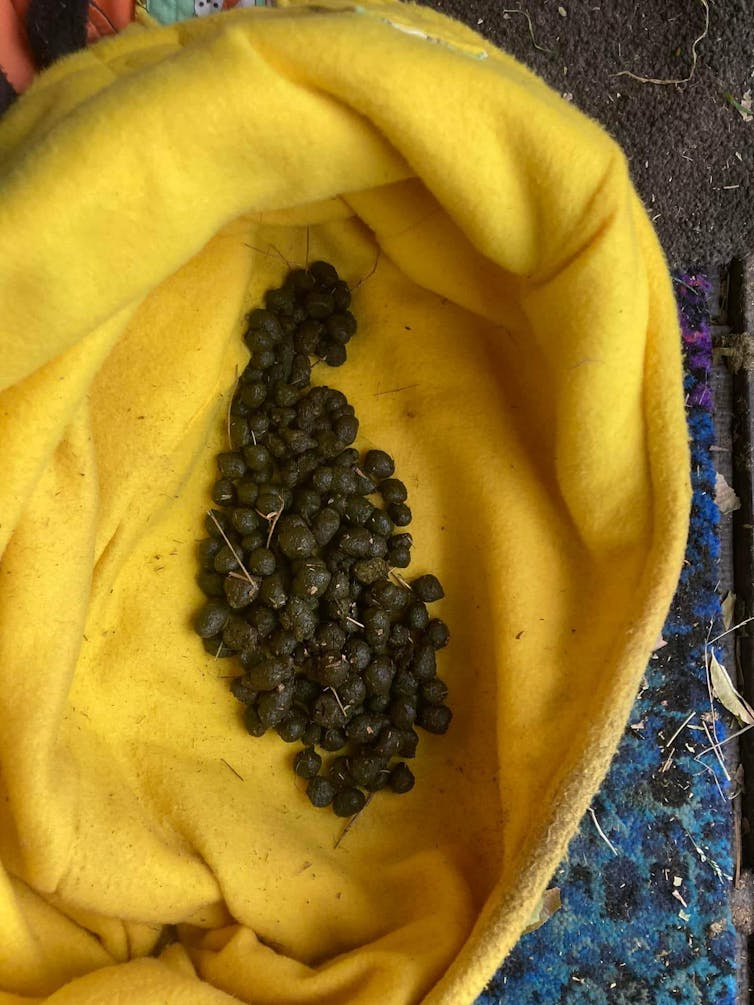
To aid my communication with these wonderful volunteers, I started a Facebook group page which became known as the Marsupial Microbiome Poop Troop. And it has some colourful members.
There is Kate, who obtains the freshest wombat poo by stalking wild wombats in her local reserve until they produce the goods. Don’t try this at home. Kate has serious wombat-whisperer skills.
There’s Darryl, who was devastated when the roof blew off his house in a storm and he was without power for two weeks. Not for his wrecked house or loss of possessions, but because his collection of possum poo thawed and he had to throw it away and start again.
Julie wins the prize for most prolific collector. Her poo parcels are the largest by far, and cover quite a few species. The supervisor of the university’s stores, who receives the poo parcels, is not always a fan of Julie’s efforts. He must have highly attuned olfactory senses as he routinely sends me emails announcing the arrival of more “animal excrement” or “malodorous packages” for immediate collection.
Saving Orphaned Joeys
While it all sounds like fun and games, the research we do with the collected poo has serious potential to save many marsupial lives. We have a particular focus on young orphaned joeys.
Whether their mothers were hit by cars, attacked by dogs, or died of other causes, the joeys arrive at wildlife shelters stressed, often injured, and generally cold and hungry. Because marsupials are born so undeveloped – and normally spend a long time in their mother’s pouch – they require an extended period in care when orphaned.
The gut microbiome of these “pinky” joeys is equivalent in development to that of premature human babies. It is still being established at this crucial time, via the mother’s milk, environmental conditions in the pouch, cleaning and grooming.
The sudden loss of parental care, coupled with the stress of being in captivity and a complete change of diet, can do a great deal of harm to the gut microbiota. This can leave the joey open to infections, diarrhoea and dehydration, which can be fatal.
If it were possible to fix this imbalance, the success rate of rearing orphaned marsupials would rise. Their improved general health should mean greater numbers of animals successfully reintroduced to the wild.
While the animals involved in this study are considered “common”, the same principles may be applied to endangered species held in captive breeding programmes once it has been shown to work on the more prolific species.
Without the help of the Poop Troop volunteers, it would have been impossible to sample so widely and consistently. The remaining poo will be kept frozen and made available to future researchers, so these wonderful people have, through their dedication and persistence, made a real contribution to marsupial microbiome research that will continue to help wildlife in the future.![]()
Angela Russell, Graduate researcher PhD candidate, La Trobe University
This article is republished from The Conversation under a Creative Commons license. Read the original article.
To protect endangered sharks and rays, scientists are mapping these species’ most important locations
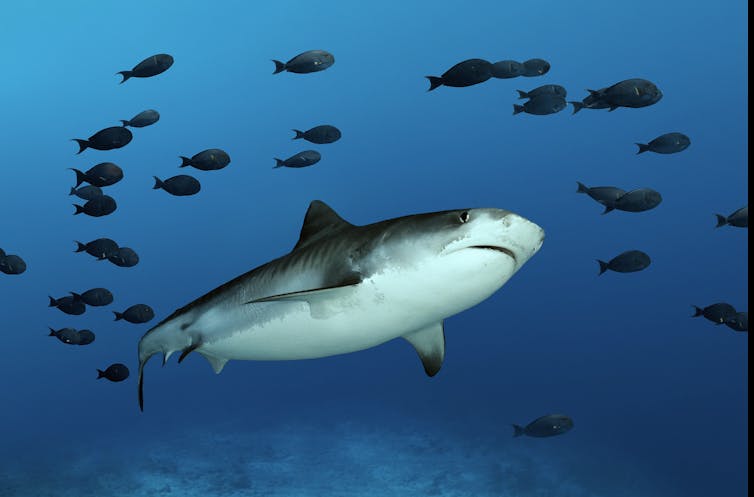
All of the saltwater bodies on Earth make up one big ocean. But within it, there is infinite variety – just ask any scuba diver. Some spots have more coral, more sea turtles, more fish, more life.
“I’ve been diving in many places around the world, and there are few locations like the Fuvahmulah Atoll in the Maldives,” Amanda Batlle-Morera, a research assistant with the Important Shark and Ray Areas project, told me. “You can observe tiger sharks, thresher sharks, scalloped hammerheads, oceanic manta rays and more, without throwing out bait to attract them.”
Identifying areas like Fuvahmulah that are especially important to certain species is a long-standing strategy for protecting threatened land animals, birds and marine mammals, such as whales and dolphins. Now our team of marine conservation scientists at the Important Shark and Ray Areas project is using it to help protect sharks and their relatives.
I am a marine conservation biologist and the project’s communications officer. This initiative is working to identify locations that are critical for sharks and rays, so that these zones can be flagged for future protection or fisheries management measures.
Where The Sharks Are
Sharks and their relatives are some of the most imperiled animals on Earth: More than one-third of all known species are threatened with extinction. Many of these animals play vital roles in their ecosystems. Losing marine predators can destabilize entire food webs and the ecosystems that these food webs depend on.
In recent years, the management of sharks and their relatives, rays and chimaeras, has largely focused on curbing the impacts of fisheries and trade on these species. But their populations are still declining rapidly, so new strategies are needed.
To effectively protect these important and threatened animals, my colleagues and I believe it is vital to identify and protect parts of the ocean, plus some freshwater habitats, that are especially significant for their lives. Some areas, for example, are important migratory pathways, or feeding or mating grounds, or places to lay eggs.
Our team has created a list of technical criteria so that zones around the world can be examined and potentially designated as Important Shark and Ray Areas. We modeled these criteria on similar approaches that are already in use, such as important marine mammal areas, which we adapted to the specific needs and biology of sharks and their relatives.
We are now hosting a series of 13 regional workshops around the world and inviting local experts to nominate preliminary areas of interest for evaluation by our team and an independent expert review panel. So far, we’ve completed three workshops, one focusing on the Central and South American Pacific, another on the Mediterranean and Black seas, and the third on the Western Indian Ocean, with a workshop for Asia planned for early 2024.
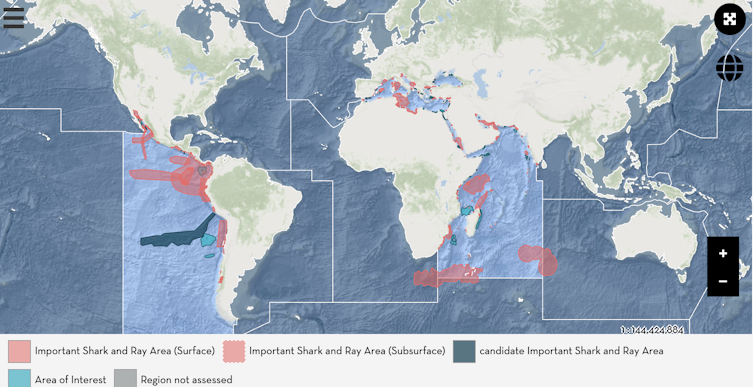
After the workshops and expert reviews, each finalized Important Shark and Ray Area will be added to our e-atlas, which can be viewed online. Each region’s Important Shark and Ray Areas are published in a formal compendium, and the whole global process will be repeated every 10 years. This cycle will allow us to consider changes to areas that have already been mapped, such as new fishery policies or impacts from climate change, and to take into account new research that can help us identify new areas.
Informing Conservation Policies
We recently published our Mediterranean and Black seas region compendium, which reflects input from over 180 experts from around the region. It identifies 65 Important Shark and Ray Areas that range widely in size and habitat type. Our western Indian Ocean compendium includes over 125 areas.
These zones are important for species like the critically endangered blackchin guitarfish (Glaucostegus cemiculus), as well as heavily fished shark species like the common smoothhound shark (Mustelus mustelus).
Some of these areas, such as Benidorm Island off Spain’s Mediterranean coast, are in shallow coastal zones. Others, like the Cocos-Galapagos Swimway off Costa Rica and Ecuador, reach into deep ocean waters.
The smallest area identified so far, Israel’s Palmahim brine pools in the southeast Mediterranean, measures just 0.03 square miles (0.09 square kilometers) – about half the size of New York City’s Grand Central station. Blackmouth catsharks (Galeus melastomus) breed and lay eggs there, and threatened angular rough sharks (Oxynotus centrina) feed there, including on blackmouth catshark eggs.
The largest area is the Strait of Sicily and Tunisian Plateau, which extends over 77,000 square miles (200,000 square kilometers) – about the size of Great Britain – in the Mediterranean between Sicily, Malta, western Libya and Tunisia. This zone supports at least 32 species of sharks, rays and chimaeras, including many that are at risk of extinction, in habitats ranging from shallow seagrass beds to deep ocean trenches.
Identifying a location as an Important Shark and Ray Area does not mean it will automatically be protected. Our goal is to inform countries’ existing spatial planning and fisheries management processes and other conservation planning. Eventually, these zones may be incorporated into marine protected areas or other types of ocean preserves.
Sharks and their relatives need human help to survive and maintain their important biological roles in the ocean. Through the Important Shark and Ray Areas project, hundreds of scientists and other experts are helping to identify special places for these species that we believe need some extra attention.
Dr. Rima Jabado, chair of the IUCN Species Survival Commission Shark Specialist Group, contributed to this article.![]()
David Shiffman, Faculty Research Associate in Marine Biology, Arizona State University
This article is republished from The Conversation under a Creative Commons license. Read the original article.
Coal will be all but gone by 2034 under Australia’s latest energy roadmap
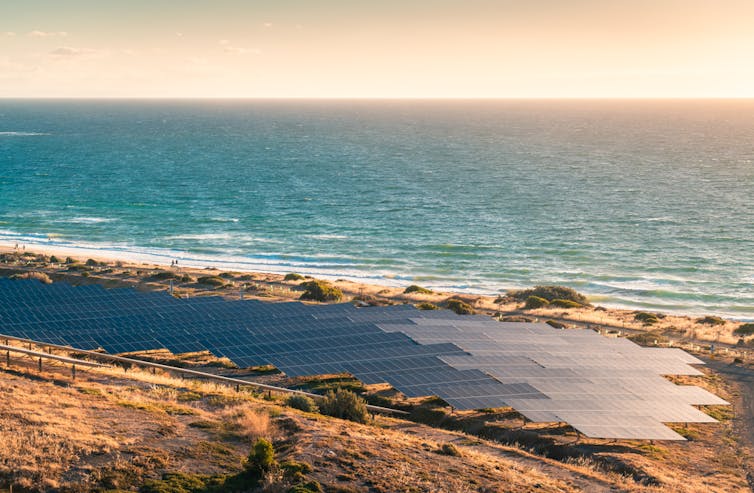
Australia’s coal power stations will all close in 2038 – five years earlier than previously expected – and variable renewable energy capacity will need to triple by 2030 and increase sevenfold by 2050.
These are two key findings in the latest roadmap for Australia’s largest grid and electricity market, the National Electricity Market. The draft of a document known as 2024 Integrated System Plan, was released today by the Australian Energy Market Operator (AEMO). It lays out a comprehensive path for the next 20 years as we wean ourselves off coal and embrace renewables firmed by storage.
What Is This Plan And Why Does It Matter?
AEMO ensures our energy market runs smoothly, including planning for the transmission needs of the future – and that’s where this blueprint comes in.
Australia’s main grid has historically been based on connecting cheap but polluting coal plants to large cities. As coal plants retire, we need a different grid, drawing renewable power from many different locations, while utilising storage.
Every two years, AEMO releases an updated plan, drawing on detailed modelling and consultation across the energy sector.
Through this process, it arrives at an “optimal development path”. That’s energy-speak for the cheapest and most effective mix of electricity generation, storage and transmission able to meet our reliability and security needs while also supporting government emissions reduction policies in the long-term interests of consumers.
Changes to our national electricity laws to include emissions reductions in its objectives came into effect in November. In response, AEMO is now only using scenarios in line with Australian Governments’ emission reduction targets.
The path laid out in this latest plan is intended to ensure the energy transition already underway will be lower cost, resilient and pragmatic. Importantly, the plan points to where we will need to build important new infrastructure – especially transmission lines – to deliver the new electricity system.
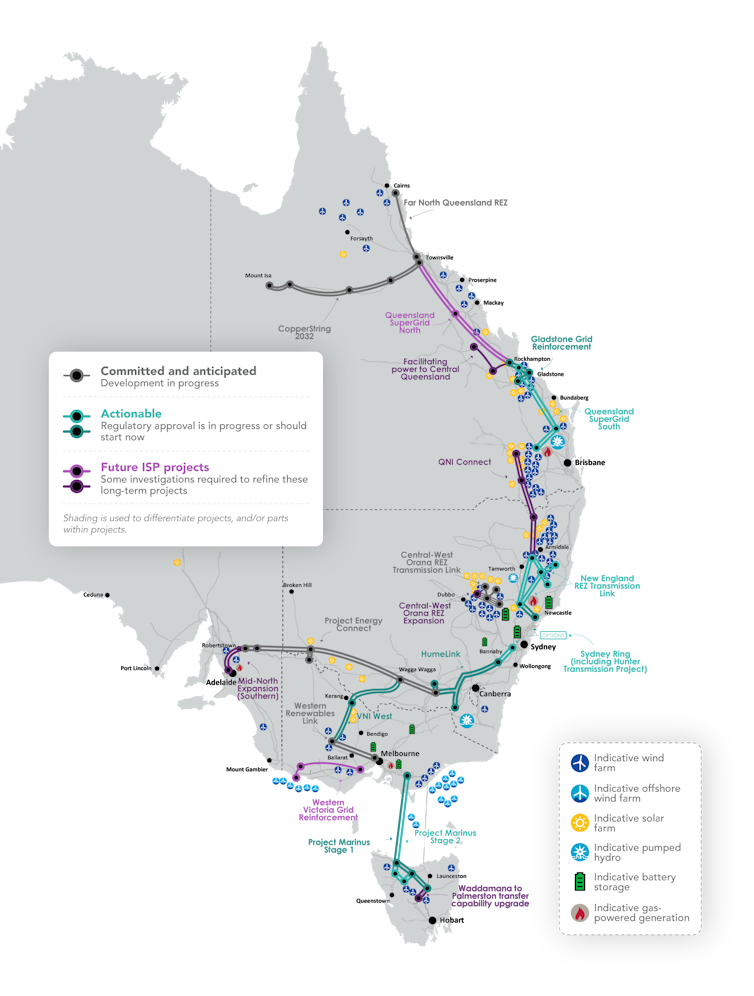
What Does The Update Say?
The 2024 plan explores three possible scenarios:
- Step Change, which meets Australia’s emission cut commitments in a growing economy
- Progressive Change, reflecting slower economic growth and energy investment
- Green Energy Exports, framed around very strong industrial decarbonisation and surging low-emission energy exports.
The report suggests the step change scenario is the most likely of these three, closely followed by progressive change.
So what would we see under the step change scenario?
Change – and plenty of it. This scenario forecasts the retirement of 90% of Australia’s remaining 21 gigawatts of coal generation by 2034-35, with the entire fleet retired by 2038. This timeframe is five years earlier than envisaged in the 2022 integrated system plan.
AEMO notes the departure of coal from the grid could be faster still, pointing to higher operating costs, reduced fuel security and high maintenance costs as well as more competition from renewable energy in the wholesale market.

To manage the farewell to coal alongside increased electricity demand from population growth and electrification of transport, we will need to add about 6 GW of grid-scale renewable capacity every year in the coming decade. That sounds like a lot, but we’re currently rolling out almost 4 GW a year. The plan also predicts a major increase in rooftop solar – 18 GW more than in the previous plan.
AEMO’s 2024 plan suggests close to 10,000km of new transmission lines will be needed to deliver this least-cost system by 2050. There is slightly less transmission here compared to the previous plan, due to higher transmission costs, and more power from sources requiring less transmission. Since the last plan, some minor transmission projects have been built, but the timelines for most larger projects have been pushed back.
These delays are partly due to community opposition to new transmission lines. AEMO has now explicitly flagged social license as a key challenge to delivering the new energy system.
Firming And Gas
The 2024 plan calls for a quadrupling of the grid’s firming capacity, which smooths out peaks and dips in renewable generation and reduces the chance of energy shortages for consumers.
This will come from grid-scale batteries, pumped hydro, coordinated consumer batteries used as virtual power plants – and, perhaps controversially, gas-powered generation.
Under the plan, there will be 50 GW (and 654GWh) of dispatchable storage, as well as 16 GW of flexible gas.
That’s a significant boost to gas capacity, which was projected to be just over 9GW of gas capacity under the last plan.
Why do we need this capacity? AEMO pictures these gas plants not as day-in, day-out generators, but as a infrequently used backup to ensure the grid stays reliable and secure.
So this increase in gas power capacity doesn’t actually mean a increase in gas generation, or the amount of gas burnt. In fact, AEMO projects a significant decline in gas power over the short to medium term.
But from 2033, as the last coal is burned in our coal plants, AEMO does expect an increase in gas generation. This may be fossil gas, but some may be hydrogen or biomass-derived gas.
Shifting from regular use to infrequent use as a backup will pose challenges for the existing fossil gas network, AEMO points out.
Does this threaten the clean energy transition? No. If we can banish almost all fossil fuel generation from our main grid by 2034, we will be doing well. Even if this were all fossil gas – which it won’t be – the emissions intensity of Australia’s main grid would be miniscule – around 0.01 tonnes per MWh, or 60 times lower than today. ![]()
Dylan McConnell, Senior Research Associate, Renewable Energy & Energy Systems Analyst, UNSW Sydney
This article is republished from The Conversation under a Creative Commons license. Read the original article.
‘Rights of nature’ are being recognised overseas. In Australia, local leadership gives cause for optimism
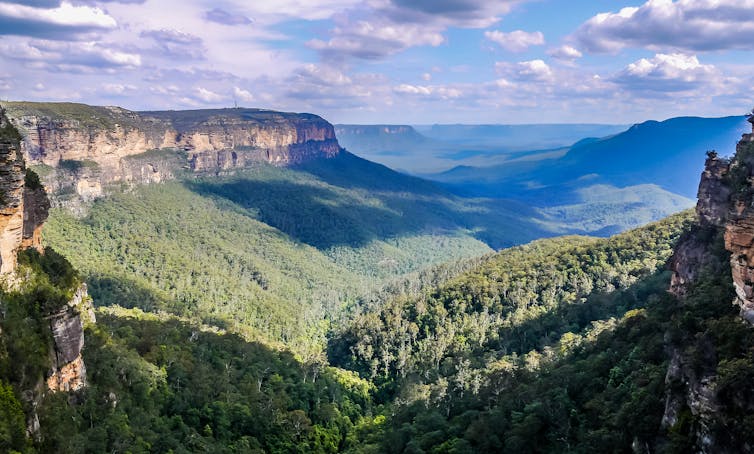
As each day passes, the need to protect Australia’s environment grows more urgent. As noted in the most recent State of Environment Report in 2021, we are increasingly turning to “measures of last resort” to prevent species extinctions and the collapse of ecosystems.
In legal theory, the “rights of nature” acknowledges all Earth’s natural elements as having an inherent right to exist and flourish.
Developments towards recognition of the rights of nature have attracted international attention. In some countries, they have come about through legislative reform, constitutional amendment and the courts.
In Australia, federal, state and territory parliaments have not shown much appetite for introducing the rights of nature principle into legislation. The Murray-Darling River System (Rights of Nature) Bill 2021 in New South Wales and the Rights of Nature and Future Generations Bill 2019 in Western Australia raised the possibility, but did not progress. One exception is Victoria, where a law protecting the Yarra river and its First Nations custodianship was passed in 2017.
Around the globe, lawyers and policy makers have been engaged in finding ways the law can contribute to the protection of ecosystems. Conferring ecosystems with rights is one strategy we can use to prevent species extinctions and ensure a “voice” for nature.
Rivers As Legal Persons
Central to these efforts has been realising the rights of nature based on legal personhood, which confers entitlements and duties on an entity. There are benefits, complexities and risks involved in this approach.
Indeed, the use of legal personhood as a mechanism to give natural entities like rivers or wetlands rights has been criticised from a First Nations perspective.
At a time when we are seeing threats to the environment turn into catastrophes with alarming frequency, the law can be an inflexible tool and slow to respond.
In Australia, the rights of nature idea is emerging in social and political debate. Ultimately, the success of the rights of nature vision depends on effective broad legal frameworks combined with local action.
Sometimes, we can overlook the significant role local-level reform can play. So it is encouraging to see communities and councils leading the way.
The rights of nature principle provides a framework a local community can use when wanting to show its respect for nature and ensure due care for the local ecosystem.
Two Examples Of Local Governance
Two examples of such local leadership are the Blue Mountains City Council in NSW and the Shire of Augusta Margaret River local government area in WA.
In 2021, the Blue Mountains City Council received a Center for Democratic and Environmental Rights Local Recognition Award for its commitment to embedding rights of nature principles into its operations. The rights of nature principle is reflected in the Blue Mountains Community Strategic Plan 2035: “natural environment is valued for its intrinsic nature and role in maintaining all forms of life”.
In rights talk, “intrinsic value” means that a thing or being has value “in itself”, or “for its own sake”.
For example, a tree has intrinsic value for its own sake because it is a living thing and the tree’s life has value in and of itself. The tree’s value is not based on how it can be used by humans.
With some exceptions, Western philosophers have confined intrinsic value to human beings alone. The same notion permeates the law. Yet recognising the intrinsic value of other species and our broader environment is a pathway to ethical reflection and has the potential to transform our perspective.
In Western Australia, following community advocacy, the Shire of Augusta Margaret River has also shown leadership in this regard. Among other things, the shire’s May 2023 Overarching Sustainability Policy requires due regard for “the needs, rights and wisdom of Traditional Custodians” and “the rights of nature to exist, thrive and evolve”.
Caring For Country
We believe these local examples give cause for optimism and a source of “slow hope”. And First Nations leadership sits at the heart of these developments. Community-led approaches are key to caring for Country, something that’s also noted in the latest State of the Environment report.
Best-practice local policy development can actively enable caring for Country and integrate it into the regulatory conversations that inform the operational plans of councils.
For the CSIRO First Nations Australian Peoples led research initiative Our Knowledge, Our Way, connection to Country is a cultural must. For First Nations peoples, Country already has “rights”: to be cared for, respected and listened to. This is a relationship that arises organically and is entwined in the experience of being human.
From a Western perspective, enshrining rights of nature thinking in environmental stewardship at all levels of society is something environmental ethicists describe as essential.
Local communities can draw upon these two convergent lines of thinking to inform culturally sensitive collaboration. While higher levels of government are yet to introduce the principle of rights of nature into legislation, leadership at local levels is showing us it can be done. State and federal governments should take note.![]()
Alexandra McEwan, Lecturer: Law, CQUniversity Australia; Michael Hewson, Senior Lecturer Geography, and Rolf Schlagloth, Koala Ecologist, CQUniversity Australia
This article is republished from The Conversation under a Creative Commons license. Read the original article.
Climate change and nature loss are our biggest environmental problems - so why isn’t the market tackling them together?
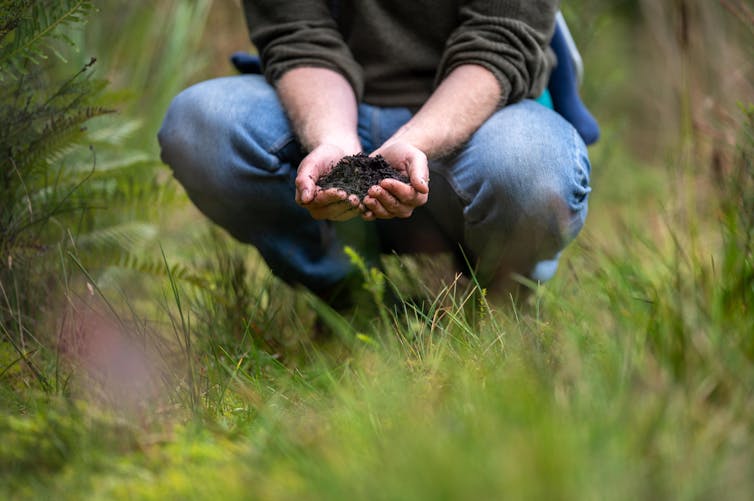
Climate change and biodiversity loss are arguably the greatest environmental challenges the world faces. The way we use land is crucial in finding solutions to these problems. In theory, actions such as revegetation and avoiding land clearing can tackle both problems at once – for example, by simultaneously storing carbon in plants and providing habitat for animals.
Sometimes when taking these actions, however, carbon storage is prioritised at the expense of biodiversity. But that need not be the case. Our new research suggests we can act to boost the climate and nature at the same time.
We examined a financial incentive scheme in South Australia’s Mount Lofty Ranges. We found action by farmers to restore native woodlands on their properties also stored carbon in the vegetation. This carbon abatement, if converted into carbon credits, could have paid the farmers for their restoration activities. It suggests existing carbon markets can pay for biodiversity conservation.
To date, few market-based biodiversity schemes in Australia have been designed to reward farmers for delivering these twin benefits – and the same is true for carbon markets. This is a huge missed opportunity for both the climate and nature.
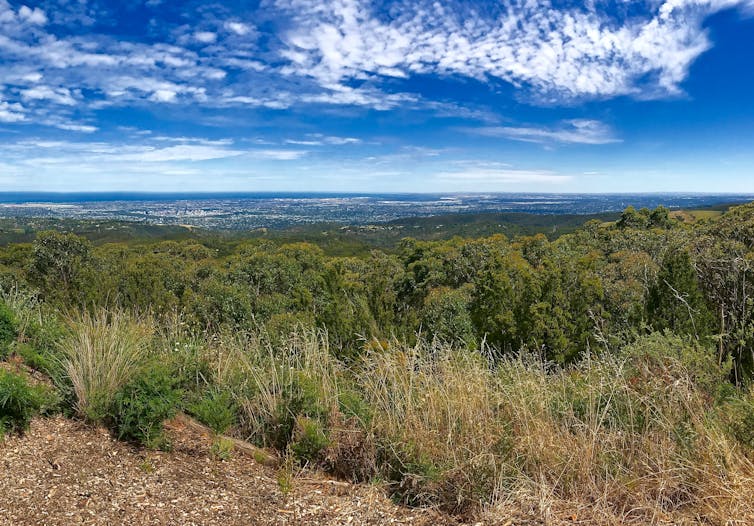
Carbon Markets Don’t Always Help Nature
Carbon markets encourage farmers and other land managers to help mitigate climate change, through activities such as planting trees or avoiding land clearing. These activities are rewarded with “credits” which can then be sold to buyers wanting to reduce their carbon footprint, such as a polluting company. Similar schemes are emerging for biodiversity conservation.
Efforts to tackle climate change through land-based activities are welcome. But these interventions do not always lead to good biodiversity outcomes. For example, a particular tree species planted to store carbon may not be useful to animals in the area. It may even cause problems such as spreading weeds, which can add to biodiversity decline.
In Australia, the decline of native species and ecosystems is well-documented. The decline is marked in the eastern Mount Lofty Ranges where native vegetation – mostly eucalypt forests and woodlands – has been reduced to about 10% of its former extent.
It means many animal species in the Mount Lofty Ranges are falling in numbers. They include birds such as the diamond firetail, superb fairy-wren and purple-crowned lorikeet.
Reversing this decline requires restoring and protecting the native vegetation that feeds and homes these animals. We wanted to know if carbon markets could pay for such work.
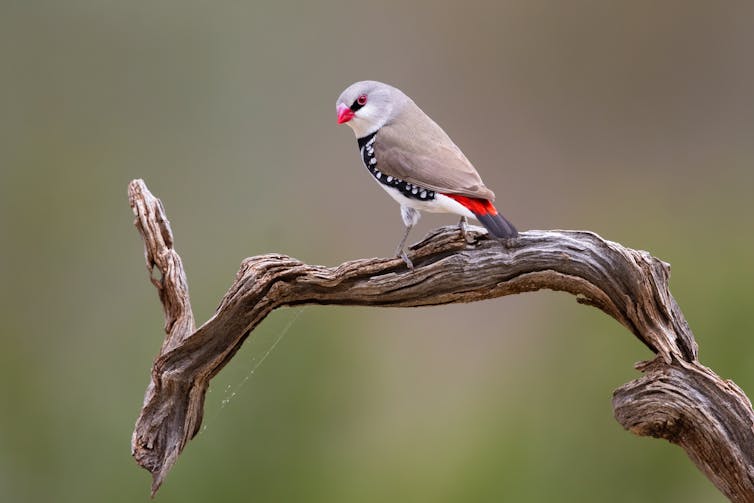
What We Found
We examined a payment scheme, known as BushBids, for farmers who manage the region’s degraded woodlands. It was funded by the federal government and administered by the state government.
The scheme, which began in 2006, invited private landholders to tender for ten-year contracts to undertake certain restoration activities. These included retaining fallen logs (instead of collecting them for firewood), limiting stock grazing, controlling weeds, and reducing grazing by both feral animals and overabundant native animals such as kangaroos. Such activities can lead to more carbon being stored in vegetation, debris and soils.
Monitoring showed the activities restored some components of the woodland systems – most notably the diversity of native plant species.
The activities also led to additional carbon being stored in the woodlands. Australia’s carbon market does not currently recognise this type of carbon gain.
But what if it did? We calculated how much carbon was stored by the restoration of degraded native vegetation across 12 sites. We then calculated how much of the cost of this work would have been covered by payments for that carbon storage.
We found the additional carbon stored in the woodlands could pay all, or a substantial proportion, of the price of restoring degraded native vegetation. The exact proportion covered depends on factors such as the carbon price, rainfall and rate of vegetation recovery.
Implications For Australia
Our study shows how the price of restoring native vegetation for biodiversity conservation could be covered by trading carbon credits created at the same time. This could be achieved either with separate markets, or markets that include both biodiversity and carbon.
But using markets for both nature repair and carbon storage will only work if the markets are designed well.
That means changes to Australia’s existing carbon market may be required. Research has cast doubt over the integrity of more than half the credits generated in that market. It found under one particular method – regrowing native forests to store carbon from the atmosphere – most carbon storage for which credits were issued either had not occurred, or would have occurred anyway.
Separately, the federal government has recently passed legislation to establish a biodiversity scheme known as the Nature Repair Market. For this scheme to avoid making the same mistakes as the carbon scheme, it should involve methods and standards that lead to the right kinds of biodiversity restoration in the right places.
This means focusing on which species and ecosystems need protection. For example, it should include not just those species listed as threatened with extinction, but species declining in their strongholds, and where the decline of a species would have broader impacts such as damage to agriculture.
Australian farmers have demonstrated that they can restore degraded ecosystems in a cost-effective way – and they should have better access to carbon funding to do it. Done right, this can be a huge win-win for both nature and the climate.![]()
Patrick O'Connor, Associate Professor, University of Adelaide and Anthelia Bond, Research Fellow, University of Adelaide
This article is republished from The Conversation under a Creative Commons license. Read the original article.
Laundry is a top source of microplastic pollution – here’s how to clean your clothes more sustainably
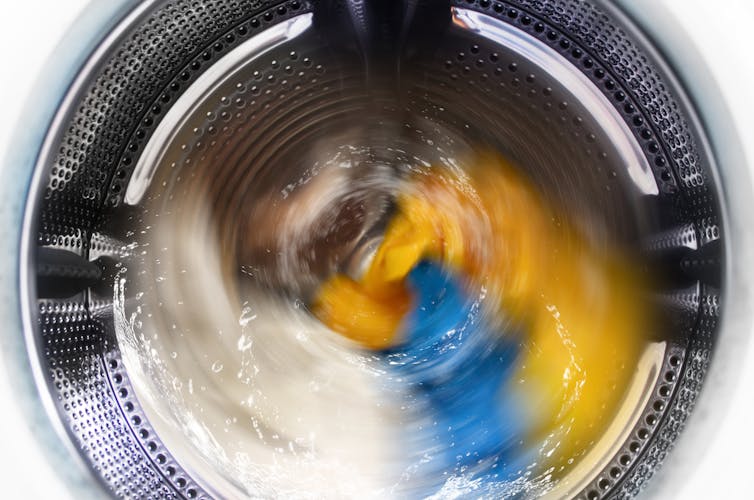
Microplastics are turning up everywhere, from remote mountain tops to deep ocean trenches. They also are in many animals, including humans.
The most common microplastics in the environment are microfibers – plastic fragments shaped like tiny threads or filaments. Microfibers come from many sources, including cigarette butts, fishing nets and ropes, but the biggest source is synthetic fabrics, which constantly shed them.
Textiles shed microfibers while they are manufactured, worn and disposed of, but especially when they are washed. A single wash load can release several million microfibers. Many factors affect how many fibers are released, including fabric type, mechanical action, detergents, temperature and the duration of the wash cycle.
My research focuses on coastal ecology and water pollution, including work in New York and New Jersey marshes and estuaries that are heavily affected by human activities. Here are some things to know about reducing microplastic pollution from your washing machine.
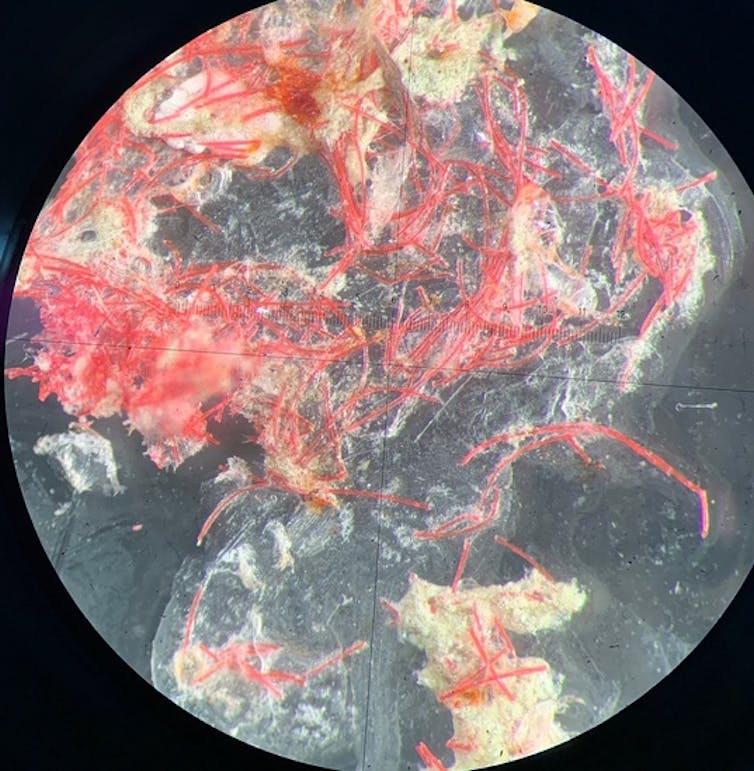
From Fabric To Water And Soil
Once garments release microfibers in washing machines, the fibers enter the wastewater stream, which generally goes to a wastewater treatment plant. Advanced treatment plants can remove up to 99% of microfibers from water. But since a single laundry load can produce millions of fibers, treated water discharged from the plant still contains a huge number of them.
Microfibers that are removed during treatment end up in sewage sludge – a mix of solid materials that is processed to remove pathogens. In many cases, treated sewage sludge is applied to soil as a fertilizer. This allows microfibers to enter air and soil, and to be transferred to soil organisms and up the terrestrial food web or taken up by crops.
Microplastics that wash into rivers, lakes and bays can have many harmful effects. They may be consumed by fish and other aquatic animals, affecting their biochemistry, physiology, reproduction, development or behavior. These microplastics contain chemical additives, including substances like phthalates and bisphenol A that can leach out and may have health effects in humans and animals, including effects on the endocrine system.
Textile microfibers also contain additional chemicals that have been shown to be toxic, such as fabric dyes, anti-wrinkle agents and flame retardants. In addition, contaminants that are present in the water, such as metals and pesticides, can stick to microplastic particles, turning them into a veritable cocktail of contaminants that may be transferred into animals that eat them
Washing More Sustainably
Not all fabrics shed microfibers at the same rate. A loosely woven fabric that feels fluffy or fuzzy, such as fleece, sheds more than a tightly woven one. While garments made of natural fibers, such as cotton and wool, would appear to be a solution, unfortunately they also shed microfibers that can pick up pollutants in the environment.
Some textile scientists and manufacturers are developing fabrics that shed less than existing ones, thanks to features such as longer fibers and coatings to reduce shedding. Meanwhile, here are some ways to reduce microfiber shedding from your laundry:
Do laundry less often. Washing full loads instead of partial loads reduces release of microfibers because garments are exposed to less friction during the wash cycle.
Use cold water, which releases fewer microfibers than hot water.
Use less detergent, which increases microfiber release.
Use a front-loading washing machine, whose tumbling action produces less microfiber release.
Dry laundry on a clothesline. Running clothes in dryers releases additional microfibers into the air from the dryer vent.
Several types of products collect microfibers in the washer before they are released with wastewater. Some are laundry bags made of woven monofilament, a single-polyamide filament that does not disintegrate into fibers. Laundry is washed while enclosed in the bag, which traps microfibers that the garments release. A study of one such product, Guppyfriend, found that it collected about one-third of released microfibers.
Another device, the Cora Ball, is a plastic ball with spines topped with soft plastic discs that capture microfibers. It reduces microfibers by about 25% to 30%, but may not be suitable for loose knits because it can snag on threads and damage clothing.

Filter Your Washwater
Several brands of external filters are available that can be retrofitted onto existing washing machines. External filters can remove up to 90% of microfibers from rinse water. Their average cost is about US$150. Owners need to clean the filters periodically and dispose of the collected microfibers with other solid waste, not down the drain, which would put them back into the wastewater stream.
In a 2021 study, researchers installed washing machine filters in 97 homes in a town in Ontario, Canada, which represented about 10% of the households in the community. They found that this significantly reduced microfibers in treated water from the local treatment plant.
Some companies are now manufacturing washers with built-in microfiber filters. France has enacted a requirement for all new washing machines to be equipped with filters by 2025, and Australia has announced that filters will be required in commercial and residential washers by 2030.
In the U.S., a similar requirement was passed by the California legislature in 2023, but Gov. Gavin Newsom vetoed the bill, saying he was concerned about the cost to consumers. An economic study commissioned by Ocean Conservancy found that filters would increase the price of washing machines by only $14 to $20 per machine. Several states are considering regulations that would require filters in washers.
In my view, requiring manufacturers to add filters that can trap microfibers to washing machines is a reasonable and affordable step that could rapidly reduce the enormous quantities of microfibers in wastewater. The eventual solution will be reengineered textiles, which won’t shed, but it will take some time to develop them and move them into clothing supply chains. In the meantime, filters are the most effective way to tackle the problem.![]()
Judith Weis, Professor Emerita of Biological Sciences, Rutgers University - Newark
This article is republished from The Conversation under a Creative Commons license. Read the original article.
Only 18% Of The Global Land Area That Is Needed For Human Well-Being And Biodiversity Is Currently Protected
January 10, 2024
An international group of researchers finds that conserving about half of global land area could maintain nearly all of nature's contributions to people and still meet biodiversity targets for tens of thousands of species. But the same priority areas are at risk of conflict with human development with only 18% of that land area protected. This research is published Nature Communications.
"Biodiversity, climate, and sustainable development cannot be considered in isolation," said lead author Rachel Neugarten at the Cornell Lab of Ornithology.
"We must also factor in nature's contributions to human well-being, including clean water, carbon storage, crop pollination, flood mitigation, coastal protection, and more."
"We face enormous challenges. With limited resources available to address climate change, biodiversity loss, poverty and water insecurity, we must be strategic and find ways to tackle more than one challenge at a time," said senior author Amanda Rodewald, Garvin Professor and Senior Director of the Center for Avian Population Studies at the Cornell Lab.
Study authors found that roughly half (44-49%) of global land area, excluding Antarctica, provides nearly all (90%) current levels of nature's services to people while also conserving biodiversity for 27,000 species of birds, mammals, reptiles, and amphibians.
But their findings also point to potential conflict because 37% of the land areas are highly suitable for development by agriculture, renewable energy, oil and gas, mining, or urban expansion.
Such high development potential, coupled with the fact that few priority areas are currently protected, means that successful conservation will require creative solutions.
Such solutions carefully accommodate human activities through sustainable use and multifunctional landscape planning, particularly in the growing areas of renewable energy and commercial agriculture.
"If designed carefully, renewable energy development can be compatible with biodiversity conservation and ecosystem services to people," Neugarten said.
"Examples of this include livestock grazing under wind farms or cultivating native pollinator gardens under solar panels. But there's a real risk that achieving renewable energy goals could conflict with nature conservation goals without careful planning."
This study is based on a global-scale optimization of land uses to identify joint priorities for biodiversity and nature's contributions to people.
"Focusing on regions of high conservation value that are also under high development pressure reveals some unlikely areas that don't always garner global conservation attention -- these include working landscapes in the southeastern United States, southern Brazil and Uruguay, southeastern Australia, and Eurasia," said Patrick Roehrdanz, Conservation International's director of climate change and biodiversity and a co-author on the study.
"These maps can help decision-makers in government, conservation NGOs, as well as donors and funding agencies to identify nature's key benefits for people and species -- benefits that are key to our survival and wellbeing," said World Wildlife Fund Global Biodiversity Lead Scientist Becky Chaplin-Kramer. "Such spatial information is critical for implementation of conservation commitments made under the Kunming-Montreal Global Biodiversity Framework as well as climate mitigation and adaptation commitments made during the recent COP28 in Dubai."
Rachel A. Neugarten, Rebecca Chaplin-Kramer, Richard P. Sharp, Richard Schuster, Matthew Strimas-Mackey, Patrick R. Roehrdanz, Mark Mulligan, Arnout van Soesbergen, David Hole, Christina M. Kennedy, James R. Oakleaf, Justin A. Johnson, Joseph Kiesecker, Stephen Polasky, Jeffrey O. Hanson, Amanda D. Rodewald. Mapping the planet’s critical areas for biodiversity and nature’s contributions to people. Nature Communications, 2024; 15 (1) DOI: 10.1038/s41467-023-43832-9
First polar bear to die of bird flu – what are the implications?
Alastair Ward, University of LeedsClimate change is a threat to polar bear’s survival. Now they have a new deadly challenge facing them: bird flu. It was recently confirmed that a polar bear from northern Alaska has died from the disease.
The current strain of H5N1 influenza has affected a far wider range of species than any previously recorded strain. This has included several mammal species, such as foxes, otters, mink, sea lions and seals (including, for the first time, seals in Antarctica). Cases have been detected in humans, too.
However, while some cases in mammals have been associated with large numbers of animal deaths, the few cases in humans have, so far, shown only mild symptoms or have been asymptomatic. So, why are there such differences between species, and what are the implications of this polar bear’s death for the wider polar bear population, as well as other large mammals and humans?
Influenza viruses are highly adaptable. Their relatively simple genetic code not only changes at random via mutation in the same way as truly living organisms, but also via reassortment. This is where closely related viruses that infect the same host cell exchange genetic material to produce novel genomes. This can lead to greater adaptation for invasion, survival and replication within that host species.
This is probably how the current H5N1 strain has come to affect such a variety of bird species, with devastating effects for some populations.
Normally, large numbers of deaths associated with a disease are considered to be caused by the spread of a disease between individuals within the population. However, very specific genetic changes are needed for avian influenza viruses to become adapted to mammalian hosts.
These changes have not yet been detected in the current strain of H5N1. Although individual-to-individual transmission cannot be ruled out for some mammalian species that have been affected by H5N1, neither can vertical transmission – the transfer of the virus via consumption.
If we look at the list of mammals that have been infected by the current H5N1 strain, we see carnivores – and particularly those that are known to scavenge.
Very large numbers of some seabird species have died rapidly with H5N1. The likelihood of a seal or a polar bear finding and eating at least one infected bird carcass at an arctic colony suffering an outbreak seems quite high.
It is easy to imagine a pod of seals finding a colony of seabirds suffering an outbreak of H5N1 and gorging on carcasses. Under these circumstances, each seal would probably ingest and inhale massive viral loads. Those massive viral loads may have overrun the seals’ immune systems, leading to rapid infection and death without infection being passed between seals.
Whether the polar bear encountered large numbers of dead seabirds, one or more seals that had become infected after eating dead seabirds or some other source of virus remains unknown. The answer may be uncovered via testing of the virus and comparison with viruses found in species that occupy the same landscape. This approach is being used to track the spread of H5N1 between wild animals and poultry in the UK.
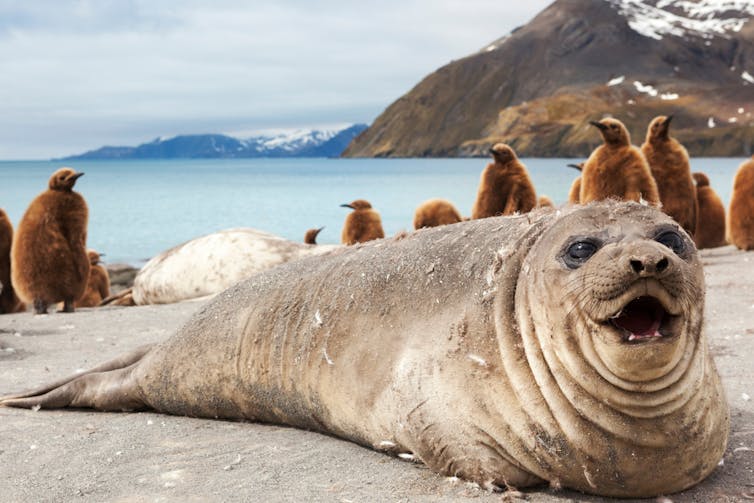
More To Find Out
Much of this remains hypothetical – for now. The consequences of the polar bear’s death for the species’ populations and for other large mammals cannot be predicted with a high degree of certainty. But if genetic testing reveals that the polar bear’s H5N1 remains poorly adapted to mammalian hosts, we might expect few other cases in polar bears.
Any further cases might also be closely associated with outbreaks of H5N1 in a nearby seabird colony. It also seems likely that the list of affected mammals and their geographical distribution should continue to grow, but relatively slowly. This list is likely to continue to include only carnivores – and scavengers in particular.
On the other hand, because influenza viruses are highly adaptable, ongoing surveillance of the H5N1 strain remains critically important. This will prepare us in case a new variant emerges that is adapted to mammalian hosts, potentially including humans.
The consequences of H5N1 for populations of some seabirds have been devastating. The consequences of failure to respond appropriately to a mammal-adapted H5N1 could be severe for polar bears – and for us.![]()
Alastair Ward, Associate Professor of Biodiversity and Ecosystem Management, University of Leeds
This article is republished from The Conversation under a Creative Commons license. Read the original article.
Avian influenza has killed millions of seabirds around the world: Antarctica could be next
Hanne E F Nielsen, University of Tasmania; Meagan Dewar, Federation University Australia, and Michelle Wille, The University of MelbourneAntarctica is often imagined as the last untouched wilderness. Unfortunately, avian influenza (“bird flu”) is encroaching on the icy continent. The virus has already reached the sub-Antarctic islands between the Antarctic Peninsula and South America. It’s only a matter of time before it reaches the Antarctic continent.
So far avian influenza has been detected in several seabird species on South Georgia Island and the Falkland (Malvinas) Islands. These birds are known to travel to Antarctica. Researchers also suspect avian influenza caused mass deaths of southern elephant seals.
The arrival of avian influenza in Antarctica could have potentially catastrophic consequences for the wildlife, decimating large populations.
Antarctic avian influenza outbreaks may also disrupt tourism and research activities during the busy summer season. So what can we do during this challenging time?
The Bird Flu Pandemic
We are in the midst of a “panzootic” – a large-scale pandemic of avian influenza, which is occurring across the world and has affected more than 200 species of wild birds.
While this strain of avian influenza (H5N1) is an old foe, the genetics and epidemiology of the virus have shifted. Once mostly found in poultry, it is now infecting large numbers of wild birds. Migrating birds have spread the virus with substantial outbreaks now occurring in Europe, Asia, Africa, North America and South America.
Avian influenza has devastated seabird populations around the world, including a 70% reduction of northern gannets on Bass Rock in the United Kingdom. Many birds are diseased, with signs including loss of coordination, watery eyes, head twisting, breathing distress or lethargy.
Beyond birds, this virus may have killed more than 30,000 South American sea lions and over 2,500 southern elephant seal pups in South America. In South Georgia mass deaths have been observed in elephant seal pups but the virus was not detected in samples sent for laboratory tests.
Bird Flu Moving Further South
The first detection of avian influenza near Antarctica occurred in early October on Bird Island, South Georgia, in brown skuas (seabirds similar to large gulls).
A case on the Falkland (Malvinas) Islands was confirmed a few weeks later in another seabird species, the southern fulmar.
Genetic analysis revealed the virus entered these regions on two separate occasions.
Skuas and kelp gulls were highlighted as species most likely to spread the virus to the Antarctic continent in a recent risk assessment, as they travel into the region from South America. They are also highly susceptible to avian influenza, with related species in the Northern Hemisphere suffering losses of more than 60%.
What Does This Mean For Antarctica?
The Antarctic Peninsula, with its ice-free areas, is an important breeding ground for many key Antarctic species.
Critically, those species – and others, including the iconic Emperor penguin – live in dense colonies and are not found elsewhere in the world, making them particularly vulnerable to disease outbreaks.
Outbreaks on the Antarctic Peninsula will also be extremely disruptive to the tourism industry. More than 104,000 people visited as tourists in the 2022–23 season. People visit to see wildlife, make a continental landing, and enjoy the scenery.
Once avian influenza is confirmed at a particular location, sites will be closed to tourists. This will lead to a different experience for visitors, with land-based wildlife encounters pivoting to cruise-based activities.
What Are We Doing?
The Antarctic Wildlife Health Network of the Scientific Committee on Antarctic Research has developed recommendations for the research and tourism communities.
These recommendations include information around biosecurity, testing and reporting of cases. The network’s database collates information on suspected and confirmed cases of the H5N1 avian influenza strain in the Antarctic region. This is central to rapid data sharing.
During the 2022–23 season, a small number of researchers tested suspected cases and conducted surveys, which excluded the presence of avian influenza.
This year, through the generosity of industry partners, we will dramatically expand this effort. The network will conduct surveys across the Antarctic and sub-Antarctic to monitor the presence and impact of the virus on wildlife.
Safety and biosecurity measures have been boosted across the scientific community and tourism industry to reduce the risk of people spreading the virus. This should ensure essential scientific research and tourism activities can continue safely.
New measures now in place include:
- disinfection of boots and outer clothing
- wearing of N95 masks, protective glasses and gloves when working with wildlife
- restrictions on access to infected sites.
Tourism can play an important role in detecting and monitoring the spread of the virus, alerting authorities to new cases in locations not visited by scientists.
The International Association of Antarctica Tour Operators is on high alert. Extra training for field staff will help them identify wildlife illness quickly.
Antarctica Is Connected
Many threats to Antarctica – including climate change, pollution, and pathogens – originate elsewhere. Climate change is expected to increase the spread of infectious diseases in wildlife and Antarctica is not immune.
Disease surveillance and information sharing between all those active in the far south are vital to help minimise the impacts of avian influenza and future disease threats.
The avian influenza example highlights the connectivity of our world, and why we need to care for the planet at home in order to protect the far south. ![]()
Hanne E F Nielsen, Senior lecturer, University of Tasmania; Meagan Dewar, Lecturer in the School of Science, Psychology and Sport, Federation University Australia, and Michelle Wille, Senior research fellow, The University of Melbourne
This article is republished from The Conversation under a Creative Commons license. Read the original article.
As Australia’s net zero transition threatens to stall, rooftop solar could help provide the power we need
Anna Bruce, UNSW Sydney; Baran Yildiz, UNSW Sydney; Dani Alexander, UNSW Sydney, and Mike Roberts, UNSW SydneyAustralia is not rolling out clean energy projects nearly fast enough to reach the Australian government’s target of 82% renewable electricity by 2030. A huge build of solar and wind farms, transmission lines and big batteries is needed. But progress is challenged by the scale required, community resistance to new infrastructure and connecting all that new renewable electricity to the grid.
In the latest obstacle to expanding renewable energy capacity in the longer term, federal Environment Minister Tanya Plibersek knocked back a plan by the Victorian government to build a sea terminal to service offshore wind farms, saying it posed “clearly unacceptable” environmental risks.
The roadblocks facing large projects present an opportunity to ramp up the contribution of small-scale technologies in the energy transition. Recently, federal and state energy ministers agreed on the need for a national roadmap and a co-ordinated approach to integrating into the grid what they call “consumer energy resources” (CER), which include batteries, electric vehicles and rooftop solar.
More than one in three Australian houses have solar panels on their roofs. Australia leads the world in rooftop solar per head. During the past year these systems generated close to 10% of our electricity. Several times over the past few months, they even provided enough electricity to briefly meet all South Australia’s electricity demand.
And the technology still has great potential to grow: although installed capacity has doubled in the last four years, these systems cover only about 10% of Australia’s estimated usable roof area. So, how large a share of our electricity needs might rooftop solar provide? The answers are not simple.
Why Rooftop Solar Presents A Challenge For The Grid
In electricity systems, demand and supply must be balanced at all times. The Australian Energy Market Operator (AEMO) runs the grid and keeps it secure to avoid blackouts in case of unexpected events such as the sudden disconnection of a transmission line.
To meet demand, every five minutes AEMO dispatches electricity from large-scale generators such as coal-fired power stations or large solar farms. As the grid operator, AEMO must also procure reserve capacity to balance any differences in demand and maintain security.
But AEMO does not dispatch power from rooftop solar, which is either used on site, or flows into the grid independently of AEMO’s control. This isn’t usually a problem, since AEMO keeps the grid balanced by forecasting how much rooftop solar is being generated.
However, if rooftop solar generates the majority of power in a particular region, there may not be enough dispatchable generation and reserves online to keep the grid balanced and secure. Grid security can also be challenged when unexpected events trigger the safety settings of rooftop solar systems and cause them to disconnect.
The other big issue for grid balance is that the network businesses that manage the poles, wires and other infrastructure connecting generators to homes and businesses need to ensure that voltages remain within defined technical limits to avoid damaging equipment or appliances. When solar generates a lot of power at a time of low electricity demand, voltage can exceed the upper operational limit. Voltage can also go below the lower operational limit when too many people connect big appliances like air-conditioners.
So how are we managing the three challenges of rooftop solar: lack of controllability by the market operator, uncertain behaviour during unexpected grid events and impact on network voltage?
Ways To Manage And Expand Rooftop Solar
Current Australian standards require solar to automatically disconnect when voltage gets too high. Network businesses also pre-emptively manage this problem by preventing customers in areas where voltage is an issue from connecting solar to the grid, or by limiting the size of solar systems they can connect or the amount of electricity they can export to the grid at any time. But this approach is potentially unfair to those customers who can’t connect or export.
The good news is that standards introduced in 2020 provide more sophisticated ways of managing solar through more gradual voltage response, and by requiring systems to ride through major disturbances rather than disconnecting. Some networks have also developed solar-friendly ways to cut off surplus output “dynamically”, meaning only at times when they have to.
Thanks to these measures, solar customers face less constraint on exporting power to the grid. However, since solar sometimes now supplies most of the generation in South Australia, AEMO has also tested disconnection of solar to increase its control of the grid in case of threats to system security.
Some of these solar management tools are still quite blunt and some commentators worry they will be overused. While necessary in the short-term, if unchecked they will reduce our ability to realise our rooftop solar potential.
Getting Smarter About When We Use Power
There is another way to use our solar systems more effectively: we can shift energy use to times when the sun is shining, and store energy – in batteries, electric vehicles and hot water tanks – to use when it is not.
To make such a change, consumer electricity prices are a potential lever. Solar customers already have an incentive to use electricity from their own rooftop systems, because they pay more for grid electricity than they are paid to sell solar back to the grid.
South Australia and some other network areas are introducing low “solar soak” rates to encourage all customers to use electricity in high solar times, such as the middle of the day. Times of plentiful solar also tend to be the cheapest times to buy wholesale electricity from the grid, and innovative retailers like Amber Electric are passing through these price signals to customers.
However, typical retail plans offered to customers don’t provide much incentive to change patterns of electricity use, especially since many customers are understandably not focused on their electricity bills or cannot easily shift their power use.
In these cases orchestration schemes, often called “virtual power plants,” are an option. Under the schemes, a business will reward household customers that allow it to operate their rooftop solar, batteries, appliances, electric vehicles and hot water systems in ways that reduce costs or grid impacts.
Better management of electricity use through these schemes can make room for the grid to take on more solar.
Recent trials in Western Australia (Project Symphony) and Victoria (Project EDGE) prove orchestration can work. Nevertheless, people will need good reasons to hand over control of their solar, batteries and appliances, particularly if they bought expensive equipment such as batteries for back-up power or to increase their energy independence.
It would be a major setback to the net zero transition if AEMO and network businesses, lacking better options for managing the grid, continue to cut back and switch off solar systems until people find it unattractive to purchase them.
The new CER roadmap needs to provide clear guidance on how AEMO and network businesses can manage rooftop solar, and other technologies such as batteries and EVs. Good governance arrangements and meaningful stakeholder consultation are essential if Australia is to maintain the momentum of its people-powered energy transition.![]()
Anna Bruce, Associate Professor in the Collaboration on Energy and Environmental Markets and the School of Photovoltaic and Renewable Energy Engineering, UNSW Sydney; Baran Yildiz, Senior Research Associate, UNSW Sydney; Dani Alexander, CEO, UNSW Energy Institute, UNSW Sydney, and Mike Roberts, Senior Research Fellow in the Collaboration on Energy and Environmental Markets and the School of Photovoltaic and Renewable Energy Engineering, UNSW Sydney
This article is republished from The Conversation under a Creative Commons license. Read the original article.
How 2023’s record heat worsened droughts, floods and bushfires around the world
Albert Van Dijk, Australian National University2023 was a year of record-breaking heat, devastating storms and floods, deepening droughts and raging wildfires. These events showed how climate change is affecting the global water cycle and our livelihoods.
Our international team of researchers has released a report, the Global Water Monitor, documenting the impact of the record heat in 2023 on the water cycle. We used data from thousands of ground stations and satellites to provide real-time information on various environmental parameters.
The report summarises conditions and events in 2023 and long-term trends. We found global warming is profoundly changing the water cycle. As a result, we are seeing more rapid and severe droughts as well as more severe storms and flood events.
Scores of countries had record average annual temperatures in 2023. Severe droughts hit three continents. The world’s largest forests suffered, with Canada battling huge fires and the Amazon hit hard by drought.
Heat Is Drying Out The World
The most obvious sign of the climate crisis is the unprecedented heat waves that swept the globe in 2023. Earth’s hottest year on record gave us a glimpse of what a typical year with 1.5°C of warming may look like. Global warming consistently more than 1.5°C above pre-industrial levels is expected to have extreme and irreversible impacts on the Earth system.
Some 77 countries experienced their highest average annual temperature in at least 45 years. Temperature records were shattered from Canada to Brazil, Spain to Thailand.
The high temperatures were often accompanied by very low air humidity. The relative air humidity of the global land surface was the second-driest on record in 2023.
Rapid drying of farms and forests caused crops to fail and forests to burn. Lack of rain and soaring temperatures intensified multi-year droughts in vulnerable regions such as South America, the Horn of Africa and the Mediterranean.
The past two decades have significantly increased air temperatures and reduced air humidity. This continuing trend toward drier conditions is threatening agriculture, biodiversity and overall water security.
These conditions heighten heat stress and increase the water needs of people, crops and ecosystems.
Scorching conditions inflicted extensive damage on the world’s largest forests. Massive wildfires ravaged Canada during the northern summer. Later in the year the Amazon rainforest and rivers descended into severe drought.
The world’s forests have been soaking up a lot of our fossil fuel emissions. That’s because plant photosynthesis absorbs carbon dioxide from the atmosphere. Large disturbances like fire and drought reduce or even reverse that function.
Water Cycle Changes Fuel Intense Storms
A change in circulation and sea temperatures in the Pacific Ocean to El Niño conditions influenced the global water cycle in 2023. But this happened against a backdrop of increasing sea surface temperatures due to global warming.
Rising sea surface and air temperatures have been intensifying the strength and rainfall intensity of monsoons, cyclones and other storm systems.
We saw this happen close to home. Cyclone Jasper battered northern Queensland and severe storms formed in south-east Queensland, leaving a trail of destruction. The cyclone moved much slower than expected, causing torrential rains and widespread flooding.
In 2023, we also saw other cyclones behave in unexpected and deadly ways. A cyclone travelled across to New Zealand. The longest-lived cyclone ever recorded battered south-eastern Africa for weeks. And a cyclone developed in the Mediterranean Sea, crossing from Greece to destroy reservoir dams in Libya, killing thousands.
The estimated global damage from cyclones in 2023 surpassed US$45 billion.
Warmer sea temperatures fuel such freak events. As the climate crisis deepens, we can expect more unprecedented storms.
Outlook: 2024 And Beyond
At the start of 2024, the greatest risk of developing or intensifying drought appears in Central and South America (except southern Brazil and Uruguay), southern Africa and western Australia.
Regions that received much rainfall towards the end of 2023 are unlikely to develop drought for at least several months. These include the Sahel region and the Horn of Africa, northern Europe, India, China and South-East Asia.
The events of 2023 show how the threat of ongoing climate change to our planet and lives is growing by the year. There were many such events in 2023, and the human and economic toll was large. These events should not be viewed as isolated incidents but as part of a broader emerging pattern.
Globally, the frequency and intensity of rainfall events and flooding are increasing. At the same time, there are also more and faster developing droughts, or flash droughts, that can cause crop failure and destructive wildfires within weeks or months. With the global food challenge, biodiversity crisis and an extremely urgent need to reduce carbon emissions, these droughts and fires are among our greatest global threats.
Overall, 2023 provided a stark reminder of the consequences of our continued reliance on fossil fuels and the urgent need but apparent inability of humanity to act decisively to cut greenhouse gas emissions.![]()
Albert Van Dijk, Professor, Water and Landscape Dynamics, Fenner School of Environment & Society, Australian National University
This article is republished from The Conversation under a Creative Commons license. Read the original article.
A heatwave in Antarctica totally blew the minds of scientists. They set out to decipher it – and here are the results

Climate scientists don’t like surprises. It means our deep understanding of how the climate works isn’t quite as complete as we need. But unfortunately, as climate change worsens, surprises and unprecedented events keep happening.
In March 2022, Antarctica experienced an extraordinary heatwave. Large swathes of East Antarctica experienced temperatures up to 40°C (72°F) above normal, shattering temperature records. It was the most intense heatwave ever recorded anywhere in the world.
So shocking and rare was the event, it blew the minds of the Antarctic climate science community. A major global research project was launched to unravel the reasons behind it and the damage it caused. A team of 54 researchers, including me, delved into the intricacies of the phenomenon. The team was led by Swiss climatologist Jonathan Wille, and involved experts from 14 countries. The collaboration resulted in two groundbreaking papers published today.
The results are alarming. But they provide scientists a deeper understanding of the links between the tropics and Antarctica – and give the global community a chance to prepare for what a warmer world may bring.
Head-Hurting Complexity
The papers tell a complex story that began half a world away from Antarctica. Under La Niña conditions, tropical heat near Indonesia poured into the skies above the Indian Ocean. At the same time, repeated weather troughs pulsing eastwards were generating from southern Africa. These factors combined into a late, Indian Ocean tropical cyclone season.
Between late February and late March 2022, 12 tropical storms had brewed. Five storms revved up to become tropical cyclones, and heat and moisture from some of these cyclones mashed together. A meandering jet stream picked up this air and swiftly transported it vast distances across the planet to Antarctica.
Below Australia, this jet stream also contributed to blocking the eastward passage of a high pressure system. When the tropical air collided with this so-called “blocking high”, it caused the most intense atmospheric river ever observed over East Antarctica. This propelled the tropical heat and moisture southward into the heart of the Antarctic continent.
Luck Was On Antarctica’s Side
The event caused the vulnerable Conger Ice Shelf to finally collapse. But the impacts were otherwise not as bad as they could have been. That’s because the heatwave struck in March, the month when Antarctica transitions to its dark, extremely cold winter. If a future heatwave arrives in summer – which is more likely under climate change – the results could be catastrophic.
Despite the heatwave, most inland temperatures stayed below zero. The spike included a new all-time temperature high of -9.4°C (15.1°F) on March 18 near Antarctica’s Concordia Research Station. To understand the immensity of this, consider that the previous March maximum temperature at this location was -27.6°C (-17.68°F). At the heatwave’s peak, 3.3 million square kilometres in East Antarctica – an area about the size of India – was affected by the heatwave.
The impacts included widespread rain and surface melt along coastal areas. But inland, the tropical moisture fell as snow – lots and lots of snow. Interestingly, the weight of the snow offset ice loss in Antarctica for the year. This delivered a temporary reprieve from Antarctica’s contribution to global sea-level rise.

Learning From The Results
So what are the lessons here? Let’s begin with the nice bit. The study was made possible by international collaboration across Antarctica’s scientific community, including the open sharing of datasets. This collaboration is a touchstone of the Antarctic Treaty. It serves as a testament to the significance of peaceful international cooperation and should be celebrated.
Less heartwarmingly, the extraordinary heatwave shows how compounding weather events in the tropics can affect the vast Antarctic ice sheet. The heatwave further reduced the extent of sea ice, which was already at record lows. This loss of sea ice was exacerbated this year resulting in the lowest summer and winter sea ice ever recorded. It shows how disturbances in one year can compound in later years.
The event also demonstrated how tropical heat can trigger the collapse of unstable ice shelves. Floating ice shelves don’t contribute to global sea-level rise, but they acts as dams to the ice sheets behind them, which do contribute.
This research calculated that such temperature anomalies occur in Antarctica about once a century, but concluded that under climate change, they will occur more frequently.
The findings enable the global community to improve its planning for various scenarios. For example, if a heatwave of similar magnitude hit in summer, how much ice melt would there be? If an atmospheric river hit the Doomsday glacier in the West Antarctic, what rate of sea level rise would that trigger? And how can governments across the world prepare coastal communities for sea level rise greater than currently calculated?
This research contributes another piece to the complex jigsaw puzzle of climate change. And reminds us all, that delays to action on climate change will raise the price we pay.
This article has been amended to correct an error in converting a 40°C temperature difference from Celsius to Fahrenheit.![]()
Dana M Bergstrom, Honorary Senior Fellow, University of Wollongong
This article is republished from The Conversation under a Creative Commons license. Read the original article.
What octopus DNA tells us about Antarctic ice sheet collapse
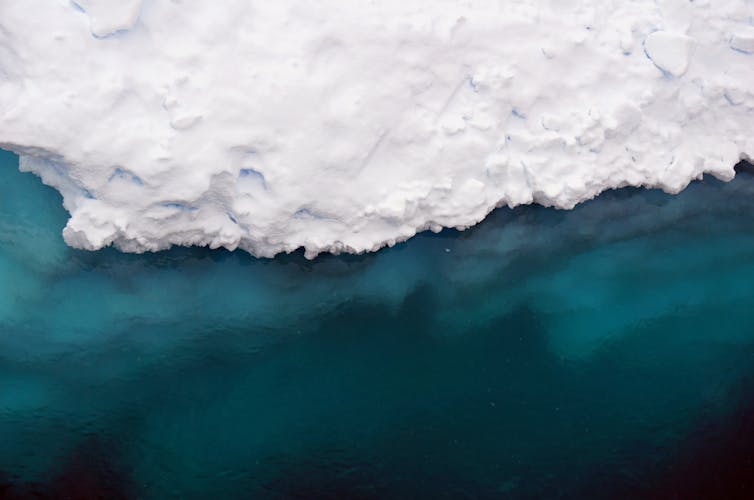
If we want to understand the future, it’s often useful to look at the past. And even more useful if you use octopus DNA to peer into worlds long gone.
About 125,000 years ago, the Earth was in its last warm period between ice ages. Global average temperatures during this interglacial period were about 0.5–1.5°C warmer than pre-industrial levels.
This has strong parallels with our time. For a third of 2023, the Earth’s temperature has been 1.5°C warmer than the pre-industrial era, driven by climate change.
For almost 50 years physical scientists have sought the answer to whether or not the vast West Antarctic Ice Sheet collapsed the last time global temperatures were this high. Rather than relying only on geological sampling, we turned to the DNA of a small Antarctic octopus for clues to the deep past.
The DNA had an answer. Our new research shows yes, it most likely collapsed.
The West Antarctic Ice Sheet is very susceptible to warming. If it melts, it has enough water to raise global sea levels by 3.3 to 5 metres.
Of Octopuses And Giant Ice Sheets
Sediment records and other ice cores show us that the ice sheet retreated at some point during the last ~1 million years in the late Pleistocene, but the exact timing and extent of any collapse remain ambiguous.
To get a more precise answer, we looked to cephalopod genetics.
Every organism’s DNA is a history book, and we now have the technology to read it. We can use DNA to look back in time and pinpoint when different populations of animals were interbreeding.
Turquet’s octopus (Pareledone turqueti) is fairly small, weighing up to 600 grams. They live on the seafloor all around Antarctica, but individuals don’t move far from home. Antarctica is so vast that populations in different regions cannot usually interbreed.
Deep under West Antarctica lies gaps in the rocks. At present, these are filled by the ice sheet, making the Weddell, Amundsen and Ross seas separate from each other.
If the ice melted, seaways would open up and connect these isolated basins. Octopuses could directly migrate into these regions and the evidence of their breeding would be laid down in DNA.
But if the ice sheet didn’t melt, we would only see evidence of breeding between octopus populations along the circumference of the continent.
We compared DNA patterns in Turquet octopus genomes all around Antarctica to see if there were direct and unique connections between octopus populations in the Weddell, Amundsen and Ross seas. We used statistical models to figure out if these connections could be explained by their present day connections around the Antarctic coastline.
The story was clear in the DNA: yes, there had been direct connections between these three octopus populations. Their connections could not be statistically explained by interbreeding around the present day Antarctic coastline. These populations could only come into contact through seaways now blocked by the West Antarctic Ice Sheet.
Even more interesting, we first found direct connections between the three populations during the mid-Pliocene, 3 million to 3.6 million years ago when temperatures were 2–3°C hotter and sea levels 25m higher than today. This supports existing geological evidence that the West Antarctic Ice Sheet collapsed during that era.
The most recent DNA signatures of direct connections between the octopuses of these three seas was during the last interglacial period around 125,000 years ago. That suggests the ice sheet collapsed when the global average temperature was around 1.5°C hotter than pre-industrial levels.
Our work provides the first empirical evidence the West Antarctic Ice Sheet could begin to collapse if we exceed the Paris Agreement goal of limiting warming to 1.5°C or even 2°C.
This Discovery Took Effort Across Disciplines And Countries
To use animal DNA as a proxy for changes in the ice sheet, we had to work across disciplines and countries. Bringing together physical scientists and biologists gave rise to new ways to answer long standing questions of vital importance to all of us.
We also turned to museum collections for samples. Some dated back three decades – well before the genetic sequencing and analytical techniques we used were available. This demonstrates the vital importance of careful sample preservation, linked with metadata, with specimens protected for future access.
Interdisciplinary science is hard. It requires time, effort, and an open mind to appreciate new terminologies, scales and approaches. Journal editors and scientists can be reluctant to review such papers, as some aspects of the research will necessarily be outside the area of their expertise. But we hope our results show the value of this approach.
What’s Next?
We hope to continue using DNA as a proxy to explore other parts of Antarctica with poorly understood climate histories.
There is a wealth of information on Antarctica’s recent and distant past also hidden in other types of biological data in moss beds and peat profiles, vertebrate animal colonies and living terrestrial and marine invertebrates. To date, very few of these biological archives have been brought into our understanding of Antarctica’s past climates.
As the world heats up at an unprecedented rate, we need to use these types of approaches to understand what else is likely to happen down on the ice. ![]()
Sally Lau, Postdoctoral Research Fellow, James Cook University; Jan Strugnell, Professor Marine Biology and Aquaculture, James Cook University, and Nerida Wilson, Adjunct Senior Research Fellow, The University of Western Australia
This article is republished from The Conversation under a Creative Commons license. Read the original article.
‘Ecology on steroids’: how Australia’s First Nations managed Australia’s ecosystems
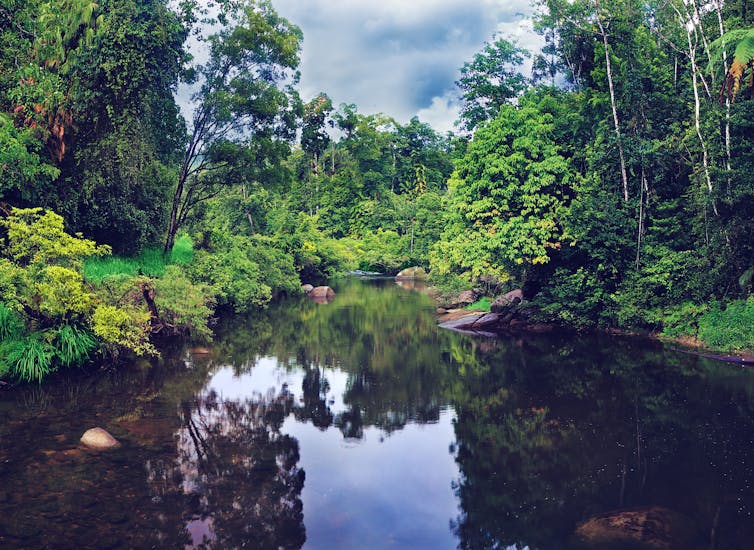
First Nations people please be advised this article speaks of racially discriminating moments in history, including the distress and death of First Nations people.
On October 9 1873, George Augustus Frederick Dalrymple reclined in a boat on the glorious North Johnstone River in the coastal Wet Tropics. Dalrymple was in raptures. A riot of palms, bananas, ferns and lilies descended to the waters edge, and large-leafed taro grew in strips along the riverbank over tens of hectares. He came across a large village with rows of neatly made bark and palm leaf huts. Dappled paths led to managed patches of open forest, groves of fruit trees, bananas and yams. Nearby, a small fleet of moored catamarans sat bobbing.
In the colonial literature, there are many such descriptions of beautiful and bountiful pre-European tropical landscapes. It was clear that people had helped create such a rich paradise through their land management
By 1886, many rainforest people of tropical north Queensland had been “dispersed” – killed – and swathes of this biodiversity hotspot began being cleared for sugarcane.
First Nations groups such as Australia’s rainforest people had skilfully managed entire ecosystems over the long term, in what has been termed “ecology on steroids”. These future-making methods protected landscapes from climate change and buffered them against extinction.
Australia’s First Nations did this through the cold and dryness of the last ice age, and as the seas rose through the droughts and floods of the El Niño Southern Oscillation climate cycle.
As we face an uncertain climate future, it’s valuable to look at how people weathered such change.
Decoupling Landscape From Climate Change
When people first came to Australia, the Wet Tropics were not wet. The Pleistocene climate was cool and windy, with mega monsoons and long periods of diabolical drought. If you had looked east from what is now Cairns, you would have seen not oceans and coral atolls, but plains and valleys filled with grasslands and forest. The sea lay tens of kilometres off the continental shelf.
The oldest record of human occupation in Australia is found in the Top End. Here, in a magnificent cave system in Arnhem Land, people prepared a meal of native fruits and processed pandanus using an adaptable toolkit. This meal took place 65,000 years ago, when savannah stretched all the way to the island of New Guinea.

Over thousands of years, Australia’s people developed a vibrant cosmology. For First Nations people Country was sentient. The land was not a mindless resource but part of your family – and came with family obligations. Everyone, whether you were human, an animal, a plant, a river, fire, the sky or wind, was closely watched. People were embedded within ecosystems.
Recently scientists sampled the deep mud of Girraween lagoon in the Top End searching for pollen and charcoal that would provide a window into this deep time.
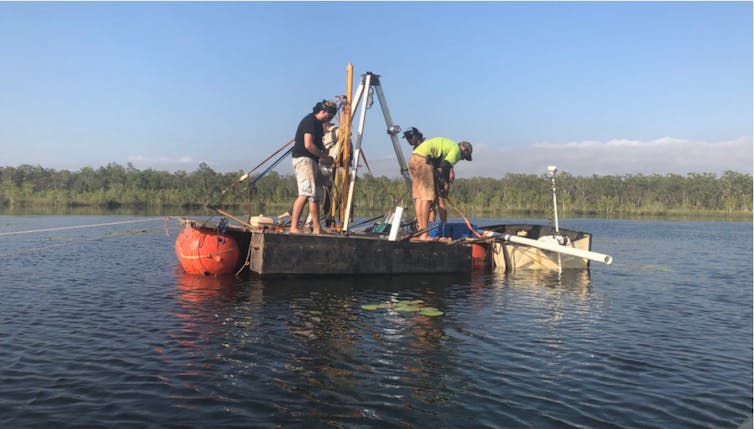
Some 13,000 years ago, the landscape was parched. But as the northern hemisphere ice sheets melted, the seas rose and the monsoons began to return. By the mid-Holocene, between 9,000 and 4,000 years ago, the monsoons were arriving regularly. The lagoon filled up, nestled in a landscape of moisture-loving shrubs and brushed by relatively cool fires.
But then, the climate lurched to one of the long periods of horrendous drought instigated by an El Nino weather system.
Curiously, destructive fires did not follow. The deep mud core showed fire became less, not more, intense, as the forest shaded out the volatile grasses that cause intense fires in savanna. Even as drought increased, the Top End landscape filled with layers of diverse herbs and shrubs, with a variety of trees and groves of monsoon forest closer to the lagoon.
This patterning was likely the handiwork of people taming fire and putting it to work. Through patch burning, they created a rich landscape of diverse habitat that sustained people and created niches for a wide range of species.
Today, a quarter of Australia’s fire-prone savannahs, mostly managed by First Nations peoples, are returning to patchy fire regimes. These reduce the big wildfires associated with European pastoralism and reduce emissions.
Extinction Busters
Perhaps few places encapsulate the harshness of Australia’s environment more than the Great Sandy Desert. From before the last ice age, the ancestors of today’s Martu people would have witnessed great floods rushing down the Sturt Creek into an extensive lake system, Paruku (Lake Gregory). These lakes were ten times larger than today’s system, ringed by dunes covered in scrubby vegetation and flammable spinifex.
Over perhaps 50 millennia, the Martu used fire to create mosaic landscapes.
In the 1960s, the Martu were forced to leave to make way for nuclear missile tests. Without cultural burning, it took mere years for fuel to build up and large wildfires to incinerate the landscape.
You can see the change clearly. Satellite images and aerial photograhy showed the size of the average fire went from 64 hectares under Martu management to over 50,000 ha by the 1980s.
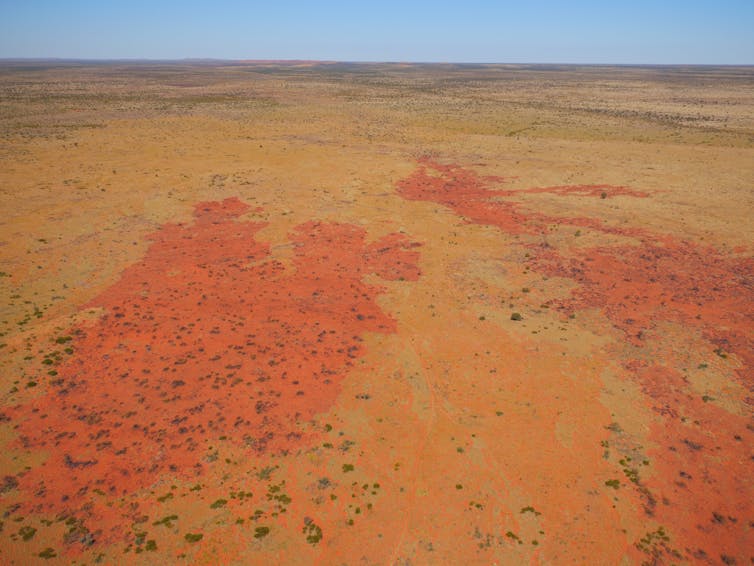
In turn, this drove dramatic shifts to the food web. Over the two decades of Martu absence, ten species of small mammal became locally extinct, including the rufous hare-wallaby, burrowing bettong, bilby, mulgara and brushtail possum. What’s more, 14 mammals, three birds and two reptiles became threatened. Cats, foxes, camels and buffel grass became widespread.
In the 1980s, the Martu were able to return. Back on Country, they worked with scientists to reconstruct pre-1960s food webs from their memories, recalling not only species hunted, but rich detail of the behaviour, interactions and life histories.
Today, Indigenous Protected Areas covering millions of hectares have been added to the national estate. The Western Desert Martu Ranger program manage 6.5 million hectares.
This return to First Nations management is long overdue, as human-made climate change intensifies. We will need to relearn these ancient techniques of managing country on a broader scale to cope with the changes to come. ![]()
Penny van Oosterzee, Adjunct Associate Professor James Cook University and University Fellow Charles Darwin University, James Cook University and Barry Hunter, Acting CEO, North Australian Indigenous Land and Sea Management Alliance, Indigenous Knowledge
This article is republished from The Conversation under a Creative Commons license. Read the original article.
565-million-years-old, some of the oldest UK fossils are eerily similar to famous Australian ones
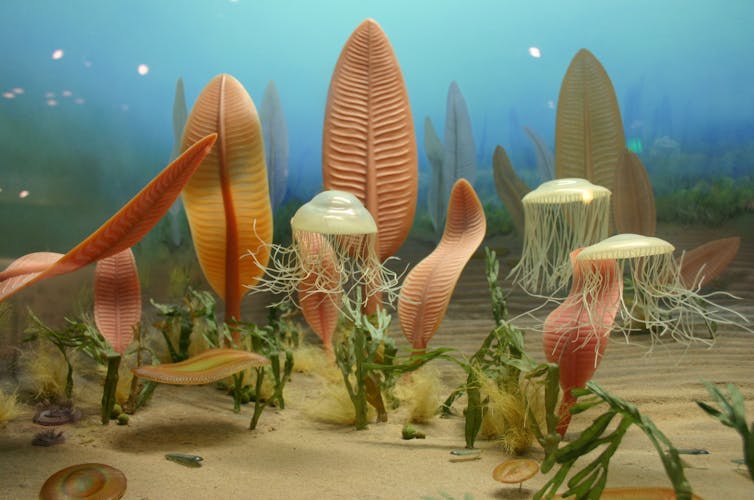
Some half a billion years ago, life on Earth went through a huge transformation. In what is called the Ediacaran period, after billions of years of single-celled organisms, large multicellular organisms emerged in the fossil record.
These traces of the oldest complex ecosystems have been found in only a handful of locations around the world. The fossils were made by soft-bodied creatures covered by sand, creating impressions of their squashed remains imprinted into rock.
Evidence of these creatures was first found in the Ediacara Hills, in South Australia’s Flinders Ranges. The discovery was pivotal in defining the Ediacaran period: a time in Earth’s past characterised by a specific layer of rock which symbolises a significant change in history.
What was happening elsewhere at this time? Similar-looking fossils have been found in a disused quarry in a farmer’s field at Llangynog in Wales, but until now their precise age was unknown.
In a new study published in Journal of the Geological Society, we have dated these Welsh remnants of ancient marine life. Now, we can confirm they were near contemporaries of the famous South Australian fossils.
A Bookmark For Rocks
How do geologists figure out the age of fossils? Understanding the age of fossils is extremely useful for correlation and understanding how biological communities evolved.
Luckily, at least for us today, an environmental catastrophe loomed in the shallow sea where these Welsh organisms lived.
Volcanic explosions threw mineral particles over the surrounding landscape and polluted the atmosphere with toxic gases.
The billowing red hot clouds created ash layers. These ash layers contain mineral grains that are isotopically datable, acting like miniature stopwatches that record the time elapsed since they crystallised in a volcano. Hence, volcanic ash acts much like a bookmark in a sequence of rocks, tracking the moment of eruption.

A Clock For Rocks
A clock tick-tocks every second, but how do we measure time when each tick takes a million years? We use a mineral called zircon.
Trapped within zircon is some uranium that undergoes nuclear decay to lead over millions of years. Scientists know the rate at which this change occurs, so by analysing the composition of the crystal we can use the zircon as a geological clock.
The more precisely we measure the amount of uranium and lead, the more precise the clock. By carefully dissolving, heating and analysing zircon, we have dated the rocks in Wales to 565 million years (plus or minus 0.1%). That is a precise death certificate for the fossils.
It’s Life, But Not As We Know It
Evidence from Ediacaran fossils implies that after four billion years of oceans containing single-celled microbes, suddenly – in geological terms at least – the seas teemed with new complex life. Ediacaran life is odd, with strange soft-bodied forms whose interaction with the environment is unclear.
Were the creatures stationary, or did they move around and eat each other? In some ways these creatures would be strangely familiar, yet in another way, bizarre.
Some appeared fern-like, others like cabbages, and yet others were similar to modern sea pens, resembling fat, old-fashioned writing quills.
Nevertheless, fossils from this time preserve the earliest evidence for large-scale multicellular organisms, including the first animals.
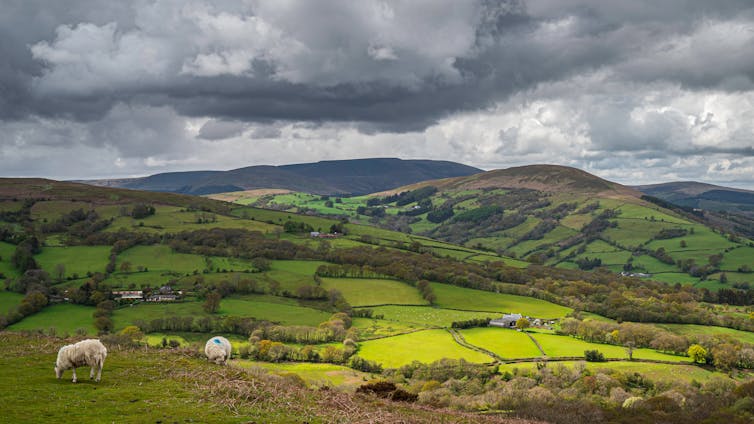
A Tropical Paradise?
Half a billion years ago, Wales was not green and sheep covered and looked much more like a barren volcanic island. The Llangynog fossils are fascinating because they record a shallow marine ecosystem.
In contrast, other famous fossil sites like Charnwood Forest in the United Kingdom and Mistaken Point, Canada record deep-marine conditions.
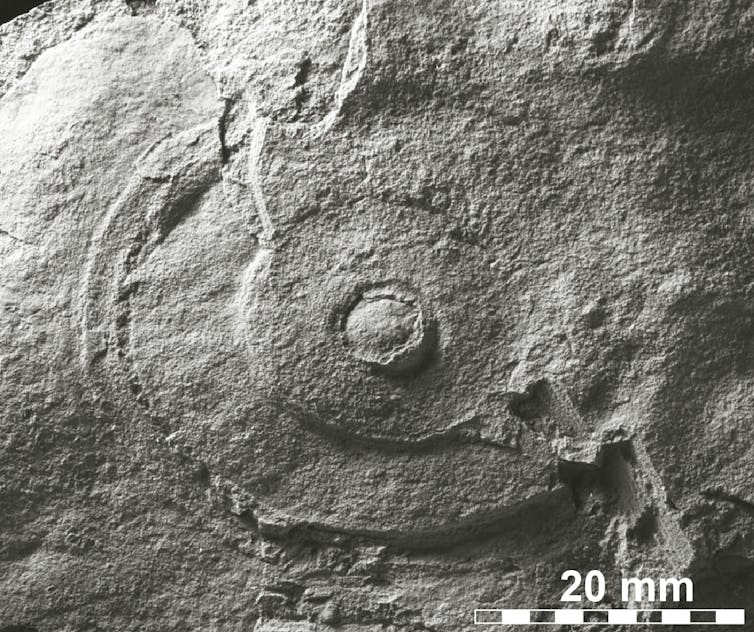
In the shallow waters of the chain of tropical volcanic islands that’s now Wales, a creature called Aspidella terranovica felt the warmth of sunlight and the sway of the tides 565 million years ago. This fossil is rare and valuable because it shows evidence of movement.
Alongside Aspidella, other disc-like organisms are preserved; these could represent the anchor for fern-shaped filter feeders.
Hidden away in an unassuming quarry in Wales are the remnants of a diverse shallow marine ecosystem containing some of Britain’s oldest fossils, which we have proved have cousins of a similar age in Australia. This time in Earth’s history was just after a global glaciation so severe and widespread that some researchers consider the entire planet froze into a “snowball”.
The Ediacaran fossils show this thaw-out heralded evolutionary change, demonstrating a profound link between our planet’s geological processes and its biological cargo.![]()
Chris Kirkland, Professor of Geochronology, Curtin University and Anthony Clarke, PhD Student in Applied Geology, Curtin University
This article is republished from The Conversation under a Creative Commons license. Read the original article.
‘Foul and loathsome’ or jewels of the natural world? The complicated history of human-frog relations
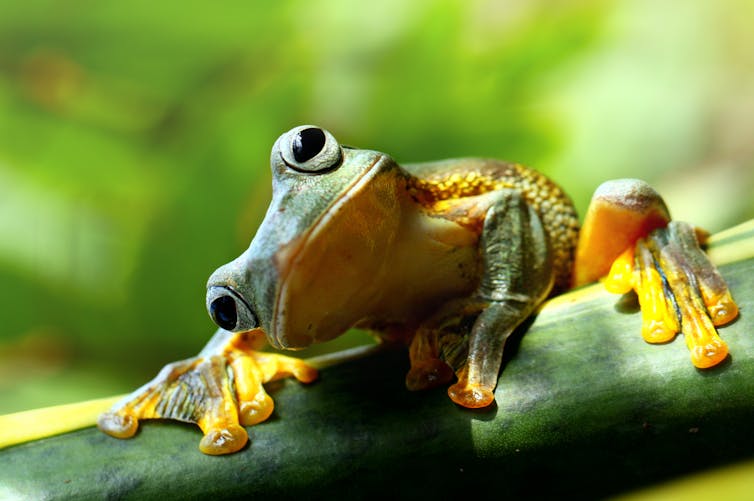
When was the last time you saw a frog? Perhaps you came across one in your garden and wondered at its little hands, glossy skin and what looked very much like a contented smile.
Maybe you regularly see them on Instagram or TikTok, where “frog accounts” have proliferated in recent years. People share adorable cartoon frogs, coo over crocheted frogs or go gaga for frogs dressed in cute hats.
In fact, our fascination with frogs isn’t new. As our research has found, the history of human-frog relations is long and complicated – and not all of it is nice.
Why We Love Frogs
There is a rich history of people really loving frogs.
This is interesting, because many people much prefer mammals and birds over reptiles and amphibians.
But the frog is an exception – for a lot of reasons. People tend to be attracted to baby-like faces. Many species of frog have the large eyes characteristic of young animals, humans included.
Having no teeth and no sharp claws, they also do not seem to be immediately threatening, while many of them have beautiful skin colouring and some are improbably tiny.
Frogs are truly among the jewels of the natural world, unlike toads which – with their more mundane colours and “warty skins” – do not usually inspire the same sense of enchantment.
Their beauty connects us to the wider riches of a vibrant nature hidden from most people’s sight in the dense rainforests of the tropical regions.
And they also connect us to nature in our own backyards. At certain times of the year, they spontaneously appear in our gardens and ponds. They can feel like special visitors from the natural world.
Dissecting Human Feelings For Frogs
Yet relationships between people and frogs haven’t always been so positive. In fact, frogs occupy complicated places across cultures all over the world.
In the Western tradition, the legacy of biblical and classical sources was both negative and longstanding.
References to frogs in the Bible rendered them the instrument of divine anger as a swarming plague.

Frogs challenged early modern zoological taxonomies, moving between classification as serpent, insect or reptile.
Perhaps their resistance to easy placement by humans explains the strong emotional language about them used by Swedish naturalist (and “father of modern taxonomy”) Carl Linnaeus.
When he considered the Amphibia in his 1758 Systema Naturae, he noted:
These foul and loathsome animals are abhorrent because of their cold body, pale colour, cartilaginous skeleton, filthy skin, fierce aspect, calculating eye, offensive smell, harsh voice, squalid habitation, and terrible venom.
In modern science, they sit in a branch of zoology, herpetology, that brings frogs together as “creeping animals” with snakes and lizards.
Frogs have also (or perhaps consequently) suffered in the service of science since at least the eighteenth century because it seemed to be possible to easily replicate experiments across multiple frog specimens.
Frogs were particularly crucial to the study of muscles and nerves. This led to ever more violent encounters between experimenters and frog bodies. Italian scientist Luigi Galvani, for example, did experiments in the late 18th century on legs of frogs to investigate what he thought of as “animal electricity”.

In this sense, frogs were valued as significant scientific objects, their value lying in their flesh, their nervous systems, rather than in their status as living, feeling beings in the world.
In time, experiments with frogs moved beyond the laboratory into the classroom. In the 1930s, schoolchildren were expected to find frogs and bring them to school for dissection in biology classes.
This practice was, however, somewhat controversial, with opponents expressing sentimental attachment to frogs and concerns that such animal cruelty would lead to barbarism.
Recognising The Fragility Of Frogs
So, our relationship with frogs is complicated. From the frogs of Aesop’s Fables to the meme Pepe the Frog, we have projected our own feelings and frustrations onto frogs, and exploited them for science and education.
Frogs have also borne the brunt of our failures as environmental stewards.
By 1990, the world was seeing a global pattern of decline in frog populations due to destruction and degradation of habitat for agriculture and logging, as well as a global amphibian pandemic caused by the chytrid fungus.
Climate change is also making life hard for many species. In 2022, over 40% of amphibian species (of which frogs and toads are by far the largest group) were threatened with extinction. Their vulnerability has seen the frog – especially the red-eyed tree frog – become a symbol for the environment more generally.
So we should delight in frogs and marvel at how beautiful and special they are while we still can, and consider how we might help save them.
Something to reflect on next time you are lucky enough to spot a frog.![]()
Susan Broomhall, Director, Gender and Women's History Research Centre, Australian Catholic University; Andrea Gaynor, Professor of History, The University of Western Australia, and Andy Flack, Senior Lecturer in Modern and Environmental History, University of Bristol
This article is republished from The Conversation under a Creative Commons license. Read the original article.
At a time of giving and receiving, our many Australian mistletoes do it too
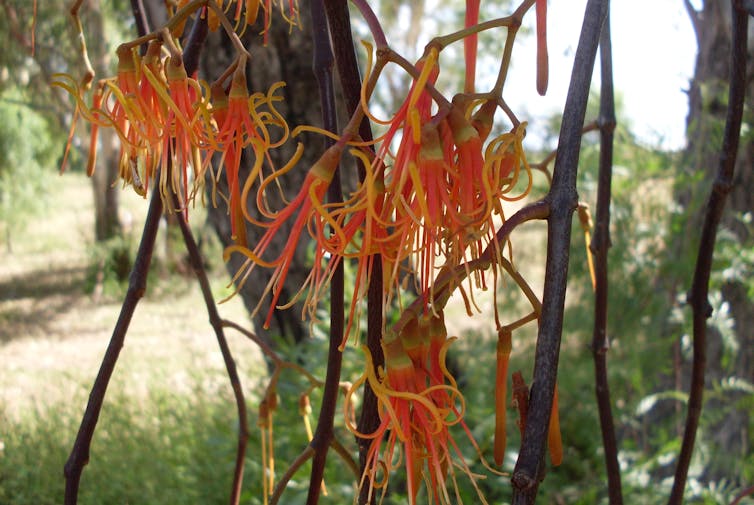
The airwaves and shopping centres have been filled with Christmas songs and carols. Apparently mommy was seen kissing Santa underneath the mistletoe. Harry Potter’s first kiss was also under a twining white-flowered mistletoe.
Magic, mystery and symbolism surround mistletoes. Their popularity at Christmas comes from their evergreen foliage symbolising life without end.
The festive traditions relate to the English mistletoe, Viscum album, and American mistletoe, Phoradendron leucarpum. These traditions may not apply to our species, but the mystery and magic certainly do.
Australia has nearly 100 species of mistletoes – 75 of them in the plant family Loranthaceae – which are not to be confused with the northern hemisphere species. They occur across the country, except in Tasmania. They are parasitic plants, though for many species their biology is not fully understood.
My interest in mistletoes stems from the many native species that live on common trees such as eucalypts, elms, plane trees, liquidambars, oaks and common fruit trees. Being parasites, mistletoes have often been seen as receivers or even takers, rather than givers, which is hardly in the spirit of the festive season. However, recent research has revealed they are givers too!

The Mystery And Magic Of Our Mistletoes
Indigenous communities were well aware of the sweet sticky fruits and the medicinal benefits certain mistletoe species provided. They also used mistletoes as a general indicator of the condition of Country and as part of fire management. Some may have used the foliage in their cleansing and welcome ceremonies too.
You may be thinking it’s a mystery why you haven’t noticed these plants more often. That’s explained by a bit of mistletoe magic.
Many of our species have a brilliant camouflage. Their leaves mimic those of the host tree (a phenomenon called crypsis). So mistletoes such as Amyema miguelli and A. pendula have leaves that resemble those of eucalypts, but they become conspicuous when they flower.
Mistletoes are hemi-parasites, which means they have green leaves and photosynthesise like other plants, but take water and nutrients from their hosts. They do this by tapping into the transport system inside the host plant and diverting some of the water and nutrients it contains.
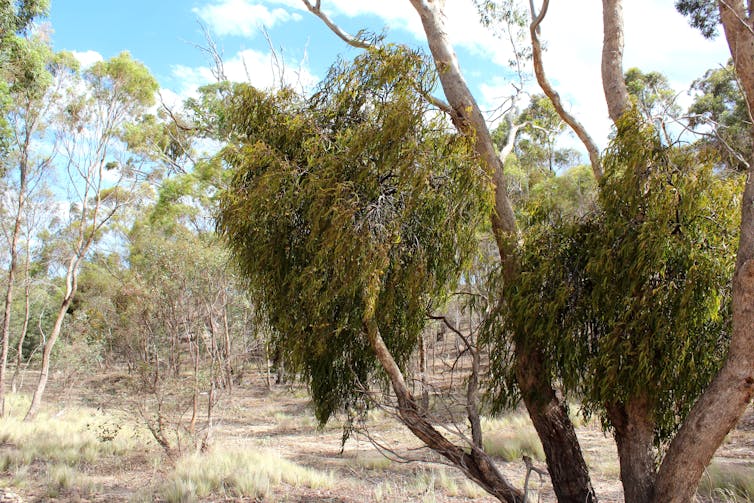
So What Do They Give Back?
Mistletoes shed more leaves more often than other plants of comparable size. These leaves contain valuable elements and compounds. This shedding creates a litter layer and compost that enriches the soil and increases the biodiversity not only in the soil but in the environment around them.
It isn’t just other plants that benefit from these gifts. The numbers of different insects, spiders and fungi present in the leaf litter goes up significantly where mistletoes are present. So too does the diversity of birds and other animals.
Many native mistletoes have spectacular and colourful flowers. These are an important source of food for many insect and bird species.
This means mistletoes are important for the biodiversity of the ecosystems that contain them.
There is more mistletoe magic! Mistletoes often have a dense foliage, which creates a cooler microclimate in their vicinity. Mistletoes also continue to transpire water when other plants have ceased due to dry conditions, which further cools the air.
There is evidence that birds and mammals nest in the denser cooler mistletoe foliage in preference to other more abundant plants growing around them. Animals also take refuge within and under mistletoes when it’s very hot. This benefit for native wildlife may be all the greater as climate changes.
Too Many Mistletoes Can Harm Their Host
We tend to notice mistletoes when flowering and bird feeding peak, or when their evergreen foliage stands out against the bare branches of deciduous host trees. We can then be surprised at how many mistletoes are growing in the canopy of a tree in our garden.
In some parts of Australia, the number of mistletoes can increase over time such that large numbers on a single host can sap the tree’s vigour. Branches beyond the point of mistletoe attachment die back, particularly on older trees and in drier seasons. When there are more than 20 mistletoes per tree, both its growth rate and flowering are reduced.

In hot dry conditions, high mistletoe numbers can lead to the deaths of older, stressed trees. Changes to fire regimes and the clearing of native vegetation are likely causes of increased mistletoe infestation.
For your garden trees, some appropriate mistletoe control may benefit not only your trees but the mistletoes too. Mistletoe control requires a sophisticated approach because of their importance for local ecosystems.
A large tree with a full canopy in good condition can cope with about four to six mistletoes. Survey mature trees to ascertain mistletoe numbers and take steps to control some, but not all, of the mistletoes if infestations are excessive.
To remove mistletoe, cut the connection to the host tree as close as possible to the branch or trunk without damaging the host. In some cases there may be more than one connection and so several cuts may be required. Sometimes nature will take control as mistletoes can die from excessive water loss during heatwaves.
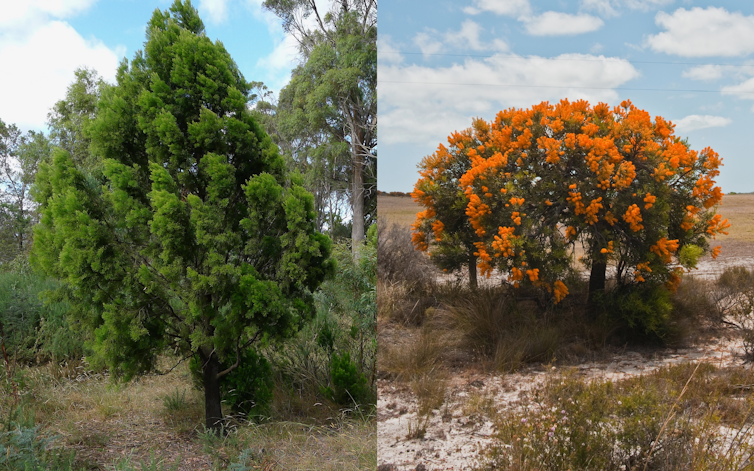
A Home-Grown Christmas Tradition
Not all mistletoes grow in tree canopies. Some are root parasites. They include the cherry ballart, Exocarpos cuppressiformis, and the spectacular Western Australian Christmas tree, Nuytsia floribunda.
The latter is renowned for its abundant brilliant yellow-orange flowers over the Christmas period. Early settlers used the cherry ballart with its conifer-like foliage as a Christmas tree with or without its red “cherries” as decoration. The “cherries” are not true fruits, but swollen fruit stalks - another bit of mistletoe magic and mystery.![]()
Gregory Moore, Senior Research Associate, School of Ecosystem and Forest Sciences, The University of Melbourne
This article is republished from The Conversation under a Creative Commons license. Read the original article.
Pittwater Reserves: Histories + Notes + Pictorial Walks
A History Of The Campaign For Preservation Of The Warriewood Escarpment by David Palmer OAM and Angus Gordon OAM
A Stroll Around Manly Dam: Spring 2023 by Kevin Murray and Joe Mills
A Stroll Through Warriewood Wetlands by Joe Mills February 2023
A Walk Around The Cromer Side Of Narrabeen Lake by Joe Mills
America Bay Track Walk - photos by Joe Mills
An Aquatic June: North Narrabeen - Turimetta - Collaroy photos by Joe Mills
Angophora Reserve Angophora Reserve Flowers Grand Old Tree Of Angophora Reserve Falls Back To The Earth - History page
Annie Wyatt Reserve - A Pictorial
Aquatic Reflections seen this week (May 2023): Narrabeen + Turimetta by Joe Mills
Avalon's Village Green: Avalon Park Becomes Dunbar Park - Some History + Toongari Reserve and Catalpa Reserve
Bairne Walking Track Ku-Ring-Gai Chase NP by Kevin Murray
Bangalley Headland Bangalley Mid Winter
Bangalley Headland Walk: Spring 2023 by Kevin Murray and Joe Mills
Banksias of Pittwater
Barrenjoey Boathouse In Governor Phillip Park Part Of Our Community For 75 Years: Photos From The Collection Of Russell Walton, Son Of Victor Walton
Barrenjoey Headland: Spring flowers
Barrenjoey Headland after fire
Bayview Baths
Bayview Wetlands
Beeby Park
Bilgola Beach
Botham Beach by Barbara Davies
Bungan Beach Bush Care
Careel Bay Saltmarsh plants
Careel Bay Birds
Careel Bay Clean Up day
Careel Bay Playing Fields History and Current
Careel Creek
Careel Creek - If you rebuild it they will come
Centre trail in Ku-ring-gai Chase National Park
Chiltern Track- Ingleside by Marita Macrae
Clareville Beach
Clareville/Long Beach Reserve + some History
Coastal Stability Series: Cabbage Tree Bay To Barrenjoey To Observation Point by John Illingsworth, Pittwater Pathways, and Dr. Peter Mitchell OAM
Cowan Track by Kevin Murray
Curl Curl To Freshwater Walk: October 2021 by Kevin Murray and Joe Mills
Currawong and Palm Beach Views - Winter 2018
Currawong-Mackerel-The Basin A Stroll In Early November 2021 - photos by Selena Griffith
Currawong State Park Currawong Beach + Currawong Creek
Deep Creek To Warriewood Walk photos by Joe Mills
Drone Gives A New View On Coastal Stability; Bungan: Bungan Headland To Newport Beach + Bilgola: North Newport Beach To Avalon + Bangalley: Avalon Headland To Palm Beach
Duck Holes: McCarrs Creek by Joe Mills
Dunbar Park - Some History + Toongari Reserve and Catalpa Reserve
Dundundra Falls Reserve: August 2020 photos by Selena Griffith - Listed in 1935
Elsie Track, Scotland Island
Elvina Track in Late Winter 2019 by Penny Gleen
Elvina Bay Walking Track: Spring 2020 photos by Joe Mills
Elvina Bay-Lovett Bay Loop Spring 2020 by Kevin Murray and Joe Mills
Fern Creek - Ingleside Escarpment To Warriewood Walk + Some History photos by Joe Mills
Iluka Park, Woorak Park, Pittwater Park, Sand Point Reserve, Snapperman Beach Reserve - Palm Beach: Some History
Ingleside
Ingleside Wildflowers August 2013
Irrawong - Ingleside Escarpment Trail Walk Spring 2020 photos by Joe Mills
Irrawong - Mullet Creek Restoration
Katandra Bushland Sanctuary - Ingleside
Lucinda Park, Palm Beach: Some History + 2022 Pictures
McCarrs Creek
McCarr's Creek to Church Point to Bayview Waterfront Path
McKay Reserve
Mona Vale Beach - A Stroll Along, Spring 2021 by Kevin Murray
Mona Vale Headland, Basin and Beach Restoration
Mona Vale Woolworths Front Entrance Gets Garden Upgrade: A Few Notes On The Site's History
Mother Brushtail Killed On Barrenjoey Road: Baby Cried All Night - Powerful Owl Struck At Same Time At Careel Bay During Owlet Fledgling Season: calls for mitigation measures - The List of what you can do for those who ask 'What You I Do' as requested
Mount Murray Anderson Walking Track by Kevin Murray and Joe Mills
Mullet Creek
Narrabeen Creek
Narrabeen Lagoon Catchment: Past Notes Present Photos by Margaret Woods
Narrabeen Lagoon Entrance Clearing Works: September To October 2023 pictures by Joe Mills
Narrabeen Lagoon State Park
Narrabeen Lagoon State Park Expansion
Narrabeen Rockshelf Aquatic Reserve
Nerang Track, Terrey Hills by Bea Pierce
Newport Bushlink - the Crown of the Hill Linked Reserves
Newport Community Garden - Woolcott Reserve
Newport to Bilgola Bushlink 'From The Crown To The Sea' Paths: Founded In 1956 - A Tip and Quarry Becomes Green Space For People and Wildlife
Pittwater Reserves: The Green Ways; Bungan Beach and Bungan Head Reserves: A Headland Garden
Pittwater Reserves, The Green Ways: Clareville Wharf and Taylor's Point Jetty
Pittwater Reserves: The Green Ways; Hordern, Wilshire Parks, McKay Reserve: From Beach to Estuary
Pittwater Reserves - The Green Ways: Mona Vale's Village Greens a Map of the Historic Crown Lands Ethos Realised in The Village, Kitchener and Beeby Parks
Pittwater Reserves: The Green Ways Bilgola Beach - The Cabbage Tree Gardens and Camping Grounds - Includes Bilgola - The Story Of A Politician, A Pilot and An Epicure by Tony Dawson and Anne Spencer
Pittwater spring: waterbirds return to Wetlands
Pittwater's Lone Rangers - 120 Years of Ku-Ring-Gai Chase and the Men of Flowers Inspired by Eccleston Du Faur
Pittwater's Great Outdoors: Spotted To The North, South, East + West- June 2023: Palm Beach Boat House rebuild going well - First day of Winter Rainbow over Turimetta - what's Blooming in the bush? + more by Joe Mills, Selena Griffith and Pittwater Online
Pittwater's Parallel Estuary - The Cowan 'Creek
Resolute Track at West Head by Kevin Murray
Resolute Track Stroll by Joe Mills
Riddle Reserve, Bayview
Salvation Loop Trail, Ku-Ring-Gai Chase National Park- Spring 2020 - by Selena Griffith
Seagull Pair At Turimetta Beach: Spring Is In The Air!
Some late November Insects (2023)
Stapleton Reserve
Stapleton Park Reserve In Spring 2020: An Urban Ark Of Plants Found Nowhere Else
Stony Range Regional Botanical Garden: Some History On How A Reserve Became An Australian Plant Park
The Chiltern Track
The Chiltern Trail On The Verge Of Spring 2023 by Kevin Murray and Joe Mills
The Resolute Beach Loop Track At West Head In Ku-Ring-Gai Chase National Park by Kevin Murray
Topham Track Ku-Ring-Gai Chase NP, August 2022 by Joe Mills and Kevin Murray
Towlers Bay Walking Track by Joe Mills
Trafalgar Square, Newport: A 'Commons' Park Dedicated By Private Landholders - The Green Heart Of This Community
Tranquil Turimetta Beach, April 2022 by Joe Mills
Turimetta Beach Reserve by Joe Mills, Bea Pierce and Lesley
Turimetta Beach Reserve: Old & New Images (by Kevin Murray) + Some History
Turimetta Headland
Turimetta Moods by Joe Mills: June 2023
Turimetta Moods (Week Ending June 23 2023) by Joe Mills
Turimetta Moods: June To July 2023 Pictures by Joe Mills
Turimetta Moods: July Becomes August 2023 by Joe Mills
Turimetta Moods: August Becomes September 2023 ; North Narrabeen - Turimetta - Warriewood - Mona Vale photographs by Joe Mills
Turimetta Moods: Mid-September To Mid-October 2023 by Joe Mills
Warriewood Wetlands - Creeks Deteriorating: How To Report Construction Site Breaches, Weed Infestations + The Long Campaign To Save The Warriewood Wetlands & Ingleside Escarpment March 2023
Warriewood Wetlands and Irrawong Reserve
Whale Beach Ocean Reserve: 'The Strand' - Some History On Another Great Protected Pittwater Reserve
Wilshire Park Palm Beach: Some History + Photos From May 2022
Winji Jimmi - Water Maze

Pittwater's Birds
Australian Predators of the Sky by Penny Olsen - published by National Library of Australia
Australian Raven Australian Wood Duck Family at Newport
A Week In Pittwater Issue 128 A Week In Pittwater - June 2014 Issue 168
Baby Birds Spring 2015 - Rainbow Lorikeets in our Yard - for Children Baby Birds by Lynleigh Greig, Southern Cross Wildlife Care - what do if being chased by a nesting magpie or if you find a baby bird on the ground
Baby Kookaburras in our Backyard: Aussie Bird Count 2016 - October
Balloons Are The Number 1 Marine Debris Risk Of Mortality For Our Seabirds - Feb 2019 Study
Bangalley Mid-Winter Barrenjoey Birds Bird Antics This Week: December 2016
Bird of the Month February 2019 by Michael Mannington
Birdland Above the Estuary - October 2012 Birds At Our Window Birds at our Window - Winter 2014 Birdland June 2016
Birdsong Is a Lovesong at This time of The Year - Brown Falcon, Little Wattle Bird, Australian Pied cormorant, Mangrove or Striated Heron, Great Egret, Grey Butcherbird, White-faced Heron
Bird Songs – poems about our birds by youngsters from yesterdays - for children Bird Week 2015: 19-25 October
Bird Songs For Spring 2016 For Children by Joanne Seve
Birds at Careel Creek this Week - November 2017: includes Bird Count 2017 for Local Birds - BirdLife Australia by postcode
Black Cockatoo photographed in the Narrabeen Catchment Reserves this week by Margaret G Woods - July 2019
Black-Necked Stork, Mycteria Australis, Now Endangered In NSW, Once Visited Pittwater: Breeding Pair shot in 1855
Black Swans on Narrabeen Lagoon - April 2013 Black Swans Pictorial
Endangered Little Tern Fishing at Mona Vale Beach
‘Feather Map of Australia’: Citizen scientists can support the future of Australia's wetland birds: for Birdwatchers, school students and everyone who loves our estuarine and lagoon and wetland birds
Fledgling Common Koel Adopted by Red Wattlebird -Summer Bird fest 2013 Flegdlings of Summer - January 2012
Flocks of Colour by Penny Olsen - beautiful new Bird Book Celebrates the 'Land of the Parrots'
Friendly Goose at Palm Beach Wharf - Pittwater's Own Mother Goose
Front Page Issue 177 Front Page Issue 185 Front Page Issue 193 - Discarded Fishing Tackle killing shorebirds Front Page Issue 203 - Juvenile Brush Turkey Front Page Issue 208 - Lyrebird by Marita Macrae Front Page Issue 219 Superb Fairy Wren Female Front Page Issue 234: National Bird Week October 19-25 and the 2015 the Aussie Back Yard Bird Count: Australia's First Bird Counts - a 115 Year Legacy - with a small insight into our first zoos Front Page Issue 236: Bird Week 2015 Front Page Issue 244: watebirds Front Page Issue 260: White-face Heron at Careel Creek Front Page Issue 283: Pittwater + more birds for Bird Week/Aussie Bird Count Front Page Issue 284: Pittwater + more birds for Bird Week/Aussie Bird Count Front Page Issue 285: Bird Week 2016 Front Page Issue 331: Spring Visitor Birds Return
G . E. Archer Russell (1881-1960) and His Passion For Avifauna From Narrabeen To Newport
Glossy Black-Cockatoo Returns To Pittwater by Paul Wheeler Glossy Cockatoos - 6 spotted at Careel Bay February 2018
Grey Butcher Birds of Pittwater
INGLESIDE LAND RELEASE ON AGAIN BUT MANY CHALLENGES AHEAD by David Palmer
Issue 60 May 2012 Birdland - Smiles- Beamings -Early -Winter - Blooms
Jayden Walsh’s Northern Beaches Big Year - courtesy Pittwater Natural Heritage Association
John Gould's Extinct and Endangered Mammals of Australia by Dr. Fred Ford - Between 1850 and 1950 as many mammals disappeared from the Australian continent as had disappeared from the rest of the world between 1600 and 2000! Zoologist Fred Ford provides fascinating, and often poignant, stories of European attitudes and behaviour towards Australia's native fauna and connects these to the animal's fate today in this beautiful new book - our interview with the author
July 2012 Pittwater Environment Snippets; Birds, Sea and Flowerings
Juvenile Sea Eagle at Church Point - for children
King Parrots in Our Front Yard
Kookaburra Turf Kookaburra Fledglings Summer 2013 Kookaburra Nesting Season by Ray Chappelow Kookaburra Nest – Babies at 1.5 and 2.5 weeks old by Ray Chappelow Kookaburra Nest – Babies at 3 and 4 weeks old by Ray Chappelow Kookaburra Nest – Babies at 5 weeks old by Ray Chappelow Kookaburra and Pittwater Fledglings February 2020 to April 2020
Lion Island's Little Penguins (Fairy Penguins) Get Fireproof Homes - thanks to NSW National Parks and Wildlife Service and the Fix it Sisters Shed
Lyre Bird Sings in Local National Park - Flock of Black Cockatoos spotted - June 2019
Magpie's Melodic Melodies - For Children (includes 'The Magpie's Song' by F S Williamson)
Masked Lapwing (Plover) - Reflected
May 2012 Birdland Smiles Beamings Early Winter Blooms
Musk Lorikeets In Pittwater: Pittwater Spotted Gum Flower Feast - May 2020
Nankeen Kestrel Feasting at Newport: May 2016
National Bird Week 2014 - Get Involved in the Aussie Backyard Bird Count: National Bird Week 2014 will take place between Monday 20 October and Sunday 26 October, 2014. BirdLife Australia and the Birds in Backyards team have come together to launch this year’s national Bird Week event the Aussie Backyard Bird Count! This is one the whole family can do together and become citizen scientists...
National Bird Week October 19-25 and the 2015 the Aussie Back Yard Bird Count: Australia's First Bird Counts - a 115 Year Legacy - with a small insight into our first zoos
Nature 2015 Review Earth Air Water Stone
New Family of Barking Owls Seen in Bayview - Church Point by Pittwater Council
Noisy Visitors by Marita Macrae of PNHA
Odes to Australia's Fairy-wrens by Douglas Brooke Wheelton Sladen and Constance Le Plastrier 1884 and 1926
Oystercatcher and Dollarbird Families - Summer visitors
Painted Button-Quail Rescued By Locals - Elanora-Ingleside escarpment-Warriewood wetlands birds
Palm Beach Protection Group Launch, Supporters Invited: Saturday Feb.16th - Residents Are Saying 'NO' To Off-Leash Dogs In Station Beach Eco-System - reports over 50 dogs a day on Station Beach throughout December-January (a No Dogs Beach) small children being jumped on, Native birds chased, dog faeces being left, families with toddlers leaving beach to get away from uncontrolled dogs and 'Failure of Process' in council 'consultation' open to February 28th
Pardalote, Scrub Wren and a Thornbill of Pittwater
Pecking Order by Robyn McWilliam
Pelican Lamps at Narrabeen Pelican Dreamsong - A Legend of the Great Flood - dreamtime legend for children
Pittwater Becalmed Pittwater Birds in Careel Creek Spring 2018 Pittwater Waterbirds Spring 2011 Pittwater Waterbirds - A Celebration for World Oceans Day 2015
Pittwater's Mother Nature for Mother's Day 2019
Plastic in 99 percent of seabirds by 2050 by CSIRO
Plover Appreciation Day September 16th 2015
Powerful and Precious by Lynleigh Grieg
Red Wattlebird Song - November 2012
Restoring The Diamond: every single drop. A Reason to Keep Dogs and Cats in at Night.
Return Of Australasian Figbird Pair: A Reason To Keep The Trees - Aussie Bird Count 2023 (16–22 October) You can get involved here: aussiebirdcount.org.au
Sea Birds off the Pittwater Coast: Albatross, Gannet, Skau + Australian Poets 1849, 1898 and 1930, 1932
Sea Eagle Juvenile at Church Point
Seen but Not Heard: Lilian Medland's Birds - Christobel Mattingley - one of Australia's premier Ornithological illustrators was a Queenscliff lady - 53 of her previously unpublished works have now been made available through the auspices of the National Library of Australia in a beautiful new book
7 Little Ducklings: Just Keep Paddling - Australian Wood Duck family take over local pool by Peta Wise
Shag on a North Avalon Rock - Seabirds for World Oceans Day 2012
Short-tailed Shearwaters Spring Migration 2013
South-West North-East Issue 176 Pictorial
Spring 2012 - Birds are Splashing - Bees are Buzzing
Spring Becomes Summer 2014- Royal Spoonbill Pair at Careel Creek
Spring Notes 2018 - Royal Spoonbill in Careel Creek
Station Beach Off Leash Dog Area Proposal Ignores Current Uses Of Area, Environment, Long-Term Fauna Residents, Lack Of Safe Parking and Clearly Stated Intentions Of Proponents have your say until February 28, 2019
Summer 2013 BirdFest - Brown Thornbill Summer 2013 BirdFest- Canoodlers and getting Wet to Cool off Summer 2013 Bird Fest - Little Black Cormorant Summer 2013 BirdFest - Magpie Lark
New Shorebirds WingThing For Youngsters Available To Download
A Shorebirds WingThing educational brochure for kids (A5) helps children learn about shorebirds, their life and journey. The 2021 revised brochure version was published in February 2021 and is available now. You can download a file copy here.
If you would like a free print copy of this brochure, please send a self-addressed envelope with A$1.10 postage (or larger if you would like it unfolded) affixed to: BirdLife Australia, Shorebird WingThing Request, 2-05Shorebird WingThing/60 Leicester St, Carlton VIC 3053.

 Shorebird Identification Booklet
Shorebird Identification Booklet
The Migratory Shorebird Program has just released the third edition of its hugely popular Shorebird Identification Booklet. The team has thoroughly revised and updated this pocket-sized companion for all shorebird counters and interested birders, with lots of useful information on our most common shorebirds, key identification features, sighting distribution maps and short articles on some of BirdLife’s shorebird activities.
The booklet can be downloaded here in PDF file format: http://www.birdlife.org.au/documents/Shorebird_ID_Booklet_V3.pdf
Paper copies can be ordered as well, see http://www.birdlife.org.au/projects/shorebirds-2020/counter-resources for details.
Download BirdLife Australia's children’s education kit to help them learn more about our wading birdlife
Shorebirds are a group of wading birds that can be found feeding on swamps, tidal mudflats, estuaries, beaches and open country. For many people, shorebirds are just those brown birds feeding a long way out on the mud but they are actually a remarkably diverse collection of birds including stilts, sandpipers, snipe, curlews, godwits, plovers and oystercatchers. Each species is superbly adapted to suit its preferred habitat. The Red-necked Stint is as small as a sparrow, with relatively short legs and bill that it pecks food from the surface of the mud with, whereas the Eastern Curlew is over two feet long with a exceptionally long legs and a massively curved beak that it thrusts deep down into the mud to pull out crabs, worms and other creatures hidden below the surface.
Some shorebirds are fairly drab in plumage, especially when they are visiting Australia in their non-breeding season, but when they migrate to their Arctic nesting grounds, they develop a vibrant flush of bright colours to attract a mate. We have 37 types of shorebirds that annually migrate to Australia on some of the most lengthy and arduous journeys in the animal kingdom, but there are also 18 shorebirds that call Australia home all year round.
What all our shorebirds have in common—be they large or small, seasoned traveller or homebody, brightly coloured or in muted tones—is that each species needs adequate safe areas where they can successfully feed and breed.
The National Shorebird Monitoring Program is managed and supported by BirdLife Australia.
This project is supported by Glenelg Hopkins Catchment Management Authority and Hunter Local Land Services through funding from the Australian Government’s National Landcare Program. Funding from Helen Macpherson Smith Trust and Port Phillip Bay Fund is acknowledged.
The National Shorebird Monitoring Program is made possible with the help of over 1,600 volunteers working in coastal and inland habitats all over Australia.
The National Shorebird Monitoring program (started as the Shorebirds 2020 project initiated to re-invigorate monitoring around Australia) is raising awareness of how incredible shorebirds are, and actively engaging the community to participate in gathering information needed to conserve shorebirds.
In the short term, the destruction of tidal ecosystems will need to be stopped, and our program is designed to strengthen the case for protecting these important habitats.
In the long term, there will be a need to mitigate against the likely effects of climate change on a species that travels across the entire range of latitudes where impacts are likely.
The identification and protection of critical areas for shorebirds will need to continue in order to guard against the potential threats associated with habitats in close proximity to nearly half the human population.
Here in Australia, the place where these birds grow up and spend most of their lives, continued monitoring is necessary to inform the best management practice to maintain shorebird populations.
BirdLife Australia believe that we can help secure a brighter future for these remarkable birds by educating stakeholders, gathering information on how and why shorebird populations are changing, and working to grow the community of people who care about shorebirds.
To find out more visit: http://www.birdlife.org.au/projects/shorebirds-2020/shorebirds-2020-program
Aussie Bread Tags Collection Points

Sports Updates: Surfing, 2024 Olympics Sailing, Newport SLSC Members In Nutri Grain Iron Series, U16 Australian Schoolboys Tour Of U.K., Avalon Beach's Gangwon 2024 Winter Youth Olympic Games Competitor
Sierra Kerr Wins WSL World Junior Championships

Nominations Now Open For The Australian Surfing Awards Incorporating The Hall Of Fame: Will Be To Be Held At Iconic Bondi Pavilion On 28th February, 2024

ISA World Surfing Games – Irukandjis Team Announcement
Newport SLSC Members In Nutri Grain Iron Series: Update
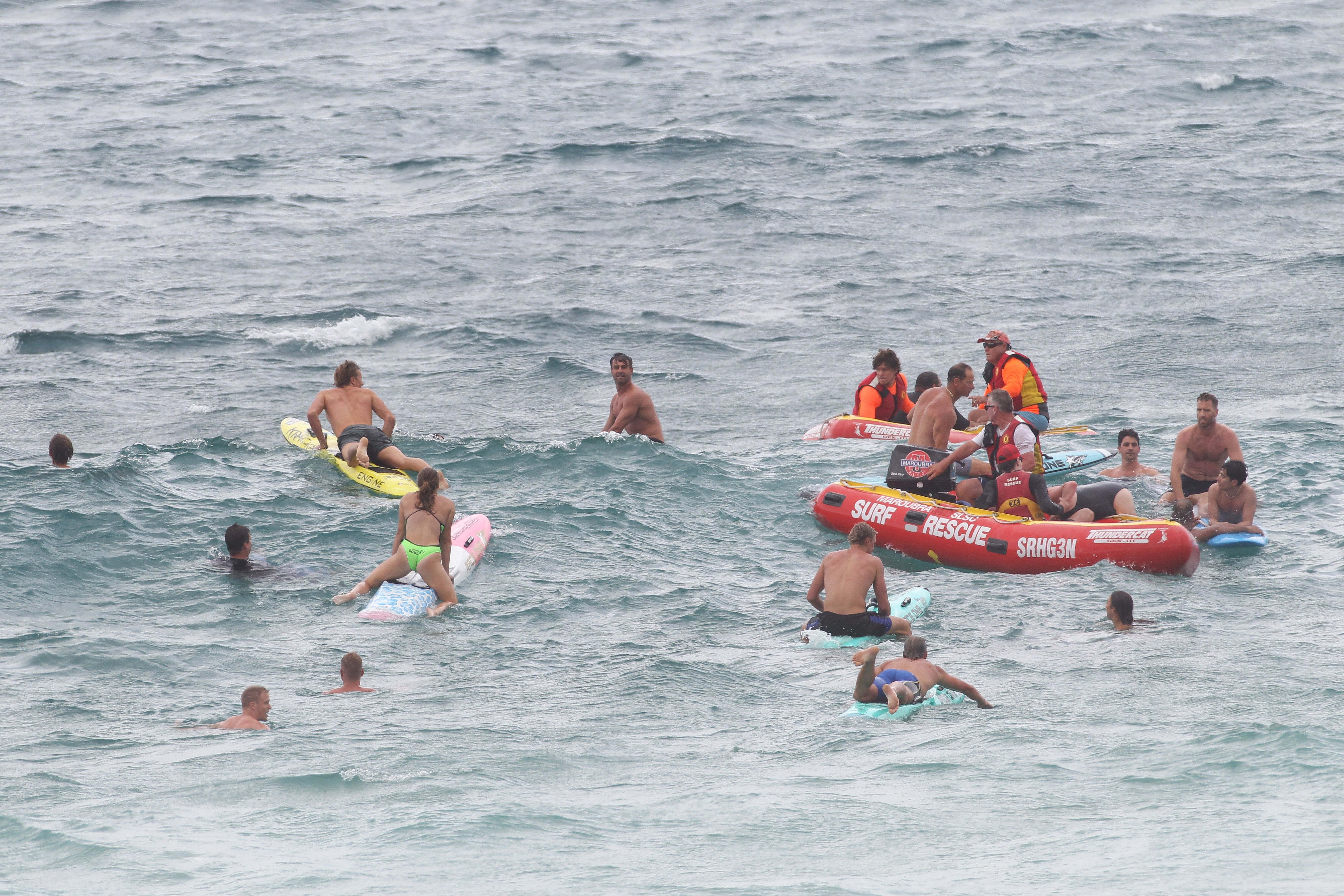
U16 AUSTRALIAN SCHOOLBOYS’ TOUR OF THE UNITED KINGDOM, IRELAND And THE NETHERLANDS

Gangwon 2024 Winter Youth Olympic Games Preview: Good Luck Amelie Haskell!

49er And Women’s IQFOiL Paris Olympic Quotas Secured On Final Day Of Sail Sydney

Jim Colley/Shaun Connor 49er Update: January 2024
Surfing NSW 2024 Event Calendar
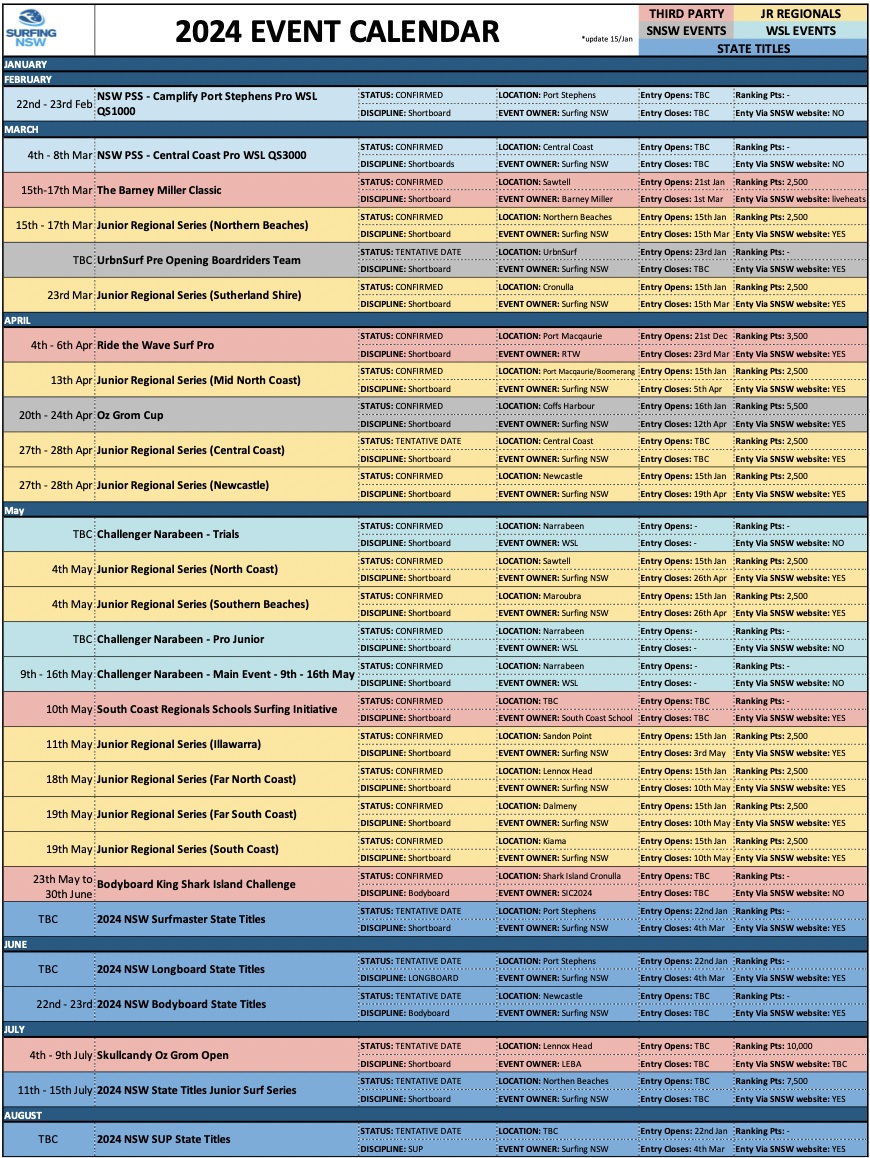
2024 Winter Sports Registrations Open: Rugby League, Rugby Union, Soccer, Netball - Details + Links
Rugby League Registration For 2024 Season
Avalon JRLFC 2024 Registration
- Mixed boys and girls tackle teams for U6 – U12.
- Boys tackle teams for U13 – A-Grade.
- Girls blues tag teams for U12’s – U16’s.
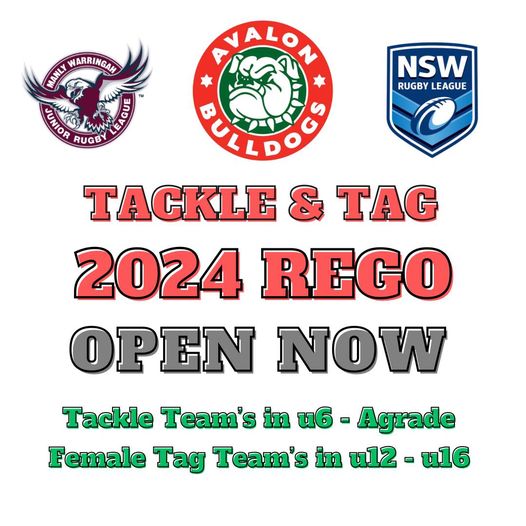
Mona Vale Raiders Rugby League Club
Narrabeen Sharks Rugby League


Soccer Registration For 2024 Season Now Open
Avalon Soccer Club

Pittwater RSL FC 2024 Registration Now Open

Narrabeen Football Club
Netball Registration For 2024 Season Now Open
Newport Breakers Netball Club 2024 Season Registration
- NetSetGo Competitions register here: https://www.playhq.com/netball-australia/register/c92c1e
- Junior Players aged 10-17 register here: https://www.playhq.com/netball-australia/register/be9c8a
- Senior Players aged 18+ register here: https://www.playhq.com/netball-australia/register/be9c8a
Narrabeen Youth Club Netball
Mona Vale Commodores Netball
- Sun 4 Feb 2024 11am to 1pm, Come and Try Netball at Pittwater New Life Gym
- Sun 4 Feb 2024 2pm to 4pm, In Person Uniform and Registration day at Mona Vale Community Centre
- TBC between 17 to 21 Feb 2024 Commodores U10 Grading day TBC
- March 9, time tba MWNA U10 Grading Day Curl Curl
Peninsula Netball Club
- NetSetGO https://www.playhq.com/netball-australia/register/3db4d5
- Juniors / Cadets / Seniors https://www.playhq.com/netball-australia/register/fcc8c5
 Registrations are open for juniors, cadets, and seniors until 30 January and for NetSetGO 14 February.
Registrations are open for juniors, cadets, and seniors until 30 January and for NetSetGO 14 February. Rugby Union
Newport Breakers Rugby Club
Newport Junior Rugby Club
Narrabeen Tigers Junior Rugby Club
Warringah Rats Women's Rugby Union 2024

2023 Bell Shakespeare Shorts Festival Winners
Community Spirit Prize
The Bard Baffles The Bay
Tomaree High School NSW
Excellence in Storytelling (Joint winners)
M.Beth
Santa Maria College WA
Insidious Intent
Uzair Fauzi, Freya Hicks, Emilee Chan
Christmas Island District High School WA
Excellence in Direction
Romeo and Julian
Kevin Chu, Andrew Nguyen, Rupert Tait
Cranbrook School NSW
Creative Vision Prize
Sonnet 73
Alfie Swann
Blue Mountains Grammar School NSW
Excellence in Performance (joint winner) & Top Film – Secondary
The Faults in Our Selves
Prince Alfred College
Adelaide SA
Excellence in Performance (joint winner) & Top Film – Primary
The Late Arrivals
Buhagiar, McLean & Cameron families
Port Hacking NSW
The winning Community Spirit film runs below - watch all of the winning entries here.
TAFE NSW 2024

- An Australian citizen, Australian permanent resident, Australian permanent humanitarian visa holder or New Zealand citizen; and
- No longer at school; and
- Living or working in NSW; and
- Aged 15 years or over, and
- be either a Commonwealth Welfare recipient or the dependant of a Commonwealth Welfare recipient
- A NSW apprentice or new entrant trainee undertaking a qualification on the NSW Skills List.
- Aged between 15 and 30 years old when you start your training, and
- Enrolling into a Smart & Skilled qualification at Certificate I, Certificate II, Certificate III or Certificate IV level on the NSW Skills List, or
- Be aged 15-17 years old and currently in out-of-home care or aged 18-30 years old and previously been in out-of-home care (Social Housing residents)
- meet the Smart and Skilled personal eligibility criteria.
- start training on or after 1 July 2016
- enrol in a Certificate I, Certificate II, Certificate III or Certificate IV level full qualification on the NSW Skills List on the Training Services NSW website.
- be able to disclose when enrolling that you meet the domestic and violence Fee-Free Scholarship criteria.
- You must be 15 years or older and be experiencing or have experienced domestic and family violence or be the dependant of a person who is experiencing or has experienced domestic and family violence.
- You must have a letter of recommendation from a domestic and family violence service, refuge or other support agency. Examples of these services are listed in a fact sheet on the Smart and Skilled website
- Public housing (owned and managed by the NSW government or managed by a community housing provider)
- Community housing (owned and/or managed by community housing providers)
- Aboriginal housing (owned and/or managed by the Aboriginal Housing Office and Aboriginal Housing Providers)
- Clients receiving crises accommodation/supported accommodation (Specialist Homelessness Services)
- Clients receiving private rental assistance funded by Family and Community Services (e.g. private rental subsidy, rental bond loans, tenancy guarantees).
- More information is available on the Smart and Skilled website.
Scholarship Winner Building The Path For Women In Construction
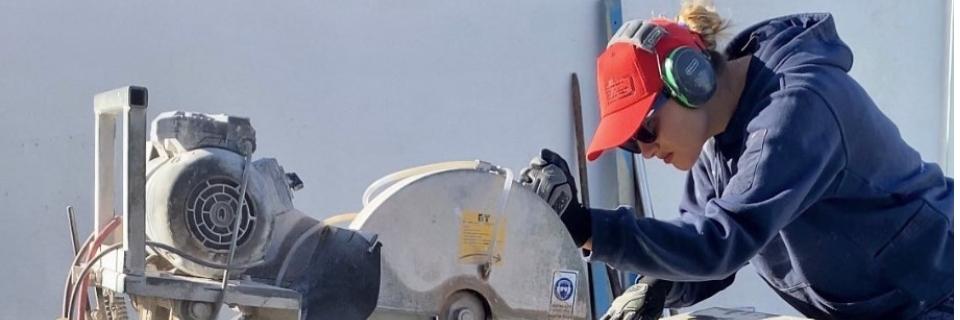
Applications Open For Study Subsidies To Boost NSW Healthcare Workforce
2024 Youth Parliament NSW Applications Now Open
The next generation of youth leaders is invited to apply to participate in the Y NSW's Youth Parliament program in 2024 with submissions now open.
Young people in Years 10, 11 and 12 (or equivalent age) in all 93 NSW state electorates are invited to express interest.
The Y (formerly YMCA) Youth Parliament provides a unique platform for individuals to actively participate in the democratic process and advocate for issues that they are passionate about.
The Y NSW is calling on young people from across the state to get involved. No experience is required, and people from diverse backgrounds are encouraged to apply, with financial sponsorships open to Aboriginal and Torres Strait Islander people, people living with a disability, individuals who identify as LGBTQIA+, those experiencing financial hardship, living in out-of-home care or rural areas, and refugee and asylum-seekers.
"At the Y, we believe in the power of inspired young people and Youth Parliament offers the opportunity for our youth to learn about the parliamentary system, develop critical thinking and public speaking skills, and engage in constructive debates about issues that matter to them and their communities," explained Executive Director/Interim CEO of the Y NSW Prue Warrilow.
"Participants will have the chance to draft, debate, and advocate for mock youth-focused legislation, gaining invaluable insights into the workings of government and policy development.
"Young parliamentarians also participate in a training camp in April and a sitting held in July in NSW Parliament next year. The Y then works actively to coordinate opportunities for the participants to present their Youth Bills to Ministers and other community leaders for consideration," continued Ms Warrilow.
Youth Parliament has supported more than 1,000 participants over the last decade with 97 per cent of participants surveyed saying they felt more empowered to advocate for issues in their local communities. Testament to the value of the program, former Youth Parliamentarians have gone on to become Members of Parliament and community leaders of influence and return to the Youth Parliament program as guests and mentors.
"We are particularly excited to welcome and encourage participation from young leaders of diverse backgrounds and those living in rural and remote communities, whose unique perspectives and experiences play a crucial role in shaping the discussions and policies at the Youth Parliament," added Ms Warrilow.
"Their active engagement and representation are vital in ensuring that the voices of all youth, regardless of location, are heard and considered in the decision-making processes that will affect our collective future," she continued.
17-year-old Cooma local Josh Abrokwah represented the Snowy Manaro region in the 2023 program and worked on a bill that addressed issues faced by migrants relocating to rural areas. Josh said he hopes the experience will enhance his academic career ambitions in international relations and praised the program for providing "activities such as mock debates, the chance to better our public speaking skills, and develop our parliamentary knowledge".
17-year-old Parramatta local, Rachel Lao was a 2023 Youth Parliament participant and is passionate about gender quality. Rachel was part of the NSW 2023 Women's Committee who put forward a bill to support mothers' reintegration into the workforce after maternity leave.
"The Youth Parliament program provides the unique opportunity to not only connect with people who have various perspectives, but who are willing to debate diplomatically about social issues," explained Ms Lao.
"I think that it's really encouraging to see the activism of our generation. Youth Parliament teaches participants how to lead and engage in debate that is productive and has the potential to make change.
"The connections and friendships I have made through Youth Parliament this year are invaluable and I know that my peers will be using their voices and actions to make change beyond their involvement in this program," she continued.
To apply to take part in the 2024 Youth Parliament, young people should visit ymcansw.org.au/community-services/youth/youth-parliament/ and submit their application before 9 February 2024.
School teachers and Members of Parliament can also nominate a young person.
School Leavers Support
- Download or explore the SLIK here to help guide Your Career.
- School Leavers Information Kit (PDF 5.2MB).
- School Leavers Information Kit (DOCX 0.9MB).
- The SLIK has also been translated into additional languages.
- Download our information booklets if you are rural, regional and remote, Aboriginal or Torres Strait Islander, or living with disability.
- Support for Regional, Rural and Remote School Leavers (PDF 2MB).
- Support for Regional, Rural and Remote School Leavers (DOCX 0.9MB).
- Support for Aboriginal and/or Torres Strait Islander School Leavers (PDF 2MB).
- Support for Aboriginal and/or Torres Strait Islander School Leavers (DOCX 1.1MB).
- Support for School Leavers with Disability (PDF 2MB).
- Support for School Leavers with Disability (DOCX 0.9MB).
- Download the Parents and Guardian’s Guide for School Leavers, which summarises the resources and information available to help you explore all the education, training, and work options available to your young person.
School Leavers Information Service
- navigate the School Leavers Information Kit (SLIK),
- access and use the Your Career website and tools; and
- find relevant support services if needed.
Word Of The Week: Temperament
Noun
1. a person's or animal's nature, especially as it permanently affects their behaviour. 2. the adjustment of intervals in tuning a piano or other musical instrument so as to fit the scale for use in different keys.
From late Middle English, borrowed from Middle French tempérament, from Latin temperamentum ‘correct mixture’, from temperare ‘mingle’. In early use the word was synonymous with the noun temper. Late 14c., "proportioned mixture of elements," from Latin temperamentum "proper mixture, a mixing in due proportion," from temperare "to mix in due proportion, modify, blend; restrain oneself". In old medicine, it meant a combination of qualities (hot, cold, moist, dry) that determined the nature of an organism; thus also "a combination of the four humours (sanguine, choleric, phlegmatic, and melancholic) that made up a person's characteristic disposition." General sense of "habit of mind, natural disposition" is from 1821.
Compare temper (verb)
late Old English temprian "to moderate, bring to a proper or suitable state, to modify some excessive quality, to restrain within due limits," from Latin temperare "observe proper measure, be moderate, restrain oneself," also transitive, "mix correctly, mix in due proportion; regulate, rule, govern, manage." This is often described as from Latin tempus "time, season" (see temporal), with a sense of "proper time or season." But as the root sense of tempus seems to be "stretch," the words in the "restrain, modify" sense might be from a semantic shift from "stretching" to "measuring" ). Meaning "to make (steel) hard and elastic" is from late 14c. Sense of "tune the pitch of a musical instrument" is recorded from c. 1300. Related: Tempered; tempering.
6 questions you should be ready to answer to smash that job interview

With the new year underway employers are beginning to resume normal business activities and restart their hiring process. Similarly, many school and university graduates are beginning their job search after a well-earned break.
While some employers are using increasingly sophisticated approaches to recruiting such as psychometric testing and artificial intelligence, interviews remain one of the most common selection methods.
If you have been invited to a job interview, congratulations, as it likely means you have been shortlisted for the role. However, for many people, interviews can be an unnerving process. Not only do they require candidates to think on their feet, but also to create a positive impression of themselves as a potential co-worker.
With that in mind, it always pays to prepare by anticipating what will be discussed and practising your answers. Here are six types of questions you may be asked:
1. Tell Me A Bit About Yourself?
An interview will often start with broad questions about your background and interest in a job. These may include questions such as: “What motivated you to apply for this role?” or “Tell me about your long-term career aspirations”.
For these types of questions, a convincing answer will highlight relevant skills you can bring to the role. These professional experiences do not have to come from the same type of position. For instance, if you were applying for a customer service job, you might cite communication and problem-solving methods you used on a student team project.

A convincing answer will focus on intrinsic motivation: specifically, the aspects of the job you find interesting, enjoyable or otherwise rewarding. These could involve working with people, solving tricky business problems or making a social impact. Avoid negative remarks about your current employer and sources of extrinsic motivation - such as money or benefits - unless part of a salary negotiation.
Your answer will also show how the role aligns with your own values. For instance, if you are applying for a teaching position, you could highlight your belief in the importance of education, as well as anything about the school you admire, such as its program of extracurricular activities.
2. How Did You Resolve A Particular Problem In The Past?
Behavioural questions require candidates to provide examples of the past actions they took to manage situations. For instance: “Tell me about a time when you received a customer complaint. What actions did you take, and what was the outcome?” Their objective is to predict how candidates will behave in similar situations.
You can prepare for these questions by studying the job selection criteria and anticipating the questions the interviewer may ask.
If you do not have the relevant experience for one of the questions, you can say that you can’t recall a specific example, but you could outline how you would deal with the situation described in the question.
3. What Are Your Weaknesses?
Interviewers will often ask about what you see as your greatest strengths and weaknesses.
The strengths part of this question enables you to highlight your knowledge and skills most relevant for the role. In general, it is a good idea to provide examples of specific accomplishments that illustrate these capabilities.
The weaknesses can be addressed by framing “weaknesses” as professional aspirations. In general, it is a good idea to focus on a capability that is non-essential for the role, in which you would like to gain experience. For instance, if you are not a confident public speaker but recognise it as a necessary for your long-term career, you could say it is a skill you would like to work on.

By expressing willingness to receive further training and development, you can leave a much more positive impression than simply listing your current shortcomings.
4. What Are Your Salary Expectations?
Usually, pay negotiations will occur after an offer has been made, but sometimes the topic will come up during the interview.
Before stating your expectation, it is wise to find out the salary and other benefits associated with the role. If the salary has not been listed in the job description, you should ask the employer what the budgeted salary range for the position is.
Ahead of the interview, do some research and find out what is typical for the role you are applying for based on your level of experience.
Be careful about disclosing your current salary; this information can provide a baseline that can make it difficult to negotiate a higher salary. If you are asked this question, you can politely decline to answer or indicate the information is between yourself and your current employer.
5. Inappropriate Or Illegal Questions
Unfortunately, some employers may ask inappropriate or illegal questions. These may relate to relationship status, carer responsibilities, childhood planning, physical or mental health, cultural or ethnic background and union activity.
If you are asked an inappropriate question, you can politely ask the interviewer how that information would be relevant to your ability to perform the job.
Ultimately, job candidates have a right to refuse to answer such questions, and employers who ask them may open themselves to legal action through the Fair Work Commission, Fair Work Ombudsman or the Australian Human Rights Commission.
6. Do You Have Any Questions For Me?
Often, the interviewer will invite the candidate to ask their own questions. Thoughtfully selected questions can leave a positive lasting impression.
In this part of the interview, you can clarify any aspect of the role you feel unsure about, such as the working hours. It can also be good to do some research on the organisation and to ask some more specific questions about its clients, projects, or long-term plans.
Beyond the specific requirements of the role, a good topic to ask about is the team and organisational culture. You could, for example, ask what a typical day in the life of a team member would look like.
At the end of the interview, you should ask about the next steps including when you should expect to hear back from them.
One final thing to consider about an interview is that it is a two-way process; you are also interviewing the employer to see if the job would be a good fit for you personally and professionally. If the role, organisation or people seem unappealing after the interview process, then it is wise to look elsewhere.![]()
Timothy Colin Bednall, Associate Professor in Management, Swinburne University of Technology
This article is republished from The Conversation under a Creative Commons license. Read the original article.
Become a beach scientist this summer and help monitor changing coastlines

When you arrive at your favourite beach these summer holidays, you may notice something different about the coast.
With the triple-dip La Niña now making way for El Niño, our beaches have been through a rollercoaster ride. Some beaches have been completely stripped of sand, while others have grown very wide.
In the past, such changes went mostly unrecorded. However, thanks to a project known as CoastSnap, coastal data is now being collected like never before. Using designated camera cradles installed at beach viewpoints, CoastSnap uses community snapshots taken on smartphones to track beach change.
Almost 50,000 photos have been collected so far. They have revealed a varying picture in recent years: from dramatic beach loss during La Niña storms three years ago, to 60 metres of beach growth in recent months. So with smartphones as commonplace as towels and sunscreen in the beach bag, why not add coastal data collection to your list of holiday activities this summer?

Turning Beach Snaps Into Scientific Data
Through CoastSnap, we installed a network of stainless-steel camera cradles along coastal trails all around the world. These camera cradles are positioned at a perfect vantage point for tracking changes to the coast – whether it be due to rising sea levels, extreme storms or other factors.
All you need to do is place your camera in the cradle, take a photo and upload it using the QR code at the station. Because the position and angle of the photo is always the same, over time these snaps reveal how the beach is changing.
As well as being a powerful visual record, sophisticated algorithms turn each photo into miniature satellite images that are used to precisely measure shoreline position. This is done using a process known as photogrammetry, in which pixels in the image are rearranged as though they had been taken from space.
This aerial view enables beach change to be easily measured. Also, since the exact time of photo capture is recorded, the effects of tides as they vary throughout the day can be accounted for.

From Local To Global: A Network Of Community Beach Monitoring
From its beginnings on the Northern Beaches of Sydney in 2017, new CoastSnap stations have been rolled out all around the world. We now have more than 350 CoastSnap stations in 31 countries and across five continents.
This makes it the largest coordinated network of coastal monitoring worldwide – and all the data is collected by the community.
In Ghana, West Africa, students from local schools are using CoastSnap to better understand how the “golden seaweed” sargassum impacts fishing communities.
On Prince Edward Island in Canada, CoastSnap captured the damage done by Hurricane Fiona last year. The same stations are now being used to track the post-hurricane dune recovery.
In Australia, there are currently 125 CoastSnap stations around the country. This enables a big-picture assessment of the coastal consequences of large-scale weather events. For example, during last year’s record rainfall in eastern Australia, extreme erosion was observed at CoastSnap stations from Queensland to southern New South Wales. The images reveal scouring by floodwaters was the main cause of beach erosion in many locations, rather than wave action as is usually the case.
Monitoring The Present To Plan For The Future
Data on coastal change is crucial for managing coastlines into the future. This is particularly important as sea levels continue to rise, storm tracks shift, and beaches come under increasing pressure from overdevelopment.
With several CoastSnap stations already operating for over six years now, this growing record is beginning to observe longer-term changes to the coast. This data is being fed into numerical models that help coastal researchers predict what the coastline will be like in the coming decades – and plan accordingly.
Smart coastal planning will help buffer climate change impacts. This will go some way to ensure future generations can enjoy the coast like we do today.
So as you head out to the beach this summer, look out for your nearest CoastSnap station and help monitor the coastline – it really is a “snap”!![]()
Mitchell Harley, Scientia Senior Lecturer, UNSW Sydney and Fred Chaaya, Project Engineer, UNSW Water Research Laboratory
This article is republished from The Conversation under a Creative Commons license. Read the original article.
When you sit down to build a sandcastle, take a look around you: the beach is already sculpting

Arenicola, or lugworms, make some of the most beautiful structures on the beach. Little piles of wet sand are cast in a swirl from their rear end as part of their feeding cycle.
They are but one of an untold number of other participants in the constant evolution of forms at our water’s edge. Co-contributors include the wind, birds, rain, foliage, foot traffic and detritus, all shaping sand and associated debris into mini peaks and troughs, lines, blobs and tracks.
The forming of grains into what we commonly call a sandcastle on the other hand, speaks to a particularly human intentionality. Centred around the activity of building, these edifices rise and fall through a wild negotiation of the intent of a person and the intent of the materials they work with.
This dynamic and fickle nature of the granular shells, quartz, coral, glass and rock is perhaps its greatest appeal. Accrued since childhood, our knowledge of sand’s properties sits deep within our personal sculptural memory.

In Collaboration With The Beach
Building a sandcastle is a response to the full beach environment as a collaborator. We attune ourselves to the quality of the sand, marvel at the comings and goings of the water and orient our construction for the wind’s abrasive blast.
We are vigilant to dogs’ unintended mark making, and backward running ball catchers who involuntarily progress our work from castle to ruin. Moulds that reproduce their internal structure can be the age-old bucket, or the form can be loosened up using towels, sandals, buckets or a friend’s back … and perhaps said friend can be embedded in the structure if required.
We can include tunnels (that will sadly collapse) and moats and complete our work with a final (for me) infuriating flourish of seaweed and sticks.
No one methodology will explain to the uninitiated how to undertake the making of a sandcastle, and this is how it should be. Adopting an attentive mindset can open the possibilities for this immersive and bodily task.
Attending To Sand
Particular qualities of sand can be revealed to those who remain aware. Building a sandcastle on a day after the rain can change the material and the way it presents.
Rain falling from the sky onto fine sand creates a crispy layer over the drier sand below. It is the crunchy feeling underfoot for those daily pioneers to the beach who arrive before these fragile structures are trampled underfoot. Rain creates a crust that would be difficult to produce any other way.

This and other states of sand could be considered on a continuum of material behaviours, from dry to wet, from dispersed to grouped, from fine to coarse, from quartz, through skeleton, to shell, or from a Newtonian to a non-Newtonian fluid.
In construction there is sharp sand, fat sand and sand of specific dimensions. The sand at the beach is the sand of that beach, undifferentiated by industrial ecologies and taken at its face value. Sluggish waterlogged mass, or blow away dust structure, compact sand, beige, black or grey – its specific qualities determining the outcome as much as the plan we bring to the task.
Working Against Collapse
Making objects with sand at the beach is a most egalitarian form of art making. Critiques of our constructions are generally of the generous kind. Passersby will applaud the magnitude of our creation, share in the joy as water fills our castle’s moats, and laugh shamelessly when the whole structure collapses.

Sand workers on the beach can adopt a critical position relative to the way the sand acts and be mesmerised by its characteristics as these present themselves. We can understand that sand slumps in a particular way, and compact it in anticipation. Or we can simply burrow furiously as it falls off in great slabs. Each reflects the personal attitude of the builder; neither is better than the other.
Seagrass, kelp, stones, glass and the egg sacs of moon snails may all present themselves for inclusion in a sandcastle. Driftwood will break through hard sand, create moats, or delineate space; large shells make excellent tools for moving bulk material, although using the body for scooping and compacting, or shoving and dragging, is perhaps the ideal way to engage the senses in the job. Collapse is the thing you work against.
Digging down and water begins to pool, piling the sand high and your castle begins to emerge.![]()
Mark Friedlander, PhD Candidate, Victorian College of the Arts, The University of Melbourne
This article is republished from The Conversation under a Creative Commons license. Read the original article.
A short history of sunscreen, from basting like a chook to preventing skin cancer
Laura Dawes, Australian National UniversityAustralians have used commercial creams, lotions or gels to manage our skin’s sun exposure for nearly a century.
But why we do it, the preparations themselves, and whether they work, has changed over time.
In this short history of sunscreen in Australia, we look at how we’ve slathered, slopped and spritzed our skin for sometimes surprising reasons.
At First, Suncreams Helped You ‘Tan With Ease’

Sunscreens have been available in Australia since the 30s. Chemist Milton Blake made one of the first.
He used a kerosene heater to cook batches of “sunburn vanishing cream”, scented with French perfume.
His backyard business became H.A. Milton (Hamilton) Laboratories, which still makes sunscreens today.
Hamilton’s first cream claimed you could “ Sunbathe in Comfort and TAN with ease”. According to modern standards, it would have had an SPF (or sun protection factor) of 2.
The Mirage Of ‘Safe Tanning’
A tan was considered a “modern complexion” and for most of the 20th century, you might put something on your skin to help gain one. That’s when “safe tanning” (without burning) was thought possible.

Sunburn was known to be caused by the UVB component of ultraviolet (UV) light. UVA, however, was thought not to be involved in burning; it was just thought to darken the skin pigment melanin. So, medical authorities advised that by using a sunscreen that filtered out UVB, you could “safely tan” without burning.
But that was wrong.
From the 70s, medical research suggested UVA penetrated damagingly deep into the skin, causing ageing effects such as sunspots and wrinkles. And both UVA and UVB could cause skin cancer.
Sunscreens from the 80s sought to be “broad spectrum” – they filtered both UVB and UVA.
Researchers consequently recommended sunscreens for all skin tones, including for preventing sun damage in people with dark skin.
Delaying Burning … Or Encouraging It?
Up to the 80s, sun preparations ranged from something that claimed to delay burning, to preparations that actively encouraged it to get that desirable tan – think, baby oil or coconut oil. Sun-worshippers even raided the kitchen cabinet, slicking olive oil on their skin.
One manufacturer’s “sun lotion” might effectively filter UVB; another’s merely basted you like a roast chicken.
Since labelling laws before the 80s didn’t require manufacturers to list the ingredients, it was often hard for consumers to tell which was which.
At Last, SPF Arrives To Guide Consumers
In the 70s, two Queensland researchers, Gordon Groves and Don Robertson, developed tests for sunscreens – sometimes experimenting on students or colleagues. They printed their ranking in the newspaper, which the public could use to choose a product.
An Australian sunscreen manufacturer then asked the federal health department to regulate the industry. The company wanted standard definitions to market their products, backed up by consistent lab testing methods.
In 1986, after years of consultation with manufacturers, researchers and consumers, Australian Standard AS2604 gave a specified a testing method, based on the Queensland researchers’ work. We also had a way of expressing how well sunscreens worked – the sun protection factor or SPF.
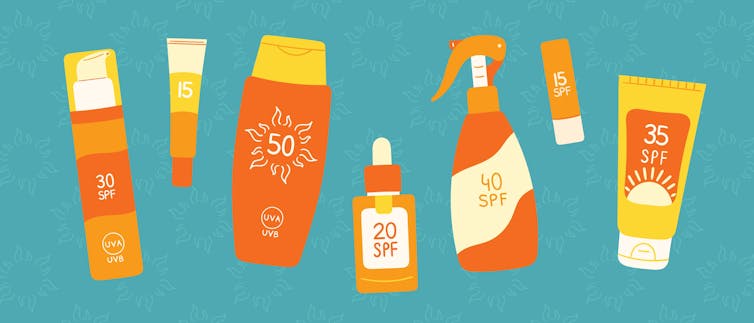
This is the ratio of how long it takes a fair-skinned person to burn using the product compared with how long it takes to burn without it. So a cream that protects the skin sufficiently so it takes 40 minutes to burn instead of 20 minutes has an SPF of 2.
Manufacturers liked SPF because businesses that invested in clever chemistry could distinguish themselves in marketing. Consumers liked SPF because it was easy to understand – the higher the number, the better the protection.
Australians, encouraged from 1981 by the Slip! Slop! Slap! nationwide skin cancer campaign, could now “slop” on a sunscreen knowing the degree of protection it offered.
How About Skin Cancer?
It wasn’t until 1999 that research proved that using sunscreen prevents skin cancer. Again, we have Queensland to thank, specifically the residents of Nambour. They took part in a trial for nearly five years, carried out by a research team led by Adele Green of the Queensland Institute of Medical Research. Using sunscreen daily over that time reduced rates of squamous cell carcinoma (a common form of skin cancer) by about 60%.
Follow-up studies in 2011 and 2013 showed regular sunscreen use almost halved the rate of melanoma and slowed skin ageing. But there was no impact on rates of basal cell carcinoma, another common skin cancer.
By then, researchers had shown sunscreen stopped sunburn, and stopping sunburn would prevent at least some types of skin cancer.
What’s In Sunscreen Today?
An effective sunscreen uses one or more active ingredients in a cream, lotion or gel. The active ingredient either works:
“chemically” by absorbing UV and converting it to heat. Examples include PABA (para-aminobenzoic acid) and benzyl salicylate, or
“physically” by blocking the UV, such as zinc oxide or titanium dioxide.
Physical blockers at first had limited cosmetic appeal because they were opaque pastes. (Think cricketers with zinc smeared on their noses.)
With microfine particle technology from the 90s, sunscreen manufacturers could then use a combination of chemical absorbers and physical blockers to achieve high degrees of sun protection in a cosmetically acceptable formulation.
Where Now?
Australians have embraced sunscreen, but they still don’t apply enough or reapply often enough.
Although some people are concerned sunscreen will block the skin’s ability to make vitamin D this is unlikely. That’s because even SPF50 sunscreen doesn’t filter out all UVB.
There’s also concern about the active ingredients in sunscreen getting into the environment and whether their absorption by our bodies is a problem.
Sunscreens have evolved from something that at best offered mild protection to effective, easy-to-use products that stave off the harmful effects of UV. They’ve evolved from something only people with fair skin used to a product for anyone.
Remember, slopping on sunscreen is just one part of sun protection. Don’t forget to also slip (protective clothing), slap (hat), seek (shade) and slide (sunglasses).![]()
Laura Dawes, Research Fellow in Medico-Legal History, Australian National University
This article is republished from The Conversation under a Creative Commons license. Read the original article.
From today, new regulations make it harder to access vapes. Here’s what’s changing

This year the Australian government is introducing a series of measures to restrict the availability of vapes, starting today.
The new reforms address loopholes in the current laws that allow easy access to highly addictive, flavoured, cheap, and harmful vaping products that are marketed to kids.
Vaping products will still be available through a prescription for anyone using them to quit smoking. But the Therapeutic Goods Administration will tightly regulate prescription-only vapes.
So what are the new regulations? And why are they needed?
What Was Wrong With The Previous Regulations?
Before the 2024 rule changes, vaping products imported and sold in Australia were required to be nicotine-free, unless accessed through a pharmacy with a prescription from a qualified health professional.
Individual users were also allowed to import nicotine-vapes from overseas through the Personal Importation Scheme, provided they had a valid prescription.
The vaping industry – including manufacturers, importers and retailers – exploited these loopholes and openly sold products containing nicotine to young people by falsely claiming the products were “nicotine-free”.
But the only way to tell the difference between a nicotine and nicotine-free vape is to test it in a lab – a time consuming and expensive endeavour, given the high volume of products imported.
So enforcing the nicotine/nicotine-free standards essentially proved near impossible against an industry determined to addict a new generation of users.
So What’s Changing?
The new laws help tidy up the confusion and make the rules much clearer and easier to enforce.
They also address the ready access to vapes, which is the single biggest challenge to preventing young people from vaping.
The regulatory changes will be rolled out in three phases:
1. Importation Ban
The first phase, being implemented from today, includes a ban on the importation of all disposable, single-use vapes. These are the products that are most popular with young people and come in a variety of flavours, including fruit, confectionery, cocktails and tobacco.
Single-use, disposable vapes cannot be refilled, but come in a wide range of sizes, from a few hundred of puffs, to upwards of 10,000 puffs.
Disposable vapes have flooded into Australia and fuelled the explosive rise in vape use among teens and young adults.

The importation of all other vapes, including refillable products, will be banned from March 1 2024, unless importers hold a licence and permit from the Office of Drug Control to lawfully import vapes. These legally imported vapes will only be sold in pharmacies to users with a prescription.
The Personal Importation Scheme allowance for vapes will also end on March 1 2024, meaning all vape users must access vaping products from a pharmacy in Australia.
This initial phase, while effectively stopping illegal vapes from coming in to Australia, doesn’t address the high volume of product that is already here. Retailers will be able to continue to sell their existing stock of “nicotine-free” vapes. But as we know, these products often do contain nicotine.
2. Domestic Manufacture And Sales Ban
The next phase of reforms, expected to come into effect in late 2024, will eliminate the retail sale of all types of vaping products, regardless of their claimed nicotine content.
This second phase will include a ban on the manufacture, supply, advertising and commercial possession of vapes that fall outside of the prescription framework.
These changes will require amendments to the Therapeutic Goods Act 1989, and will likely be introduced in Autumn 2024 for federal Parliament’s consideration, but the exact date is yet to be set.
3. Prescription Access

The prescription access to vapes for therapeutic purposes is also being changed to allow access to products that meet a quality standard.
From today, all medical and nurse practitioners will now be able to prescribe therapeutic vapes for quitting smoking or to manage nicotine dependence.
Further changes that strengthen the standards for therapeutic vapes are expected to be made by March 1 2024. For example, prescription vapes will have limits on the amount of nicotine, the types of flavours permitted, and be in standardised medical-style packaging.
What Do The Changes Mean For Vape Users?
Vapes for therapeutic purposes will continue to be permitted in Australia and more medical professionals will be able to prescribe them. Prior to 2024, only select medical professionals could prescribe vapes (they had to register as an authorised prescriber). This is being widened to ensure the prescription model works as intended.
While vaping products will be available by prescription it’s important to know they remain unapproved medicines that have not been subjected to the same rigorous safety and effectiveness testing as other evidence-based quit smoking aids.
If you’re thinking of quitting smoking (or quitting vaping), get support by talking to your doctor, calling the Quitline (13 7848), or accessing help online.![]()
Becky Freeman, Associate Professor, School of Public Health, University of Sydney
This article is republished from The Conversation under a Creative Commons license. Read the original article.
Gen Z and millennials have an unlikely love affair with their local libraries

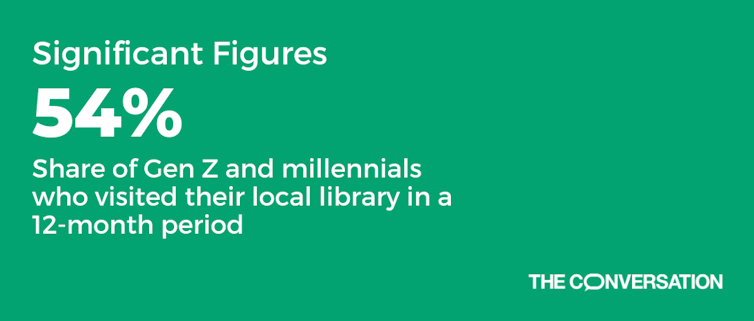
A phone fixation may seem at odds with an attraction to books. But the latter may offer a much-needed reprieve from the former.
In our recent study of American Gen Z and millennials, we discovered that 92% of them check social media daily; 25% of them check multiple times per hour.
Yet in that same nationally representative study, we also found that Gen Z and millennials are still visiting libraries at a healthy clip, with 54% of Gen Zers and millennials trekking to their local library in 2022.
Our findings reinforce 2017 data from the Pew Research Center, which showed that 53% of millennials had gone to their local library over the previous 12 months. By comparison, that same study found that 45% of Gen Xers and 43% of baby boomers visited public libraries.
So why might Gen Z and millennials – sometimes characterized as attention-addled homebodies – still see value in trips to the public library?
A Preference For Print
We found that Gen Zers and millennials prefer books in print over e-books and audiobooks, even though their other favorite reading formats are decidedly digital, such as video game chats and web novels. American Gen Zers and millennials read an average of two print books per month – nearly double the average for e-books or audiobooks, according to our data.
The preference for print also manifests itself in the types of books Gen Z and millennials are borrowing and buying: 59% said they prefer the same story in graphical or manga format than in text only.
And while some graphic novels, comics and manga can be read on a screen, print is where these intricately illustrated books truly shine.
Beyond Reading
We were most surprised by our finding that 23% of Gen Zers and millennials who don’t identify as readers nonetheless visited a physical library in the past 12 months.
It’s a reminder that libraries don’t just serve as a repository for books. Patrons can record podcasts, make music, craft with friends or play video games. There are also quiet spaces with free Wi-Fi, perfect for students or people who work remotely.
Younger generations tend to be more values driven than older ones, and libraries’ ethos of sharing seems to resonate with Gen Zers and millennials – as does a space that’s free from the insipid creep of commercialism. At the library, there are no ads and no fees – well, provided you return your books on time – and no cookies tracking and selling your behavior.
U.S. census data also shows that younger generations are more racially diverse than older generations.
Our survey found that 64% of Black Gen Zers and millennials visited physical libraries in 2022, a rate that’s 10 percentage points higher than the general population. Meanwhile, Asian and Latino Gen Zers and millennials were more likely than the general population to say that browsing library shelves was a preferred way to discover new books.

A Crucial Moment For Libraries
Though libraries have been forced to reckon with book bans and the politicization of public spaces, Gen Zers and millennials still see libraries as a kind of oasis – a place where doomscrolling and information overload can be quieted, if temporarily.
Perhaps Gen Zers’ and millennials’ library visits, like their embrace of flip phones and board games, are another life hack for slowing down.
Printed books won’t ping you or ghost you. And when young people eventually log back on to their devices, books make excellent props for #BookTok, the community on TikTok where readers review their favorite books.![]()
Kathi Inman Berens, Associate Professor of Book Publishing and Digital Humanities, Portland State University and Rachel Noorda, Associate Professor of Publishing, Portland State University
This article is republished from The Conversation under a Creative Commons license. Read the original article.
Want to get into stargazing? A professional astronomer explains where to start
Jonti Horner, University of Southern QueenslandThere are few things more peaceful and relaxing than a night under the stars. Through the holidays, many people head away from the bright city lights to go camping. They revel in the dark skies, spangled with myriad stars.
As a child, I loved such trips, and they helped cement my passion for the night sky, and for all things space.
One of my great joys as an astronomer is sharing the night sky with people. There is something wondrous about helping people stare at the cosmos through a telescope, getting their first glimpses of the universe’s many wonders. But we can also share and enjoy the night sky just with our own eyes – pointing out the constellations and the planets, or discovering the joys of watching meteor showers.
It is easy to be bitten by the astronomy bug, and a common question I get asked is “how can I get more into stargazing?”. Here are ways to get started in this fascinating and timeless hobby that won’t break the bank.
Learning The Night Sky
A good place to start if you’re a budding astronomer is to learn your way around the night sky. When I was young, this involved getting hold of a planisphere (a star map, you can make your own here), or a good reference book.
Today, there are countless good apps to help you find your way around the night sky.
A great example of such an app is Stellarium – a planetarium program allowing you to view the night sky from the comfort of your room or to plan an evening’s observing ahead of schedule.
To memorise the night sky, you can try star hopping. Pick out a bright, famous, easy to find constellation, and use it as a guide to help you identify the constellations around it.
Learn one constellation per week, and within a year, you’ll be familiar with most of the constellations visible from your location.
Let’s use Orion as an example. The slider below shows images from Stellarium, with Orion riding high in the sky on a summer’s evening. I’ve added arrows to show how you can use Orion (shown in the centre of the map below) to hop around the summer sky.
To learn the constellations around Orion, your task is relatively straightforward. Head out on a clear, dark summer’s night, and find Orion high to the north. The three stars of Orion’s belt are a fantastic signpost to Orion’s neighbours.
If you follow the line of the belt upwards and to the right, you come to Sirius – the brightest star in the night sky, and the brightest star in Canis Major, the big hunting dog. Carry the line on and curve to the left as you go, and you’ll find Canopus, the second brightest star in the sky.
Now come back to Orion’s belt, and follow its line down and to the left. You’ll come to a V-shaped group of stars, including the bright red Aldebaran. This is the Hyades star cluster (with Aldebaran a foreground interloper), which makes up the head of Taurus, the bull.
Take the line further, and you come to the Pleiades – often known as the Seven Sisters – a beautiful star cluster easily visible to the naked eye.
Back to Orion again. This time, you’re going to draw a line from Rigel (the bright star at the top-left of Orion’s boxy body) through Betelgeuse (the bright red star at the lower-right of the box) and continue it towards the horizon. This takes you to Gemini – the twins.
Just by using Orion as the signpost, you can find your way to a good number of constellations (the cyan line points to Lepus, the hare; the white line to Canis Minor, the little hunting dog).
By star hopping, you’ll slowly but surely learn your way around the night sky until the constellations become familiar friends.
Virtual Observing
Looking at the sky with the naked eye is a wonderful thing, but it’s also great to zoom in and see more detail.
What if you don’t have access to binoculars or a telescope of your own? Thankfully, software like Stellarium can give you a fantastic virtual observing experience.
Imagine you want to see Saturn’s rings – a spectacular sight through even a small telescope. You can easily do this with Stellarium. Find Saturn by using the search bar and click on it to bring up the planet’s info.
Click on the cross-hair symbol to “lock on”, then zoom in. The further you zoom in, the more you’ll see. You can even run the clock forwards or backwards to see the planet’s moons move in their orbits, or the tilt of Saturn’s rings changing from our viewpoint over time.
A virtual observing session is as simple as that – just pan around the sky until you find something you want to see, and zoom in.

A Hobby Best Shared
Now, a virtual observing session is great, but it pales compared to the real thing. I’d recommend using planetarium programs like Stellarium to figure out what you want to see, then heading out to look at it with your own eyes.
Astronomy is a wonderful hobby, and one that is best shared. Most towns and cities have their own astronomy clubs, and they’re usually more than happy to welcome guests who want to gaze at the night sky.
I joined my local astronomy society, the West Yorkshire Astronomical Society in the United Kingdom, when I was just eight years old. I owe them so much. The members were incredibly supportive of a young kid with so many questions, and I genuinely believe I would not be where I am today without their help. As a member, I saw firsthand just how fantastic the amateur astronomy community is.

At the society, we had weekly talks on astronomy, given by the club members and visiting astronomers from local universities. We also had regular night sky viewing nights, using the society’s very own telescope – a behemoth the members had built themselves.
People who are passionate about their hobby love nothing more than sharing it with others. The members of astronomical societies are fantastic guides to the night sky, and they often have incredible equipment they’re more than happy to share with you.
Both astronomy clubs and universities often offer public night sky viewing nights, which are the perfect opportunity to peer at the sky through a telescope, with an experienced guide on hand to find the most impressive sights to share.
So, if you want to learn more about the night sky, reach out to your local astronomy society – it could be the start of something very special.
If you want to find a local astronomy group, check out this list. If you’re a member of a group that isn’t listed, please reach out to get them to update the list using the ‘Contact Us’ link.![]()
Jonti Horner, Professor (Astrophysics), University of Southern Queensland
This article is republished from The Conversation under a Creative Commons license. Read the original article.
Want to buy a home telescope? Tips from a professional astronomer to help you choose
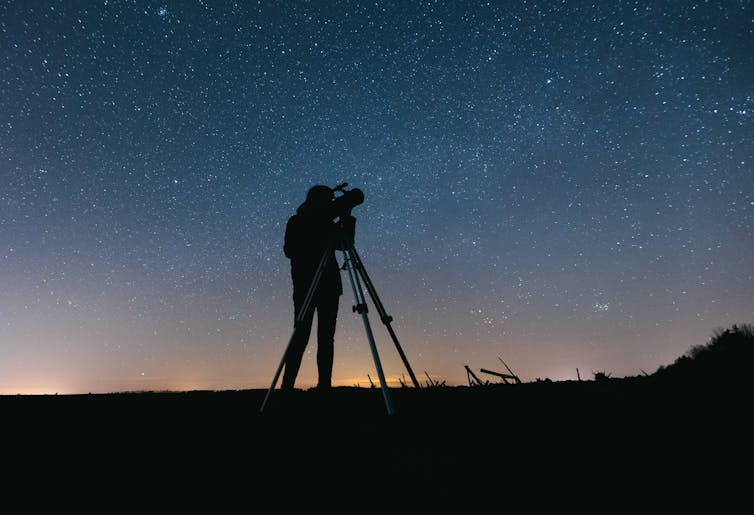
While the unaided eye or binoculars can reveal much of the night sky, a telescope reveals so much more. Seeing Saturn’s rings or the Moon’s craters with your own eyes can be an “oh wow” moment.
However, choosing the right telescope can be tricky. There are telescopes with lenses and telescopes with mirrors. Telescopes that are moved by hand and others that are electronically controlled. Telescopes also come in a range of sizes, with a trade-off between light-gathering power, portability and price.
While there’s much to consider, changes in pricing and technology mean spectacular views of the universe are more accessible than just a decade ago.
How Big Should The Aperture Be?
Aperture is fundamental for telescopes. The bigger the light-collecting lens or mirror, the fainter the objects you can see. Double the aperture from 50mm diameter to 100mm diameter, and the light-collecting area quadruples.

The aperture also limits the level of detail you can see, due to the diffraction (interference) of light.
Again, bigger is better – a larger aperture telescope will produce sharper images than a smaller aperture telescope of comparable design. Earth’s turbulent atmosphere also blurs images, which can limit the detail seen when the aperture is more than 150mm.
Sometimes cheaper telescopes are advertised by magnification, but a small telescope with extreme magnification just makes blurry images bigger without revealing more detail.
Refractor Or Reflector?
Should you buy a telescope with a refracting lens or a reflecting mirror? It depends what you want to look at, and your budget.
Refracting telescopes
Refracting telescopes can be good for viewing objects on Earth and in the sky. Refracting telescopes with short focal lengths (where light is brought to a focus near the lens) can be quite compact and good for low magnification views, which is great for sweeping across dark country skies.
However, there are catches. While 70mm aperture refracting telescopes can be quite affordable, bigger refractor telescopes are often more expensive than comparable reflecting telescopes.
Refracting telescopes also suffer from chromatic aberration – where different colours aren’t brought to a common focus – and this is particularly noticeable at high magnification when stars get coloured halos. This can be mitigated using complex lens designs, but that adds to the cost.
Reflecting telescopes
Reflecting telescopes use mirrors to focus light. These tend to be larger and don’t suffer from chromatic aberration.
Dobsonian telescopes have a simple Newtonian optical design and wooden mounts, and are a very cost effective (if sometimes bulky) option for larger apertures. Schmidt-Cassegrain and Maksutov telescopes, which use a combination of lenses and mirrors, are more compact (a big plus), but also more complex and expensive.
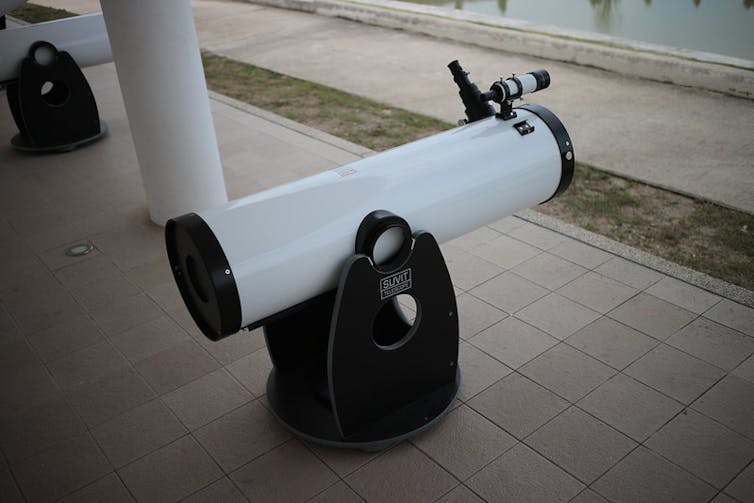
How Do I Find Things In The Sky? Depends On The Mount
Want to look at a celestial object? You will need to point your telescope in the right direction, keep it steady, and follow the object as it moves across the sky (due to Earth’s rotation).
To do this, a telescope needs a mount, which is often sold with the telescope but can also be bought separately. Mounts fall into two broad categories.
Equatorial mounts have an axis aligned with Earth’s axis, so a single motor can compensate for Earth’s rotation. These mounts were essential for taking long exposure images with telescopes prior to computers and tend to be relatively heavy.
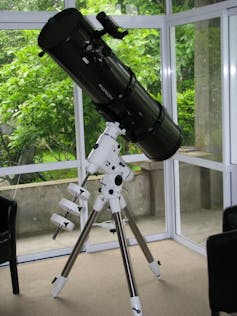
Alt-azimuth mounts have a vertical and a horizontal axis (how a camera is mounted on a tripod, for example), and tend to be cheaper and lighter than equatorial mounts. With the advent of cheap computing, they can now be used to automatically point at and track celestial objects.
To point a telescope at celestial objects you can move it manually or have electronics assist you, including “goto” mounts with motors that shift the telescope for you.
A completely manual telescope will be cheaper than a telescope with automation, but you will need to navigate the sky yourself.
Electronic assistance for navigating the sky is rapidly evolving and getting cheaper. Many telescopes on the market now use GPS and a smartphone app, which simplifies the process and makes everything more portable.
Do I Need A Finder Scope?
Regardless of how you point your telescope, having a 30–50mm aperture auxiliary “finder” scope can be useful for small telescopes and essential for larger telescopes.
Large telescopes typically view a tiny patch of the sky, which makes finding your way tricky. A finder scope with a wider view and crosshairs simplifies things. Even telescopes with goto electronics often need to be calibrated with bright stars and locating them is easier with a finder scope.
What About The Eyepiece?
An essential part of most telescopes is the eyepiece you look through. Sometimes decent telescopes are sold with quite cheap eyepieces, but it can be relatively inexpensive to upgrade to a better one.
A good start is a low-magnification eyepiece for sweeping views, and a high-magnification eyepiece for planets.
Plössl eyepieces are affordable and provide good views. More complex eyepieces that provide better views are also available, and far cheaper than they once were.
If you want to look at the Sun, you must get a specially designed solar filter. Never point a telescope (including the finder scope) at the Sun without filters – it can permanently damage eyes and shatter lenses.
What If I Want To Take Astro Photos?
Taking basic astronomical photos has become much easier with smartphones. While you can hold a phone to the telescope eyepiece for a photo of the Moon or a planet, you will get better results with an adapter that holds your phone securely in place.

Of course, better images can be taken with astronomy-specific cameras that can take very short exposures (for planets) or very long exposures (for fainter nebulae and galaxies). For long exposures, automatic tracking of celestial objects is essential, and that adds to a telescope’s price.
Smart telescopes are a relatively recent addition to the market. These goto telescopes have no eyepieces and only capture images electronically. As modern detectors are more sensitive than our eyes, they can capture quite spectacular images with a relatively small portable telescope, even when there’s light pollution.
However, you do lose the experience of seeing the universe directly with your own eyes through the eyepiece.
Try Before You Buy!

If there’s a local amateur astronomical society, you can sign up or attend a star party. There should be plenty of telescopes, and owners happy to wax lyrical about them.
A specialist shop can also give a direct experience of a telescope: its size and how it works (with limitations during daytime). For example, you may find a telescope is too bulky or technical for your needs.
Online shopping can save money, but may have less customer support than a local shop. You could also snap up a bargain buying second hand, and a seller may allow you to test their telescope on the Moon and planets before buying.
There’s a lot to take on board before buying a telescope. Aperture, size, cost and other factors need to be considered. But there are many good options out there, and with a good choice you can see some wondrous things. And perhaps have an “oh wow” moment.![]()
Michael J. I. Brown, Associate Professor in Astronomy, Monash University
This article is republished from The Conversation under a Creative Commons license. Read the original article.
What was the mantua? How a 17th-century gown transformed dressmaking and ushered in financial freedom for women

If you’ve watched many period dramas, you’ve probably seen a mantua before. Originating in France in the 1670s, this women’s garment consisted of lengths of t-shaped fabric that were pleated to create an unstiffened bodice with attached overskirts.
This gown was worn over a pair of stays (corset) and an often contrasting petticoat. The draping and folding of fabric created a front-opening gown.
What many people don’t realise, however, is how fundamentally this item of clothing altered women’s involvement in the fashion industry – and represented a ticket to financial freedom for an industry of female mantua makers.

What Was The Mantua?
After its invention in the 1670s, the new gown became immediately popular among fashionable Parisian women.
Although strict dress codes at the Versailles court of French King Louis XIV prohibited the wearing of mantuas, women at the English court helped popularise it in England.
By the 1680s, the mantua was widely worn in Western and Central Europe, as well as in European colonies around the world. It soon became the basis for all women’s gowns in the 18th century.
Popular versions of the mantua in 18th century included:
the loose style called a robe volante
the iconic robe à la française (sometimes called a sack gown) with its back pleats that draped to the floor, and
the tighter fitting robe à la anglaise (also known as English or Italian gowns).

Tailors Vs Mantua Makers
As well as changing the look of western fashions, the mantua radically changed women’s involvement in the fashion industry.
Before the 17th century, outer garments were usually made by male tailors. Apprenticeships and membership of guilds – the organisations that controlled most craft trades – were restricted to boys and men.
Women did participate informally in these professions. They sometimes worked alongside tailor family members (and some were fined for doing so) and widows were permitted to carry on the businesses of their deceased husbands.
Women had also historically worked as seamstresses or “silkwomen” making small linen or silk goods like underwear and accessories.

However, this began to change in the late 17th century during what came to be known as the consumer revolution – a period, beginning in the 1600s, that saw a significant jump in the consumption of luxury goods.
Significantly, in 1675, women in Paris and Rouen acquired their own, independent couturière (dressmaking) guilds and began to take over making women’s clothing from male tailors.
In London, guilds with dwindling memberships also began to permit paying female members.
Due to the considerable influence of France on western fashions, women in London began to train under French dressmakers, giving rise to what were known in English as mantua makers.
Dressmaking And Financial Freedom
From the 18th to 20th centuries, dressmaking and other fashion or textile-related industries were the main source of formal employment for women in Britain, Australia and the United States (alongside teaching and domestic service).
New training opportunities in dressmaking – coupled with historical peculiarities such as London’s feme sole status, which allowed married women to run businesses and have finances independent of their husbands – meant many women began to open their own businesses.
Single women often lived in houses with other mantua makers and their apprentices, working as teams. Married women usually operated in workshops in the family home alongside their husbands, many of whom worked as tailors.
By the mid-18th century, manuals instructing parents on craft apprenticeships for their children noted mantua making was a large trade
reckoned a genteel, as well as profitable Employ [for women], many of them living well and saving Money.
But several male tailoring guilds in Europe attempted to stop women working as mantua makers, claiming they were taking away their business. Additionally, many women who worked in the garment-making industries were poorly paid and often worked in cramped conditions.

Yet, many did rise above. French mantua makers were particularly popular, with women in London paying substantially more for gowns made by French women with access to the latest fashion knowledge in Paris.
Some became confidants of queens. The famous fashion merchant Marie-Jeanne “Rose” Bertin designed many of French queen Marie Antoinette’s gowns (her detractors labelled her the queen’s “minister of fashion”).
These networks gave these women access to vast amounts of clients and social capital. By the 19th century, senior dressmakers and milliners called modistes often ran their own luxury fashion houses in the West End of London.
Mantua making was also a significant business opportunity for women in Australia.
“M. Hayes”, Catherine Mellon and Martha Matthews were all “mantua makers and milliners” who advertised their services in the early years of the Sydney colony.
Legacies Of Mantua Makers
During the early years of the 19th century, mantuas fell out of use as new styles appeared. The term “dressmaker” also came to slowly replace the term “mantua maker”.
However, the gendered segregation of labour remained. During much of the 19th and 20th centuries, men were more likely to be tailors and have their clothing made by tailors. Women were more likely to be dressmakers and have their clothing made by dressmakers. The skills and techniques of each profession remained quite different.
With the advent of modern fast fashion, the skills of both tailors and dressmakers are fast being lost, and with it the knowledge of this revolutionary trade for women.![]()
Sarah Bendall, Research Fellow, Gender and Women's History Research Centre, Institute for Humanities and Social Sciences, Australian Catholic University
This article is republished from The Conversation under a Creative Commons license. Read the original article.
Jaws turns 50: reading Peter Benchley’s novel, you barely mind if its self-loathing characters are eaten by a ‘genius’ shark
Ari Mattes, University of Notre Dame AustraliaHow many times have you come out of the cinema and heard someone snidely remark they preferred the book, as though this somehow connects them to a richer, more highbrow tradition?
This might ring true when it comes to literary masterworks like F. Scott Fitzgerald’s The Great Gatsby, adapted into so-so versions nearly four decades apart (equally dull, for almost opposite reasons). But the reverse is often the case with popular fiction, which benefits from the immersive, visceral quality of the cinema.
Peter Benchley’s 1974 novel Jaws, which turns 50 this year, was a smash. Despite critics’ reservations, it was on the New York Times bestseller list for 44 weeks. Yet when we think of Jaws, images from Steven Spielberg’s 1975 film adaptation are what come to mind – along with John Williams’ iconic theme music.
Spielberg’s Jaws keeps the simple – and stunning – narrative architecture of Benchley’s novel intact. A shark terrorises a small beach community that depends on wealthy tourists for sustenance. Brody, the chief of police, keeps the beaches open due to political pressure from Mayor Vaughan; when more attacks occur, marine biologist Matt Hooper comes to help. Together, they contract wild shark hunter Quint to help them kill the great white.
But the tone of grand adventure that defines Spielberg’s film marks a major departure from the novel. In Benchley’s work, more energy is directed towards exploring the minor social and political lives of its small-town denizens than in staging an epic showdown between man and beast – and, crucially, it differs radically from the film in its characterisation. In Spielberg’s world, the main characters are likeable, heroic, whereas in the novel they’re petty, broken and bitter, wading through the messes their personal lives have become.
These differences are not simply evidence of a young director’s desire to make the material his own. They map the changing consciousness of American popular culture in the 1970s, from a resolute focus on the violence simmering within United States society and policy (the civil rights movement and the Vietnam War) to an attempt to forget about these things through spectacular, anodyne entertainment.
As we know, Spielberg’s film reshaped Hollywood, virtually single-handedly inventing the “blockbuster” and marking a significant shift away from the existentially charged, sometimes nihilistic, ever self-critical films of the previous decade or so.
Yet the two dominant themes situating Benchley’s novel in a rich American literary tradition also underpin the film: its biting look at small-town politics and economics, and its reverent study of a wilderness awesome and sublime.
‘The Shark Material Is Brilliant’
At the novel’s core is a swift, economically told tale of human versus beast: a classic American adventure in the vein of Jack London’s White Fang or Herman Melville’s Moby-Dick.
Benchley punctuates this drama with a keen interrogation of the social dynamics of small American communities in the context of the economic pressures of capitalism.
A career journalist, Benchley is effective in describing actions, events and scenery: shark hunting, the ocean, Quint’s boat. The shark material is brilliant – the few times it cuts to the shark’s point of view (recalling Spielberg’s redeployment of the creature’s point of view from Creature from the Black Lagoon), the writing becomes electric, effortless. Benchley is at his best when describing the movements of the shark in the water.
For example, when Hooper is cage diving, towards the end of the novel:
The head was only a few feet from the cage when the fish turned and began to pass before Hooper’s eyes – casually, as if in proud display of its incalculable mass and power. The snout passed first, then the jaw, slack and smiling, armed with row upon row of serrate triangles. And then the black, fathomless eye, seemingly riveted upon him. The gills rippled – bloodless wounds in the steely skin.
But the material about people is less confident – the writing is uneven and trite in places, with moments between characters sometimes strained in order to generate the necessary action.
This includes two subplots Spielberg and team wisely cut from the film.
The first involves a murky connection between Mayor Vaughn and the Mob that is partly responsible for his desire to keep the beaches open, despite Brody’s warnings. It seems both underdeveloped – we don’t find out much about it – and strangely present, with the majority of the novel’s scenes involving the mayor gesturing towards it.
The second, which probably would have been fatal to the film, involves an affair between Brody’s wife Ellen and Matt Hooper.
Characters ‘Loathsome In Places’
One of the great joys of the film is the developing friendship between Hooper and Brody, culminating in their delightful final exchange. After the shark is dead and they are kicking their way back to shore, Brody laughs: “I used to hate the water.” Hooper replies, “I can’t imagine why”. Both men are happy to have survived, and to have each other.
In the novel, it’s more or less hate at first sight, with Brody immediately resenting Hooper because he grew up as a “summer person” in the area. Brody is ashamed he’s not one of the wealthy summer people, and tries to hide this through a kind of pathetic machismo, which emerges most visibly in his competitiveness with Hooper.
This obsession with summer people defines much of the dialogue between Brody and Ellen, with Brody’s resentment of the summer people’s nonchalant and emasculating wealth matched by Ellen’s resentment of the fact she used to be a summer person before she married this oaf of a police chief.

The characters in the novel are thus thoroughly unappealing – even loathsome in places. Spielberg famously stated the shark was his favourite character in the novel.
The film’s Brody, anchored by the effortless charisma of Roy Scheider, is a steadfast, stoic working man who loves his wife and children and isn’t ashamed to show it in a gentle, unassuming way.
In the novel, Brody is “jealous and injured, inadequate and outraged”, a chauvinistic beer-guzzling bully, an obsessive – and often self-loathing – jerk. One of our first forays into his consciousness makes this immediately apparent:
Sometimes during the summer, Brody would catch himself gazing with idle lust at one of the young, long-legged girls who pranced around town – their untethered breasts bouncing beneath the thinnest of cotton jerseys. But he never enjoyed the sensation, for it always made him wonder whether Ellen felt the same stirring when she looked at the tanned, slim young men who so perfectly complemented the long-legged girls.
Ellen is also much less sympathetic in the novel (though admittedly in the film she’s a cardboard cutout of virtuous motherhood and wifedom).
She moves around as a shell of a person, a terrible snob disappointed by her social status and too embarrassed and ashamed to do anything about it, “tortured by thoughts she didn’t want to think – thoughts of chances missed and lives that could have been”. Like Brody, she is drowning in self-loathing:
She made sure that everyone she met knew she had started her Amity life on an entirely different plane. She was aware of what she was doing, and she hated herself for it, because in fact she loved her husband deeply, adored her children, and – for most of the year – was quite content with her lot.
The Hooper of the novel is similarly transformed by the film from an arrogant show-off, vaingloriously pursuing fame as a scientist at the expense of everything else, into a smart, responsible and energetic ball of fun, fully embodied by dynamo actor Richard Dreyfuss.
Only Quint – the mythical, Ahab-esque hunter (“Brody saw fever in Quint’s face – a heat that lit up his dark eyes, an intensity that drew his lips back from his teeth in a crooked smile”) – remains fundamentally unchanged, even though his unyielding brutality seems more appealing in the novel than in the film, with Robert Shaw portraying him as an antisocial maniac.
This revision includes the whole dynamic of the Brody family. The delightful moments between the kids and their parents, reflecting Spielberg’s superpower as a director (his talent for bringing sentimental family moments to life), are absent from the novel.
There’s something depressing about Brody’s relationship with his family. He has virtually no interaction with his children, and when he does, it’s like this:
The oldest boy, Billy, lay on the couch, leaning on an elbow. Martin, the middle son, age twelve, lounged in an easy chair, his shoeless feet propped up on the coffee table. Eight-year-old Sean sat on the floor, his back against the couch, stroking a cat in his lap. “How goes it?” said Brody. “Good, Dad,” said Bill, without shifting his gaze from the television.
Is ‘Easy To Swallow’ Better?
Of course, populating a novel with unlikable characters and depressing family scenes is not a problem in and of itself. Popeye from William Faulkner’s Sanctuary is hardly likeable, neither is pompous Nick Carraway from The Great Gatsby – and you’d be hard pressed to find a Dickens novel that doesn’t feature some degree of family strife.
But in Jaws, a “man versus beast” tale, a melodramatic thriller, it creates a flat feeling: we don’t wholly mind the prospect of these characters being eaten by a shark. At the same time, Benchley – despite occasional flaws in the writing – does capture something of the dismal inconsistencies and banalities of being human. The complex self-loathing of the characters contrasts with the brutal and unthinking power – the genius for action and killing – of the shark.
The film redacts the frailties and faults of the characters, turning an adult (albeit imperfect) novel into family-friendly fodder. Spielberg took a low-key thriller doubling as a study of a small American community and turned it into the kind of blockbuster that would get people back into – and keep them in – cinemas.
It comes as no surprise that the film also excises much of the novel’s pointed class critique. Note, for example, this description of the summer people early in the book, the haves to the local have-nots:
Privilege had been bred into them with genetic certainty. As their eyes were blue or brown, so their tastes and consciences were determined by other generations. They had no vitamin deficiencies, no sickle-cell anaemia. […] Their bodies were lean, their muscles toned by boxing lessons at age nine, riding lessons at twelve, and tennis lessons ever since. They had no body odour. When they sweated, the girls smelled faintly of perfume; the boys smelled simply clean.
Most, I’m sure, would hold the novel up as an inferior work. At a technical level, they’d probably be right. But while it’s pretentious, it’s also much more ambitious than the film.
Is something easy to swallow necessarily better for the digestion? Only a shark could answer that. The novel is ugly in places. But where it works, it works at the level of great literature.
Benchley’s Novel Lingers Longer
One of the outcomes of Jaws was at least a couple of generations of people who, if not exactly afraid to go back in the water, had a tendency to hum the film’s theme to themselves when wading into the surf alone.
Benchley, horrified by the bad rap his novel gave sharks, would go on to become an ecological activist focused on shark protection. In 2015, a shark was named after him: Etmopterus benchleyi.
Benchley’s Jaws may not immediately grab one as easily as Spielberg’s, and it’s certainly not as technically accomplished. Its position in American literature is minor compared to the film’s in Hollywood cinema.
But despite – or, perhaps, because of – its flaws, the novel is worth reading at a time when the blockbuster has virtually decimated the middle of American cinema, churning out masses of pleasurably forgettable, interchangeable films that float like a thick slick of chum on the water’s surface.![]()
Ari Mattes, Lecturer in Communications and Media, University of Notre Dame Australia
This article is republished from The Conversation under a Creative Commons license. Read the original article.
Our ‘food environments’ affect what we eat. Here’s how you can change yours to support healthier eating

In January, many people are setting new year’s resolutions around healthy eating. Achieving these is often challenging – it can be difficult to change our eating habits. But healthy diets can enhance physical and mental health, so improving what we eat is a worthwhile goal.
One reason it’s difficult to change our eating habits relates to our “food environments”. This term describes:
The collective physical, economic, policy and sociocultural surroundings, opportunities and conditions that influence people’s food and beverage choices and nutritional status.
Our current food environments are designed in ways that often make it easier to choose unhealthy foods than healthy ones. But it’s possible to change certain aspects of our personal food environments, making eating healthier a little easier.
Unhealthy Food Environments
It’s not difficult to find fast-food restaurants in Australian cities. Meanwhile, there are junk foods at supermarket checkouts, service stations and sporting venues. Takeaway and packaged foods and drinks routinely come in large portion sizes and are often considered tastier than healthy options.
Our food environments also provide us with various prompts to eat unhealthy foods via the media and advertising, alongside health and nutrition claims and appealing marketing images on food packaging.
At the supermarket, unhealthy foods are often promoted through prominent displays and price discounts.
We’re also exposed to various situations in our everyday lives that can make healthy eating challenging. For example, social occasions or work functions might see large amounts of unhealthy food on offer.
Not Everyone Is Affected In The Same Way
People differ in the degree to which their food consumption is influenced by their food environments.
This can be due to biological factors (for example, genetics and hormones), psychological characteristics (such as decision making processes or personality traits) and prior experiences with food (for example, learned associations between foods and particular situations or emotions).
People who are more susceptible will likely eat more and eat more unhealthy foods than those who are more immune to the effects of food environments and situations.
Those who are more susceptible may pay greater attention to food cues such as advertisements and cooking smells, and feel a stronger desire to eat when exposed to these cues. Meanwhile, they may pay less attention to internal cues signalling hunger and fullness. These differences are due to a combination of biological and psychological characteristics.
These people might also be more likely to experience physiological reactions to food cues including changes in heart rate and increased salivation.

Other situational cues can also prompt eating for some people, depending on what they’ve learned about eating. Some of us tend to eat when we’re tired or in a bad mood, having learned over time eating provides comfort in these situations.
Other people will tend to eat in situations such as in the car during the commute home from work (possibly passing multiple fast-food outlets along the way), or at certain times of day such as after dinner, or when others around them are eating, having learned associations between these situations and eating.
Being in front of a TV or other screen can also prompt people to eat, eat unhealthy foods, or eat more than intended.
Making Changes
While it’s not possible to change wider food environments or individual characteristics that affect susceptibility to food cues, you can try to tune into how and when you’re affected by food cues. Then you can restructure some aspects of your personal food environments, which can help if you’re working towards healthier eating goals.
Although both meals and snacks are important for overall diet quality, snacks are often unplanned, which means food environments and situations may have a greater impact on what we snack on.
Foods consumed as snacks are often sugary drinks, confectionery, chips and cakes. However, snacks can also be healthy (for example, fruits, nuts and seeds).
Try removing unhealthy foods, particularly packaged snacks, from the house, or not buying them in the first place. This means temptations are removed, which can be especially helpful for those who may be more susceptible to their food environment.
Planning social events around non-food activities can help reduce social influences on eating. For example, why not catch up with friends for a walk instead of lunch at a fast-food restaurant.
Creating certain rules and habits can reduce cues for eating. For example, not eating at your desk, in the car, or in front of the TV will, over time, lessen the effects of these situations as cues for eating.
You could also try keeping a food diary to identify what moods and emotions trigger eating. Once you’ve identified these triggers, develop a plan to help break these habits. Strategies may include doing another activity you enjoy such as going for a short walk or listening to music – anything that can help manage the mood or emotion where you would have typically reached for the fridge.
Write (and stick to) a grocery list and avoid shopping for food when hungry. Plan and prepare meals and snacks ahead of time so eating decisions are made in advance of situations where you might feel especially hungry or tired or be influenced by your food environment.![]()
Georgie Russell, Senior Lecturer, Institute for Physical Activity and Nutrition (IPAN), Deakin University and Rebecca Leech, NHMRC Emerging Leadership Fellow, School of Exercise and Nutrition Sciences, Deakin University
This article is republished from The Conversation under a Creative Commons license. Read the original article.
Space travel taxes astronauts’ brains. But microbes on the menu could help in unexpected ways

Feeding astronauts on a long mission to Mars goes well beyond ensuring they have enough nutrients and calories to survive their multi-year journey.
Providing astronauts with the right diet is also paramount in supporting their mental and cognitive health, in a way unlike previous missions.
So we need to radically rethink how we feed astronauts not only on a challenging mission to Mars, which could be on the cards in the late 2030s or early 2040s, but to prepare for possible settlement on the red planet.
That includes acknowledging the role of microbes in mental health and wellbeing, and providing astronauts with the right foods and conditions for a variety of these beneficial microbes to grow. Our research aims to do just that.
Here’s why a healthy balance of microbes is important under such challenging conditions, and how we could put microbes on the menu.
Why Are Missions To Mars So Challenging?
Deep space missions will expose humans to immense physical and psychological challenges. These include prolonged isolation from loved ones, extreme space and resource constraints, and the difficulties of microgravity.
Disruption to astronauts’ circadian rhythms, prolonged radiation exposure and dietary changes can also lower their cognitive performance and wellbeing.
The hazardous conditions, combined with the psychological toll of potential spacecraft failures, can all contribute to mental health problems.
Why Is Diet Important For Mental Health?
We already know the quality of people’s diet not only influences their physical health, but also their mental and brain health.
Diet quality is consistently and independently linked to the risk of depression or anxiety. Clinical trials show improving diet quality can lead to profound improvements in depression and anxiety symptoms.
Diet also affects the size and function of a specific brain region – the hippocampus – that is crucial to learning and memory, as well as for maintaining mental health. When even young healthy adults eat “junk” foods, aspects of cognition linked to the hippocampus quickly decline.
On the other hand, research shows a diet containing more and varied plant foods and seafood (which are rich in components called long-chain omega-3 fatty acids and flavonoids) leads to better cognitive performance. This study was conducted in a closed chamber for 45 days, designed to mimic conditions in space.

Diet can have such consequences by altering:
- immune function
- the size and functioning of the hippocampus
- chemical messenger (neurotransmitter) systems
- how our bodies respond to stress.
Diet can also influence the many ways microbes in the gut affect the brain, a link known as the microbiota gut-brain axis.
Not All Foods Make The Grade
Space foods need to appeal to a diverse crew and stay nutritious for an extremely long time (likely a three- to five-year mission). They also need to be lightweight and compact enough to fit on the spacecraft.
Once on Mars, challenges include growing fresh food and culturing protein sources. Beyond providing nutrients, we also need to consider providing more recently identified factors including phytonutrients (such as polyphenols), fermentation products and microbes. These will likely be crucial to sustain health and, indeed, life on deep space missions.
Why Are Microbes So Important?
If you’ve seen the film The Martian, you’ll know microbes are a crucial aspect of growing food, and are essential for keeping humans alive and functioning.
We have co-evolved with, and are hosts to, trillions of different microbes that live on our skin and in all our niches and cavities. This includes our mouths, nose, vagina, lungs and – crucially – our gut.
Most of these microbes are bacteria. The largest number are in the gut, where they influence our digestion, metabolism, and immune, endocrine (hormone) and nervous systems.
The relationship between gut microbes and mental health and behaviour goes both ways. Gut microbes influence our mental health and behaviour, and these, in turn, influence our gut microbes.
Other components of our microbiomes – viruses, fungi and even parasites – and the oral and lung microbiome are also linked to mental and brain health.
Importantly, we share microbes with others, including via the exchange of air, which is highly relevant in closed-environment systems such as inside spacecrafts.
So ensuring all astronauts have the healthiest and most diverse of microbes for the whole of the mission is vital.
How Could We Encourage Healthy Microbes?
It’s not just the food itself we have to think about. We also need to think about how we grow the food if we are to support healthy microbiomes.
Indeed, microbes play an essential role in the nutrient and phytochemical content of plants, and the microbes in soil, plants and humans are interconnected. Research published in 2023 confirms bacteria on vegetables and other plant foods find a home in the human gut, enhancing microbe diversity.
But current ways of growing foods on spacecraft don’t use natural soil. Standard “vertical farming” methods grow plants in an alternative growth medium – imagine a next-generation hydroponics system. So we may need to add an optimised microbial cocktail to these systems to enhance the health properties of the foods astronauts grow and eat.

Fermented protein from microbes can be quickly produced in a bioreactor on board the spacecraft, even from food waste. Some types have a meat-like flavour and texture, and can provide all the amino acids humans need as well as useful byproducts from the microbes themselves.
Fermentation itself creates thousands of different bioactive molecules, including some vitamins, that have diverse beneficial effects on health, including possible benefits to mental health.
While we don’t yet know what types of fermented foods are possible in space, we could include fermented foods, such as kimchi and sauerkraut, in astronauts’ diets on Earth.
Probiotics and prebiotics as supplements may also be essential. Probiotics are live microbes that have demonstrated health benefits and prebiotics are food for these healthy microbes.
Benefits On Earth Too
We’re only at the start of learning how to optimise microbes to keep space crews healthy, which is crucial for long space flights and for possible settlement on other planets.
However, this research could have many other applications. We can use what we learn to help create self-sustaining and sustainable food systems on Earth to improve the environment and human health.![]()
Felice Jacka, Alfred Deakin Professor, Deakin University and Dorit Donoviel, Executive Director/Associate Professor, Baylor College of Medicine
This article is republished from The Conversation under a Creative Commons license. Read the original article.
5 dental TikTok trends you probably shouldn’t try at home

TikTok is full of videos that demonstrate DIY hacks, from up-cycling tricks to cooking tips. Meanwhile, a growing number of TikTok videos offer tips to help you save money and time at the dentist. But do they deliver?
Here are five popular dental TikTok trends and why you might treat them with caution.
1. Home-Made Whitening Solutions
Many TikTok videos provide tips to whiten teeth. These include tutorials on making your own whitening toothpaste using ingredients such as hydrogen peroxide, a common household bleaching agent, and baking soda (sodium bicarbonate).
In this video, the influencer says:
And then you’re going to pour in your hydrogen peroxide. There’s really no measurement to this.
But hydrogen peroxide in high doses is poisonous if swallowed, and can burn your gums, mouth and throat, and corrode your teeth.
High doses of hydrogen peroxide may infiltrate holes or microscopic cracks in your teeth to inflame or damage the nerves and blood vessels in the teeth, which can cause pain and even nerve death. This is why dental practitioners are bound by rules when we offer whitening treatments.
Sodium bicarbonate and hydrogen peroxide are among the components in commercially available whitening toothpastes. While these commercial products may be effective at removing surface stains, their compositions are carefully curated to keep your smile safe.
2. Oil Pulling
Oil pulling involves swishing one tablespoon of sesame or coconut oil in your mouth for up to 20 minutes at a time. It has roots in Ayurvedic medicine, a traditional medicine practice that originates from the Indian subcontinent.
While oil pulling should be followed by brushing and flossing, I’ve had patients who believe oil pulling is a replacement for these practices.
There has been some research on the potential of oil pulling to treat gum disease or other diseases in the mouth. But overall, evidence that supports the effectiveness of oil pulling is of low certainty.
For example, studies that test the effectiveness of oil pulling have been conducted on school-aged children and people with no dental problems, and often measure dental plaque growth over a few days to a couple of weeks.
Chlorhexidine is an ingredient found in some commercially available mouthwashes. In one study, people who rinsed with chlorhexidine mouthwash (30 seconds twice daily) developed less plaque on their teeth compared to those who undertook oil pulling for eight to 10 minutes.
Ultimately, it’s unlikely you will experience measurable gain to your oral health by adding oil pulling to your daily routine. If you’re time-poor, you’re better off focusing on brushing your teeth and gums well alongside flossing.
3. Using Rubber Bands To Fix Gaps
This TikTok influencer shows his followers he closed the gaps between his front teeth in a week using cheap clear rubber bands.
But this person may be one of the lucky few to successfully use bands to close a gap in his teeth without any mishaps. Front teeth are slippery and taper near the gums into cone-shaped roots. This can cause bands to slide and disappear into the gums to surround the tooth roots, which can cause infections and pain.
If this happens, you may require surgery that involves cutting your gums to remove the bands. If the bands have caused an infection, you may lose the affected teeth. So it’s best to leave this sort of work to a dental professional trained in orthodontics.
4. Filing Or Cutting Teeth To Shape Them
My teeth hurt just watching this video.
Cutting or filing teeth unnecessarily can expose the second, more sensitive tooth layer, called dentine, or potentially, the nerve and blood vessels inside the tooth. People undergoing this sort of procedure could experience anything from sensitive teeth through to a severe toothache that requires root canal treatment or tooth removal.
You may notice dentist drills spray water when cutting to protect your teeth from extreme heat damage. The drill in this video is dry with no water used to cool the heat produced during cutting.
It may also not be sterile. We like to have everything clean and sterile to prevent contaminated instruments used on one patient from potentially spreading an infection to another person.
Importantly, once you cut or file your teeth away, it’s gone forever. Unlike bone, hair or nails, our teeth don’t have the capacity to regrow.
5. DIY Fillings
Many people on TikTok demonstrate filling cavities (holes) or replacing gaps between teeth with a material made from heated moulded plastic beads. DIY fillings can cause a lot of issues – I’ve seen this in my clinic first hand.
While we may make it look simple in dental surgeries, the science behind filling materials and how we make them stick to teeth to fill cavities is sophisticated.
Filling a cavity with the kind of material made from these beads will be as effective as using sticky tape on sand. Not to mention the cavity will continue to grow bigger underneath the untreated “filled” teeth.
I know it’s easy to say “see a dentist about that cavity” or “go to an orthodontist to fix that gap in your teeth you don’t like”, but it can be expensive to actually do these things. However if you end up requiring treatment to fix the issues caused at home, it may end up costing you much more.
So what’s the take-home message? Stick with the funny cat and dog videos on TikTok – they’re safer for your smile.![]()
Arosha Weerakoon, Senior Lecturer and General Dentist, School of Dentistry, The University of Queensland
This article is republished from The Conversation under a Creative Commons license. Read the original article.
Book Of The Season - Summer: Come In Spinner, 1951
Come In Spinner is an Australian novel by Dymphna Cusack and Florence James, originally published in 1951 and set in Sydney at the end of the Second World War.
The title refers to a phrase used in the Australian gambling game of two-up. "Come in spinner" is the call given by the game manager when all bets are placed and the coins are ready to be tossed.
The book tells the story of three women, Claire, Guinea and Deb, who are co-workers in the beauty salon of an exclusive Sydney hotel. The story weaves together these characters with their familial and romantic relationships, as they struggle to manage the realities of working for the privileged upper classes, to whom no rules apply, while their own families cope with wartime deaths and losses, rationing, government manpower recruitment and stiflingly conservative attitudes surrounding the role and perception of the "acceptable" behaviour of women.
From 1945 to 1947 Florence James, her two daughters, and Dymphna Cusack and her niece shared a rented cottage 'Pinegrove' at Hazelbrook in the Blue Mountains. It was there that they collaborated on a children's book Four Winds and a Family and Come In Spinner, which was to become the most successful book about life in wartime Sydney.

Dymphna Cusack and Florence James, working at Dymphna’s dictaphone. Photo: University of Melbourne Archives.
Cusack and James entered their manuscript in the Daily Telegraph's £1000 novel competition, whose closing date was October 1946. It was judged the winner and the prizemoney handed over, but no announcement was made, and The Telegraph reneged on its commitment to publish the novel, which covered such topics as abortion, adultery, prostitution and sexual assault, as well as promiscuity and the black market. Heinemann published an expurgated version in 1951.
The book was reworked from the original MS by Florence James, and was republished in 1987 for Richard Walsh of Angus and Robertson, partly due to the interest caused by the development of a television adaptation of the book. Cusack was not able to take part in this restoration or witness the renewed popularity of the novel as she passed away in 1981.
Ellen Dymphna Cusack AM (21 September 1902 – 19 October 1981) was born in Wyalong, New South Wales, and educated at Saint Ursula's College, Armidale, New South Wales and graduated from the University of Sydney with an honours degree in Arts and a diploma in Education. She worked as a teacher until she retired in 1944 for health reasons. Her illness was confirmed in 1978 as multiple sclerosis. Dymphna passed away at Manly, New South Wales on 19 October 1981.

Dymphna Cusack, 1947. Photo courtesy State Library of NSW
Cusack wrote twelve novels (two of which were collaborations), eleven plays, three travel books, two children's books and one non-fiction book. Her collaborative novels were Pioneers on Parade (1939) with Miles Franklin, and Come In Spinner with Florence James.
Her younger brother, John, was also an author, writing the war novel They Hosed Them Out under the pseudonym John Beede, which was first published in 1965; an expanded edition under the author's real name, John Bede Cusack, was published in 2012 by Wakefield Press, edited and annotated by Robert Brokenmouth.
Cusack advocated social reform and described the need for reform in her writings. She contributed to the world peace movement during the Cold War era as an antinuclear activist. She and her husband Norman Freehill were members of the Communist Party and they left their entire estates to the Party in their wills.
Cusack was a foundation member of the Australian Society of Authors in 1963. She had refused an Order of the British Empire, but was made a Member of the Order of Australia in 1981 for her contribution to Australian literature. In 2011, Cusack was one of 11 authors, including Elizabeth Jolley and Manning Clark, to be permanently recognised by the addition of brass plaques at the Writers' Walk, Sydney.
Florence Gertrude James (2 September 1902 – 25 August 1993) was an Australian writer and literary agent, born in Gisborne, New Zealand. She moved with her family to Sydney in 1920, studying at Sydney University 1923–26, and it was there that her friendship with Dymphna Cusack began. They were both involved in debating and theatre; they shared a feminist, unionist and pacifist outlook. Both became opponents of nuclear weapons.
Around 1930 she moved to London, working as a journalist, briefly sharing a room with Christina Stead. While there she married lawyer William J. "Pym" Heyting in 1932 and had two daughters, Julie and Frances, by him. They returned to Sydney in 1938. He joined the RAAF as an Intelligence officer, and became a Wing Commander.
She worked as Public Appeals Officer for The Royal Prince Alfred Hospital from 1940 to the end of 1944, when she resigned.
She returned with her daughters to London in 1947 to join her husband who was stationed there. They divorced in 1948. She remained there until 1963, working as a literary agent, initially for Constable and Company, where authors she signed included Mary Durack, Sylvia Townsend Warner and Colin Johnson (aka Mudrooroo Narogin). She became active in the Campaign for Nuclear Disarmament, participating in the Aldermaston March and activities of Bertrand Russell's Committee of One Hundred.
Florence returned to Australia in 1963 and joined the Religious Society of Friends (Quakers) in 1968. In 1984 she restored the unexpurgated MS of Come In Spinner for Richard Walsh of Angus and Robertson. Florence passed away in 1993 at the Wesley Heights retirement village at Manly, where her friend and collaborator Dymphna Cusack had passed away twelve years earlier.
Going For First Ever Ocean Swim In 80'S
A New Aged Care Act – Have Your Say!
- The choice and control over how we receive care and services,
- ensuring rights are enforced,
- the need for an effective, independent, complaints process
- the transparency of aged care providers and government actions, and
- ensuring the Act commences by 1 July 2024 so older people don’t have to wait longer for their rights.
- Commencement of the new Act on 1 July 2024
- Choice and control
- Equitable access for all
- Transparency and protected information
- Security of Tenure.
- Enforcement of rights
- Independent complaints process
- Consequences when things go wrong
- Aged care resident visitation rights
- Supported decision-making.
Superannuation In Retirement Consultation: Federal Government
- Supporting members to navigate the retirement income system,
- Supporting funds to deliver better retirement income products and services, and
- Making lifetime income products more accessible.
Aged Care Taskforce Report Set For Release
- A stable policy path for the sector that encourages continuous improvement.
- High quality care and an innovative and vibrant aged care sector that is driven to respond to the needs of older Australians.
- A sustainable sector that can deliver consistent, high-quality care for generations of Australians.
New Members For The National Aged Care Advisory Council
- Ms Annie Butler, Federal Secretary of the Australian Nursing and Midwifery Association
- Mr Lloyd Williams, National Secretary of the Health Services Union
- Ms Carolyn Smith, Aged Care Director of the United Workers Union
- Ms Pat Sparrow, CEO of COTA Australia
- Mr Tom Symondson, CEO of Aged Care and Community Providers Association
- Mr Carlo Carli, Chair of the Federation of Ethnic Communities Council of Australia
- Ms Jenny Dodd, CEO of TAFE Directors Australia
- Mr Simon Miller, CEO of Anglicare
- Ms Cathy Thomas, Group Executive of Aged Care and Community Services, BlueCare.
- Ms Anne Burgess AM
- Mr Craig Gear
- Ms Maree McCabe AM
- Mr Mike Baird AO
- Ms Rachel Argaman OAM
- Ms Jody Currie
- Dr Sandra Iuliano
- Associate Professor Michael Murray AM.
2024 Seniors Card Discount Directory
A new year means new fitness goals. But options for people with disability are few and far between
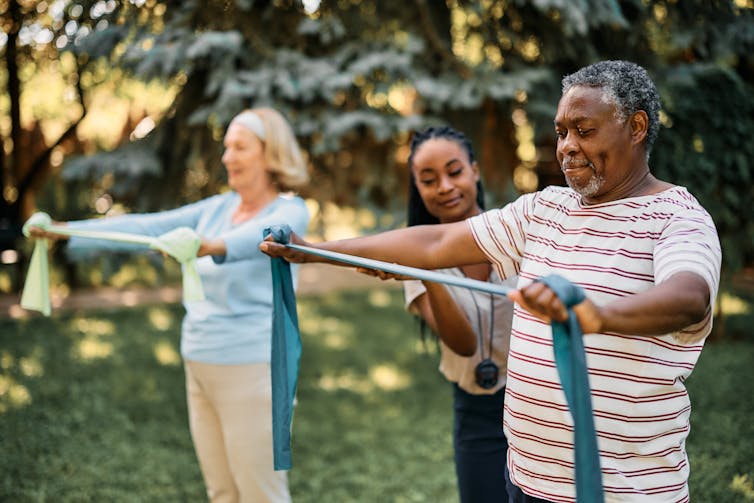
Around 4.4 million Australians, or 18% of our population, live with disability. This number is likely to rise as our population ages.
Adults living with disability can experience a range of benefits from participating in community-based physical activities such as dance, Tai Chi and yoga, our recently published review found.
Yet adults with disability are less physically active than those without disability, with inclusive community-based physical activities few and far between. This puts people with disability at increased risk of further disability.
People with disability should be able to join a local club or group to participate in physical activity they enjoy, just like the rest of us. So how can we provide more physical activity options?
Benefits Of Physical Activity
Our systematic review included 74 trials with 2,954 men and women living with mild-to-moderate physical and intellectual disability.
We looked at studies of Tai Chi, Qigong (which is similar to Tai Chi but more straightforward, using more repetitive movements), yoga, dance, water exercise, gym training, boxing, horse riding, Nordic walking and running. All but one of these physical activities were delivered in condition-specific groups (for example, a group for people with Parkinson’s disease).

People found benefits from participating in these recreation activities. Benefits included improvements in walking, balance and quality of life, and reductions in fatigue, depression and anxiety.
Dance was particularly beneficial for improving walking. Tai Chi, yoga, dance and water exercise were beneficial for balance. Yoga and water exercise were beneficial for fatigue and Tai Chi for depression.
Considerations For Physical Recreation In The Community
Some people with disabilities prefer to be active with others who have similar conditions and abilities. Others prefer to be active locally with family and friends.
Travel to a disability-specific activity may increase the cost and time involved. The lack of choice puts people with a disability at a disadvantage compared to non-disabled people.
Some physical recreation activities included in the review used adjustments and extra equipment to be suitable for people with disability. These adjustments were usually only small (for example, seated options or spending a shorter time in a certain pose or position) and equipment was low cost (for chairs, exercise bands, and so on).
Most local community-based recreation groups should be able make simple adjustments to meet the needs of people living with mild to moderate disability. However this doesn’t routinely happen.
In the review, few activity leaders (37%) had experience and/or training working with people with disability. This may limit the confidence of the activity leader to include a person with disability in the class. It may also limit the confidence of the person with disability to join a local class.
Access To Services Is A Basic Right
Australia is a signatory on the Convention on the Rights of Persons with Disabilities. Australia also has a Disability Discrimination Act (1992). But this seems to provide little incentive for services to take active measures to prevent disability discrimination.
The Royal Commission into Violence, Abuse, Neglect and Exploitation of People with Disability confirmed people with disability were still excluded from many areas of society because of their disability.

The commission’s final report recommended strengthening laws to protect people with disability, prevent discrimination, and build a more inclusive society.
Momentum and expectation is growing in Australian society for better inclusion for people living with disability.
So What Can We Do For Better Physical Activity Inclusion?
First, more physical activity options suitable for people with disability are needed in the community. Guided by the inclusion spectrum, there should be options for both disability-specific and inclusive mainstream activities. People with disability will then be able to choose an activity that suits their needs and preference.
A handful of organisations are leading the way, often led by a person with disability or disability advocate, but more are needed.
Second, community-based physical activities need to enable the person with disability to access the setting safely and have equipment suitable to use. Community organisations can audit their service using online tools, such as AIMFREE (Accessibility Instruments Measuring Fitness and Recreation Environments), to evaluate and improve their accessibility.
A welcoming environment can help ensure a positive experience for the person with disability. Disability Sports Australia offers a free online Accessibility Champion course for sporting clubs and recreation providers. This aims to improve staff and volunteer knowledge and confidence to welcome people with disability. All clubs and service providers should commit to completing this type of training.
Finally, we can all do better to ensure we are accepting and welcoming of people of all abilities in the community, especially in recreation or sporting activities we’re involved in. When this happens, Australia will take an important step to being a more inclusive society.![]()
Leanne Hassett, Associate Professor in Physiotherapy, University of Sydney; Anne Tiedemann, Professor of Physical Activity and Health, University of Sydney, and Cathie Sherrington, Professor, University of Sydney
This article is republished from The Conversation under a Creative Commons license. Read the original article.
NSW Community Urged To Stay COVID-Safe This Summer
Work Bonus Win Means More Income
Smart Glasses Could Help People Who Are Blind Or Vision Impaired Navigate By Sound

COVID is surging in Australia – and only 1 in 5 older adults are up to date with their boosters
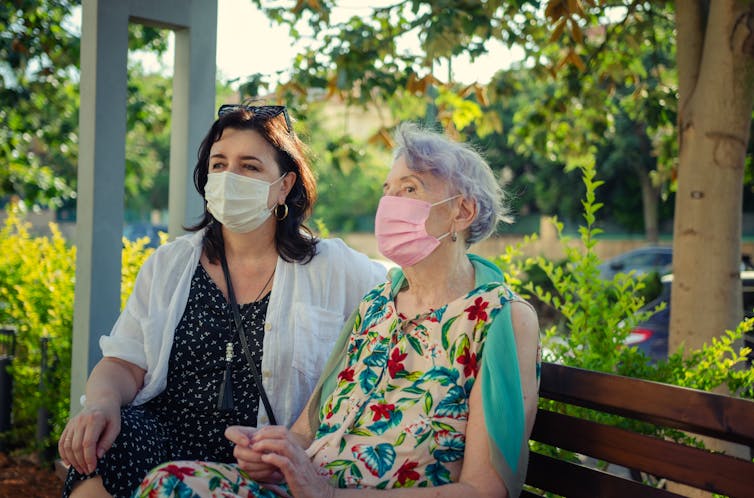
Do you have family members or friends sick with a respiratory infection? If so, there’s a good chance it’s COVID, caused by the JN.1 variant currently circulating in Australia.
In particular, New South Wales is reportedly experiencing its highest levels of COVID infections in a year, while Victoria is said to be facing a “double wave” after a surge late last year.
But nearly four years into the pandemic, data collection is less comprehensive than it was, and of course, fewer people are testing. So what do we know about the extent of this wave? And importantly, are we adequately protected?
Difficulties With Data
Tracking COVID numbers was easier in the first half of last year, when each state and territory provided a weekly update, giving us data on case notifications, hospitalisations, ICU numbers and deaths.
In the second half of the year some states and territories switched to less frequent reporting while others stopped their regular updates. As a result, different jurisdictions now report at different intervals and provide varying statistics.
For example, Victoria still provides weekly reports, while NSW publishes fortnightly updates.
While each offer different metrics, we can gather – particularly from data on hospitalisations – that both states are experiencing a wave. We’re also seeing high levels of COVID in wastewater.
Meanwhile, Northern Territory Health simply tell you to go to the Australian government’s Department of Health website for COVID data. This houses the only national COVID data collection. Unfortunately, it’s not up to date, difficult to use, and, depending on the statistic, often provides no state and territory breakdowns.
Actual case notifications are provided on a separate website, although given the lack of testing, these are likely to be highly inaccurate.
The Department of Health website does provide some other data that gives us clues as to what’s happening. For example, as of one month ago, there were 317 active outbreaks of COVID in aged care homes. This figure has been generally rising since September.
Monthly prescriptions for antivirals on the Pharmaceutical Benefits Scheme were increasing rapidly in November, but we are not given more recent data on this.
It’s also difficult to obtain information about currently circulating strains. Data expert Mike Honey provides a regularly updated snapshot for Australia based on data from GISAID (the Global Initiative on Sharing All Influenza Data) that shows JN.1 rising in prevalence and accounting for about 40% of samples two weeks ago. The proportion is presumably higher now.
What’s Happening Elsewhere?
Many other countries are currently going through a COVID wave, probably driven to a large extent by JN.1. These include New Zealand, Spain, Greece and the United States.
According to cardiologist and scientist Eric Topol, the US is currently experiencing its second biggest wave since the start of the pandemic, linked to JN.1.
Are Vaccines Still Effective?
It’s expected the current COVID vaccines, which target the omicron variant XBB.1.5, are still effective at reducing hospitalisations and deaths from JN.1 (also an omicron offshoot).
The Australian Technical Advisory Group on Immunisation (ATAGI) updated their advice on booster shots in September last year. They recommended adults aged over 75 should receive an additional COVID vaccine dose in 2023 if six months had passed since their last dose.
They also suggest all adults aged 65 to 74 (plus adults of any age who are severely immunocompromised) should consider getting an updated booster. They say younger people or older adults who are not severely immunocompromised and have already had a dose in 2023 don’t need further doses.
This advice is very confusing. For example, although ATAGI does not recommend additional booster shots for younger age groups, does this mean they’re not allowed to have one?
In any case, as of December 6, only 19% of people aged 65 and over had received a booster shot in the last six months. For those aged 75 and over, this figure is 23%. Where is the messaging to these at-risk groups explaining why updating their boosters is so important?
Should We Be Concerned By This Wave?
That depends on who we mean by “we”. For those who are vulnerable, absolutely. Mainly because so few have received an updated booster shot and very few people, including the elderly, are wearing masks.
For the majority of people, a COVID infection is unlikely to be serious. The biggest concern for younger people is the risk of long COVID, which research suggests increases with each reinfection.

What Should We Expect In 2024?
It’s highly likely we will see repeated waves of infections over the next 12 months and beyond, mainly caused by waning immunity from previous infection, vaccination or both, and new subvariants.
Unless a new subvariant causes more severe disease (and at this stage, there’s no evidence JN.1 does), we should be able to manage quite well, without our hospitals becoming overwhelmed. However, we should be doing more to protect our vulnerable population. Having only one in five older people up to date with a booster and more than 300 outbreaks in aged care homes is not acceptable.
For those who are vulnerable, the usual advice applies. Make sure you’re up to date with your booster shots, wear a P2/N95 mask when out and about, and if you do get infected, take antivirals as soon as possible.![]()
Adrian Esterman, Professor of Biostatistics and Epidemiology, University of South Australia
This article is republished from The Conversation under a Creative Commons license. Read the original article.
An RSV vaccine has been approved for people over 60. But what about young children?

The Therapeutic Goods Administration (TGA) has approved a vaccine against respiratory syncytial virus (RSV) in Australia for the first time. The shot, called Arexvy and manufactured by GSK, will be available by prescription to adults over 60.
RSV is a contagious respiratory virus which causes an illness similar to influenza, most notably in babies and older adults.
So while it will be good to have an RSV vaccine available for older people, where is protection up to for the youngest children?
A Bit About RSV
RSV was discovered in chimpanzees with respiratory illness in 1956, and was soon found to be a common cause of illness in humans.
There are two key groups of people we would like to protect from RSV: babies (up to about one year old) and people older than 60.
Babies tend to fill up hospitals during the RSV season in late spring and winter in large numbers, but severe infection requiring admission to intensive care is less common.
In babies and younger children, RSV generally causes a wheezing asthma-like illness (bronchiolitis), but can also cause pneumonia and croup.
Although there are far fewer hospital admissions among older people, they can develop severe disease and die from an infection.

RSV Vaccines For Older People
For older adults, there are actually several RSV vaccines in the pipeline. The recent Australian TGA approval of Arexvy is likely to be the first of several, with other vaccines from Pfizer and Moderna currently in development.
The GSK and Pfizer RSV vaccines are similar. They both contain a small component of the virus, called the pre-fusion protein, that the immune system can recognise.
Both vaccines have been shown to reduce illness from RSV by more than 80% in the first season after vaccination.
In older adults, side effects following Arexvy appear to be similar to other vaccines, with a sore arm and generalised aches and fatigue frequently reported.
Unlike influenza vaccines which are given each year, it is anticipated the RSV vaccine would be a one-off dose, at least at this stage.
Protecting Young Children From RSV
Younger babies don’t tend to respond well to some vaccines due to their immature immune system. To prevent other diseases, this can be overcome by giving multiple vaccine doses over time. But the highest risk group for RSV are those in the first few months of life.
To protect this youngest age group from the virus, there are two potential strategies available instead of vaccinating the child directly.
The first is to give a vaccine to the mother and rely on the protective antibodies passing to the infant through the placenta. This is similar to how we protect babies by vaccinating pregnant women against influenza and pertussis (whooping cough).
The second is to give antibodies directly to the baby as an injection. With both these strategies, the protection provided is only temporary as antibodies wane over time, but this is sufficient to protect infants through their highest risk period.

Abrysvo, the Pfizer RSV vaccine, has been trialled in pregnant women. In clinical trials, this vaccine has been shown to reduce illness in infants for up to six months. It has been approved in pregnant women in the United States, but is not yet approved in Australia.
An antibody product called palivizumab has been available for many years, but is only partially effective and extremely expensive, so has only been given to a small number of children at very high risk.
A newer antibody product, nirsevimab, has been shown to be effective in reducing infections and hospitalisations in infants. It was approved by the TGA in November, but it isn’t yet clear how this would be accessed in Australia.
What Now?
RSV, like influenza, is a major cause of respiratory illness, and the development of effective vaccines represents a major advance.
While the approval of the first vaccine for older people is an important step, many details are yet to be made available, including the cost and the timing of availability. GSK has indicated its vaccine should be available soon. While the vaccine will initially only be available on private prescription (with the costs paid by the consumer), GSK has applied for it to be made free under the National Immunisation Program.
In the near future, we expect to hear further news about the other vaccines and antibodies to protect those at higher risk from RSV disease, including young children.![]()
Allen Cheng, Professor of Infectious Diseases, Monash University
This article is republished from The Conversation under a Creative Commons license. Read the original article.
How to get the most out of a visit to an art gallery with kids

In our house we have a favourite story about the time our toddler was dragged from the National Portrait Gallery kicking and screaming “I want to see more paintings!!!”
She needed lunch, we had to go, but she really loved the “Nick Cave Gallery”, as she called it, with his luminous portrait by Howard Arkley on display.
What parenting miracle did we pull off to have a daughter that loves art galleries so much? We have always taken our kids to galleries. It’s what we do for fun and is what they want to do as teenagers. Visiting a new town or city, we check out local art wherever we can find it.
I have a long history of working with galleries and I am a practising artist, so gallery spaces are familiar to us and are meaningful places associated with joy, wonder and celebration. But you don’t need to be an artist to help your kids enjoy a gallery visit.
Start Young
Children are naturally curious, so start young and make gallery visits a normal activity.
Expose babies to art as soon as possible: research proves regular engagement with art develops children’s aesthetic sensibilities and even very young children can respond to art in complex ways.
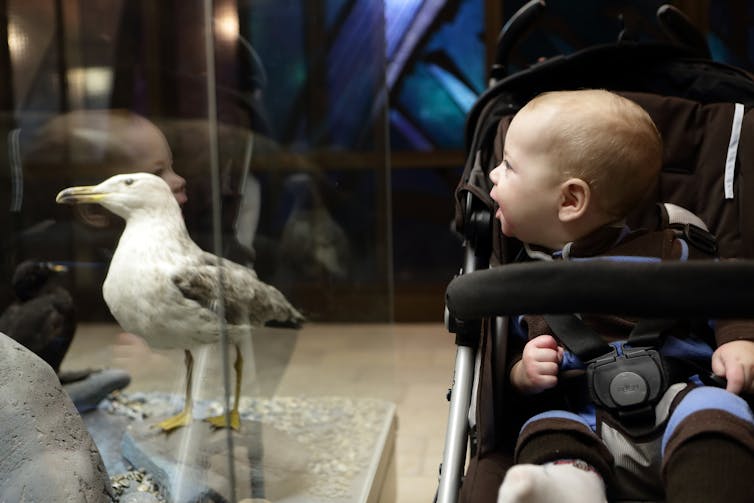
I remember my baby son neighing like a horse in front of a painting before he could talk. I looked at the painting he was staring at, Nicholas Harding’s Bob’s daily swim. There in the thick, painterly background, was a horse. My son connected with the work because he loved horses.
Before Your Visit
Look for ways to introduce your child to artists before your visit. Art activities bring exhibits to life in fun and engaging ways.
For example, from the NGA you can make Sol Le Witt-inspired vegemite toast. Suddenly, Wall drawing no.380 a-d (1982) takes on a whole new flavour, and your child is connected with the work before they see it.
Try to tap into your child’s interests. If they like superheroes, pop icons or Hollywood stars they might just love to see a show by Yankunytjatjara artist Kaylene Whiskey.
Marilyn JS Goodman’s brilliant book Children Draw includes tips on taking your child to a gallery: consider going on a weekday when it’s less crowded, include the cafe, and, importantly, don’t try to see everything – for younger children plan on spending no more than an hour and don’t try to look at too many art works.

Let your child take the lead and include them in the planning. Planning a trip together may be the perfect time to ask questions and share knowledge: “did you know we can’t touch artwork in galleries? Do you know why?”
This can not only help avoid awkward situations with security guards but also helps your child to understand why we don’t touch art (we need to protect the artworks), and may encourage further inquiry into the art or gallery.
There’s No Right Or Wrong Response
Some adults may feel uncomfortable talking about art. Just try having a conversation about what you see, and be prepared to be amazed by what your child observes.
Start by asking your child questions: what are you noticing about this exhibition? What stories are these works telling? What do you think about when you look at this artwork?
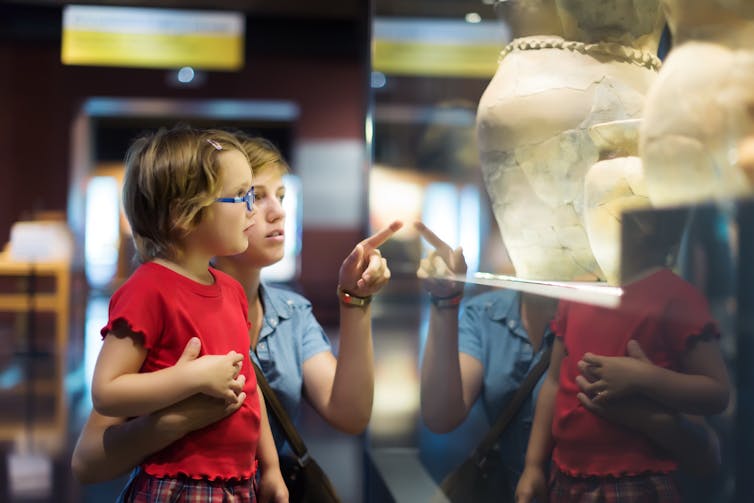
In schools, you might hear teachers use thinking routines: what do you see? What do you think about that? What does it make you wonder? This stimulates curiosity and encourages students to make careful observations and thoughtful interpretations.
Some galleries use Visual Thinking Strategies, which also consists of three questions: what’s going on in this picture? What makes you say that? What else can we find?
You don’t have to like what you see. This can even be a great stimulus for discussions with your child: does art have to be beautiful to be good? Why do people make art? What was that exhibition about?
Interact With The Art
You are allowed to take pencil and paper into most galleries and drawing is a great way of looking and slowing down your experience.
Most galleries have seating where you can sit and draw. Try taking a sketchbook for you and one for your child. Role model drawing, taking your time. You are not aiming to make a masterpiece but to use drawing to map out what you see.
Compare drawings and swap notes. Ask your child what they noticed and share what you found.
Another fun game in a gallery is to pose like the sculptures and paintings.
Most galleries offer programs for children and families. By attending tours you can pick up excellent tips from the educators who are experts at engaging children. They use simple and effective methods such as rolling a piece of paper up into a telescope to look at a work.

Some galleries also have children’s trails especially designed for engaging children. And if they don’t, you can make things up like how many trees can you see? Or can you find any animals in this exhibition?
After The Visit
In a previous article I talked about extending your child’s experience after a gallery visit and how a comic my son made gave me an insight into his feeling about what he had seen at the gallery.
Make it a special day out together. At the end of the day you want your child to enjoy the experience and foster a love of art.![]()
Naomi Zouwer, Visual Artist and Lecturer in Teacher Education, University of Canberra
This article is republished from The Conversation under a Creative Commons license. Read the original article.
‘We don’t know what tomorrow will bring’: how climate change is affecting Fijians’ mental health

It’s unlikely any region of the world will escape the effects of climate change. These include increasing temperatures, more frequent and intense extreme weather events such as bushfires and floods, rising sea levels, and more.
But some areas, like the Pacific Islands, are likely to experience disproportionate effects from advancing climate change. Pacific island nations are uniquely vulnerable to sea level rise, coastal erosion and cyclones of escalating intensity.
Increasing temperatures and increasingly unpredictable weather patterns present additional risks to populations largely reliant on traditional fishing and farming practices for both food sources and trade.
The consequences of climate change also pose significant risks to the mental health and wellbeing of the people living in these countries, as we observed in a recent study with rural Fijians.
Shifts In The Environment
We interviewed more than 70 Indigenous and other traditional Fijians living in rural villages in coastal, coastal hinterland and river delta regions of the country.
Interviewees from each village described environmental changes they had observed, ranging from shifts in seasons and rainfall, to warmer temperatures, to sea level rise resulting in more frequent flooding of the villages, particularly during “king tides”. As one participant said:
Now it is like we are having the hot season throughout. Now we are experiencing the abnormal changes in the weather like never before.
Another commented:
Sea level is not where it used to be since it is moving into the village, especially when it is high tides. We are really worried and concerned.
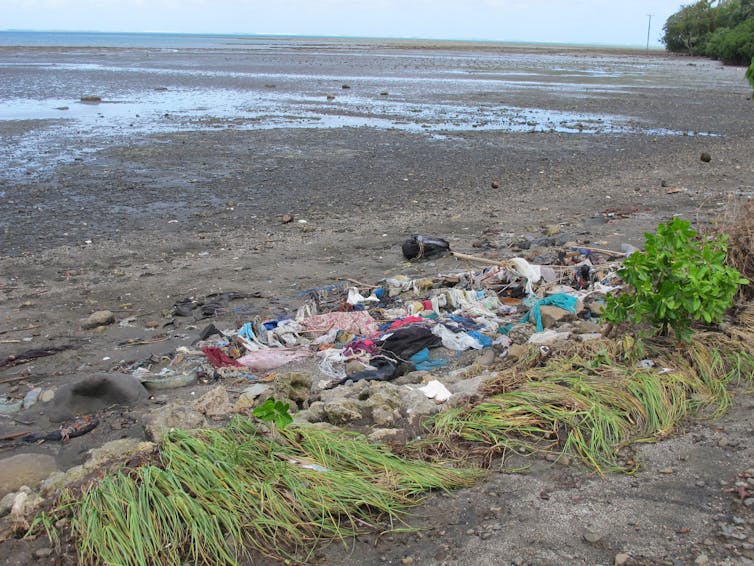
A strong theme of loss of traditional culture ran through our interviews, with many participants describing the ways these environmental changes were contributing to the loss of traditional ways of life and their broader cultural practices.
One participant talked about yatule, a fish customarily found in seas of the Nadroga-Navosa province, traditionally fished using only nets:
No longer is it [yatule] seen [here]. Fishing for the yatule here […] is done traditionally […] the traditional method is slowly fading.
These observed losses were having an effect on mental wellbeing. In particular, participants routinely expressed concerns and grief about what would be left for future generations.
Due to the climate change we are very concerned about our future generation. At least now we can still eat fish, we don’t know what tomorrow will bring.
The Idea Of Relocation Fuelled Further Distress
All interviewees were aware of a potential need in the future to migrate (indeed, a couple of the villages we visited are already in the process of relocating to higher grounds). But this prospect was met with both reluctance and substantial anticipated loss. As one participant said:
[The villagers] will not follow suit since they have strong ties with this place.
Another said:
This is our only land where we have lived in all our lives.
Given the strong connections Pacific island peoples traditionally have to their ancestral lands, there is no question any forced relocation would have significant negative effects on their mental health and wellbeing.
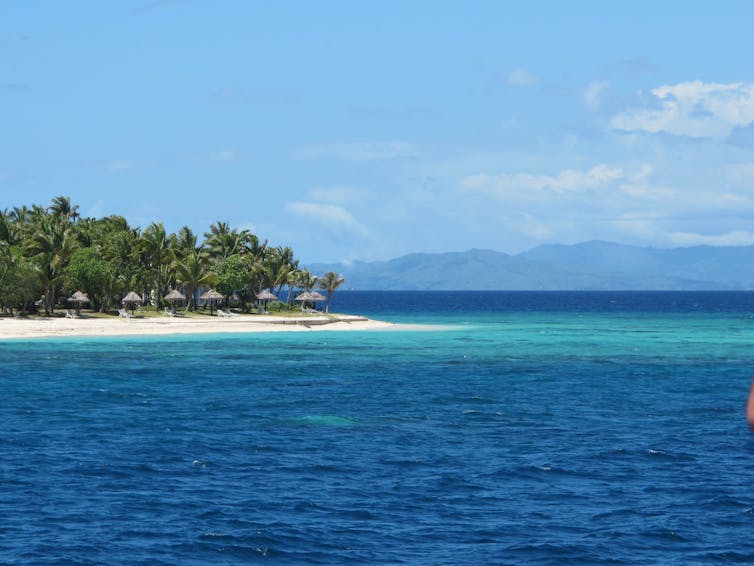
Eco-Grief
Our interviews highlight the substantial distress associated with the rapidly changing environment of Fiji.
In many ways, these themes mirror those observed in the Indigenous Inuit peoples of the Circumpolar North, found in Alaska, northern Canada and Greenland. In these locations, rapidly declining sea ice is having a major impact on traditional cultural practices (such as fishing and travel), also resulting in grief, worry and mental ill-health.
Across the globe, it’s clear people and cultures with strong place-based attachments are especially vulnerable to the mental health effects of climate change, sometimes called “eco-grief”.
More research is urgently needed to better understand mental ill-health in Pacific peoples related to the effects of climate change, and to develop culturally informed supports. There’s also a need to strengthen mental health systems in Pacific island nations.
Finally, concerted climate change mitigation efforts are crucial to protect these unique Pacific cultures, which will aid in protecting their mental health and wellbeing.
The authors would like to thank Patrick Nunn, Roselyn Kumar, Cassandra Sundaraja, Mereoni Camailekeba, Samisoni (“Samson”) Baivucago and Sala Tabaka for their contribution to the research that informed this article.![]()
Amy Lykins, Associate Professor in Clinical Psychology, University of New England and Suzanne Cosh, Associate Professor in Clinical Psychology, University of New England
This article is republished from The Conversation under a Creative Commons license. Read the original article.
Ancient Roman wine production may hold clues for battling climate change
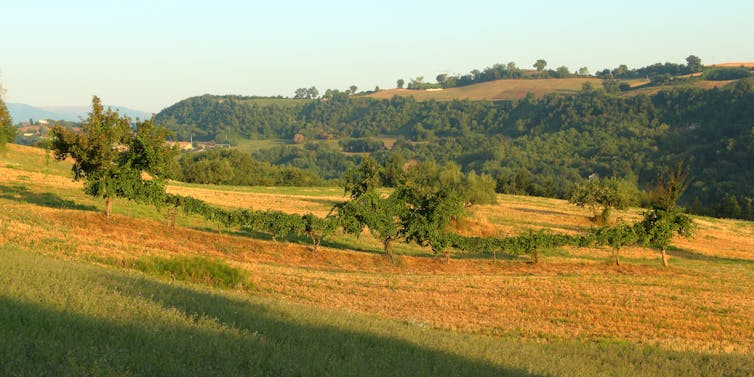
It is no secret that the Romans were heavy wine drinkers. Estimates put the average Roman male’s consumption at a litre or more of diluted wine per day. The drink was also a symbol of civilised behaviour, and widely used as a drug, medicine and ritual beverage. Winemaking was therefore a widespread and very profitable activity, and vine growing dominated much of the agricultural landscape.
Though the Romans consumed even more wine than we do today, ancient vineyards in Italy looked radically different from the typical landscape of rolling hillsides covered by rows of tightly spaced vines.
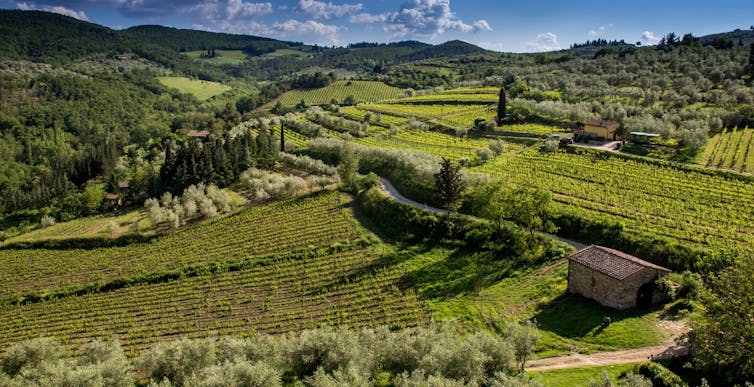
We can learn a great deal from the methods Romans used to produce wine about adapting our own agricultural systems to a warming planet.
My research has explored the role of vine agroforestry systems in Roman viticulture by looking at archaeology, ancient literature and more modern sources.
Forest Agriculture
A very common technique for growing grape vines in Roman times was to attach them to rows of trees in fields that were also used for cereals and vegetables, in a system called arbustum.
In contrast to the low plants that blanket hillsides in modern vineyards, these vines grew high into the trees. Numerous scenes on Roman sarcophagi and mosaics depict harvesters picking grapes using high ladders, and collecting them in small, distinctive cone-shaped baskets.

Pre Industrial Wine Production
The popularity of Arbustum was mainly due to peasants’ need for subsistence. They would combine several crops on one small area of land in order to survive, though more commercial farms have also been recorded. The practice was so common that even great thinkers weighed in on the matter. Both Pliny and Columella recommended the use of fast growing trees with lots of foliage to protect vines from snooping animals.
Location also played a big role. Almost all ancient texts place the use of vine agroforestry in the low lying, flat, and damp lands of the Italian peninsula. This observation may baffle modern wine growers, as grapevines do not like too much water. However, these lands were often close to rivers and coasts, which were major economic corridors and therefore attractive areas for settlement and agriculture.
Such flat, expansive lands were also ideal for applying centuriation, the Roman method of subdividing farmland into grids. The system was perfect for inserting and expanding lines of vine covered trees.
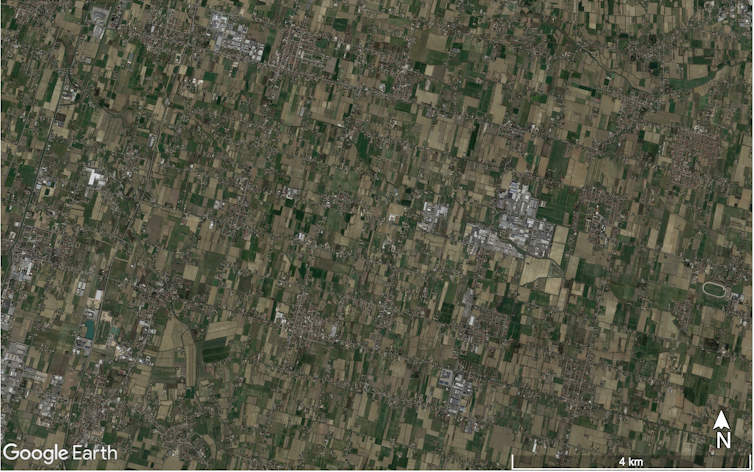
To modern wine makers, growing vines in damp soil and humid air is unthinkable. It presents a huge risk of fungal diseases that could weaken and kill the vine. Nevertheless, the Romans made it work.
An Enduring, Ancient Technique
Luckily for researchers, versions of arbustum remained in use in Italy until the early 20th century. This relatively recent documentation, in combination with ancient source material, reveals the ingenuity of the system.
The main tree species used were poplars, elms, elders, willows, maples, and ashes, which grow well in moist areas because they need lots of water to sustain their rapid growth and high transpiration rates. This means that they soak up excess water from the soil, acting as a water pump and contributing to the natural drainage of an area. Their roots meant vines could stay healthy and perform well in humid environments for centuries on end.
But the sophistication of the system goes much further. By training vines to climb high – up to 15 or even 20 meters – the damage done by rising soil dampness was further reduced, while the heating impact of the sun was increased. This made grapes develop and mature better, as long as the right balance between shade (from foliage) and sun exposure was obtained. High climbing vines also have deeper and more developed roots, which makes them more resistant to rot caused by parasites.
Examples in pre industrial Portugal also show that the trees themselves even contribute to the microclimate of the vineyard: they mitigate the impact of winter frosts, offer protection against strong and damaging winds, and reduce the distribution of unwanted seeds.
An Example For A Warming World
Records show that vine agroforestery expanded massively between the years 200 BC and 200 AD, during what is known as the Roman Climate Optimum, a period of several centuries of markedly warmer temperatures that coincided with the expansion of the Roman Empire. This means that Roman winemakers in Italy often operated under warmer and more humid conditions than those experienced in much of the 20th century.
The resilience of vine agroforestry under rising temperatures – which bring with them new pests and diseases – becomes most evident when looking at pioneering modern initiatives in the south of France. Experiments at the farm of Restinclières have confirmed the microclimatic benefits of vine agroforestry, including protection against frosts and the presence of beneficial insects.
Most importantly, however, the shade provided by trees seems to delay the ripening of grapes by weeks without problematically decreasing yields. This is a blessing for winemakers who are increasingly faced with grapes that mature too quickly, have too many sugars, and give lower quality wines with too much alcohol as a result of higher annual temperatures.
Roman Agriculture On The World Stage
The Food and Agriculture Organization of the United Nations has recently stressed the benefits of agroforestry in a warming world. It has emphasised in particular the need for scaling up agroforestry and its numerous environmental and socioeconomic benefits, especially in helping millions of smallholder farmers survive in an increasingly hostile climate.
Insights into Roman and pre-industrial practices suggest that this approach may also help winemakers to adapt to an ever-warming planet. It also begs the much wider question of what else we can learn by looking to the past as we confront an uncertain future.![]()
Dimitri Van Limbergen, Postdoctoral Researcher, Ghent University
This article is republished from The Conversation under a Creative Commons license. Read the original article.
More than 4 billion people are eligible to vote in an election in 2024. Is this democracy’s biggest test?

2024 is going to be democracy’s biggest year ever. In a remarkable milestone in human history, over four billion people – more than half of the world’s population across more than 40 countries – will go to the polls.
National elections will be held in the United States, India, Indonesia, Russia, the United Kingdom, Pakistan, Bangladesh, Taiwan, Mexico, and South Africa to name just a few. The European Union will also go to the polls. This busy calendar of elections is as extraordinary for the diversity of nations and peoples participating as it is for its huge scale.
It’s tempting to see this record as a triumph for democracy as the dominant organising principle for governing people in the modern world.
But a closer examination shows democracy is at risk on many fronts. While these challenges take different forms in different jurisdictions, some clear patterns emerge. 2024 is going to be a rugged year for democracy, but there is still cause for cautious optimism about its future.
Here’s a rundown of just some of the significant elections that will shape the world in 2024.
United States
The most high-stakes election of 2024 will be the US general election for the president, house of representatives and senate in November. For decades America has stood as the world’s most powerful democracy and a guarantor (if a flawed one) of democratic governments the world over.
Donald Trump is the likely Republican nominee. In his previous term as President he did more than any previous chief executive to undermine democracy according to a Varieties of Democracy (V-Dem) analysis.
Now he is promising to punish his political opponents, override the independence of the Department of Justice and extend presidential power into non-political areas of government administration.
This prompted President Joe Biden to warn that “Democracy is on the ballot” in the 2024 Presidential vote.
At this stage, US voters do not seem to care too much, with Trump ahead in many key opinion polls.
India And Indonesia
The rise of democracy in India and Indonesia, the world’s second and fourth most populous nations, has been a game changer for the global advancement of human freedoms. The sheer scale of the elections in these developing nations, with a combined population of 1.7 billion, is also a miracle in modern administration.
Indian Prime Minister Narendra Modi seems almost certain to be returned for a third term in an election to be likely held between April and May.
While Indonesian Defence Minister, Prabowo Subianto, is the clear frontrunner to become the next president of the world’s largest Muslim nation in February.
In both cases, there is the risk these “strongman” leaders will win power in free and fair elections but then oversee illiberal policies that put democratic institutions under strain.
United Kingdom And Europe
The UK is likely to go to a general election in the second half of 2024. Current polling suggests it will result in the first change of government in 14 years with victory for the Labour Party led by Keir Starmer.
If that happens, it will be a reminder of democracy’s ability to enable the transfer of political power between opposing interests without widespread bloodshed – something humankind has failed at for most of history.
Other elections in Europe will be a barometer of the standing of the populist far right.
The success of anti-Islam extremist Geert Wilders in elections in the Netherlands in November means many analysts are now predicting the far right will enjoy a surge in support in European parliament elections in June, as well as national elections in Austria, Belgium, Croatia and Finland.
Africa
National elections are occurring in a dozen countries in Africa this year including Rwanda, Ghana, Tunisia, South Sudan and Algeria. But most attention will be on the mid-year election in South Africa which will be the most important since the end of apartheid in 1994.
Current polls suggest that after three decades in power the African National Congress (ANC) will not be able to garner the necessary 50% of votes needed to govern in its own right, bringing to an end 30 years of one-party rule.
Bogus Elections
Special mention must be made of the 2024 elections which will not be free and will not be fair.
Russia, Rwanda and Belarus are governed by tyrannical rulers who jail opponents and run bogus elections that deliver 90% majorities or higher.
Then there is the charade elections occurring in Bangladesh, Iran and Tunisia where leaders allow the opposition to compete, but not to win.
Will Democracy Pass These Tests?
Elections are taking place against a backdrop of spreading illiberalism around the world, the weakening of independent institutions in some of the big democracies, and a creeping disillusionment in advanced democracies, especially among younger people, about the benefits of a democratic system.
But there is also reason for cautious optimism that the long arc of history continues to steer determinedly towards a more democratic world.
Democracy remains the model that most developing nations strive for. According to Freedom House, there were 69 electoral democracies in 1990 rising to 122 by 2014. It is telling that even dictators and despots feel the need to give themselves the appearance of a democratic mandate. And surveys of citizens in advanced democracies continue to show high levels of support for the ideals of democratic government.
“Government of the people, for the people, by the people” still holds significant advantages over all the other alternatives currently being tried. But in 2024 it will be tested mightily.![]()
Nicholas Reece, Principal Fellow, Melbourne School of Government, The University of Melbourne
This article is republished from The Conversation under a Creative Commons license. Read the original article.
As the billionaires gather at Davos, it’s worth examining what’s become of their dreams
John Quiggin, The University of QueenslandGathering for their annual World Economic Forum at Davos in Switzerland this week, the world’s business and political elite will be digesting some unpleasant reading courtesy of the aid agency Oxfam International.
Oxfam’s annual report on global inequality released this morning shows the wealth of the world’s five richest billionaires has more than doubled since the start of the decade, while 60% of humanity has grown poorer.
Among the findings of the report entitled Inequality Inc are that
billionaires own US$3 trillion more than they did three years ago, meaning their wealth has grown at three times the rate of inflation
even in Australia, the wealth of billionaires has climbed 70%
five billion other people can’t afford what they could three years ago.
Progress in Africa, which seemed promising for much of this century, has stalled since COVID.
And large parts of the populations in wealthy countries, feeling left behind, have been lured by the appeal of rightwing populism – ironically, largely promoted by billionaires and their advocates.
Dreams Of Davos Past
This isn’t how things were supposed to turn out.
In its glory days in the 1990s, the Davos forum was the driving force promoting the idea of stakeholder capitalism in which corporations controlled by shareholders were supposed to advance the interests of everyone who had a stake in their activities: workers, consumers, communities and the environment.
The Forum still promotes the idea on its website.
Back then, as communism collapsed, everything seemed possible.
Pundits like Thomas Friedman spoke of a golden straitjacket in which universal prosperity could be achieved if only the world embraced liberal capitalism, overseen by an electronic herd of fund managers making investment decisions.
With appropriately-constrained policies, governments could ensure a rising economic tide lifted all boats.
In the UK and the US the so-called Third Way policies of Tony Blair and Bill Clinton were seen as delivering capitalism with a human face.
Three decades on, that vision is looking increasingly threadbare.
From the left, there is increasing pressure for radical alternatives; from the right, there is increasing pushback against the Forum’s brand of “woke capitalism”.
Financial managers remain as powerful as ever, but in the aftermath of the global financial crisis and multiple exposures of criminal wrongdoing by their firms, there is less and less faith in their beneficence and collective wisdom.
Billionaires Are Becoming The Problem
Billionaires were not important enough to be seen as a major problem back in the early 1990s. In 1991, as communism collapsed, Forbes Magazine assessed the total wealth of the world’s five richest people as less than $US70 billion.
And the most prominent billionaires at the time were relatively appealing figures like Bill Gates and Warren Buffett.
But since then, while US prices have doubled, the wealth of the top five has climbed tenfold. And they have become less interested in the idea that others should benefit from the system that has benefited them.
A case in point is Jeff Bezos who is number three on the rich list with net wealth of US$114 billion and runs Amazon whose brutal working conditions and anti-union stance are detailed in the Oxfam report.
Another is Elon Musk, number two on the rich list with US$180 billion, who could once have been seen as merely eccentric, but his recent embrace of neo-Nazis goes further.
And, appropriately for what Oxfam calls the gilded age of division, another is the very richest man in the world, Bernard Arnault, whose family owns luxury goods brands including Louis Vuitton and Sephora.
Arnault embodies the resurgence of what Thomas Piketty has called patrimonial society.
He took over the management of his father’s business and intends to pass his business on to his sons.
All have benefited from what is sometimes called neoliberalism: the mix of ideas including privatisation, financial deregulation and tax cuts that was meant to deliver stakeholder capitalism.
What neoliberalism has given us instead is greater division – something the billionaires gathered at Davos ought to consider this week as they reminisce about forums past.
A reasonable set of fresh ideas would be that put forward by Oxfam: direct government intervention to reduce inequality including but not limited to reasserting the roles of governments as regulators and service providers abdicated on the advice of gatherings such as the one in Davos.![]()
John Quiggin, Professor, School of Economics, The University of Queensland
This article is republished from The Conversation under a Creative Commons license. Read the original article.
What is ‘parent training’ for families of children with ADHD?

Problems with focus and impulse control can be common developmental stages through which children and adolescents naturally progress. But they can also be symptoms of attention-deficit hyperactivity disorder (ADHD), a chronic condition.
ADHD is a pattern of inattention or hyperactivity and impulsivity (or both) that interferes with functioning or development, and persists into adulthood. ADHD affects around 7.6% of children aged three to 12 years and 5.6% of teens.
ADHD can significantly influence family dynamics and can affect a child’s ability to learn and interact socially. Raising children with behavioural, developmental or learning difficulties can also make parenting more challenging, with parents navigating feelings of frustration, grief and guilt.
While medication is most effective at minimising core ADHD symptoms, non-drug interventions can also reduce the daily impacts of ADHD symptoms. Parenting/family training is one such intervention. So what does it involve and is it effective?
Positive Praise And Natural Consequences
Parenting training is widely used and can take different forms. Sometimes a psychologist works with one or both parents to give them skills specific to their family and situation. It’s sometimes a structured in-person program for groups of parents. It can also be delivered online, at parents’ own pace or in virtual classrooms.
Most parent/family training will teach parents forms of:
positive praise. Notice when your child is behaving in a desirable way and give them positive feedback. For example,“Wow, you’re playing so nicely. I really like the way you’re keeping all the blocks on the table.” Praise nurtures self esteem and their sense of self. Praise teens for starting homework without being reminded or coming home at the agreed time
effective limit-setting. Establish ground rules in a quiet moment of family time, where everyone has a say and understands the boundaries, consequences, and expectations
natural consequences, such as missing out on watching a TV show because packing up took too long. This allows the child to experience failure or loss, but empowers them with what they can focus on or improve the next time round
planned ignoring of annoying but not serious behaviours such as making faces or messy rooms. Make a decision to ignore it and breathe. Model desirable behaviours, such as looking after your possessions and fitting in with family life
positive parent-child interactions. “Connection before correction” helps a parent shape their child’s behaviour and can reduce disruptions. Emotionally connect by, for example, establishing eye contact, using a gentle tone and getting down on their level. This attunement allows the child to be able to regulate their behaviour and better manage their emotions.
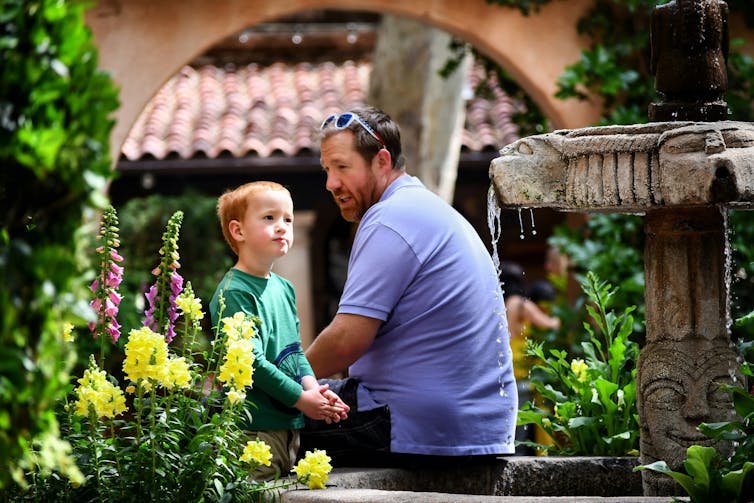
Parents aren’t to blame for their child’s symptoms; the aim of training is to teach parents skills to meet the above-average parenting needs of children with ADHD.
Take inattention, for example. If a task is boring to a child with ADHD, their brain will struggle to pay attention – even if they want to. ADHD clinical neuropsychologist Russell Barkley explains ADHD like this: the back part of the brain is where you learn, the front part is what you do, and ADHD splits them apart. You can know things but you won’t do them – it’s a performance disorder.
Having a few household rules, schedules, opportunities to problem-solve, effectively using instructions and, most importantly, expressions of love can give children positive environments that will help their mental health over time.
How Effective Is Parent Training?
The Australian evidence-based ADHD treatment guidelines reviewed the evidence and found medication treatment was more effective than non-pharmacological treatment in reducing core ADHD symptoms. But combined therapies were better than either treatment alone.
The United Kingdom’s National Institute of Clinical Excellence recommends ADHD management plans include treatments to address the child’s psychological, behavioural and educational or occupational needs.
There is evidence to support parenting training for children aged five to 17, and greater evidence for its use in children under five and families of children who also have oppositional defiant disorder or conduct disorder, who require more intensive support.
But more research is needed about the duration and form of the parent training.
The World Health Organization also recommends parenting interventions because they strengthen the parent-child relationship, assist with alternatives to violent discipline and reduce emotional problem behaviours in children.
How Do You Access Parent Training?
Most psychologists offer family training and will charge you the same fee as a normal session.
You can also upskill with the free Triple P Parenting Program online.
Happy Families also has an online parenting ADHD course.

Bond University researchers are also conducting a free, online group parenting program, which includes positive parenting skills. This will be part of a randomised control trial to develop an evidenced-based parenting intervention.
The aim with all of these programs is to better understand the child’s life and have compassionate responses to their ADHD and behavioural symptoms. So rather than just focusing on their behaviour – which is an outward expression of an inward emotion – it encourages parents to embrace their uniqueness and help them in their struggles.
How Else Can You Support Your Child With ADHD?
Set boundaries and be clear about your expectations, but also be compassionate to your child and pick your battles.
Break instructions into simple tasks and allow them to choose and focus on one thing they’re struggling with at a time. Brainstorm what they need to improve, or an area that frustrates them. This will often be organisation, time management and planning. Ask how you can help and stay calm. Celebrate the small wins along the way.
Be curious and seek to understand and connect with your child. Even though your relationship may feel strained or disconnected at times, remember disagreement need not destabilise the relationship. Children express their full emotions, without restraint, among people they feel most safe with.
Finally, ensure you look after yourself, connect with other parents who can support you. Try not to place your anxiety, stress and fears onto your child. Talk to a friend or psychologist so your child feels safe and able to share anything with you and knows you will cope.![]()
Cher McGillivray, Assistant Professor Psychology Department, Bond University
This article is republished from The Conversation under a Creative Commons license. Read the original article.
Less than 10% of Australian scorpions are known to science. We’ve added two new species to the list
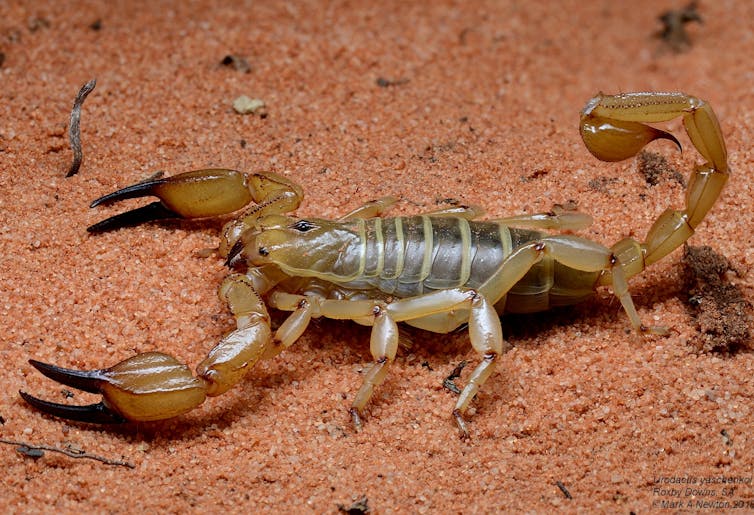
Scorpions are among the most ancient of land animals. Fossils indicate they were roaming the Earth more than 400 million years ago. For perspective, the non-bird dinosaurs became extinct about 65 million years ago.
Scorpions trivialise the 100-million-year reign of the dinosaurs — they saw them come and go and are still here today. In fact, the external anatomy of scorpions has changed little, based on what we’ve seen from 400 million-year-old fossils.
While formally describing a new scorpion species from the Pilbara region of Western Australia, we discovered another species with identical external morphology (shape and structure). The only way to tell the two species apart was by looking at the morphology of the male reproductive organs.
You’d think that is a very small difference, but it’s not uncommon for telling apart species in other groups, like spiders and millipedes. But these are the first scorpion species distinguished solely by male reproductive anatomy.
Our find, published in the Australian Journal of Zoology, hints significantly more scorpion species await discovery in Australia than previously suspected.
A Widespread And Popular Group
Most Australians think of scorpions as exotic desert animals. But they are fairly widespread, ranging from salt lakes in central Australia to ancient rain forests in Tasmania.
Surprisingly, our estimates (based largely on unpublished DNA sequence data we have access to), indicate that less than 10% of Australia’s scorpion species have been scientifically described or named. Describing them means scientifically documenting and applying a unique scientific name to a new species while following the International Code of Zoological Nomenclature.
The scorpion genus Urodacus is endemic to mainland Australia and represents one of the largest radiations (increases in diversity) of scorpion species on the continent. Most Urodacus species live in deep spiralling burrows, enabling them to survive in arid ecosystems. In some habitats, these scorpions are a significant part of the ecosystem and comprise much of its biomass.
Despite their reclusive habits, Urodacus are popular exotic “pets” and are among the most popular invertebrates offered by online stores in Australia. There’s also a large community of scorpion enthusiasts.
Trading of scorpions is dependent on an unknown level of harvesting from natural populations. Some Urodacus species are known to live for 15–20 years, but in captivity, their longevity is usually less than a year.
With minimal knowledge about the diversity and distributions of Australian scorpions, the potential for serious impacts to their conservation is high. Traded scorpion species are often unnamed, and some may also live in very small areas.
For example, the two new species we described, Urodacus uncinus and Urodacus lunatus, are restricted to creeks and drainage lines, with a known area of as little as 50 square kilometres. Such small distributions make species particularly vulnerable to habitat loss, which is a growing threat in Australia.
Surprisingly, there is no regulation for scorpion ownership in most Australian states, although you need a permit to keep them as pets in the Northern Territory and Queensland. Collecting them from the wild is only regulated in conservation areas.
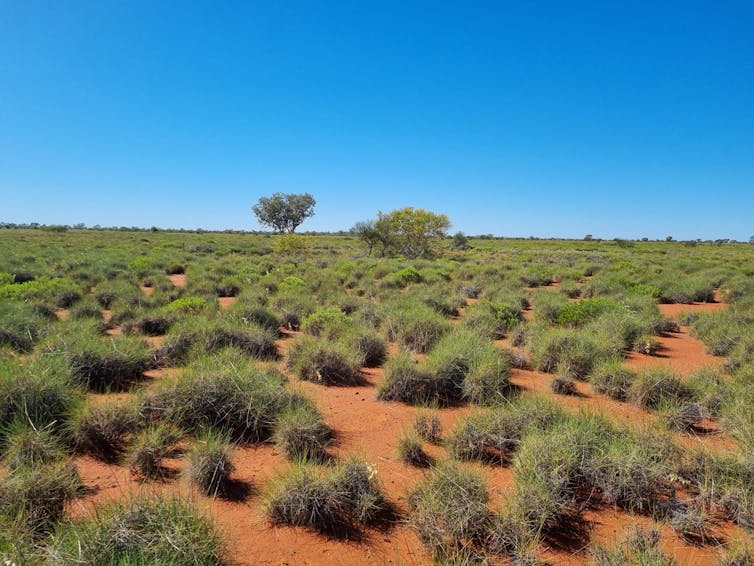
We Don’t Know Enough About Our Scorpions
The two new species we just described are large (more than 7cm long) yellow scorpions. Males of both species have a striking enlargement in the tip of their “tails”, with a swollen venom gland and a sting that is more strongly curved than in any other known species of the genus.
The task to fully document and understand the diversity of Australian scorpions is colossal. Approximately 3,000 scorpion species are known worldwide, but in Australia only 47 species are currently described and named. Based on our estimates, we think there could be at least 500 scorpion species here.
Only 13 new Australian scorpion species have been described in the last 45 years. At this rate, many are likely to become extinct before they are even named.
Further research on Australian scorpions will also reveal more of these animals’ incredible biology. One example is their curious reproduction. Scorpion mating rituals include a dance during which males of some species even sting the females as part of the courtship.
Sperm transfer occurs via what could be described as a “detachable penis”, placed on the ground by the male. During mating, part of this organ breaks off in the female reproductive tract and functions as a “mating plug” that prevents the female from remating until the babies from the last mating are born.
Burrowing scorpions give birth to live young that are gestated for up to 18 months within an organ somewhat like a uterus. After birth, mother scorpions carry their babies on their back until they disperse to live a largely solitary life.
Undiscovered Secrets
These fascinating behaviours are only a small portion of scorpion natural history discovered to date and they are likely to harbour many more as yet undiscovered secrets.
Next to nothing is known about Australian scorpions, which is surprising given their diversity and ecological importance. More research on Australia’s scorpions is urgently needed to help recognise and protect threatened species and their habitats.
Expanding our knowledge about native scorpions would also help with the regulation of wild collections and allow captive breeding to further develop more responsible pet ownership as a force for conservation, rather than a risk.![]()
Bruno Alves Buzatto, Lecturer, Flinders University and Erich S. Volschenk, Senior Research Associate, Murdoch University
This article is republished from The Conversation under a Creative Commons license. Read the original article.
Thousands of visitors flock to Australia’s national parks each year – and many take silly risks. How do we keep people safe?

A man was airlifted to hospital last weekend after falling ten metres from a waterfall in Queensland’s Tamborine National Park, which was closed to due to storms. And last month, a major safety operation was launched to rescue nine bushwalkers in Wollemi National Park near Sydney after one walker fell from a cliff and suffered a head injury.
These are just the latest in a string of recent incidents that underscore the potential dangers of visiting Australia’s national parks. Visitor numbers to national parks are increasing. This is partly due to the provision of roads, boardwalks and other infrastructure which have greatly improved accessibility. People can now reach locations that, in many cases, would previously have required more competence, care, and skill to get to.
It means masses of people are being funnelled into potentially dangerous locations for which they may be unprepared. This poses risks to human life and safety, and places a heavy burden on already stretched emergency services called to conduct rescues and retrieve bodies.
An urgent rethink is needed into how we invite and prepare visitors to interact responsibly with these natural environments.
Visit, But Be Prepared
National parks need people. Visitors to national parks are vital to maintaining community, political and financial support for their existence. And increasing visitor numbers in national parks means more people can experience the physical and mental health benefits of spending time in nature.
Australia’s national parks are generally very accessible. In some popular locations, visitors can drive right up to a site and explore it via a highly engineered boardwalk. At lookouts, visitors are often protected by barriers and warning signs.
Social media platforms such as Instagram and TikTok play a role in promoting national parks as accessible destinations. In Victoria, national parks authorities have suggested unprepared visitors are taking unnecessary risks in a bid to capture social media images, forcing emergency services to undertake dangerous rescues.
Parks authorities themselves use social media to promote access to picturesque places, but increasingly do so with safety in mind.
Safety First? Not Always
As visitor numbers to national parks increases, so too do the numbers of safety incidents.
In Western Australia, an average of 77 incidents per year occurred between 2011 and 2017. Most were falls or water-related, such as drowning.
And in Victoria in the five years to 2020, the State Emergency Service reportedly conducted 365 “high-angle rescues” – complex operations in high, steep locations.
Many incidents in national parks happen repeatedly at the same place. The latest incident at Cedar Creek Falls comes after a teenager drowned there in 2021. At the Babinda Boulders in Far North Queensland, 21 drownings have reportedly been recorded. This suggests current mechanisms for enhancing safety or communicating risk at known hazardous locations aren’t working.
It also stands to reason that the infrastructure we build to attract people to national parks, and to guide them and keep them safe, may be propelling them into risky situations.
Rethinking Access To The Wild
So how best do we prevent deaths and injuries in national parks, while still encouraging people to venture into the outdoors?
Many people do not believe national parks are inherently dangerous places to visit. But erecting warning signs to alert them to the risks is not necessarily the answer.
One study focused on beaches in Victoria showed less than half of visitors even saw the signs. The answer is not to plaster an area with signs, either: an overabundance of safety messages can create “information overload” and means people are likely to ignore them.
However, there is research to suggest signs warning people of legal consequences or fines, rather than risks to their personal safety, may be more effective at ensuring safe behaviour.
Well-designed infrastructure in national parks can enhance the visitor experience, and protect the environment by directing people away from sensitive areas. But parks authorities should consider whether some infrastructure is encouraging people into dangerous situations, and whether certain areas should be closed off to the the public entirely.
Authorities could devise online training programs that teach people key outdoors skills, such as basic first aid and what to do if they get lost.
Finally, all this raises important questions around personal responsibility. Research conducted at four national parks in Western Australia showed many people viewed safety as a shared responsibility between visitors and parks management – but when things go wrong, place the blame on parks management. The same research showed parks visitors can be reluctant to accept the shift of responsibility back onto themselves.
Studies are needed to determine if encouraging visitors to take more responsibility for their actions would lead to fewer safety incidents – and if so, how best to get people to adopt this attitude shift.
Recent tragedies in our national parks highlight the crucial need to reevaluate visitor management strategies. National parks are a public good – and we need to make sure they stay that way.![]()
Samuel Cornell, PhD Candidate, School of Population Health, UNSW Sydney and Amy Peden, NHMRC Research Fellow, School of Population Health & co-founder UNSW Beach Safety Research Group, UNSW Sydney
This article is republished from The Conversation under a Creative Commons license. Read the original article.
The US once withheld syphilis treatment from hundreds of Black men in the name of science. Newly public records are helping us understand how it could happen
Caitjan Gainty, King's College LondonIn 1972, a whistleblower revealed that the United States Public Health Service (USPHS) had withheld syphilis treatment from hundreds of Black men as part of a 40-year study observing the natural course of the disease. The experiment’s subjects – the majority of whom were sharecroppers from rural Alabama – believed they were undergoing treatment for “bad blood”, a colloquial name then used for a host of conditions, including venereal diseases. Instead, they received placebos and inadequate medical care, even after penicillin emerged as an effective, readily available treatment for syphilis in the mid-1940s.
The Tuskegee syphilis study, as the experiment is often called today, began in 1932 with the recruitment of 600 Black men, 399 with syphilis and 201 without, to serve as the control group. Initially intended to run for six months, the study continued for decades. Unwitting participants lured in by the promise of free medical care, hot meals and burial insurance returned regularly for aspirin, tonics, blood draws and the occasional spinal tap. But none of these treatments do any good for syphilis, and 128 of the men ultimately died of the disease or complications related to it.
When news of the study broke, Chuck Stone, a journalist and former Tuskegee airman, responded with an impassioned editorial, writing: “It either takes a tough constitution or a rancid morality to sit quietly by and watch 200 men die without doing anything about it. I call it genocide. Have you got a better name for it?”
Historians have had decades to pore over the study’s archives. Now, the National Library of Medicine has made a collection of those documents available for public viewing online. Anyone with an internet connection can read the primary source material – hundreds of pages of administrative records, letters and meeting minutes.
No one would expect the portrait this collection paints to be pretty or redemptive. Indeed, the study has gone down in the annals of American history as one of the most notorious, but by no means only, examples of medicine at its most prejudicial, virulent and unethical. Even with this knowledge, it is galling to read about the lengths to which USPHS doctors went to ensure their patients were denied treatment.
Immobile And Malleable
A 1948 history of the study makes it clear that the choice to set the experiment in the deep south was deliberate. As the paper notes, the study followed a broader survey of syphilis in the still deeply segregated region. Sponsored by the Julius Rosenwald Fund, this earlier programme aimed to assess the prevalence of the disease in several southern counties and make sensible plans for its treatment – a starkly different goal than the Tuskegee experiment.
The USPHS drew on this data to identify Macon County, Alabama – the surveyed area with the highest prevalence rate of syphilis – as the right place for a new study. Macon County also had high poverty rates and low education rates, ensuring the experiment’s subjects would be both largely immobile and malleable.
Another contributing factor was the presence of the venerable Tuskegee University, a historically Black college then known as the Tuskegee Institute, which had the facilities necessary to carry out the autopsies and lab work the study required.
Always a hurdle was a 1927 Alabama state statute that required medical personnel to report and treat all cases of syphilis. But enforcement of this statute was so lax that the experiment could have continued unimpeded had it not been for the 1942 draft, which led the local Selective Service Board to unmask the syphilitic status of the study’s subjects. The board’s charge was to evaluate individuals for military service, a process that required testing for venereal diseases and mandatory treatment for those affected.
R.A. Vonderlehr, the assistant surgeon general and one of the originators of the study, jumped into action to prevent the subjects from receiving treatment. He wrote urgently to local health officer Murray Smith, asking him to pull some strings to get the study subjects exempted.
“I would suggest that you confer with the chairman of the local Selective Service Board,” Vonderlehr wrote. “I believe he is an old friend of yours, and I would inform him of all the circumstances connected with the study. It is entirely probable that … he will cooperate with you in the completion of the investigation.”
Smith made good use of his social connections, managing to get the 256 remaining syphilitic subjects exempted from treatment. Likewise, when the same matter reached D.G. Gill, director of the Alabama Department of Health’s Bureau of Preventable Diseases, he requested Vonderlehr’s advice on whether to “make an exception of these few individuals” to avoid “encroaching on some of your study material”.
Effective Treatment Denied
Even in the postwar period, when penicillin became widely available – replacing the arguably ineffective and dangerous arsenic-based syphilis treatments that had preceded it – the study ploughed ahead, still more committed to documenting the disease than treating its sufferers. There was nothing unwitting about this denial of treatment.
Indeed, the archive shows that subjects were explicitly and repeatedly lied to for decades so they wouldn’t seek treatment for syphilis on their own. Even the form letters they received bore the hallmarks of a scam. They were invited to a “special examination” with government doctors waiting to give them “special attention” to “find out how you have been feeling and whether the treatment has improved your health”. Some of these notes were signed by Smith, who was designated just below his signature as a “special expert” to the USPHS.
And then there were the spinal taps, which were widely hated by the study subjects for the severe headaches they caused – and because the men worried the procedure “robbed [them] of their procreative powers (regardless of the fact that I claim it stimulates them)”, wrote physician Austin V. Deibert in a 1939 letter to Vonderlehr.
Deibert continued, telling Vonderlehr the USPHS might have to cancel the spinal test for the sake of the study’s continuation. “All in all and with no attempt at humor,” he said, he was the one with the real “headache”.
Neither the second world war nor the early civil rights movement seemed to move the subsequent generations of study staff and administrators. The study was widely known in medical circles, thanks to the dozen or so articles on its findings published in prominent journals. Though outsiders started criticising the experiment in the 1950s and 60s, these dissenting voices were few and far between.
The first confirmed critique of the study from outside the USPHS arrived in a 1955 letter written by physician Count Gibson, who had heard a USPHS official explicitly state that the study’s subjects were not informed that treatment was being withheld.
Though Gibson was reportedly unsatisfied with the response he received, his colleagues urged him not to pursue the issue for fear that speaking out against these very powerful men might jeopardise his own career. He let it drop. In 1964, cardiologist Irwin Schatz voiced similar concerns, writing a letter that also questioned the study’s ethics. He never received a reply.
Concerns Waved Off
Indeed, the study directors continued to wave off concerns. As a set of meeting minutes from 1965 put it: “Racial issue was mentioned briefly. Will not affect the study. Any questions can be handled by saying these people were at the point that therapy would no longer help them. They are getting better medical care than they would under any other circumstances.”
In 1970, Anne R. Yobs, a co-author of one of the published papers, acknowledged that the research should come to an end. In a letter to the director of the Centers for Disease Control, she recommended closing the study, not because the charges of racism and unethical practice that had started to pour in were merited, but rather because “changes at the program level … in sensitivity to (potential) criticism” had forced administrators’ hands.
The study had become “an increasingly emotionally charged subject”, preventing “a rational appraisal of the situation”, wrote James B. Lucas, assistant chief of the USPHS’s Venereal Disease Branch, in a memo that same year.
By 1972, Peter Buxtun, a USPHS venereal disease officer who had spoken out against the study within the organisation for years to no avail, had had enough. He went to the press.
Jean Heller, an Associated Press journalist, broke the story that July. A few months later, an ad hoc committee organised to evaluate the study finally ended it.
The Tuskegee study’s legacy has reverberated across the decades. In 1974, the NAACP, a civil rights organisation, successfully sued the federal government for US$10 million (£7.8 million), distributing the settlement money to the study subjects and their surviving family members. In 1997, President Bill Clinton publicly apologised to the men, acknowledging that what the USPHS had done was “deeply, profoundly, morally wrong”.
The study has had a material impact on medical outcomes within the African American community more broadly. Over the past several decades, researchers have connected the experiment to lower life expectancy among Black men due to broken trust in the healthcare system. More recently, the COVID pandemic and subsequent vaccination efforts reignited discussions about Tuskegee’s impact on medical mistrust.
Susan Reverby, the preeminent historian of the Tuskegee syphilis study, argues that the experiment’s legacy is far more complex than commonly stated, in no small part because of how it has been viewed historically. She notes that tying medical scepticism directly to Tuskegee erroneously suggests that the “reason for mistrust happened a long time ago”, thus turning attention away from the structural racism of today. As historian Alice Dreger succinctly puts it: “African Americans who distrust the health care system see plenty of reasons all around them to do so. They don’t have to look back 40 years.”
Perhaps, in this light, the most important takeaway from these digitised documents is not the starkly racist, unethical enterprise they so vividly record. It’s easy to condemn Vonderlehr, Smith, Yobs, Deibert and the countless others in the story whose actions are deeply troubling. But it’s more useful to observe how professional credentials and networks, philanthropic funding, warped notions of the greater good, and devotion to the scientific method provide cover to racism – and even prop it up. For it is often in these more quotidian spaces of life that racism in medicine persists.![]()
Caitjan Gainty, Senior Lecturer in the History of Science, Technology and Medicine, King's College London
This article is republished from The Conversation under a Creative Commons license. Read the original article.
Disclaimer: These articles are not intended to provide medical advice, diagnosis or treatment. Views expressed here do not necessarily reflect those of Pittwater Online News or its staff.